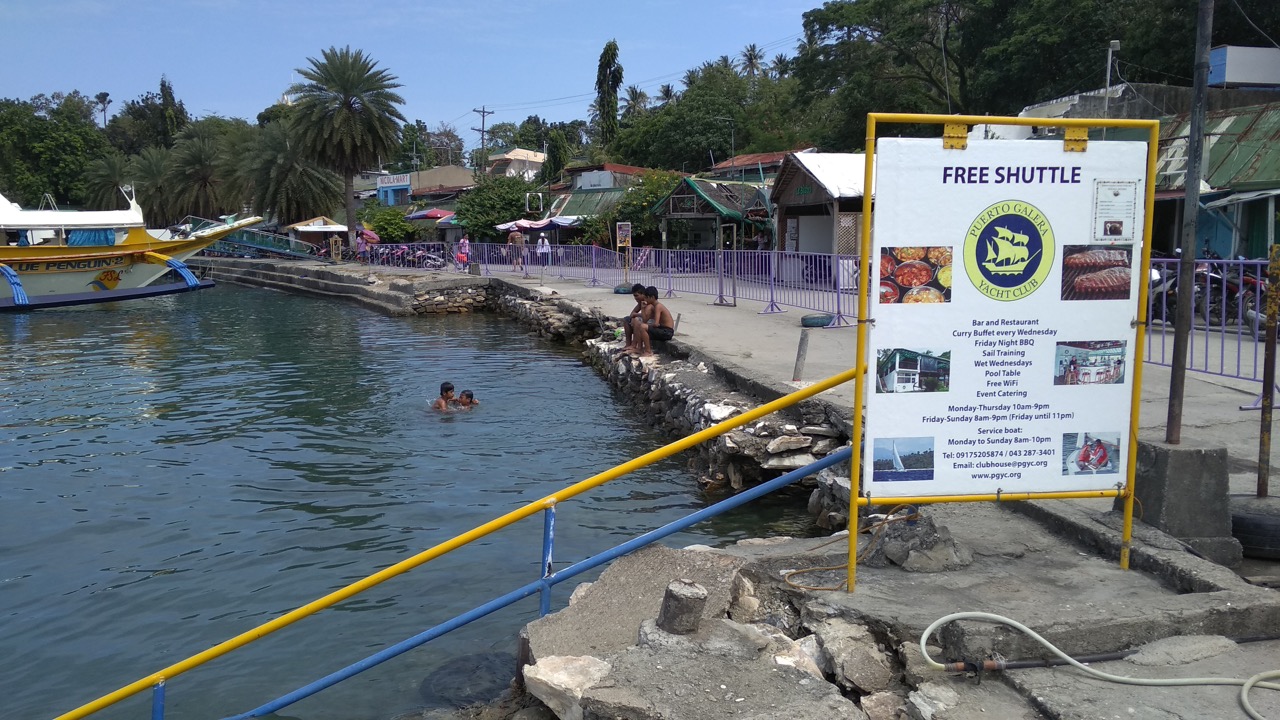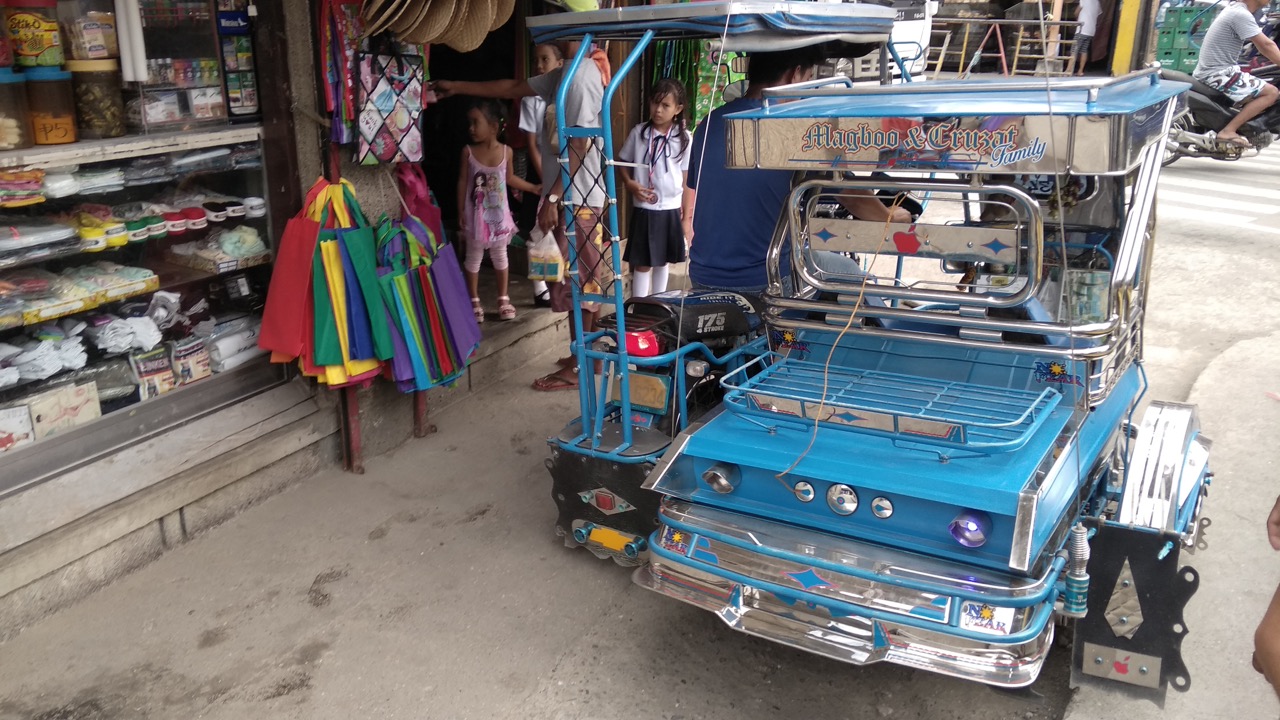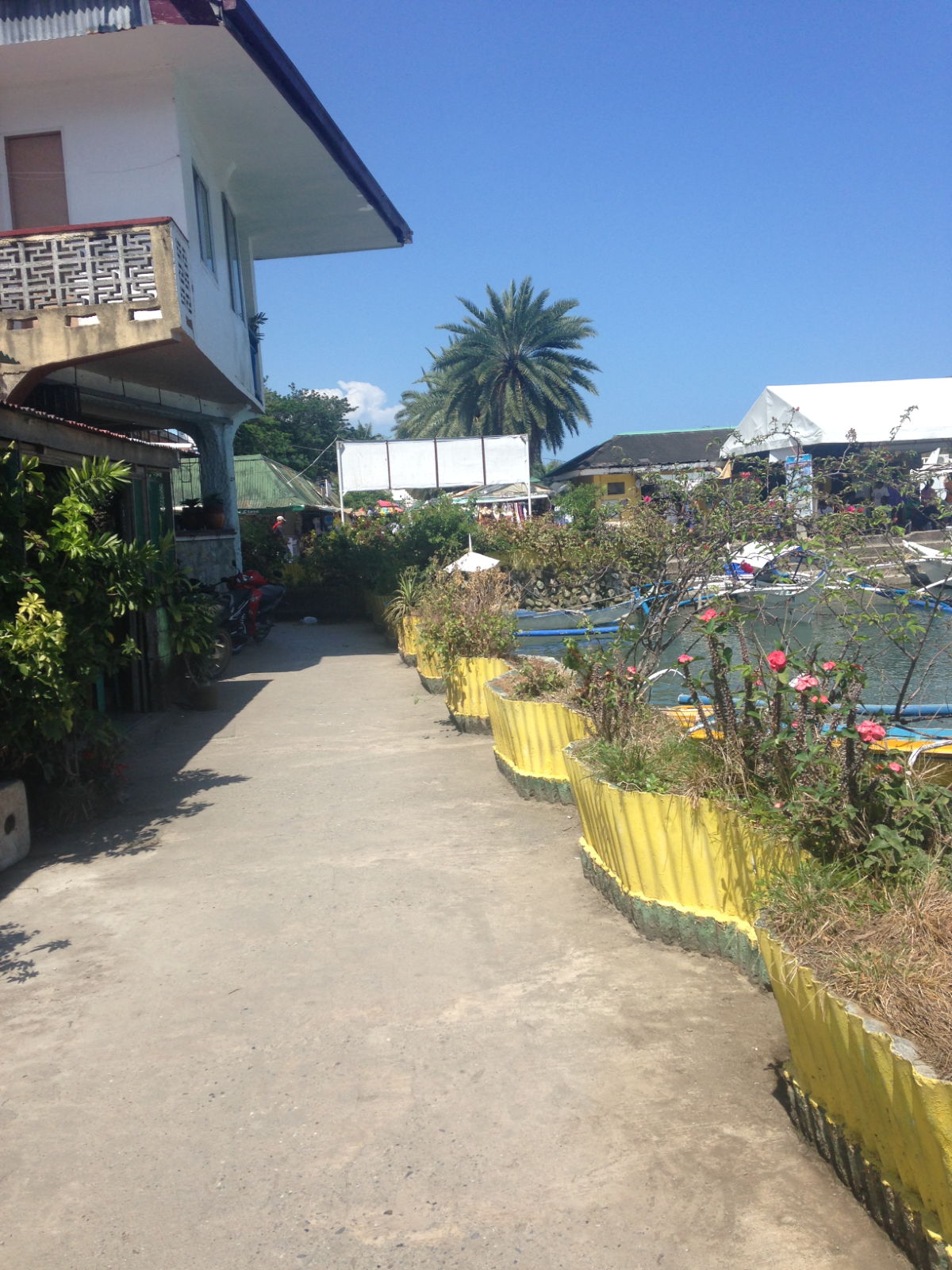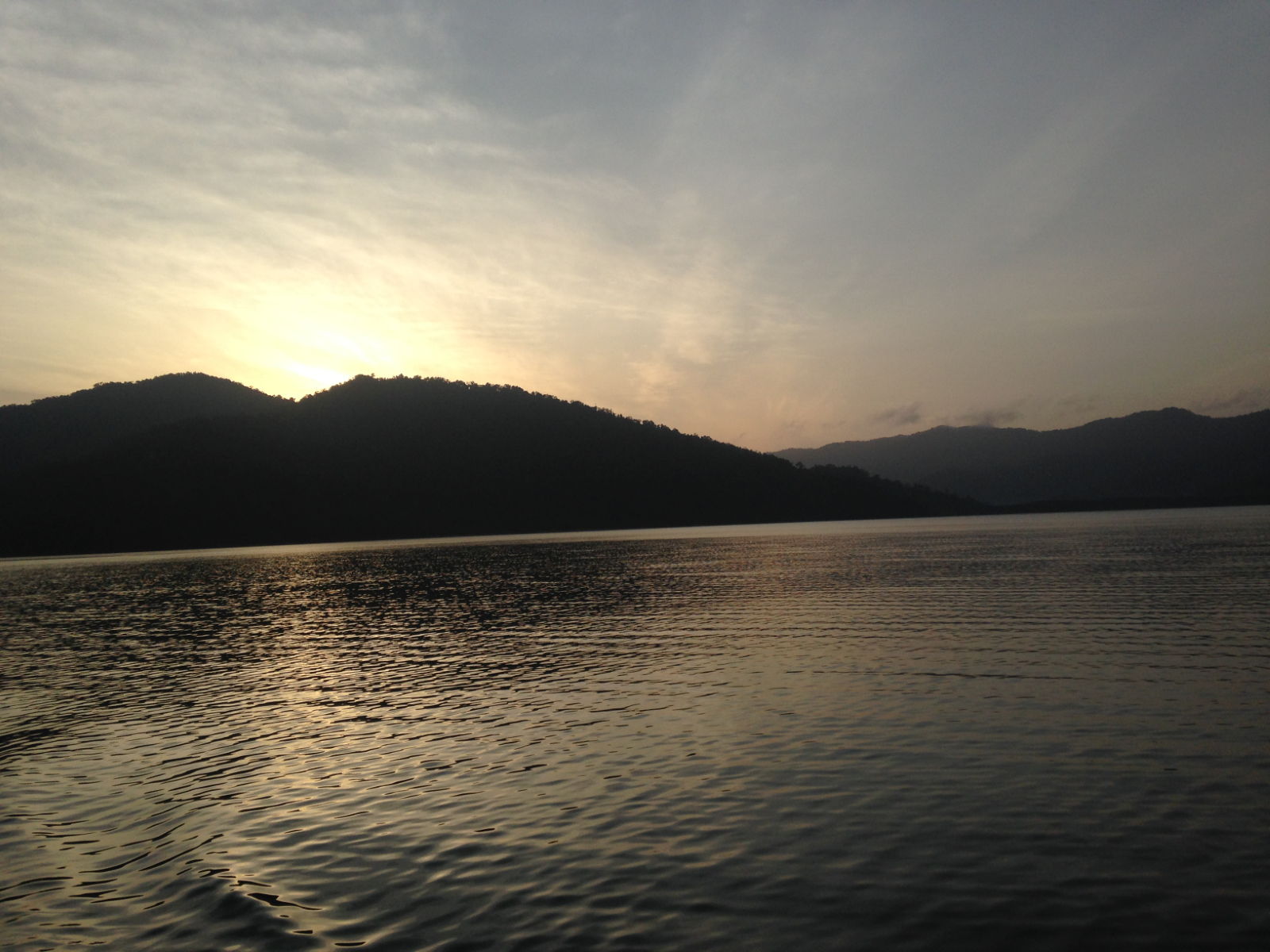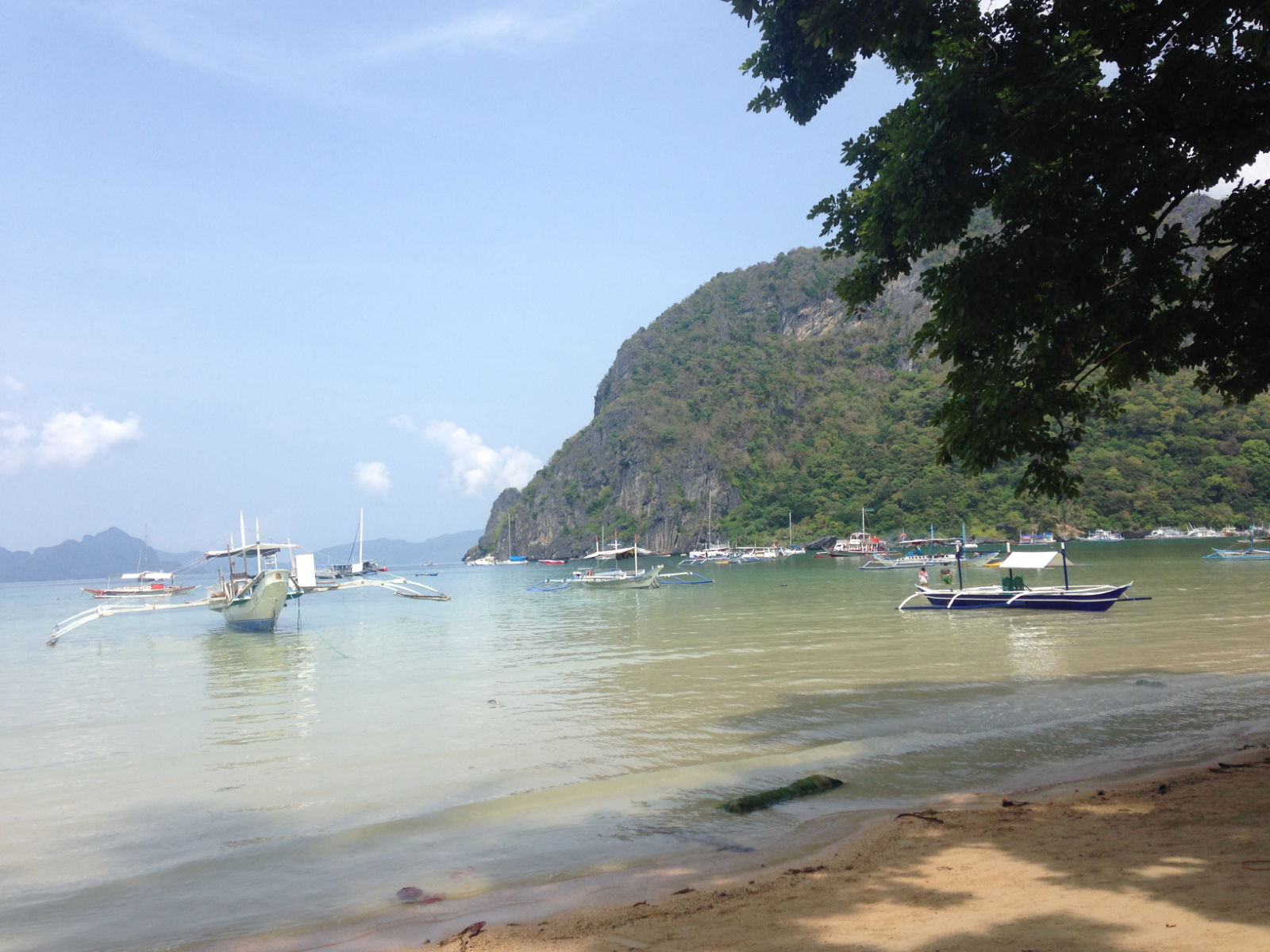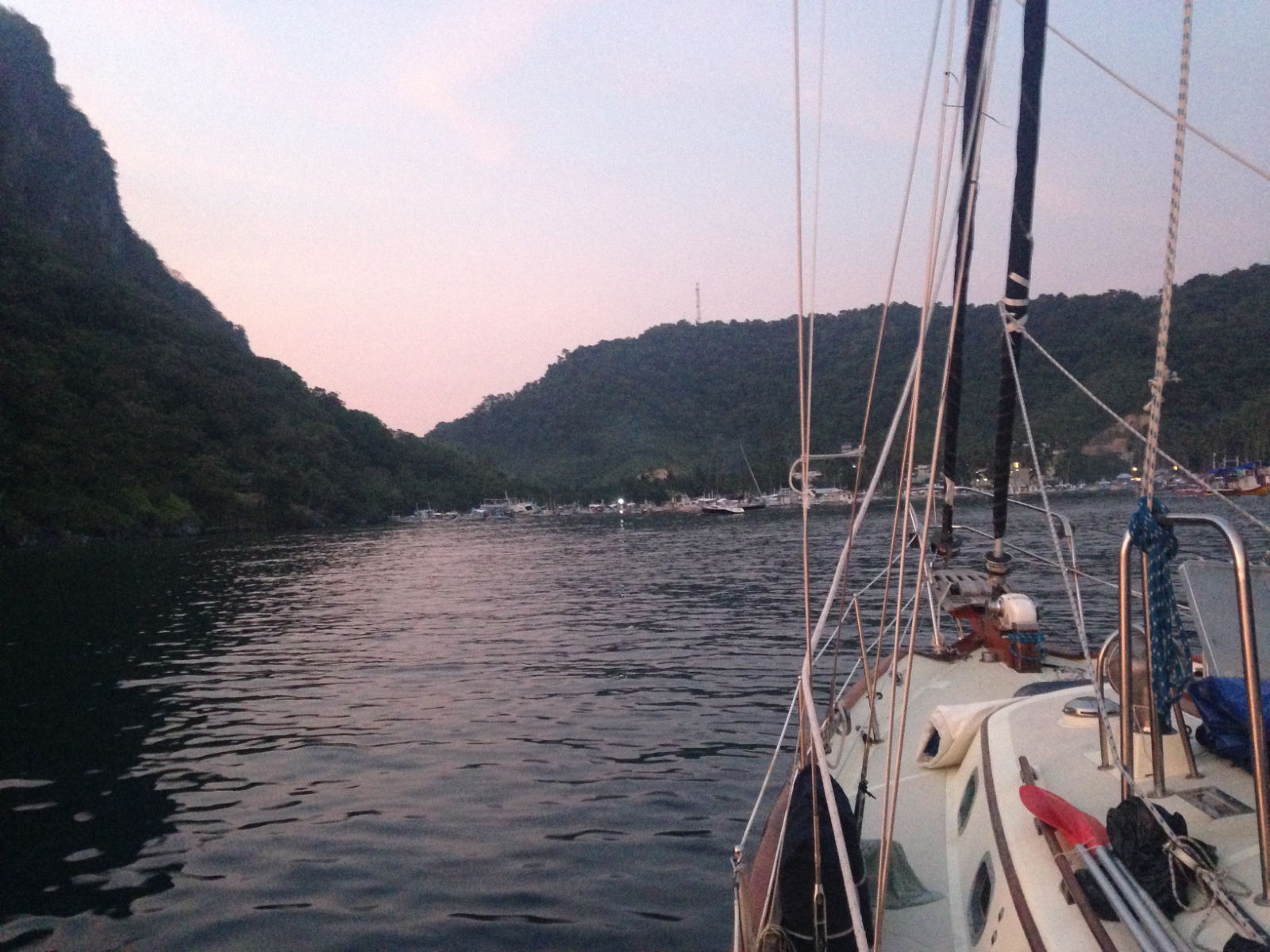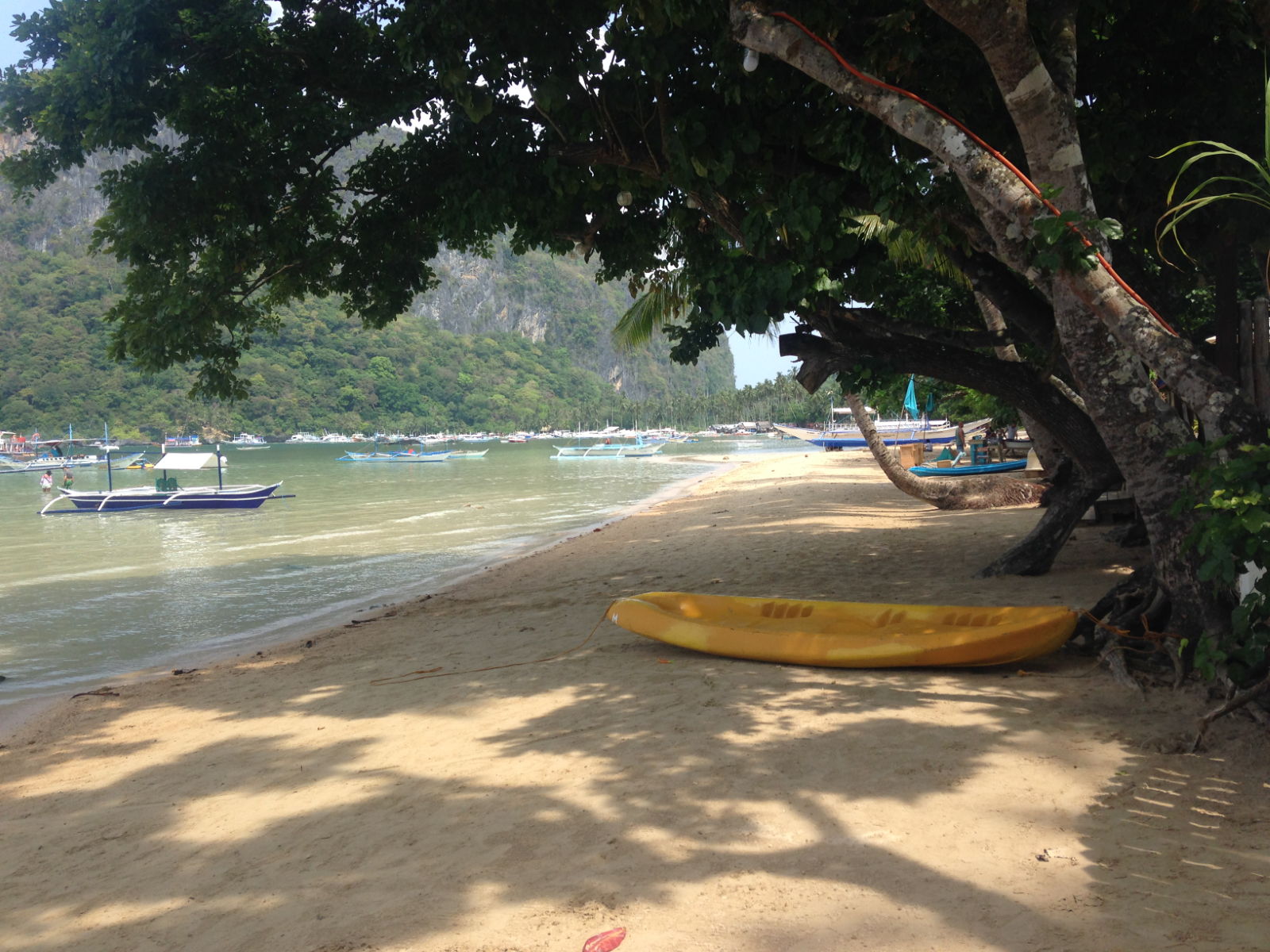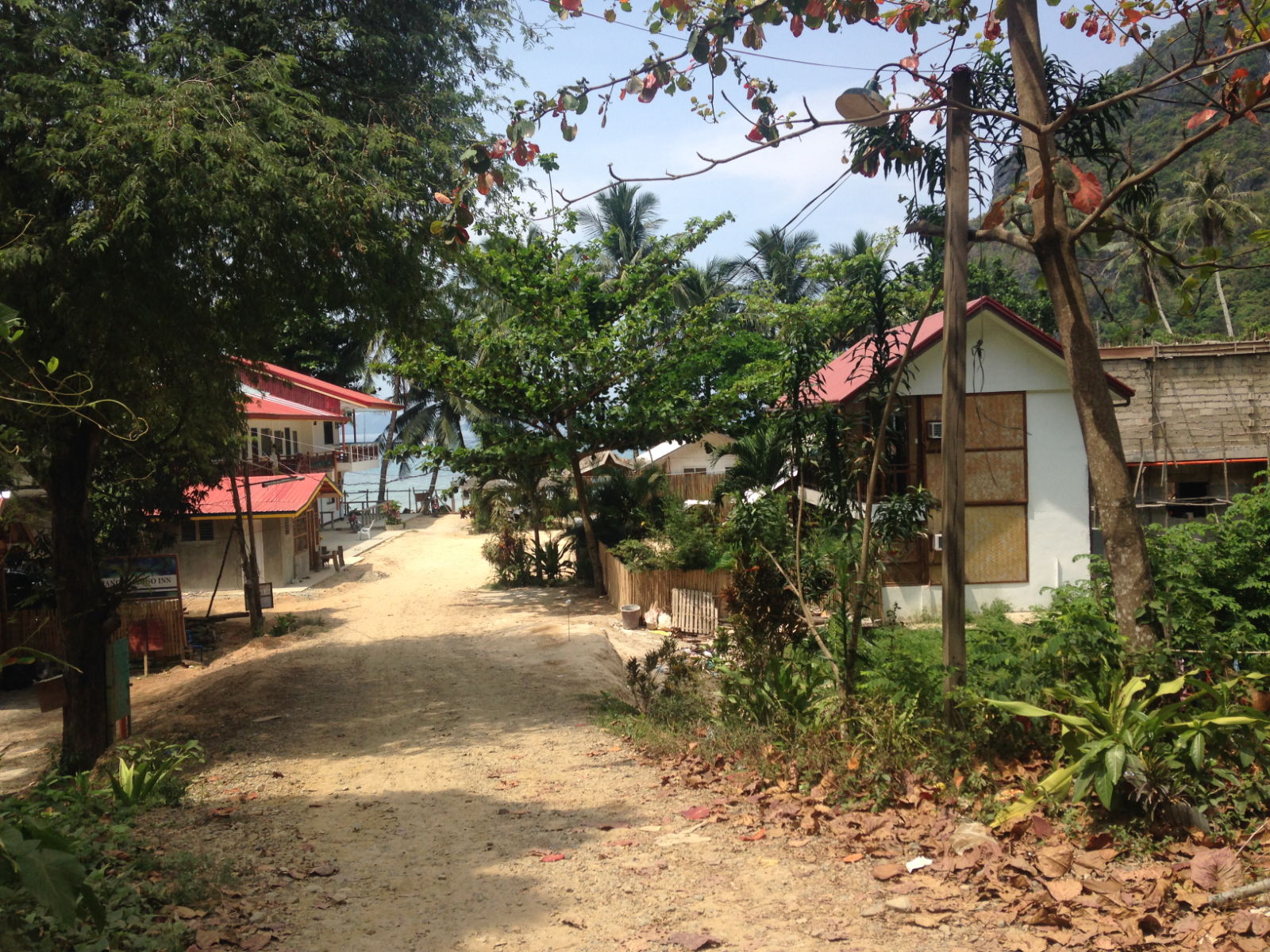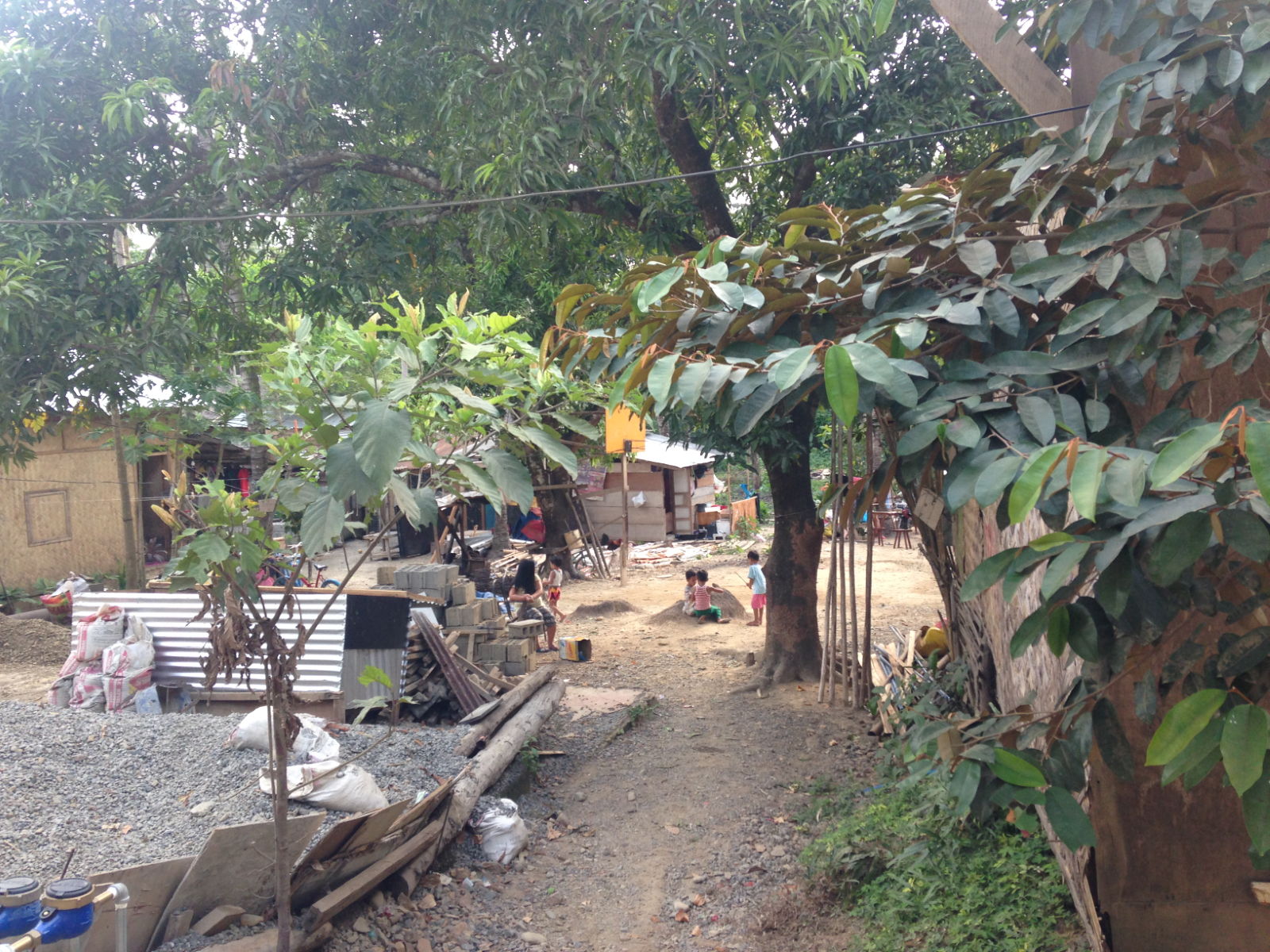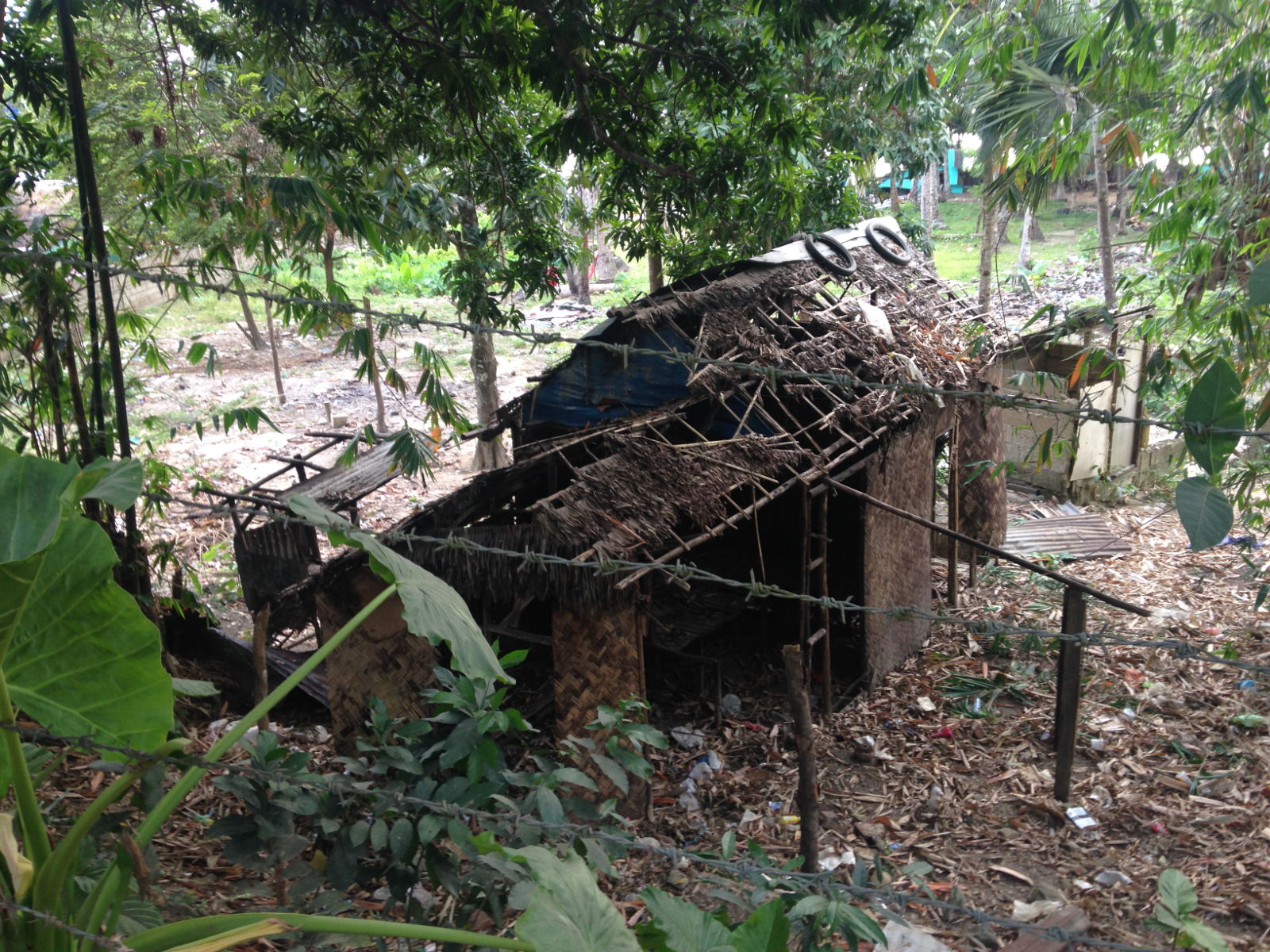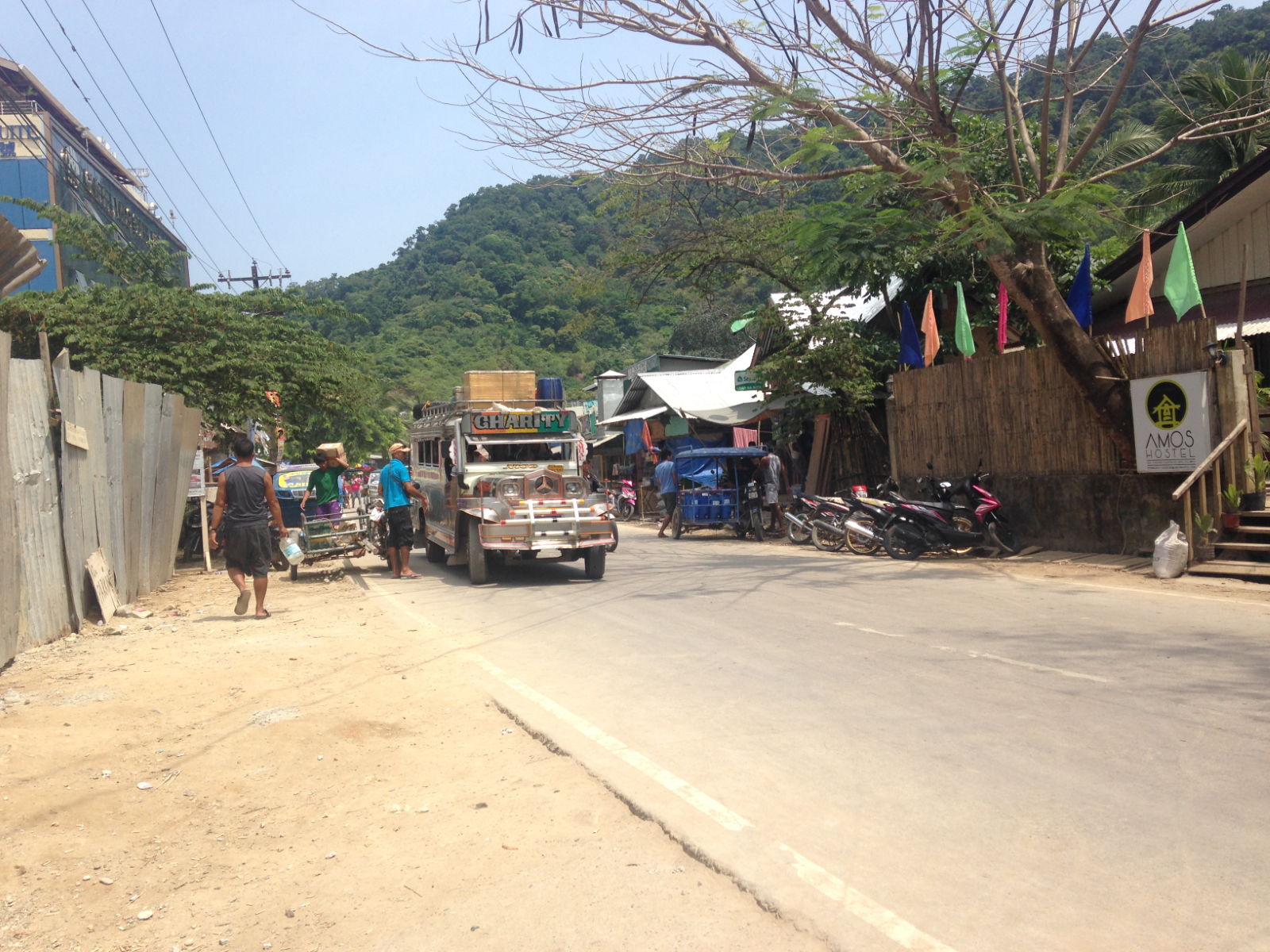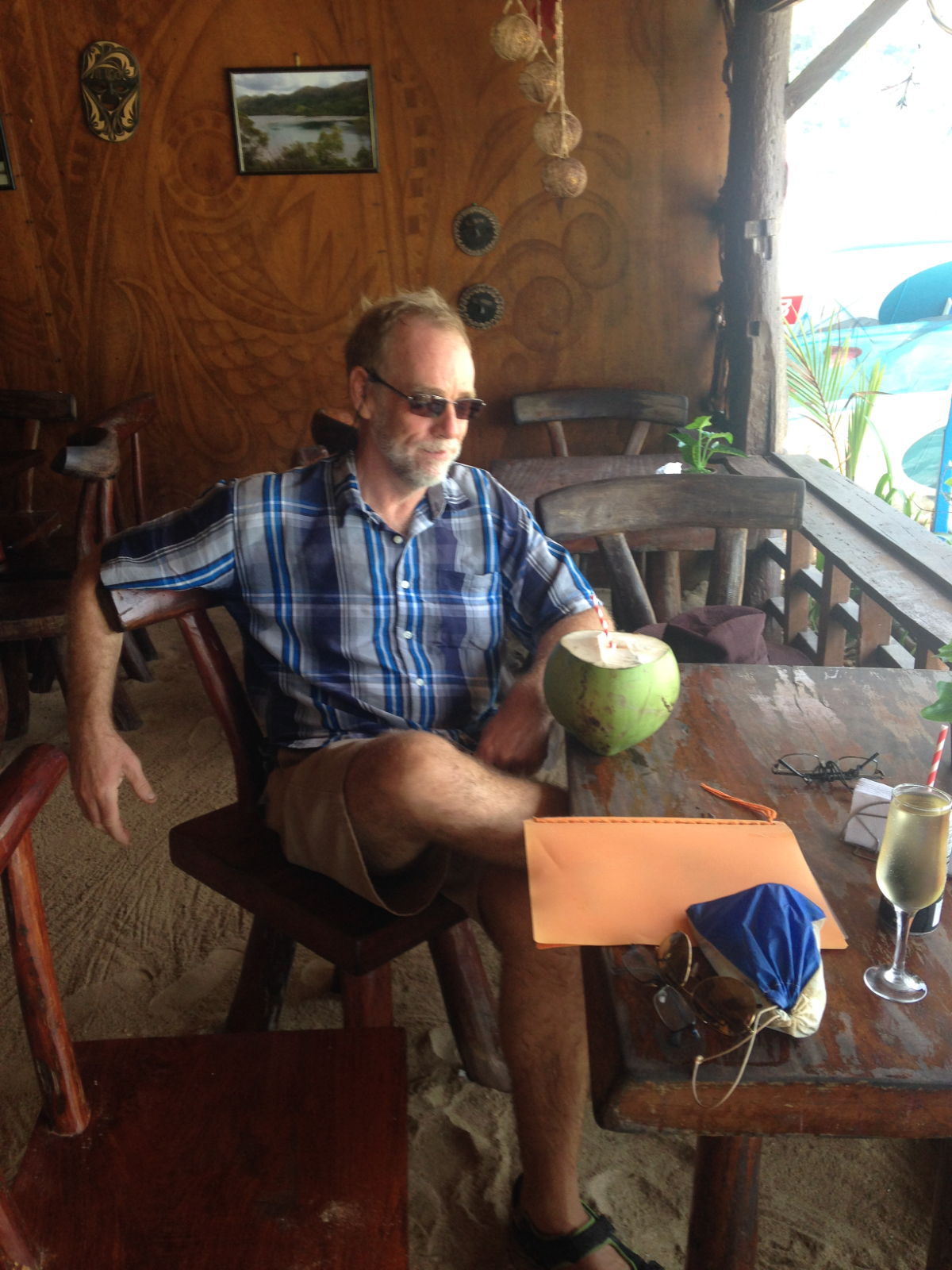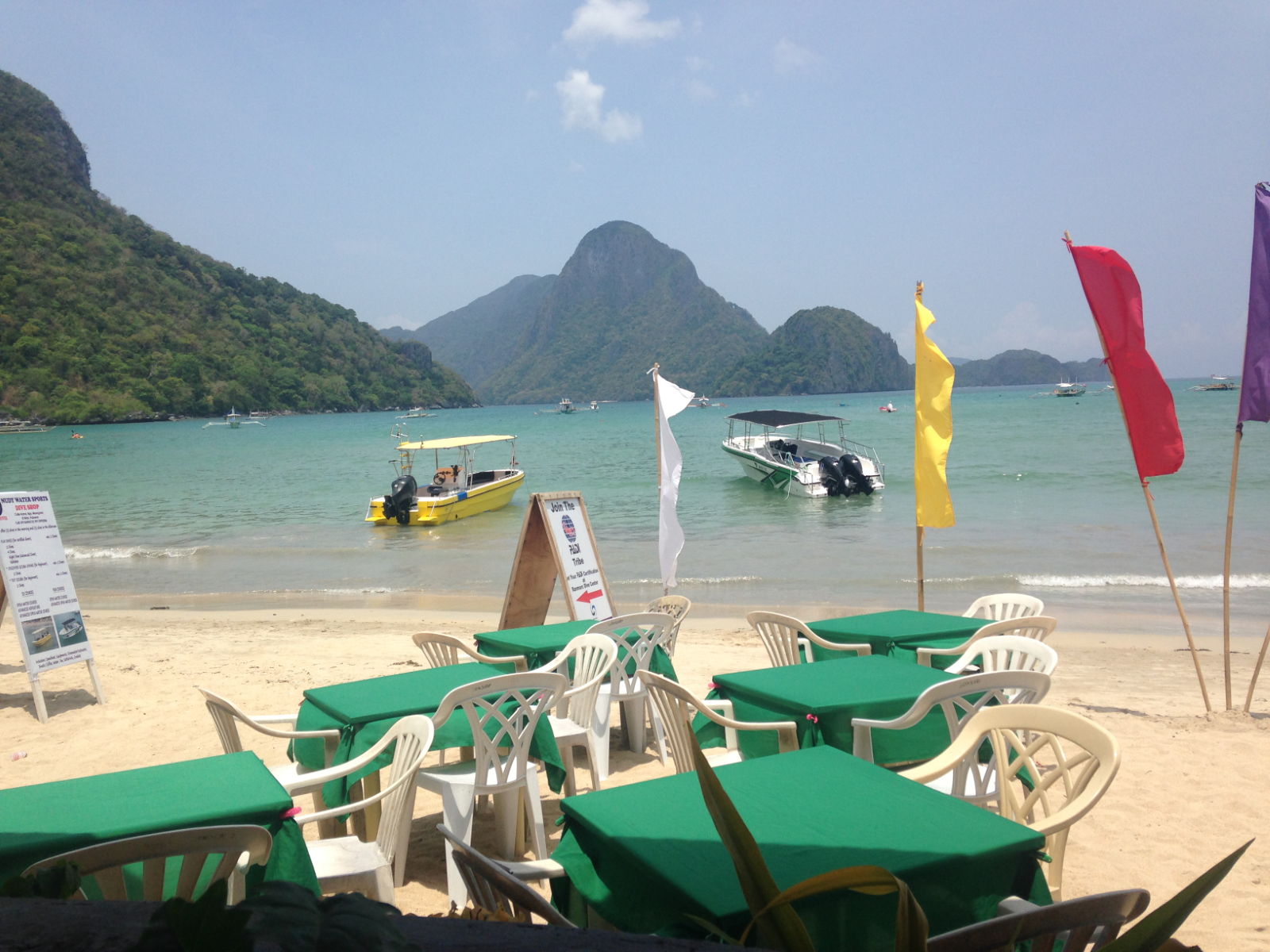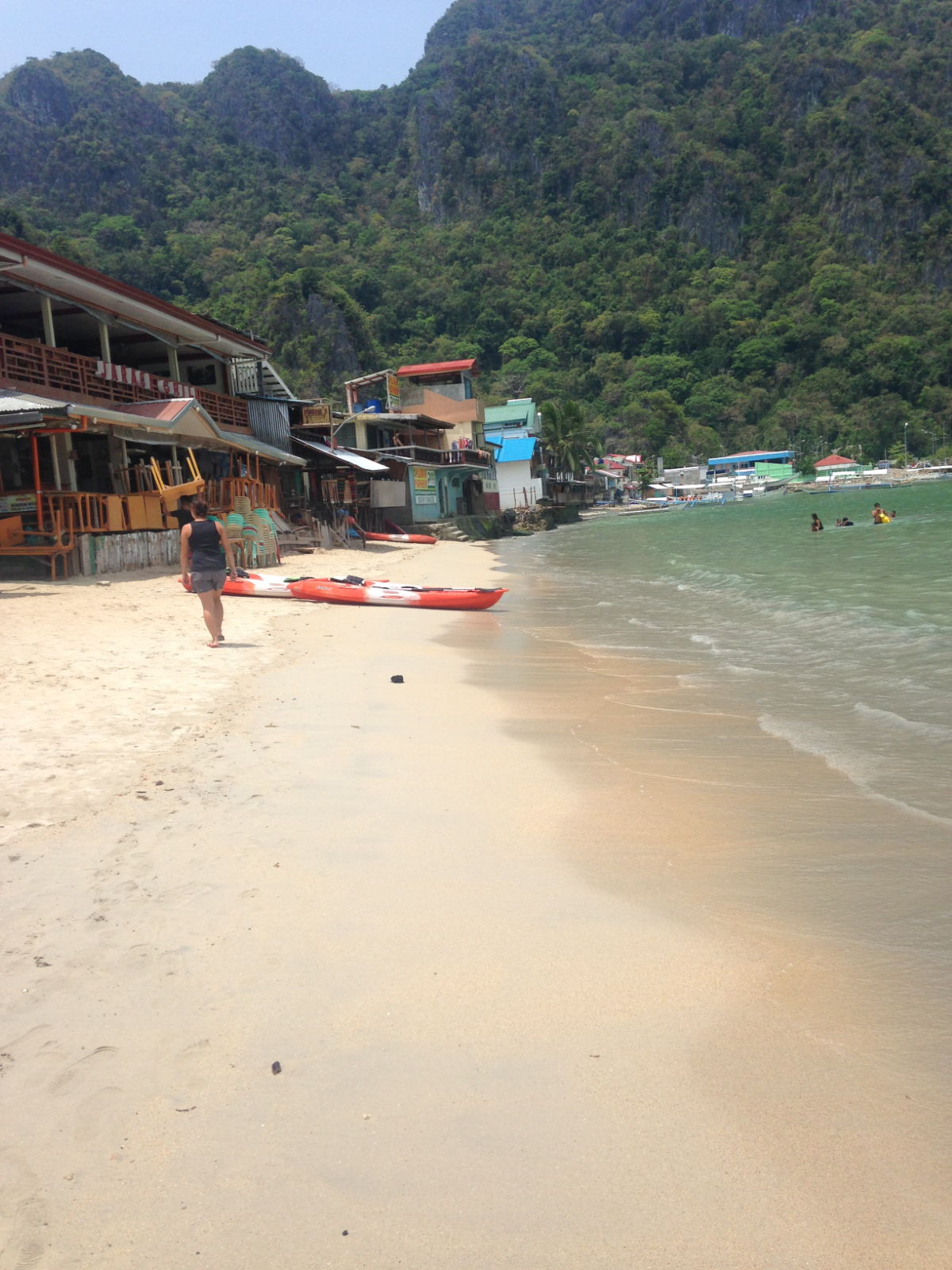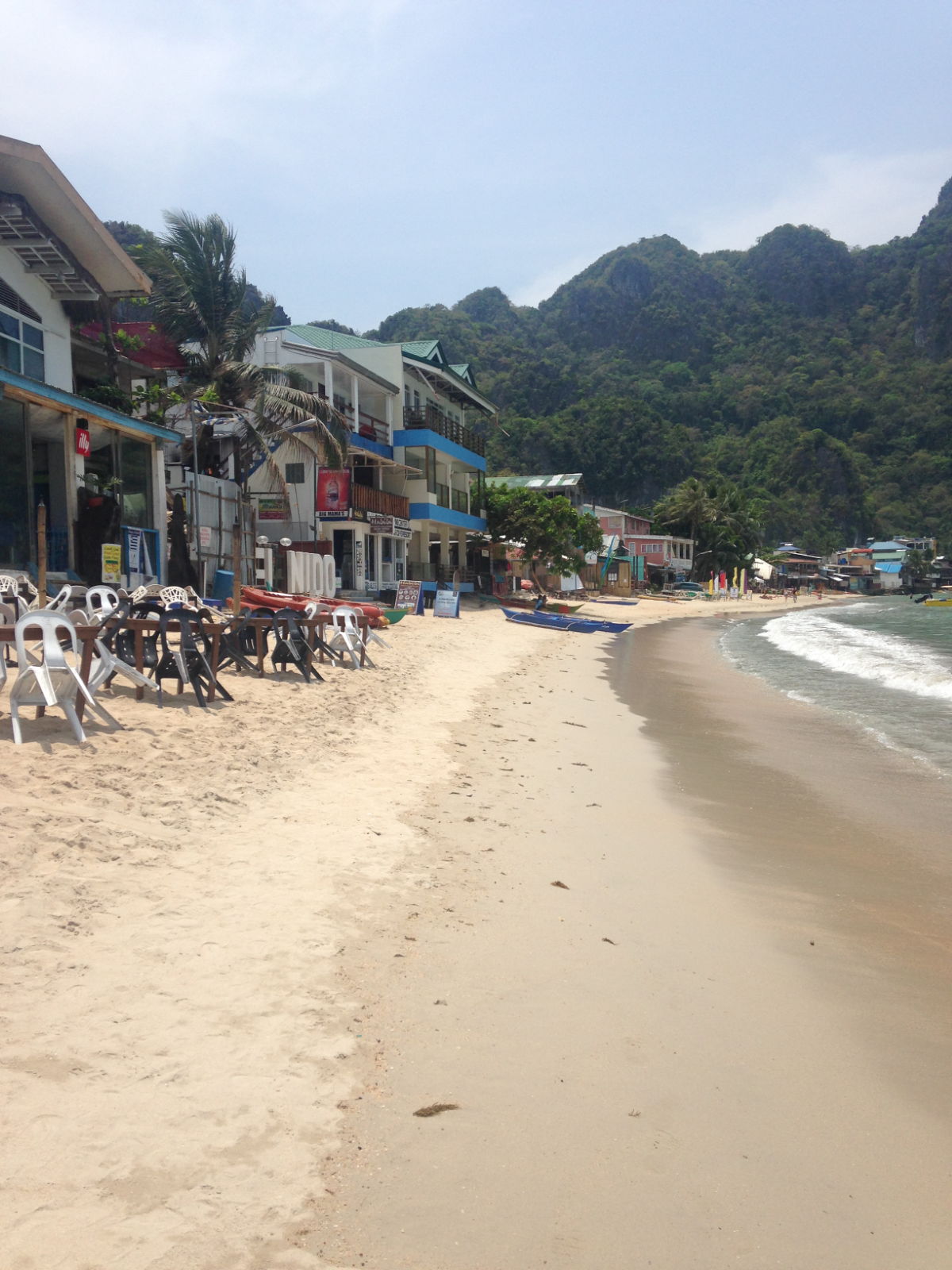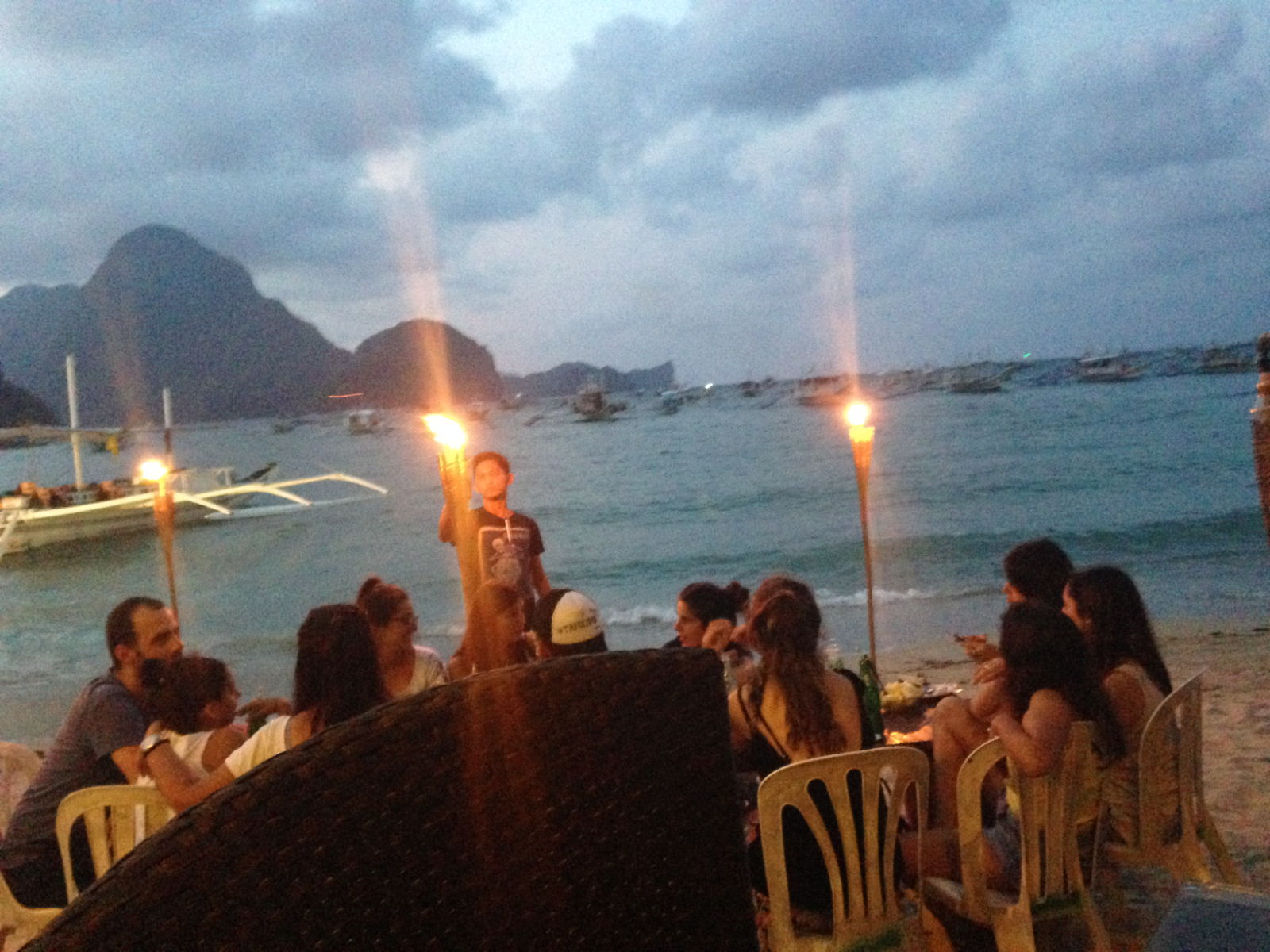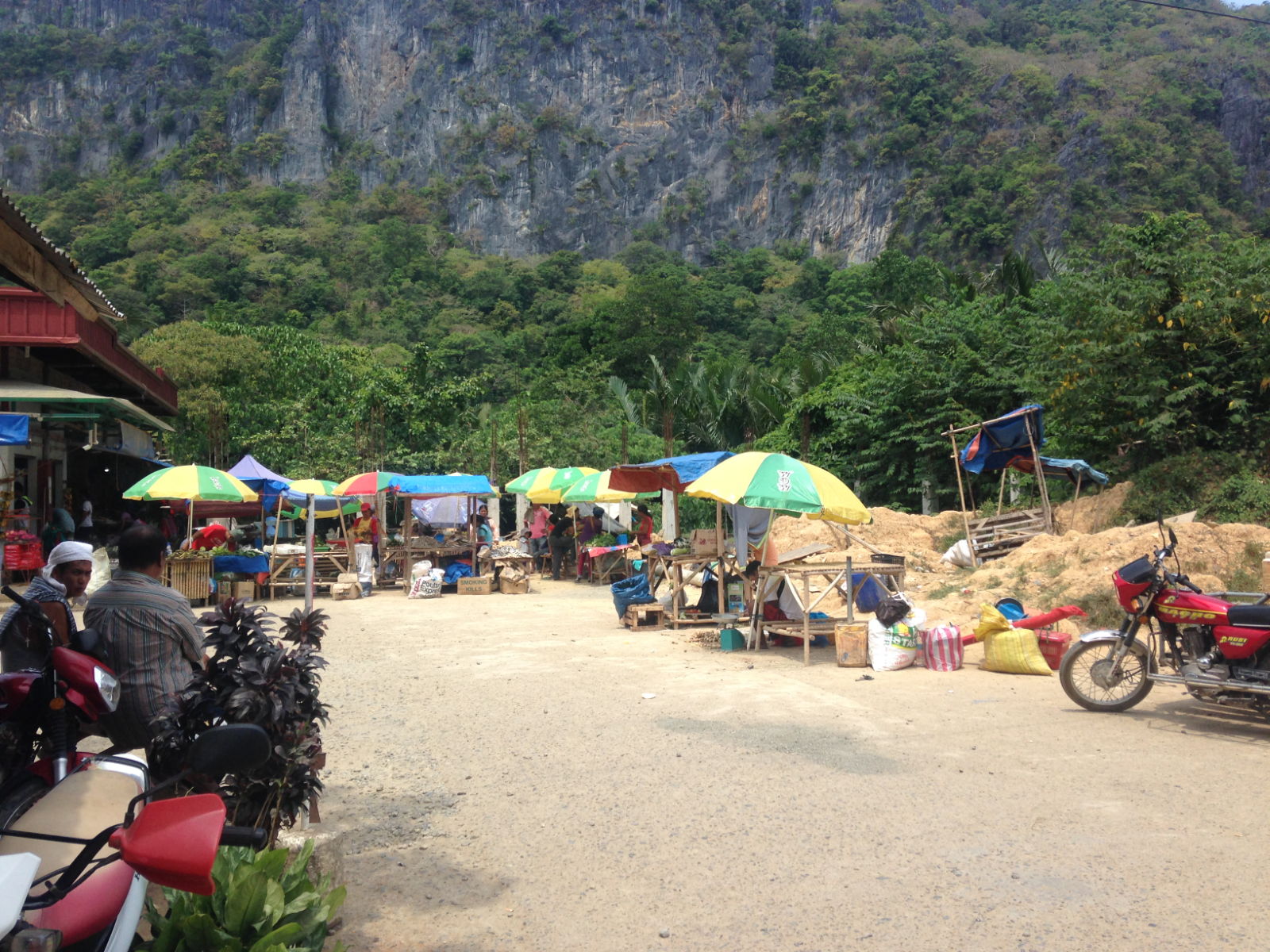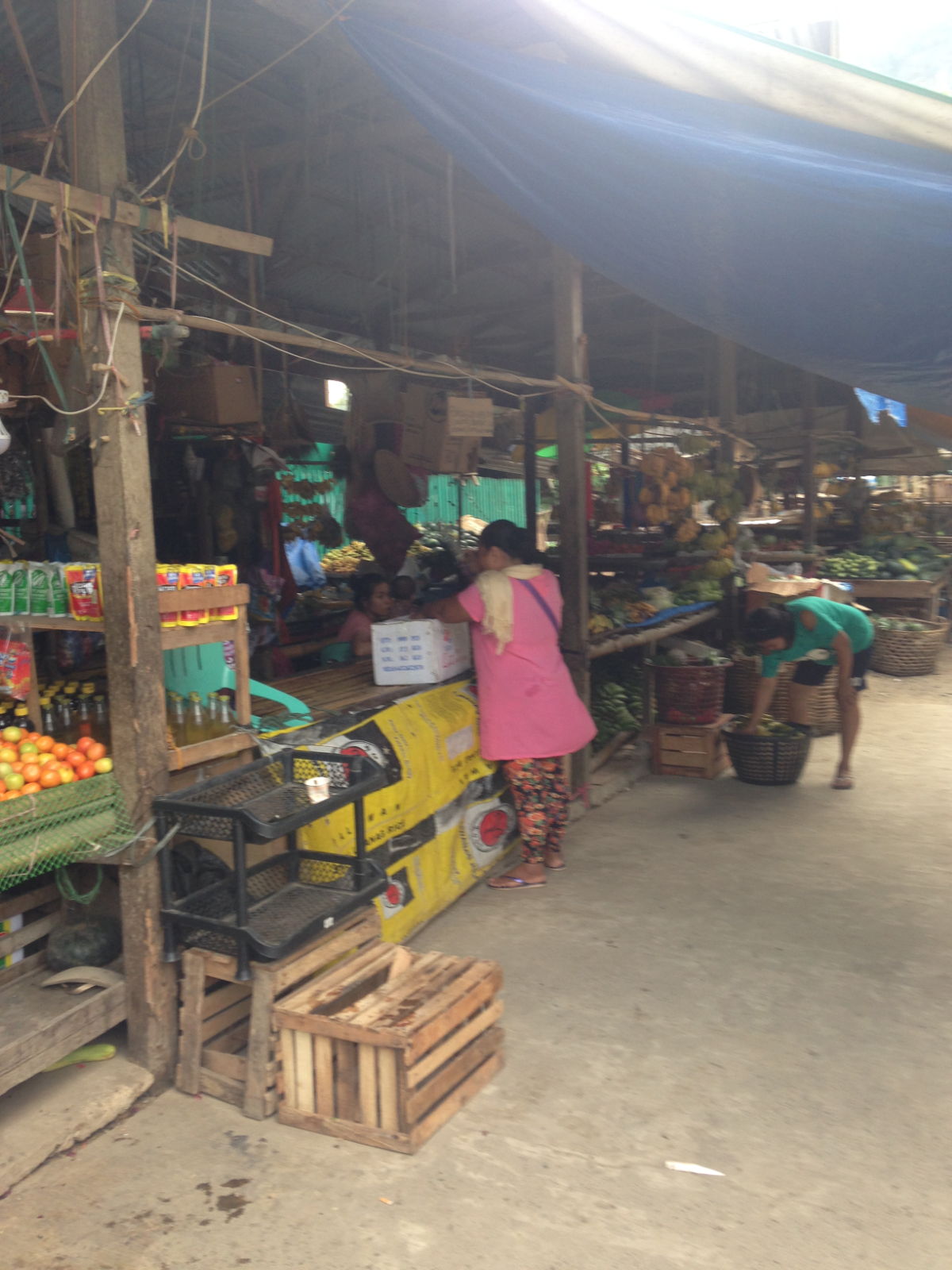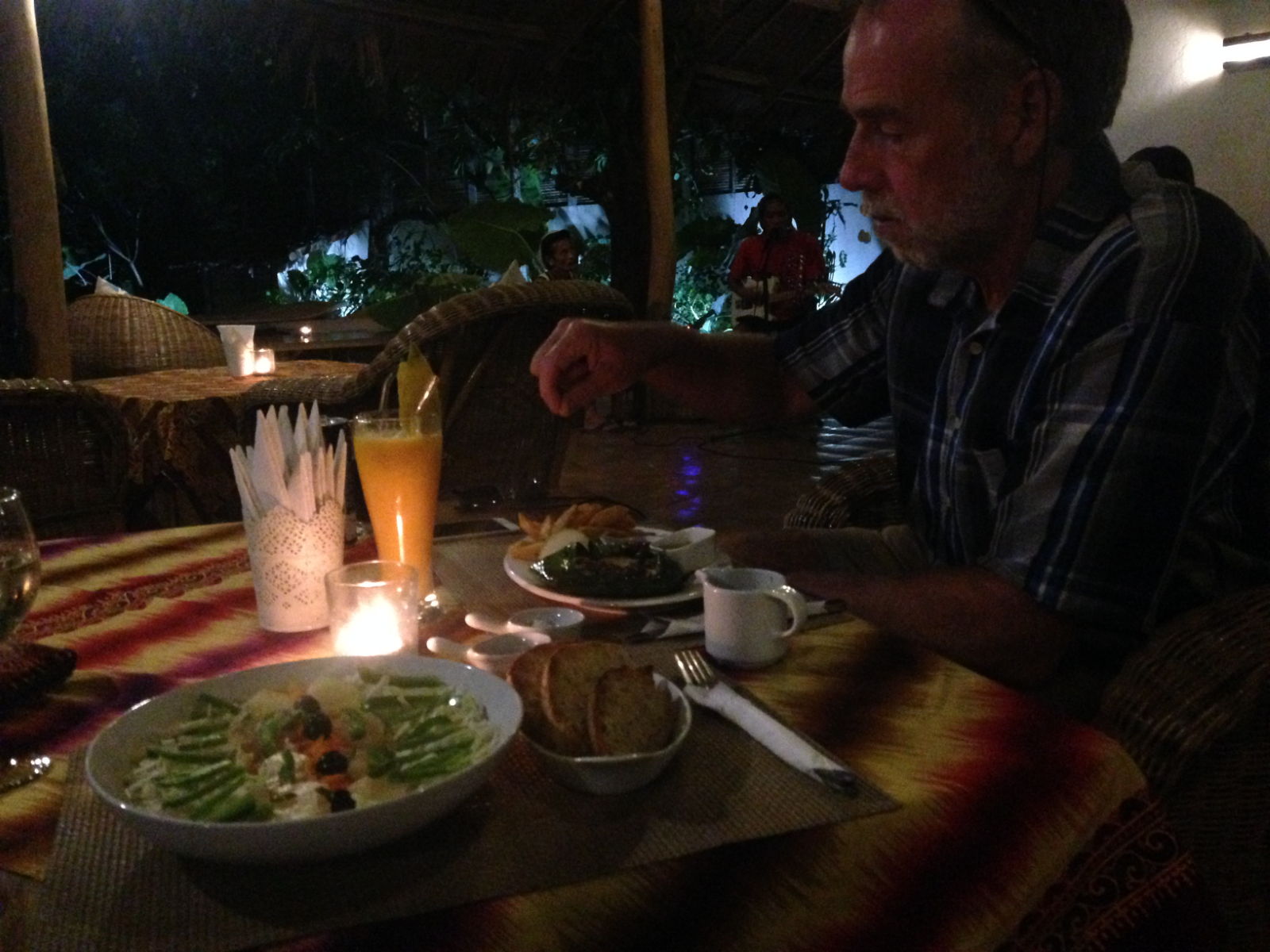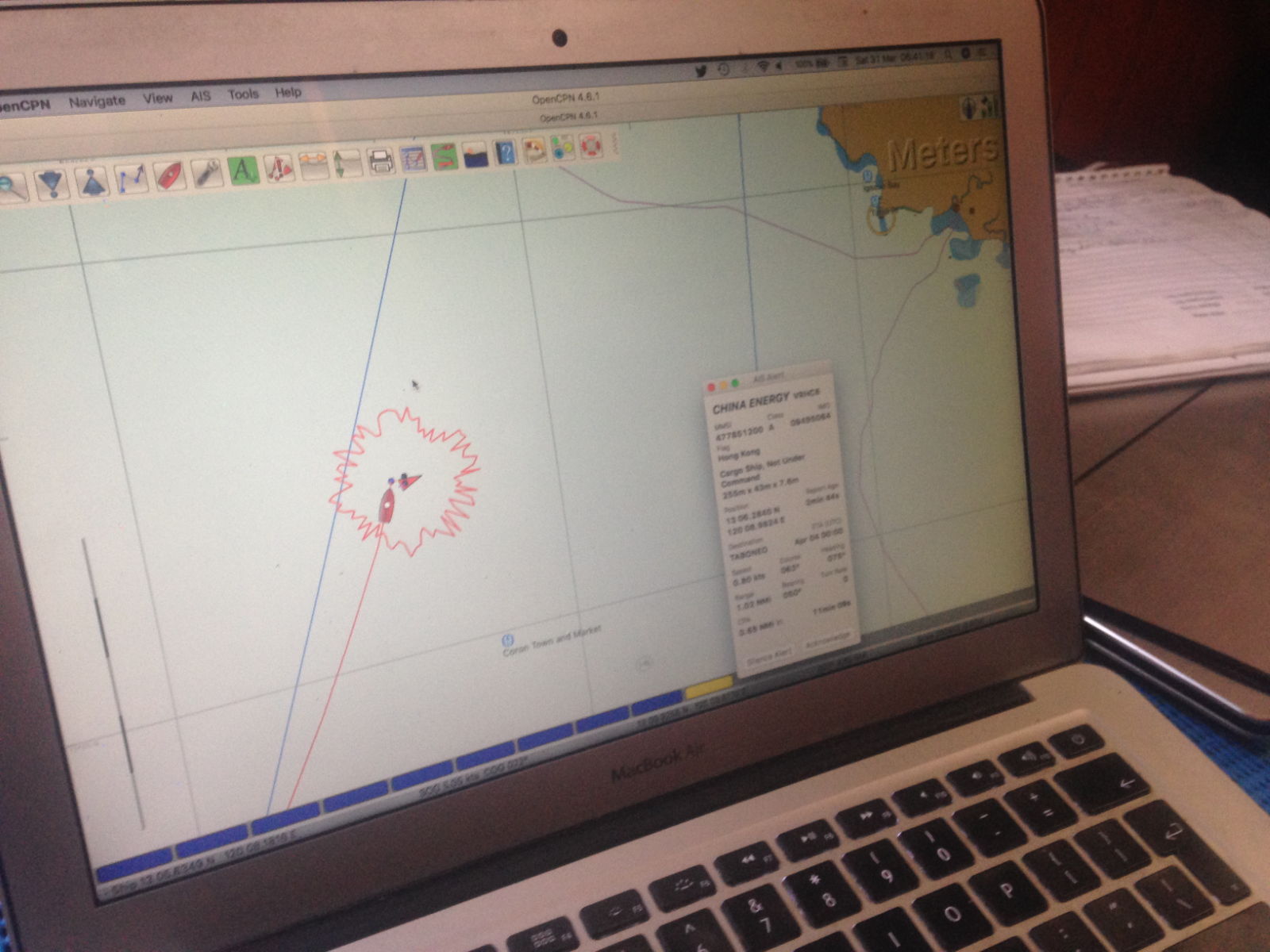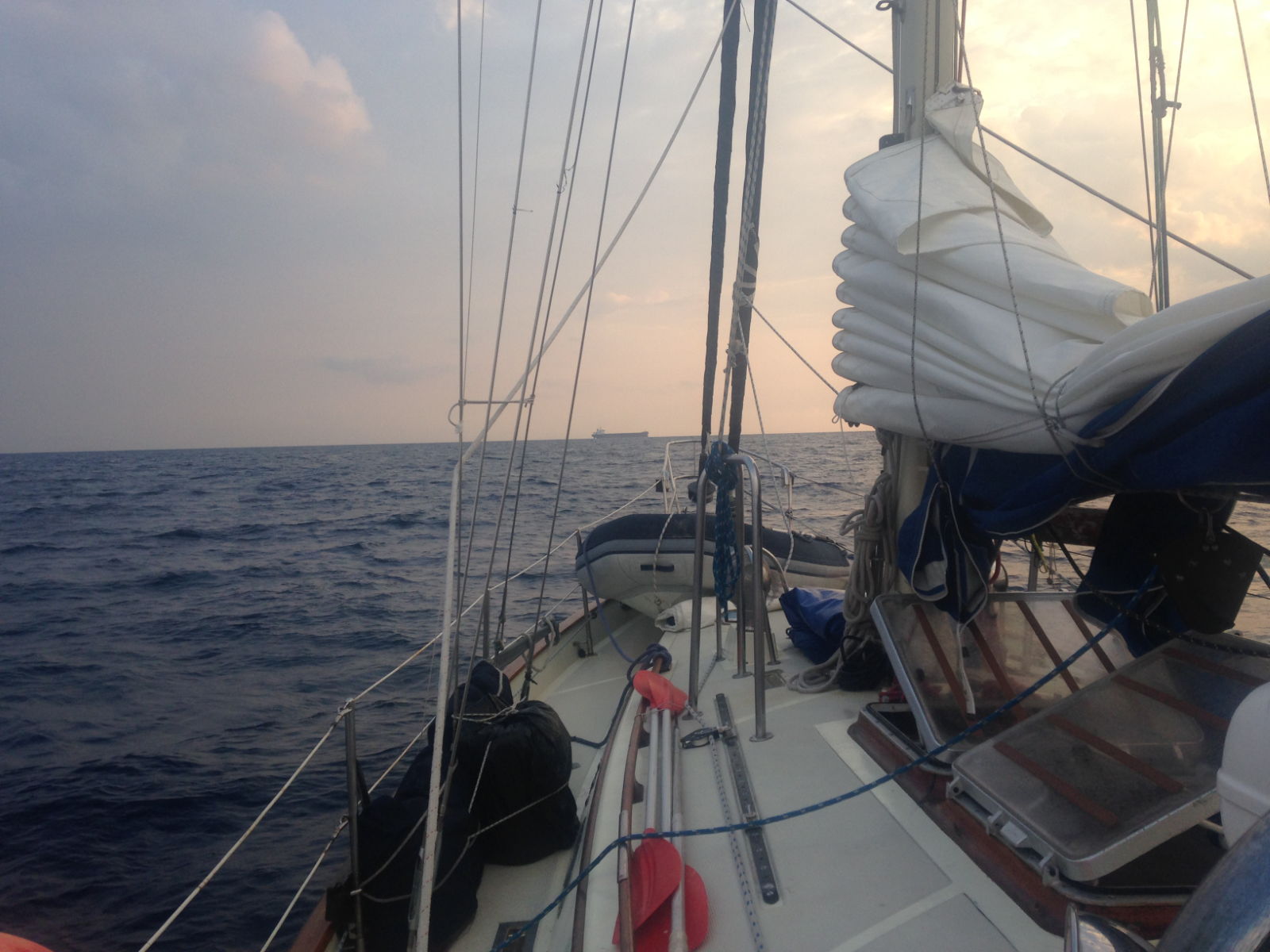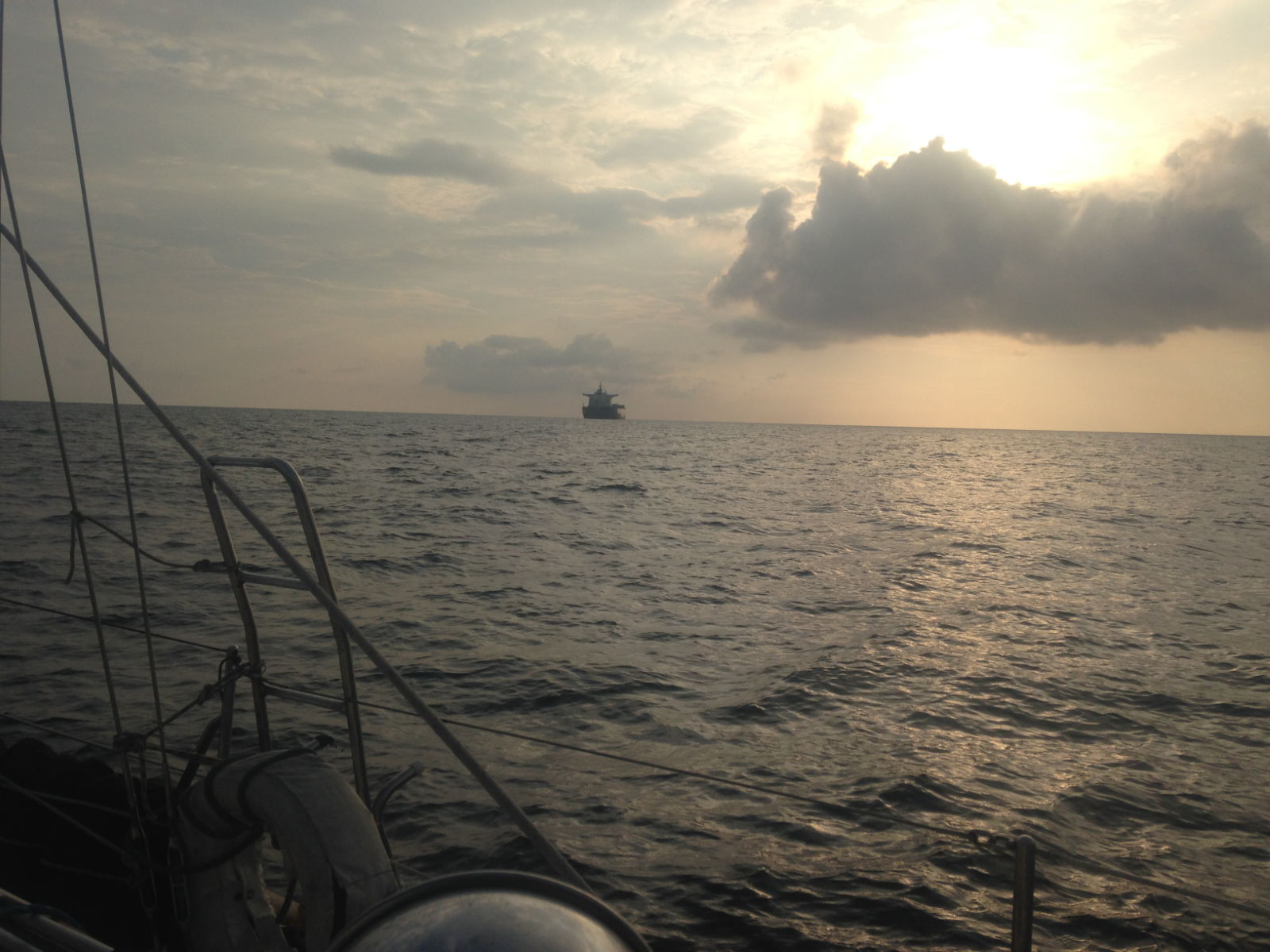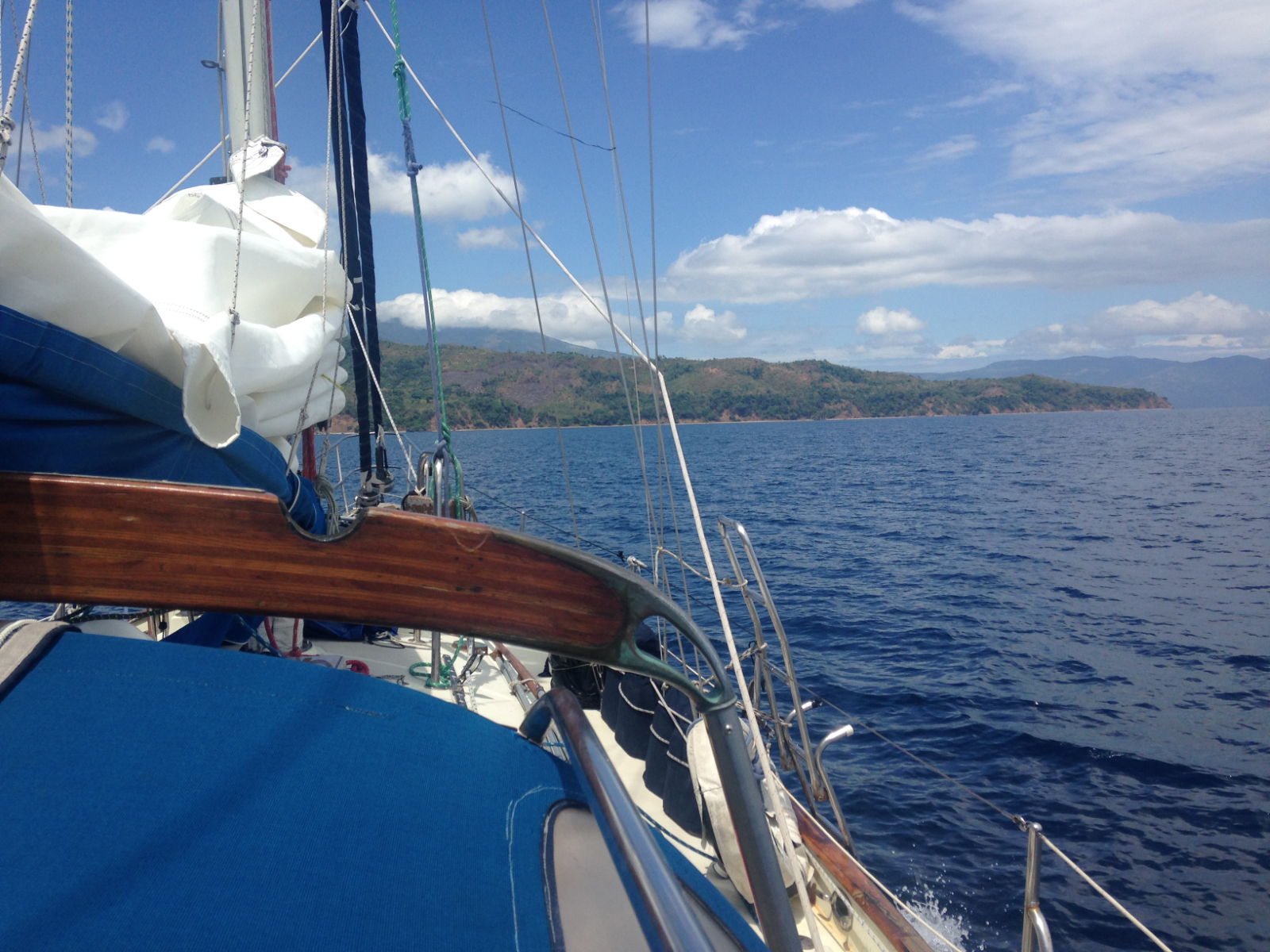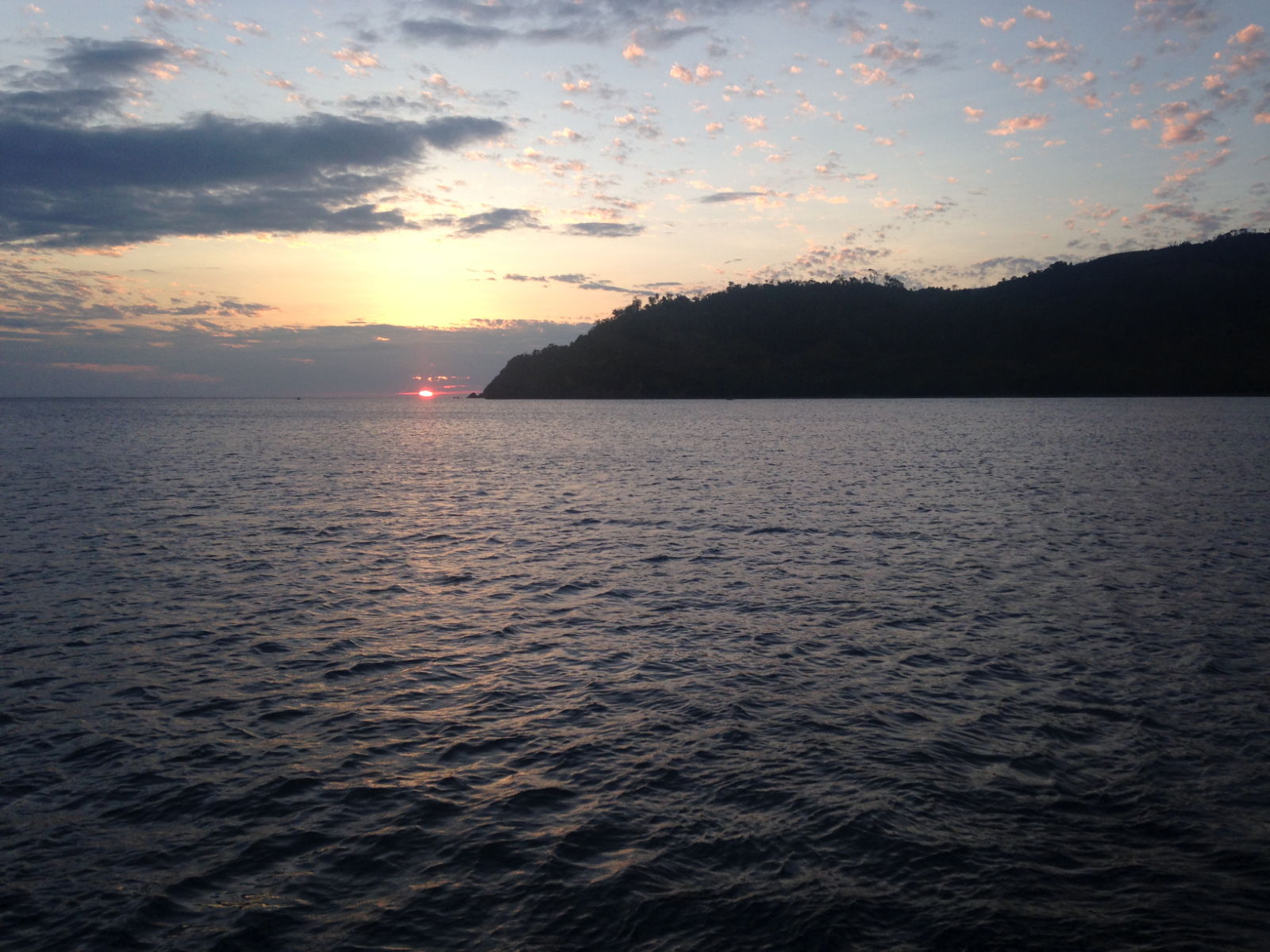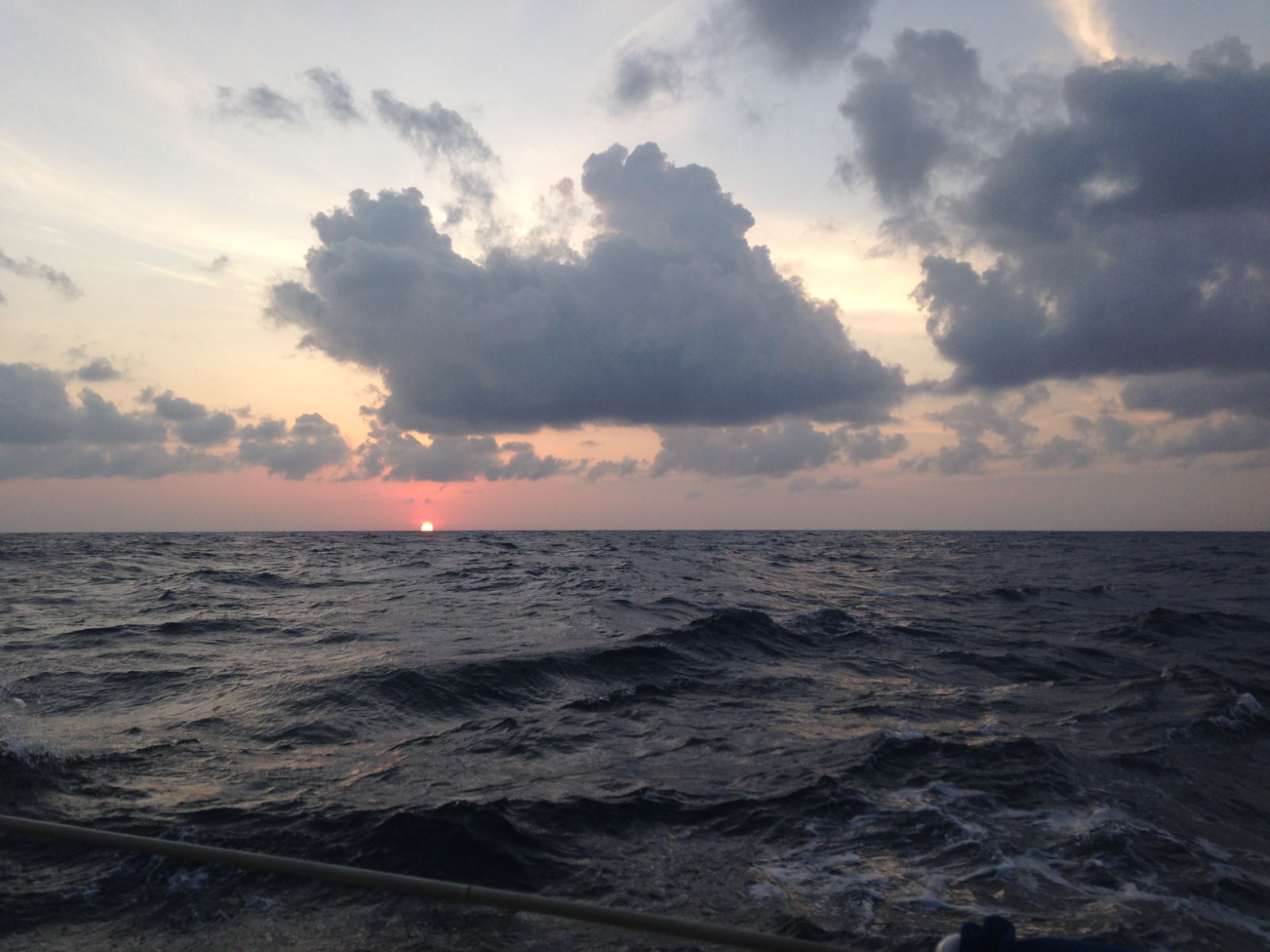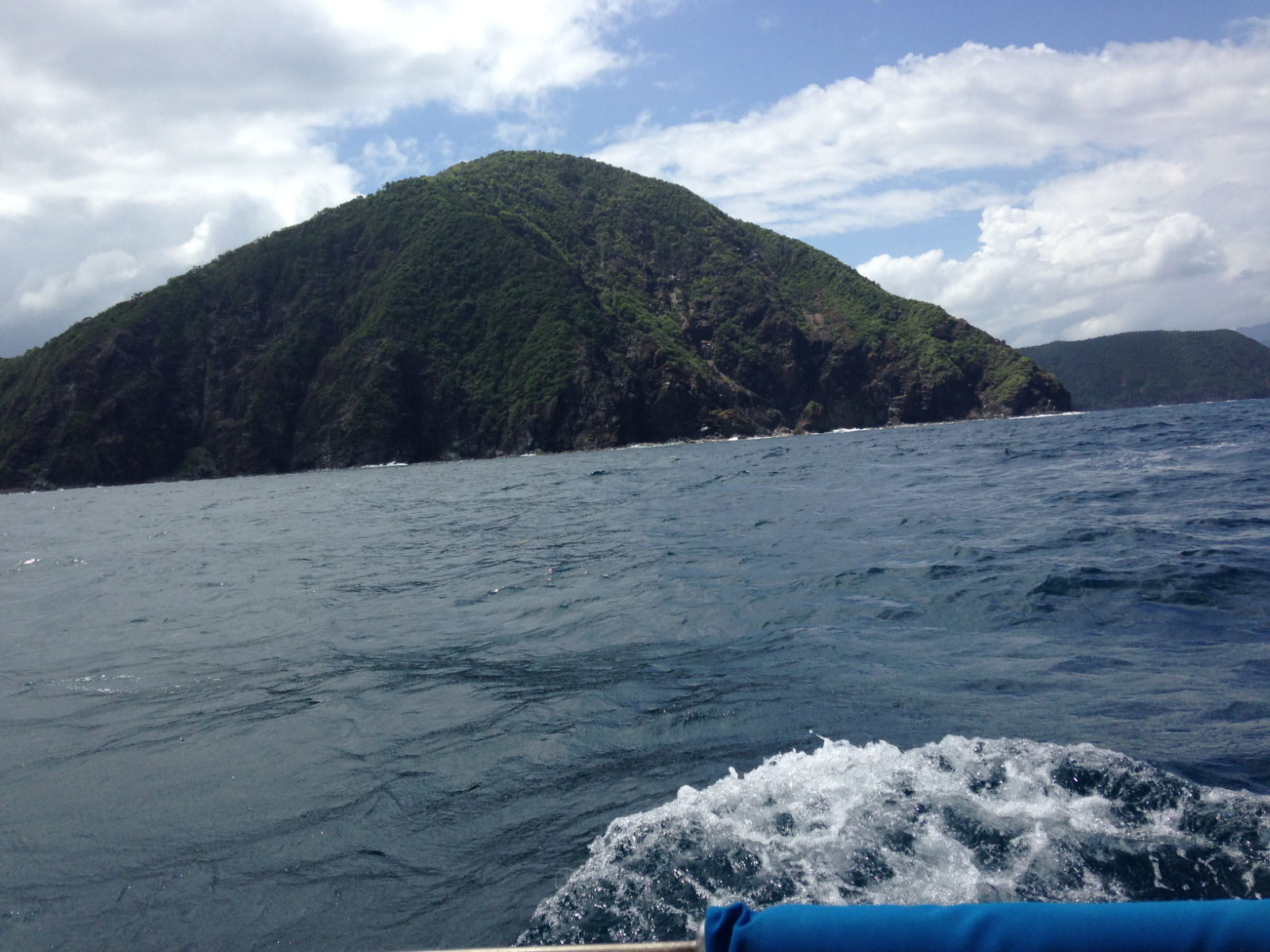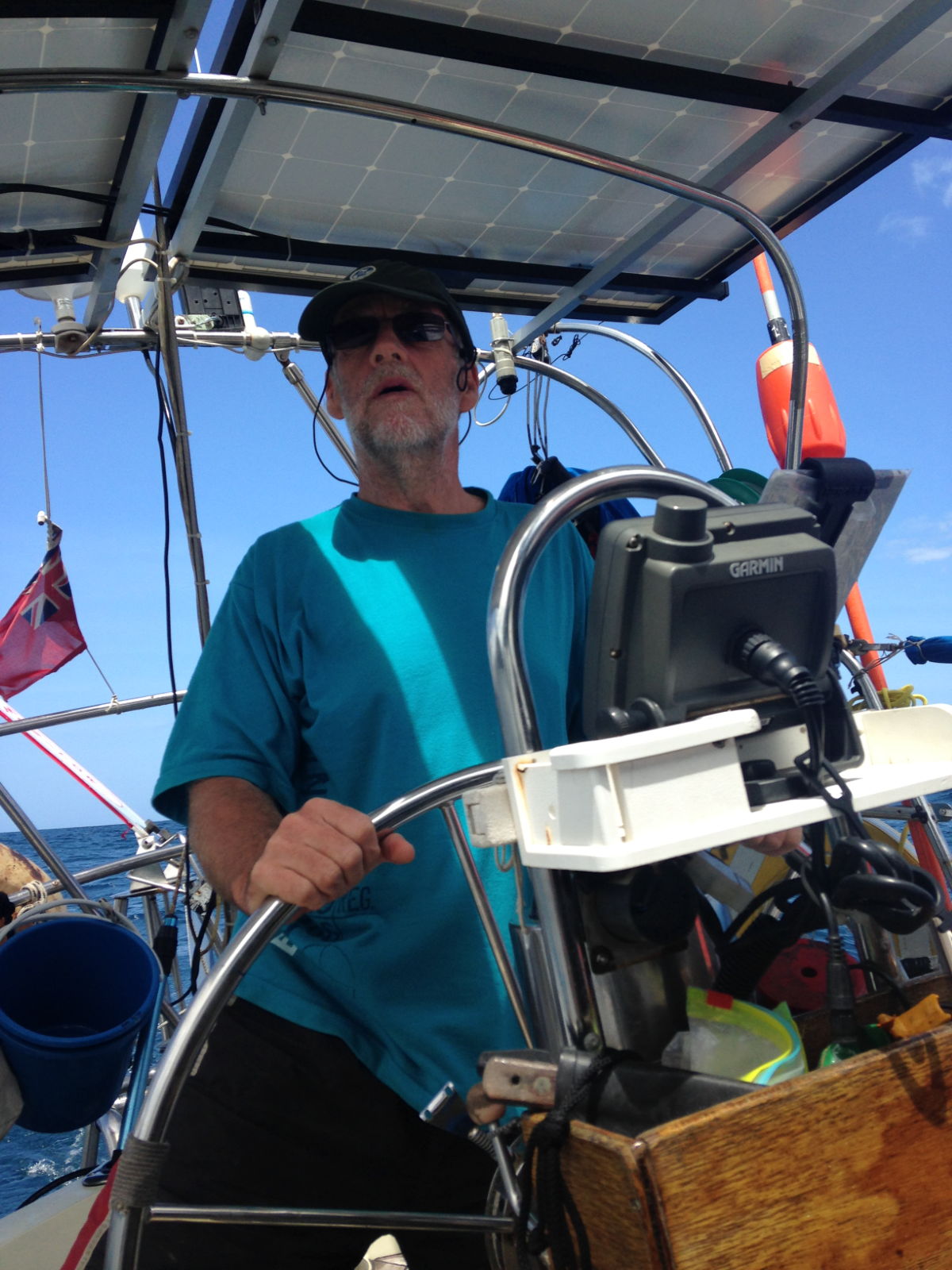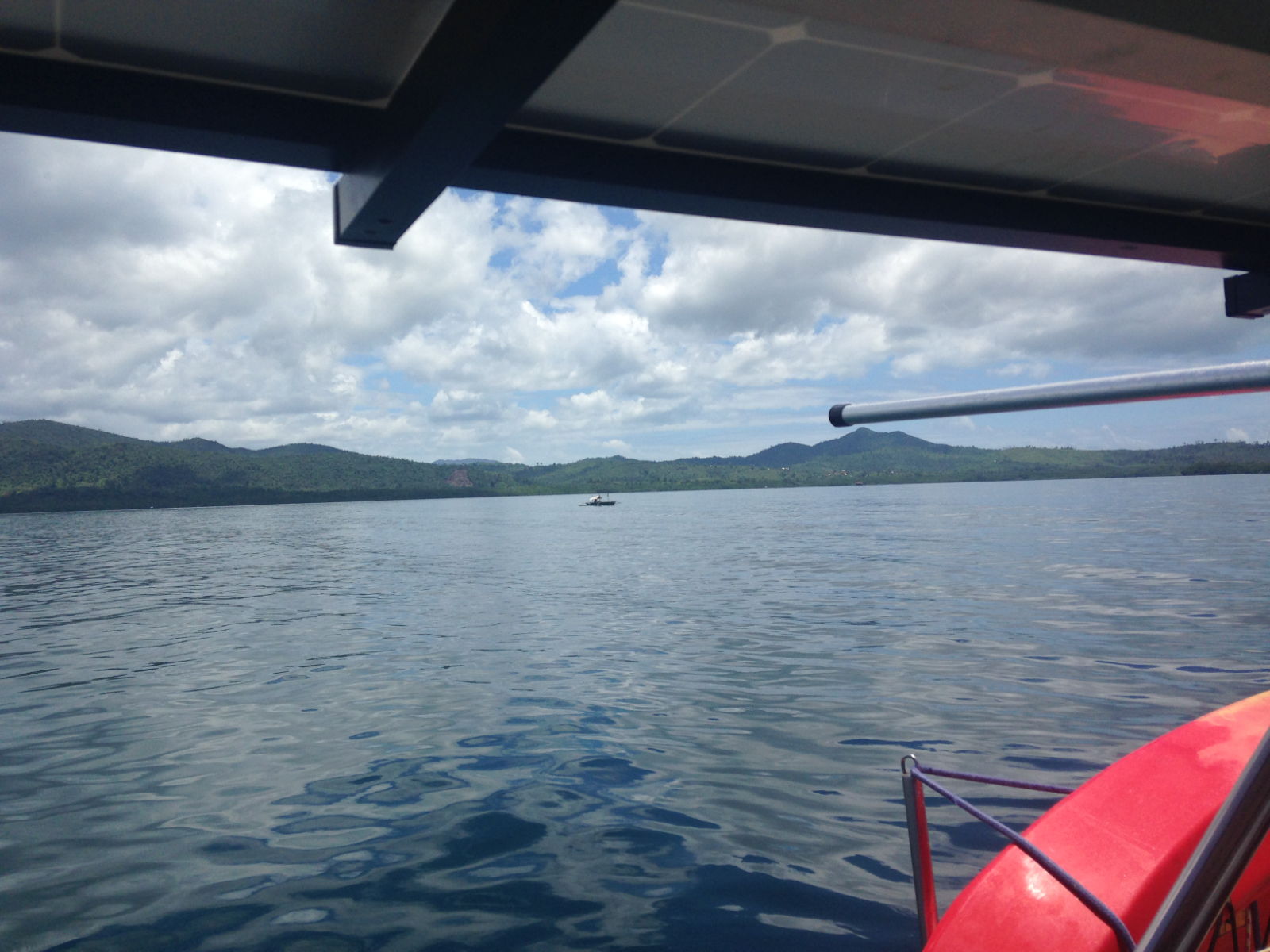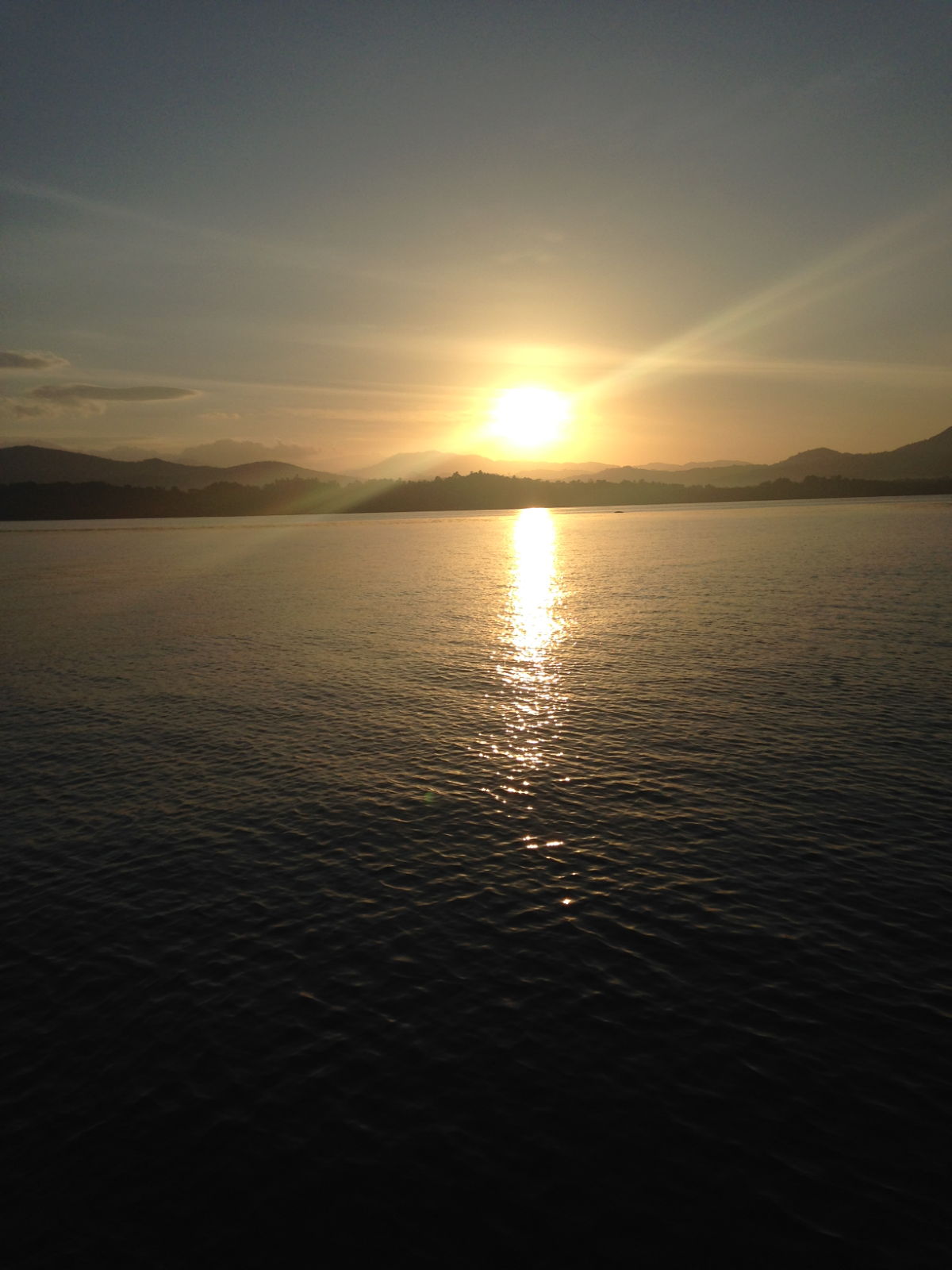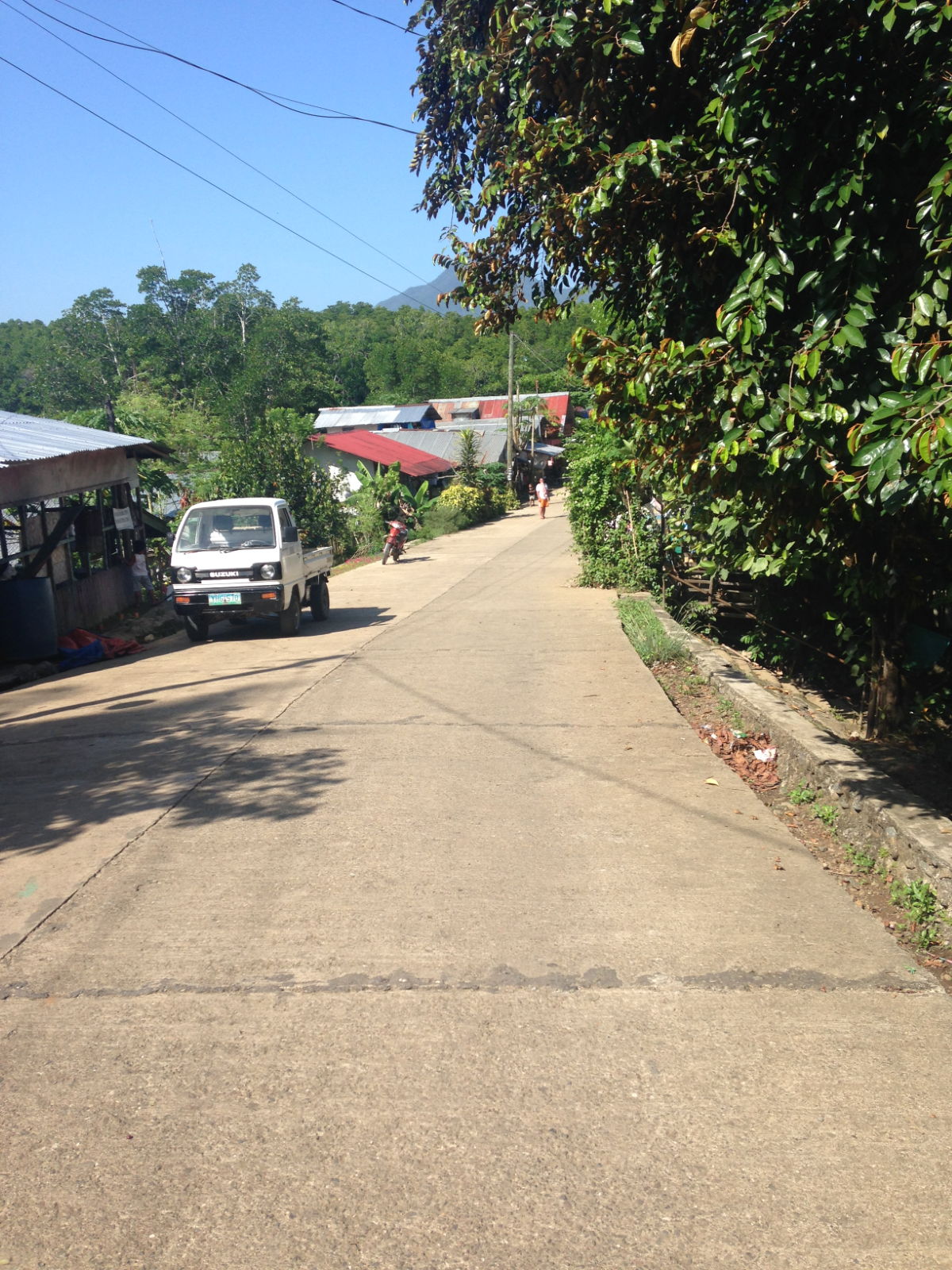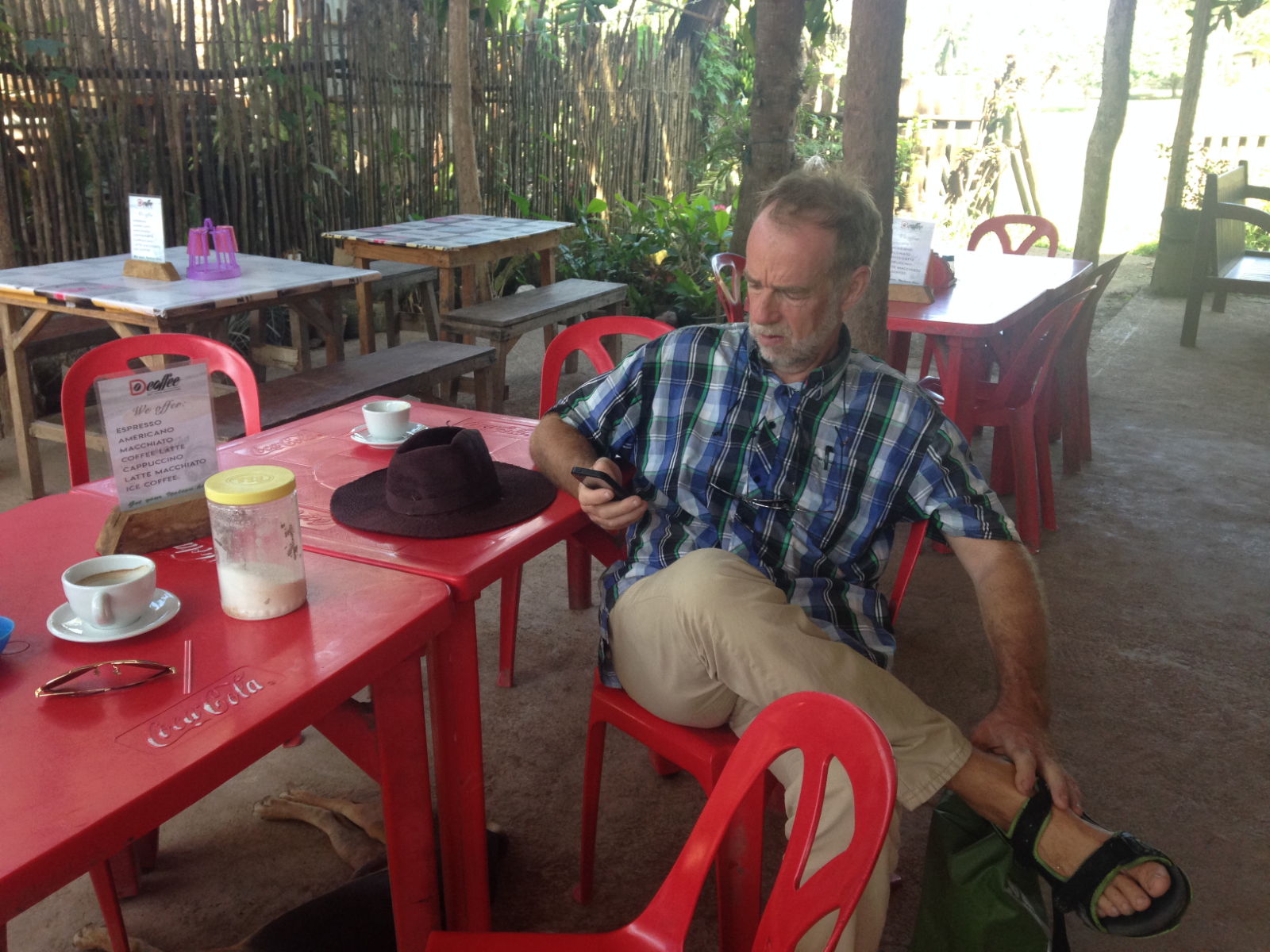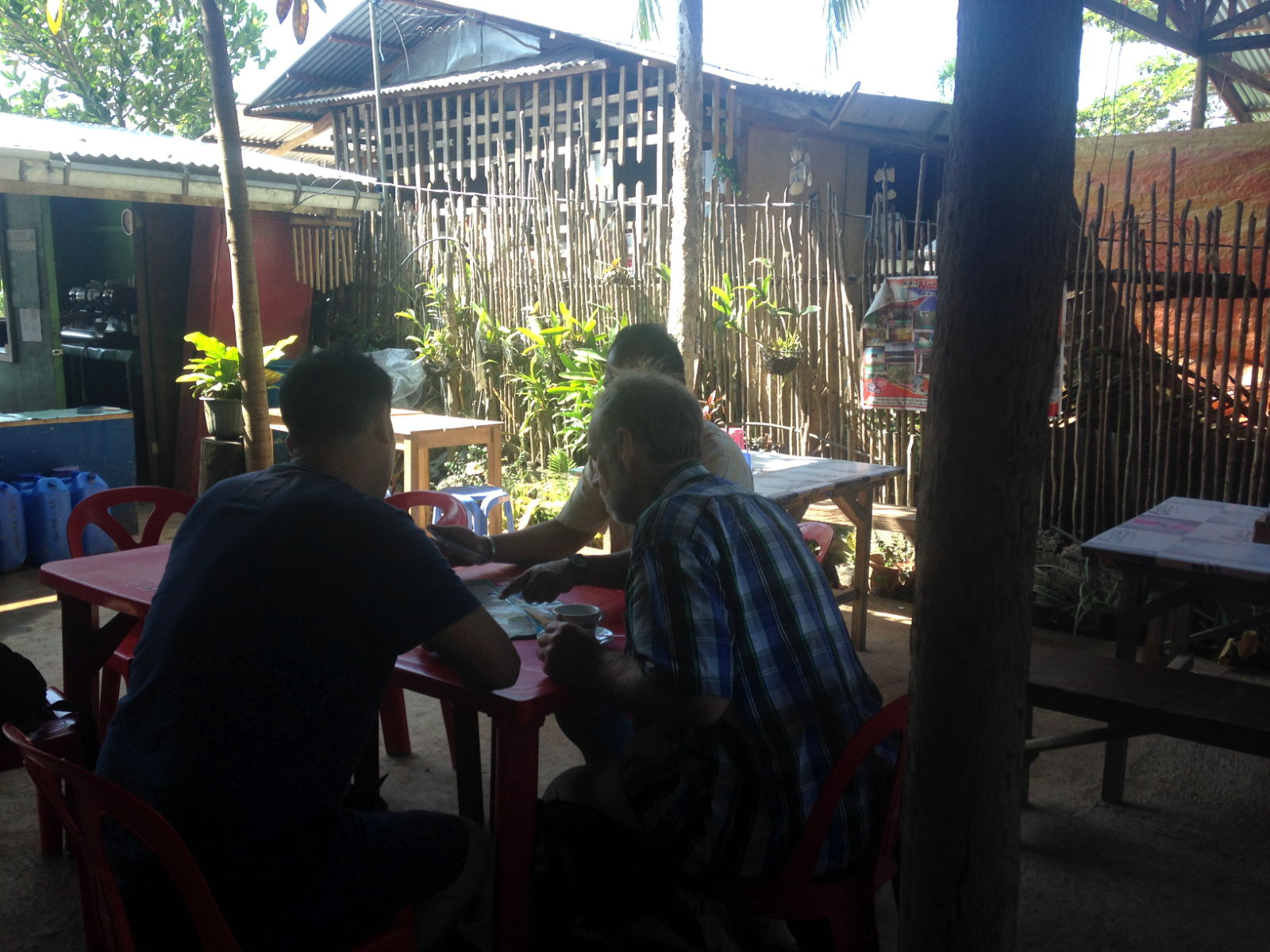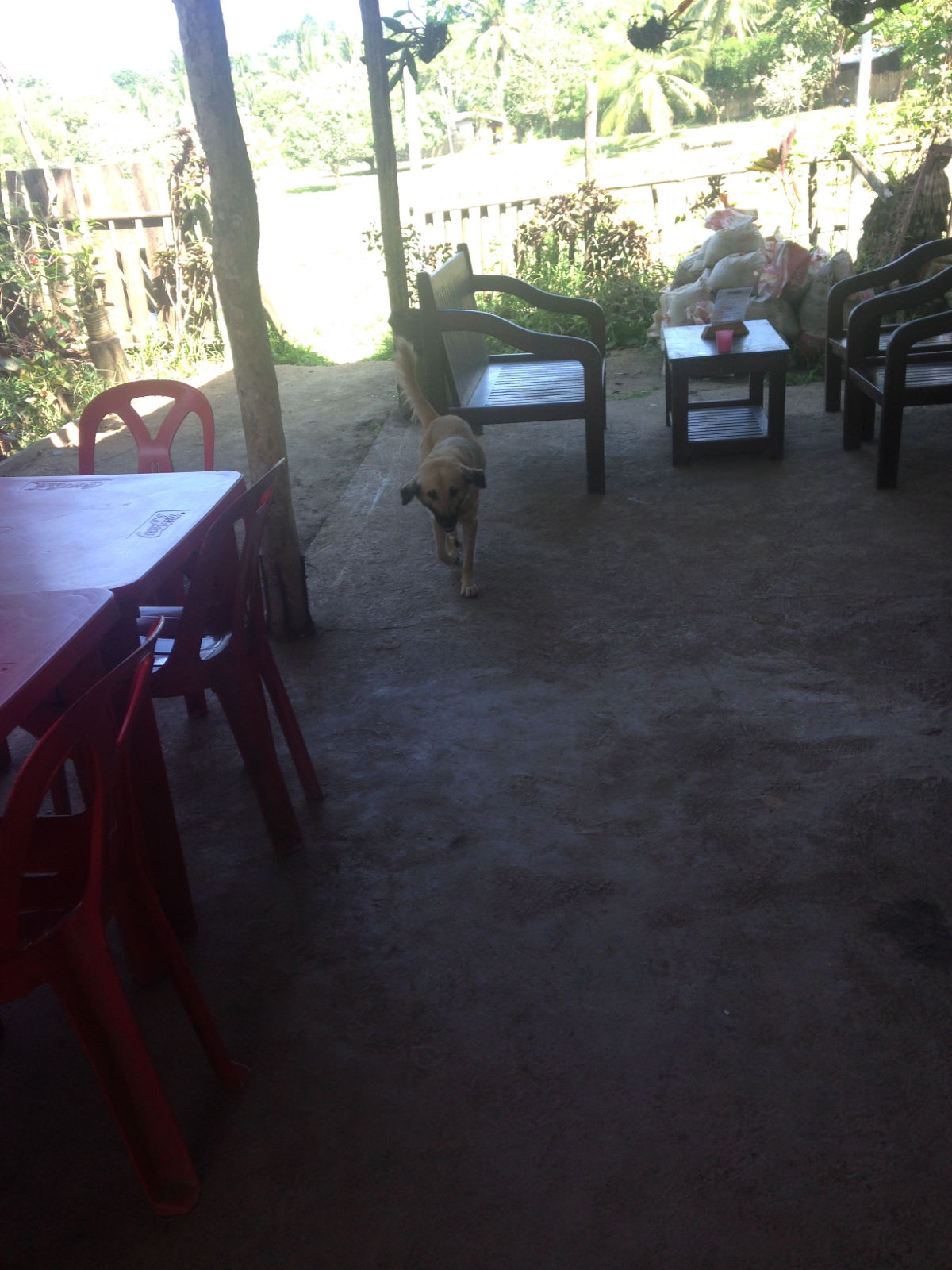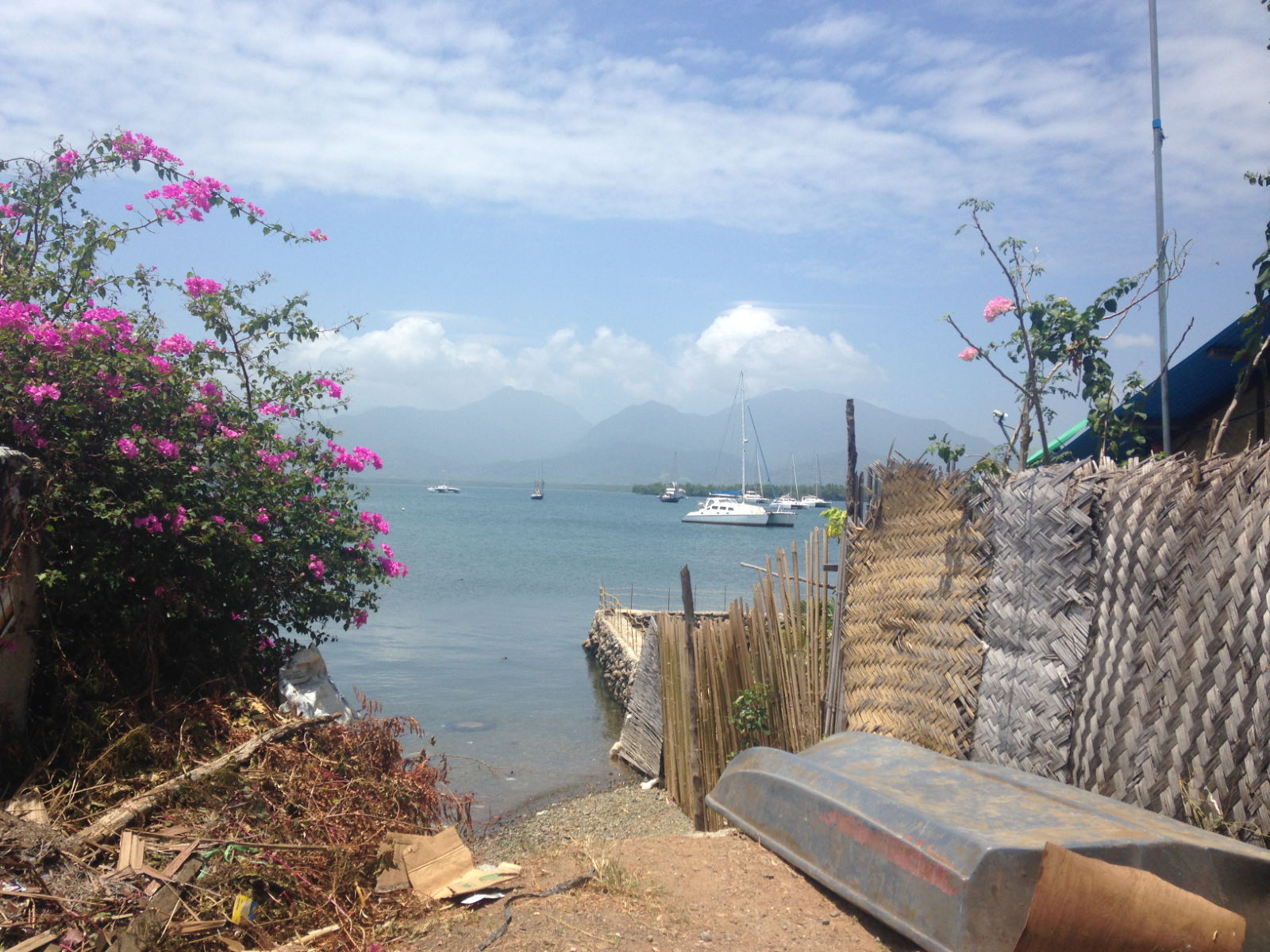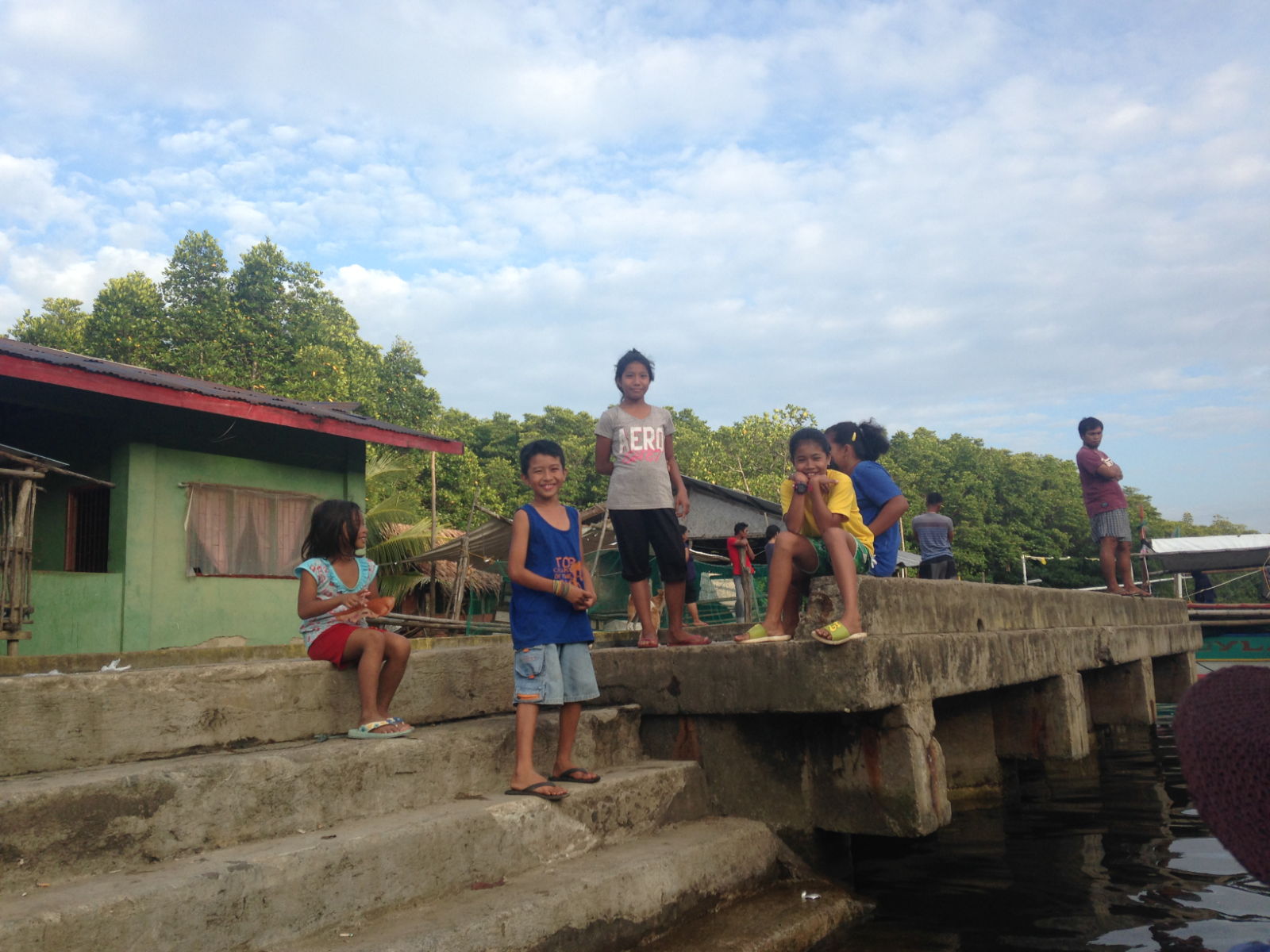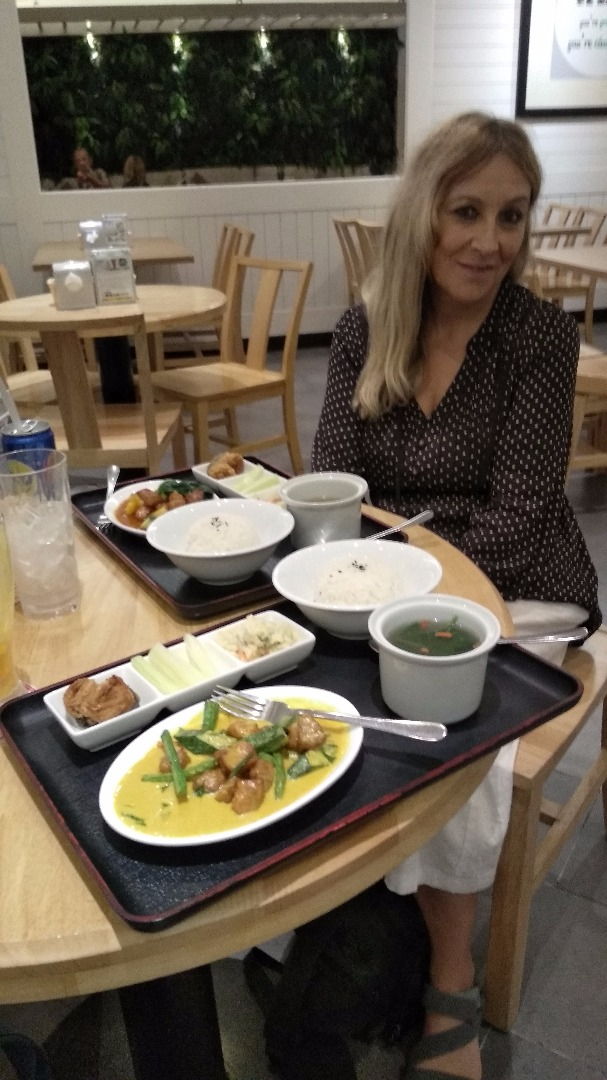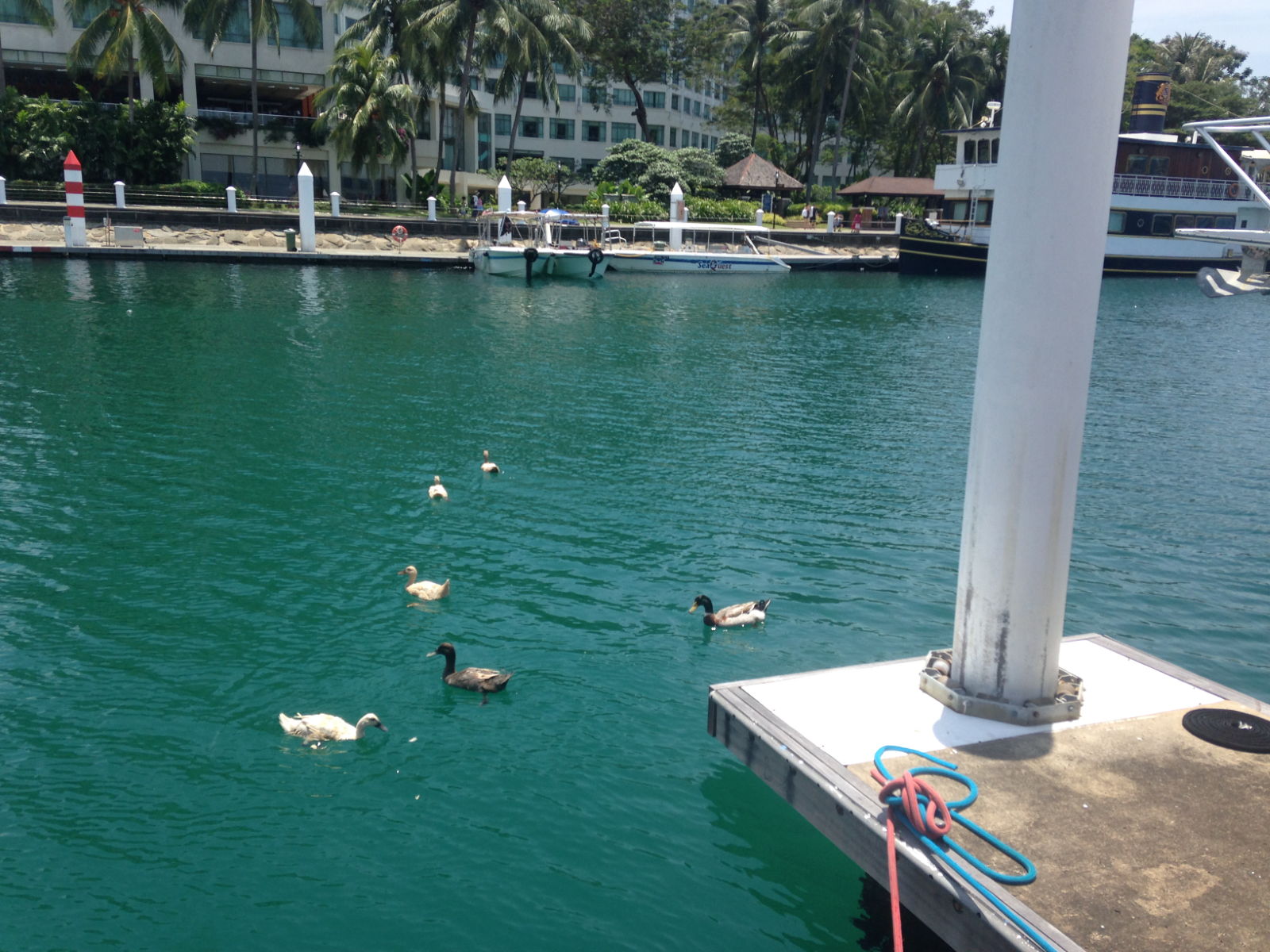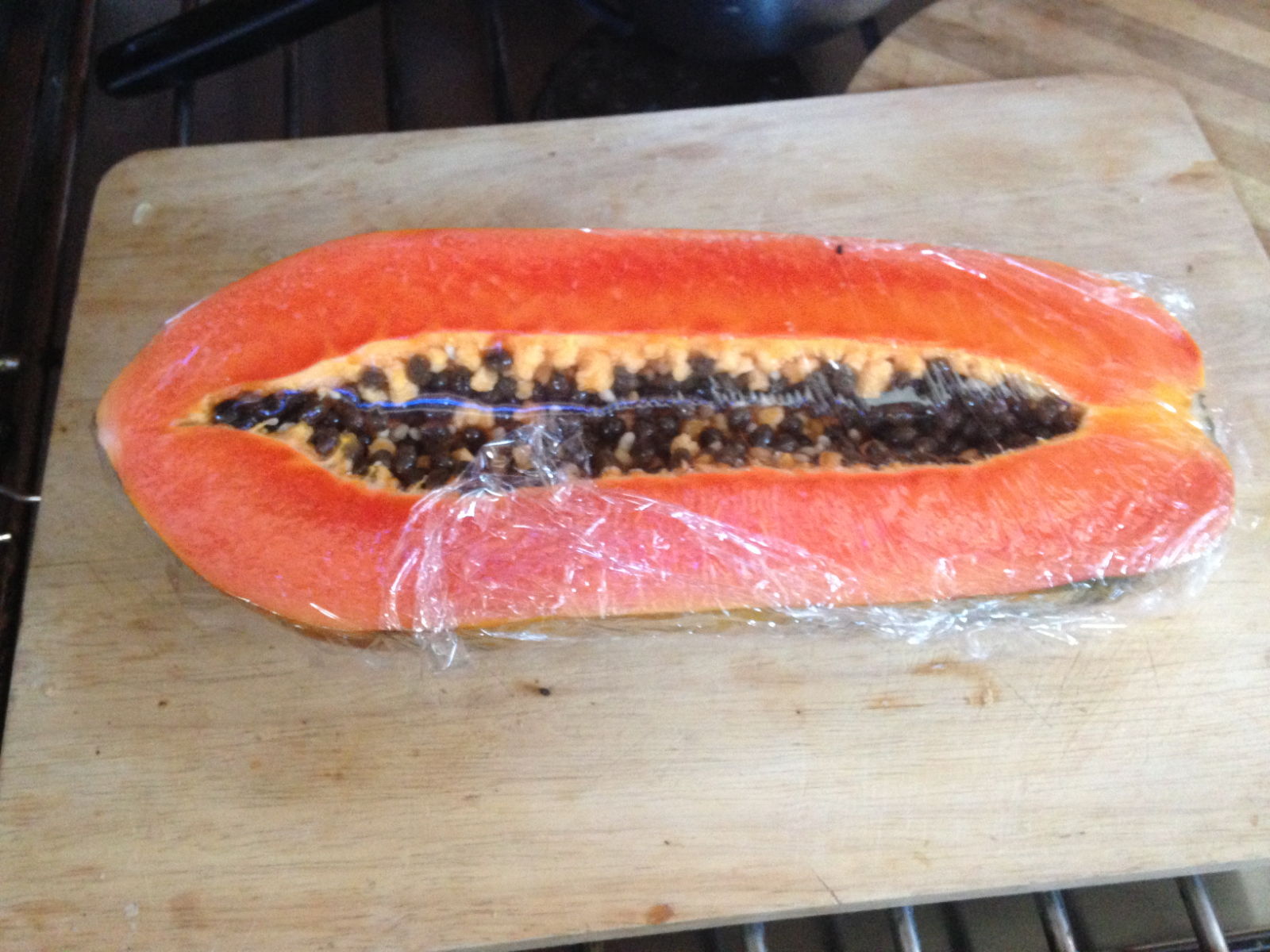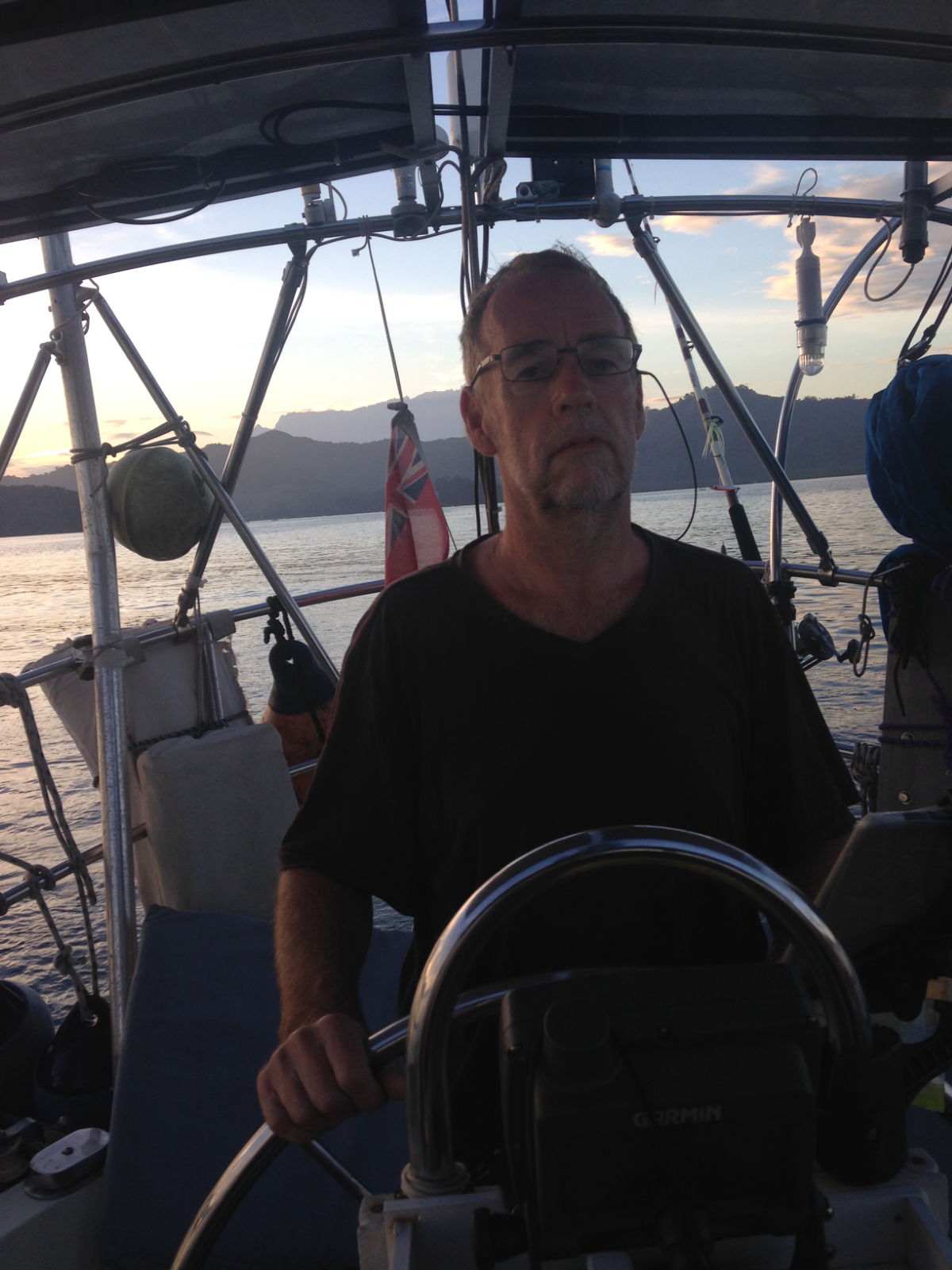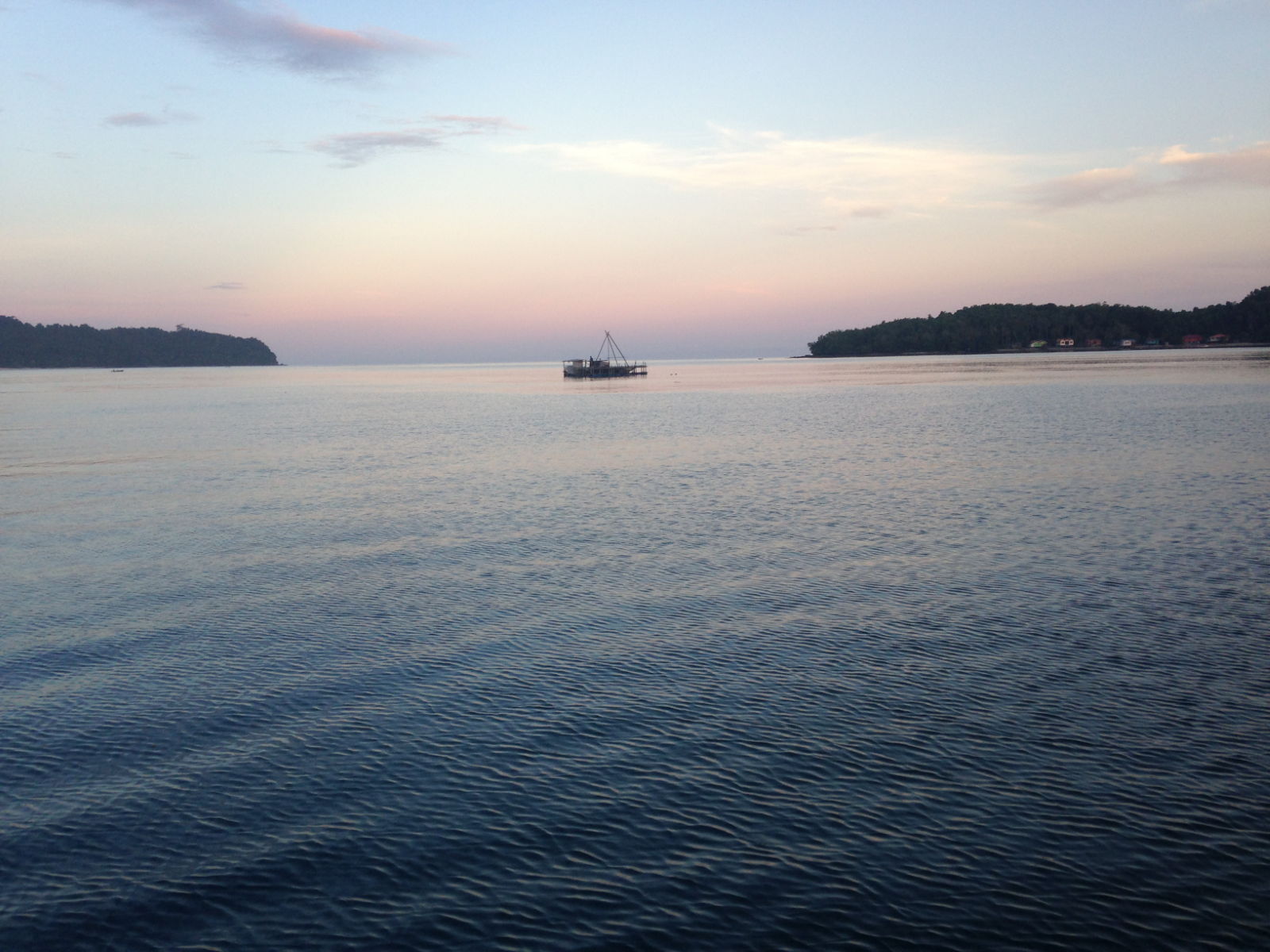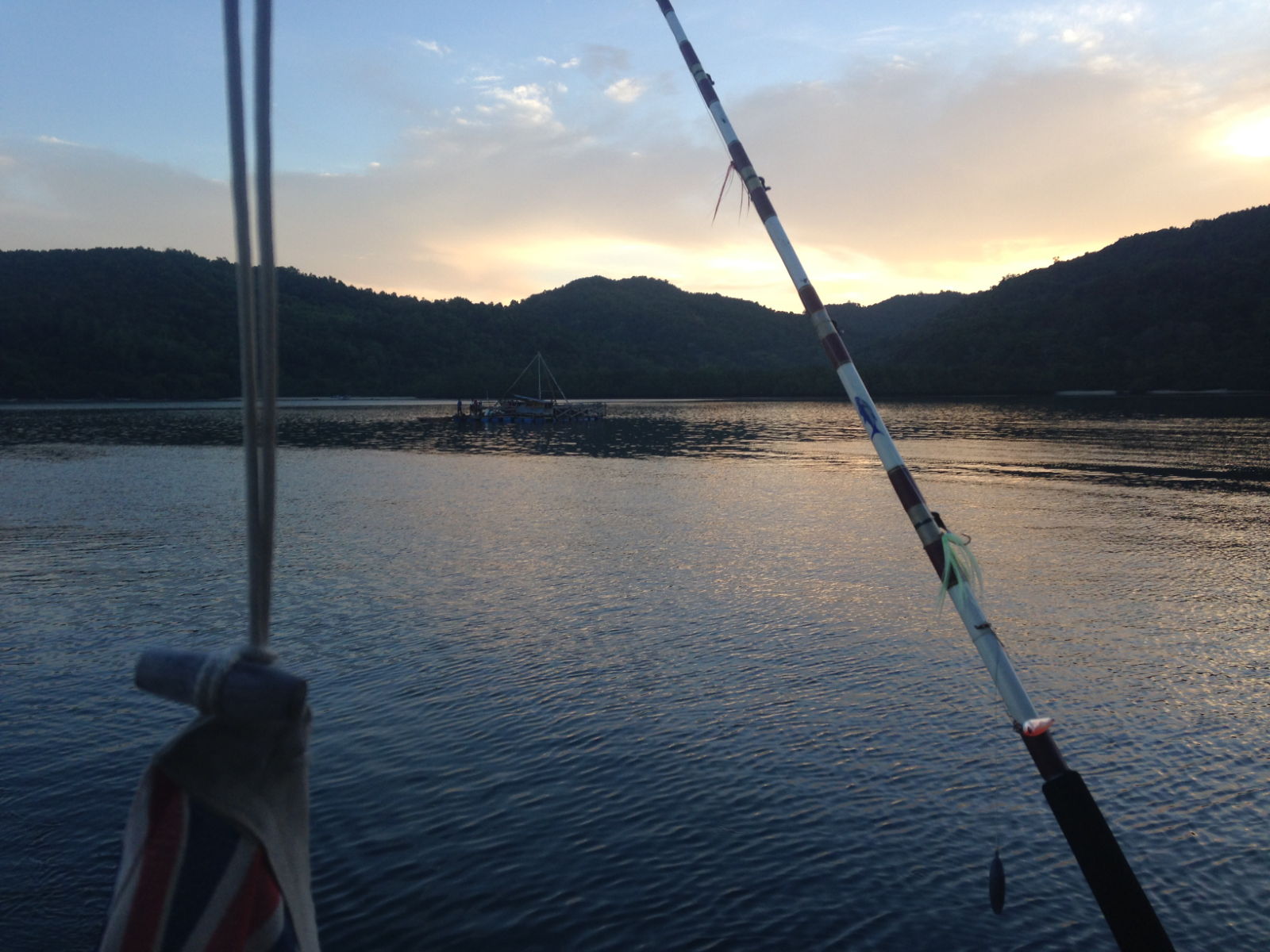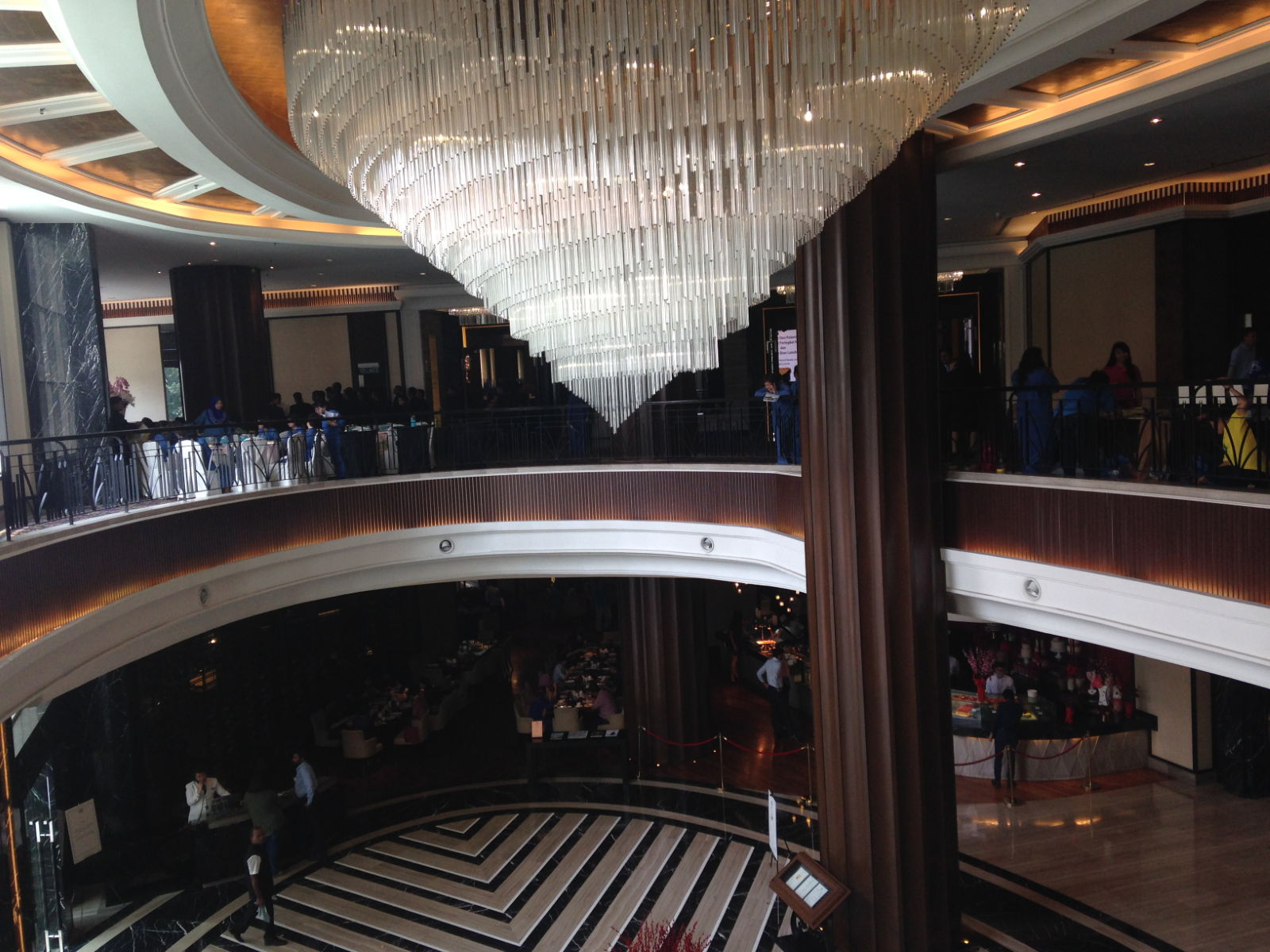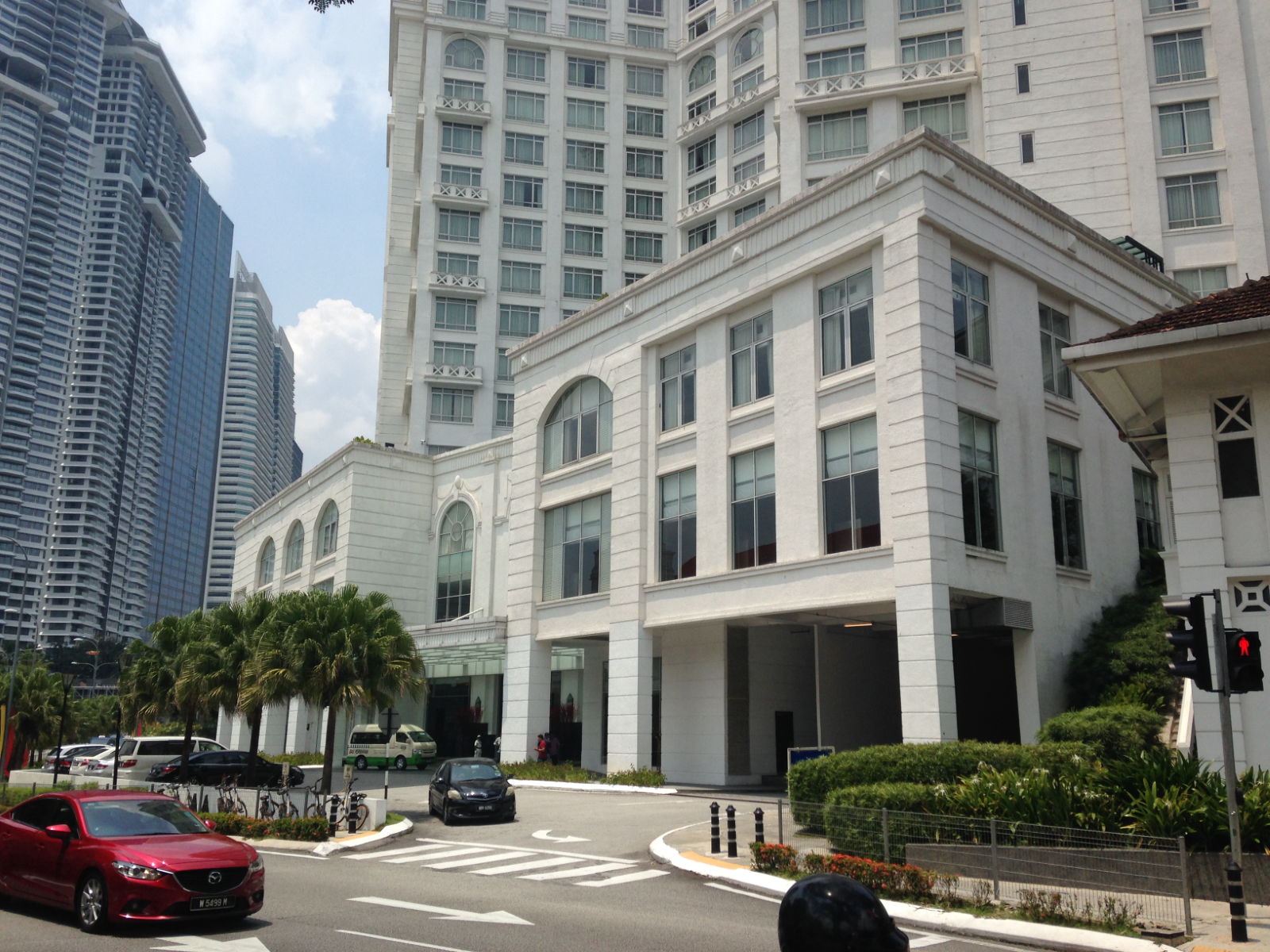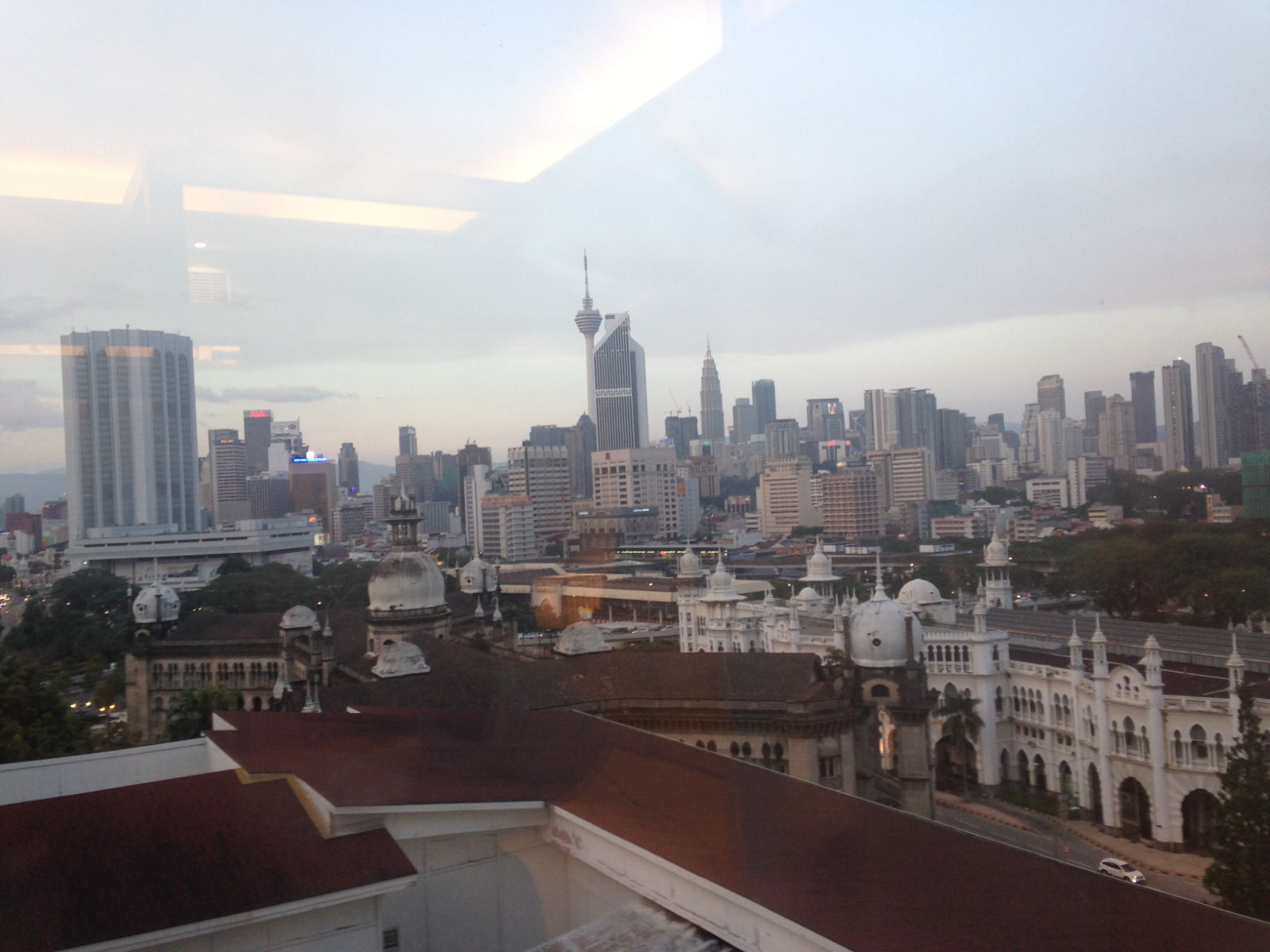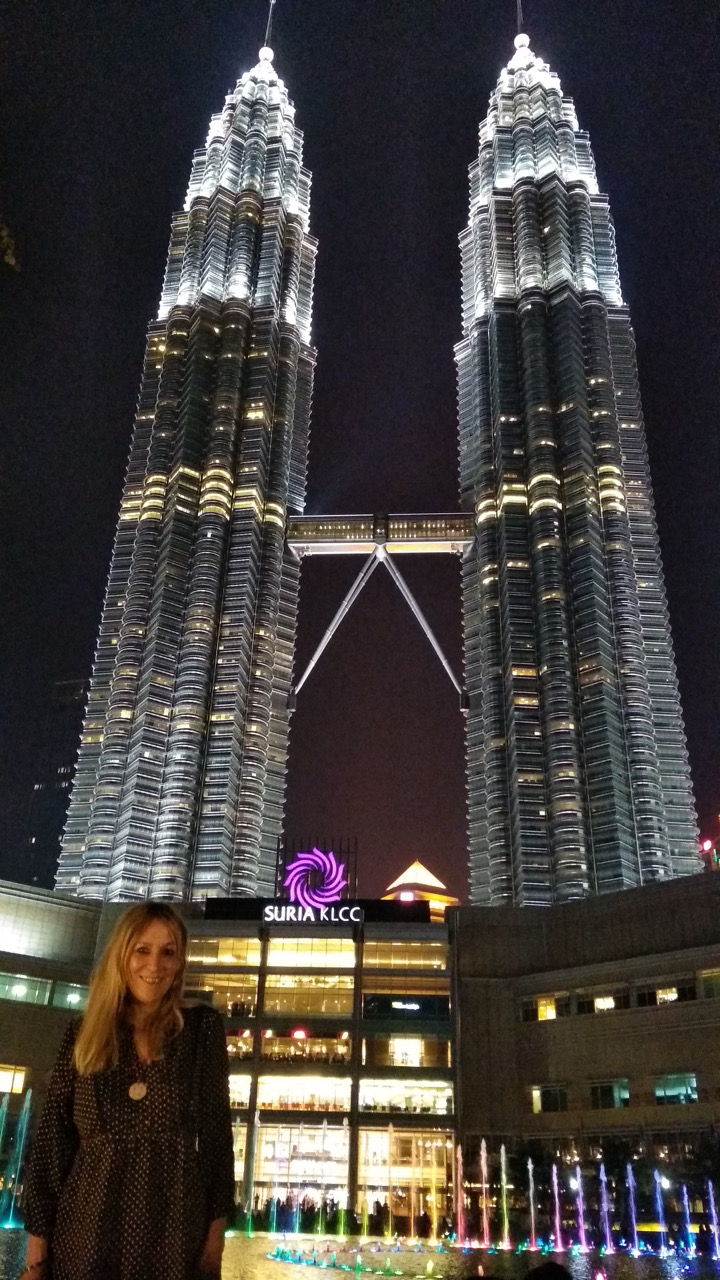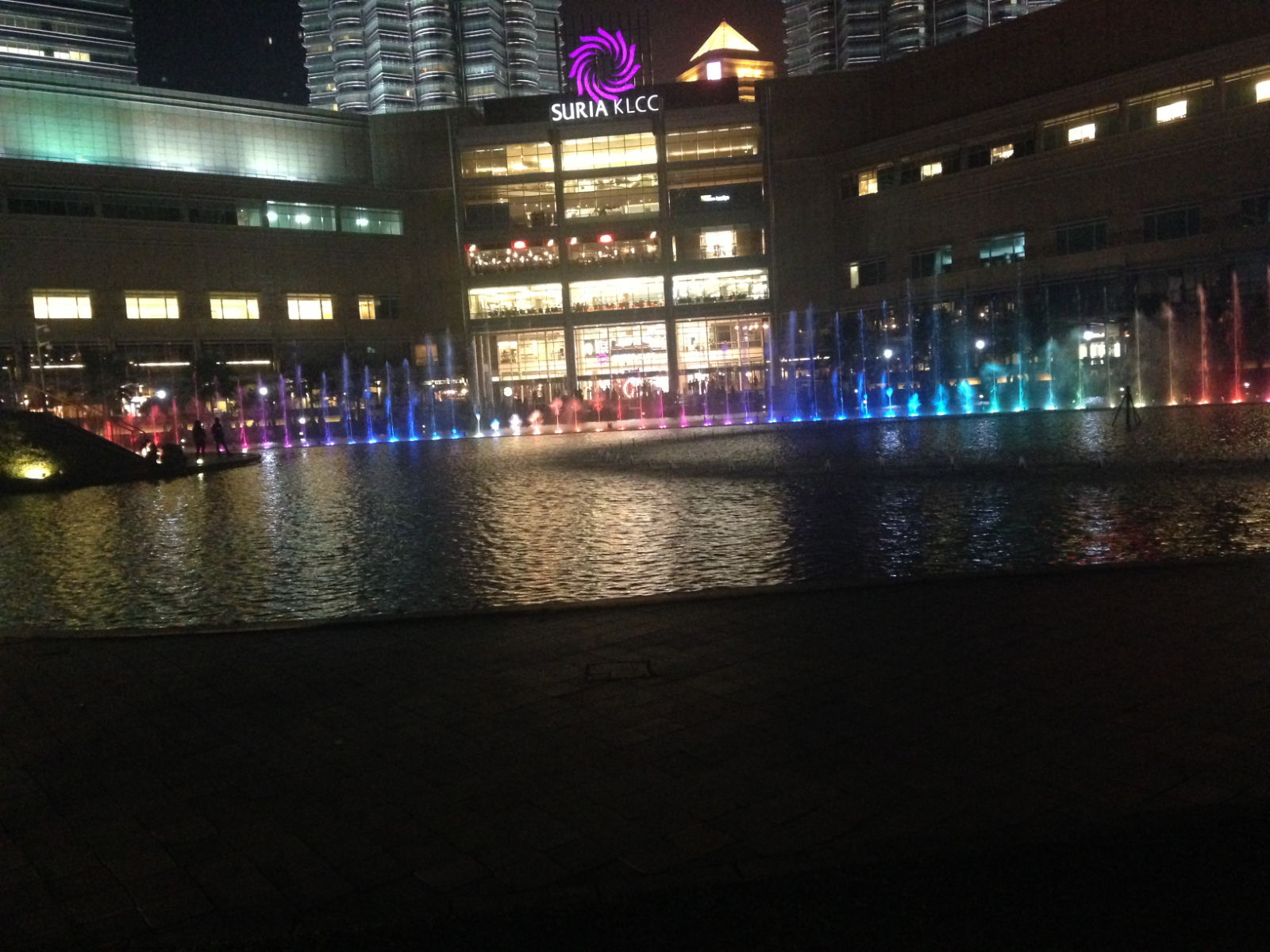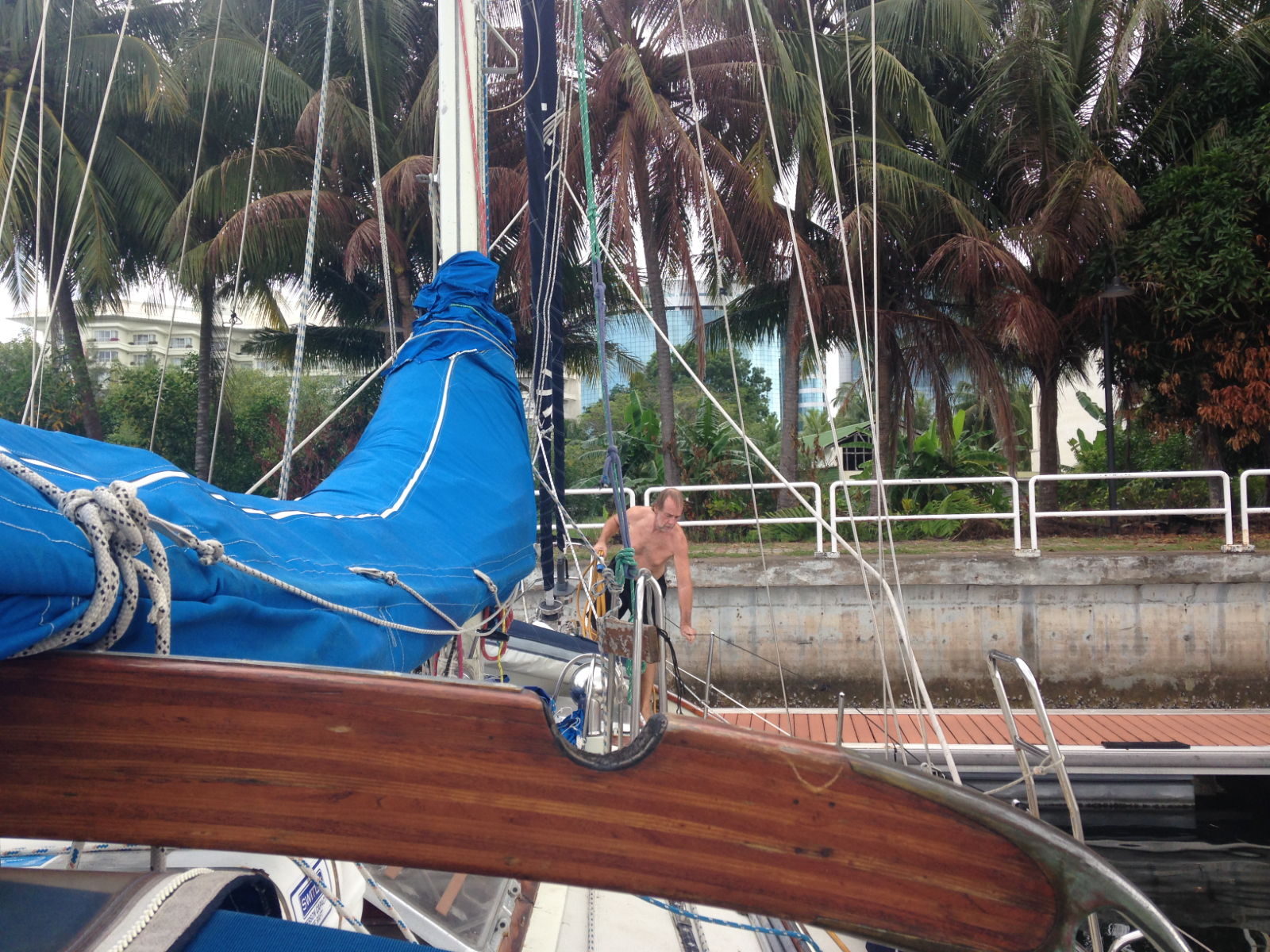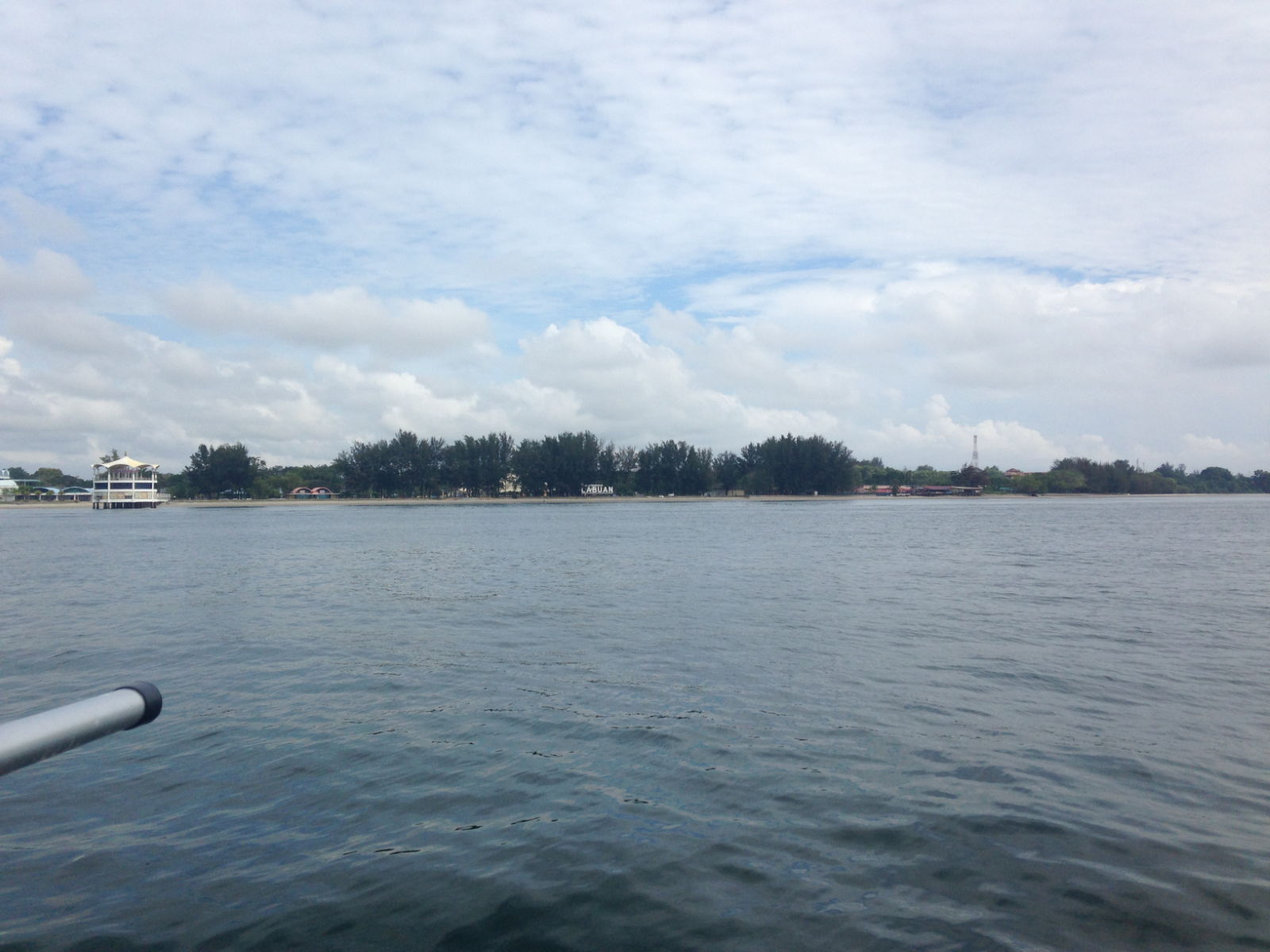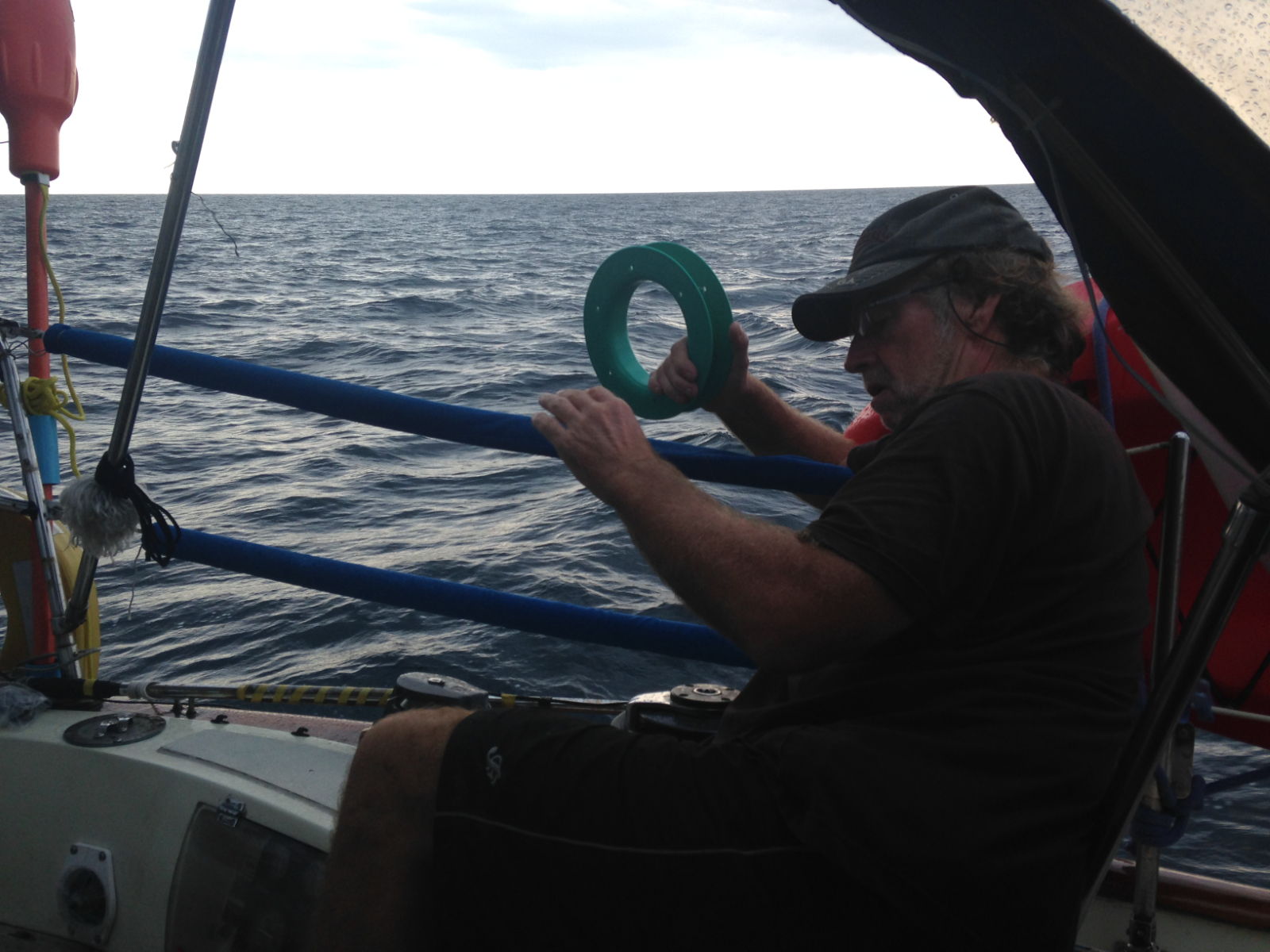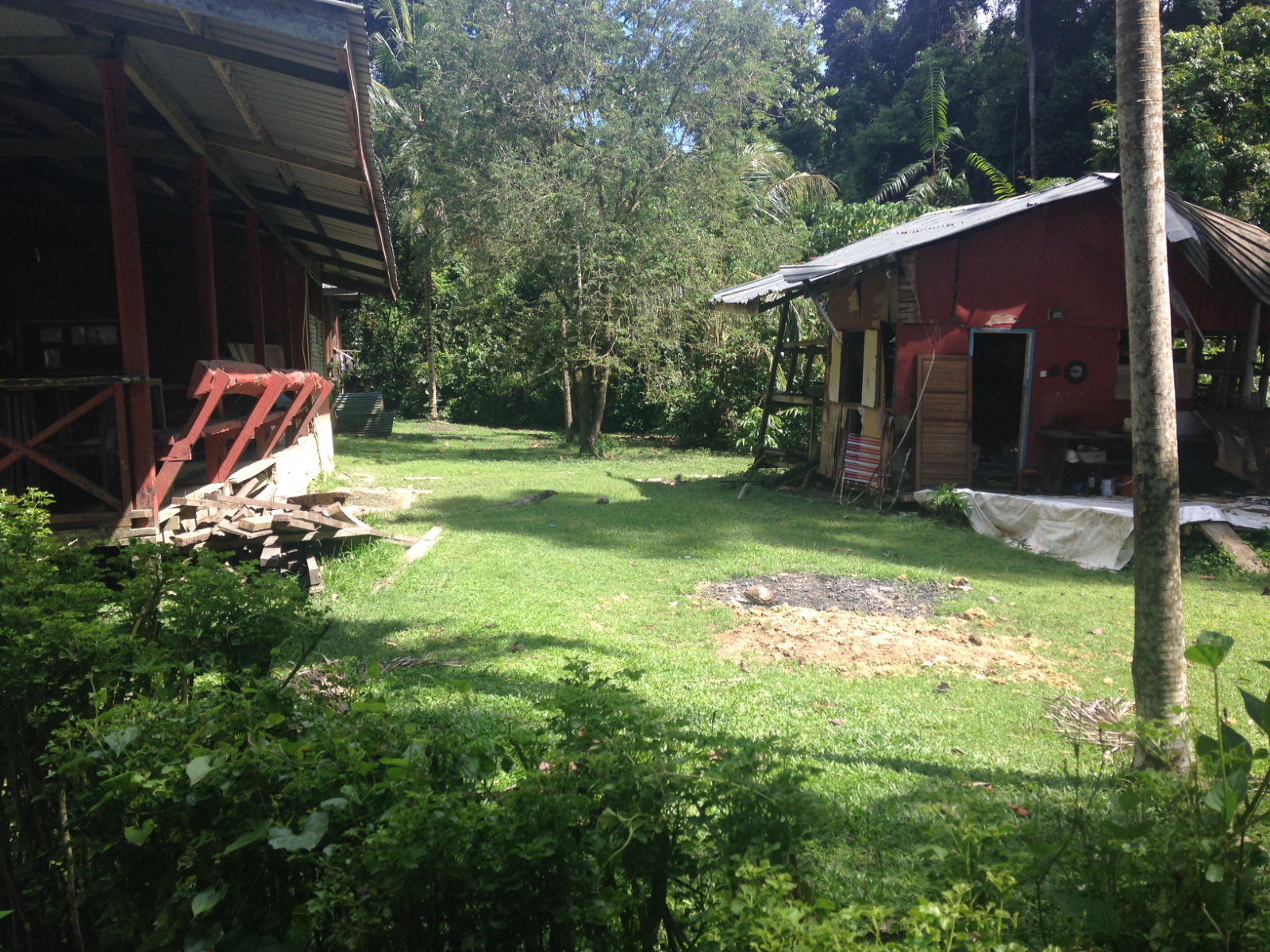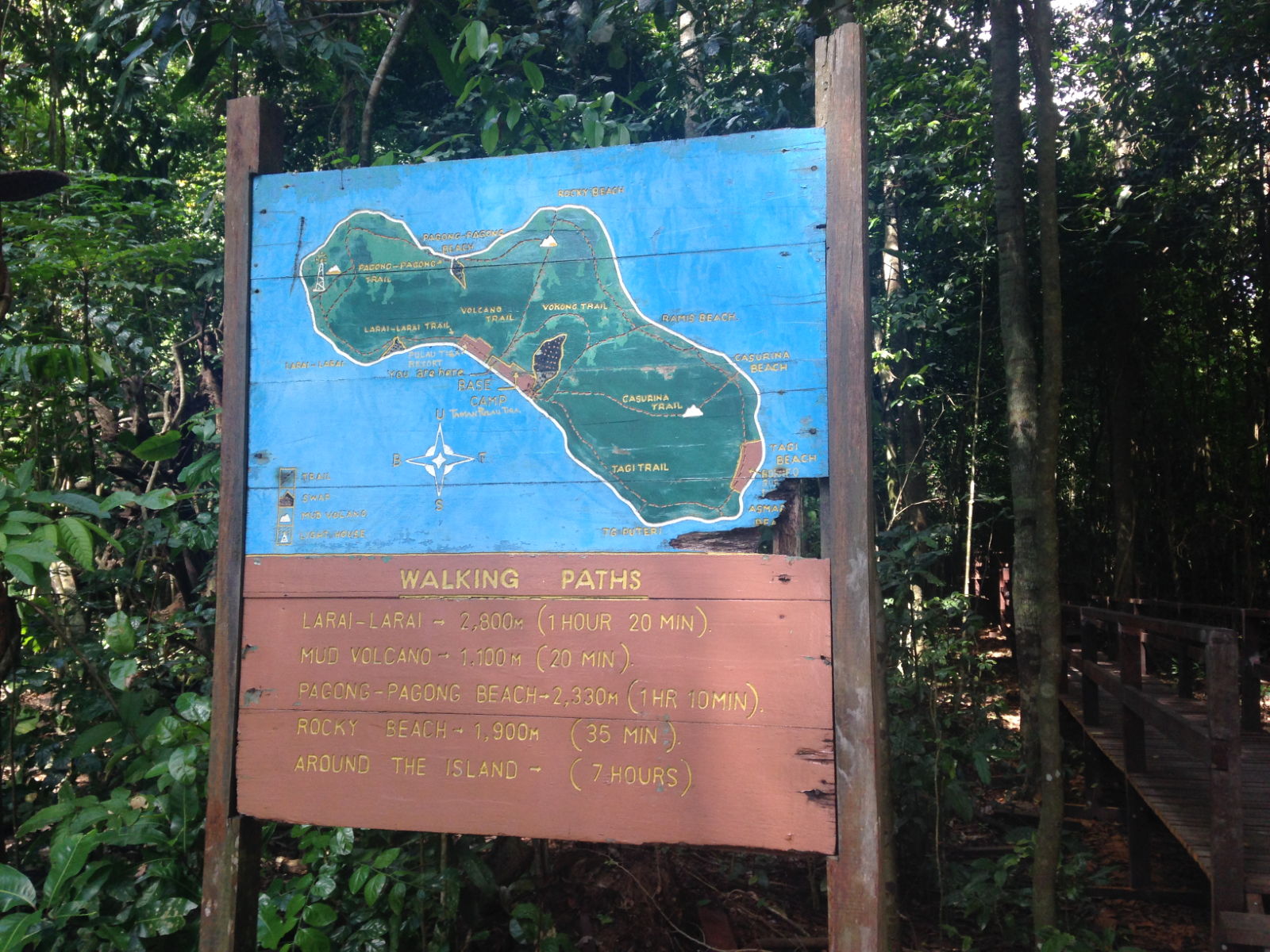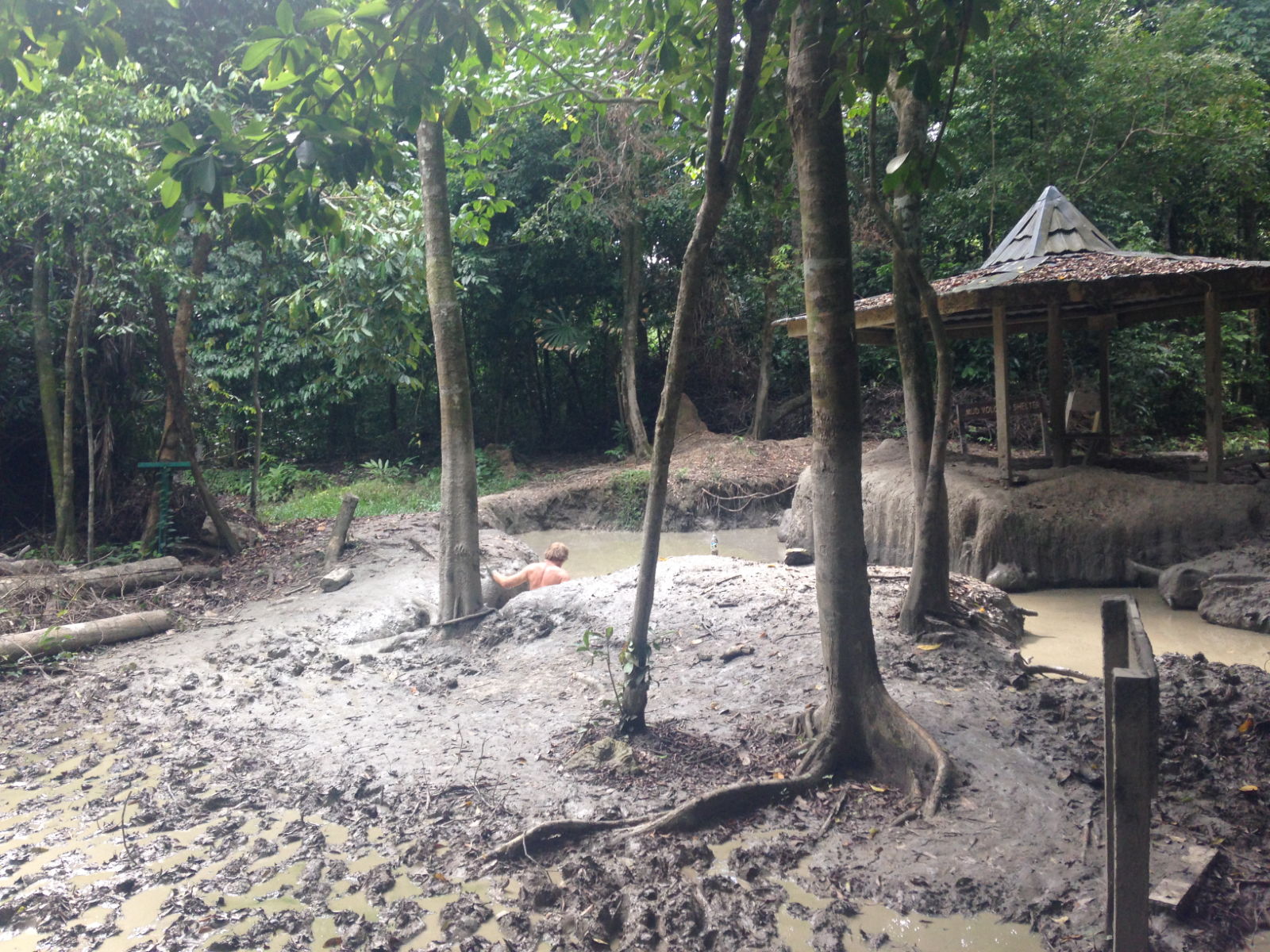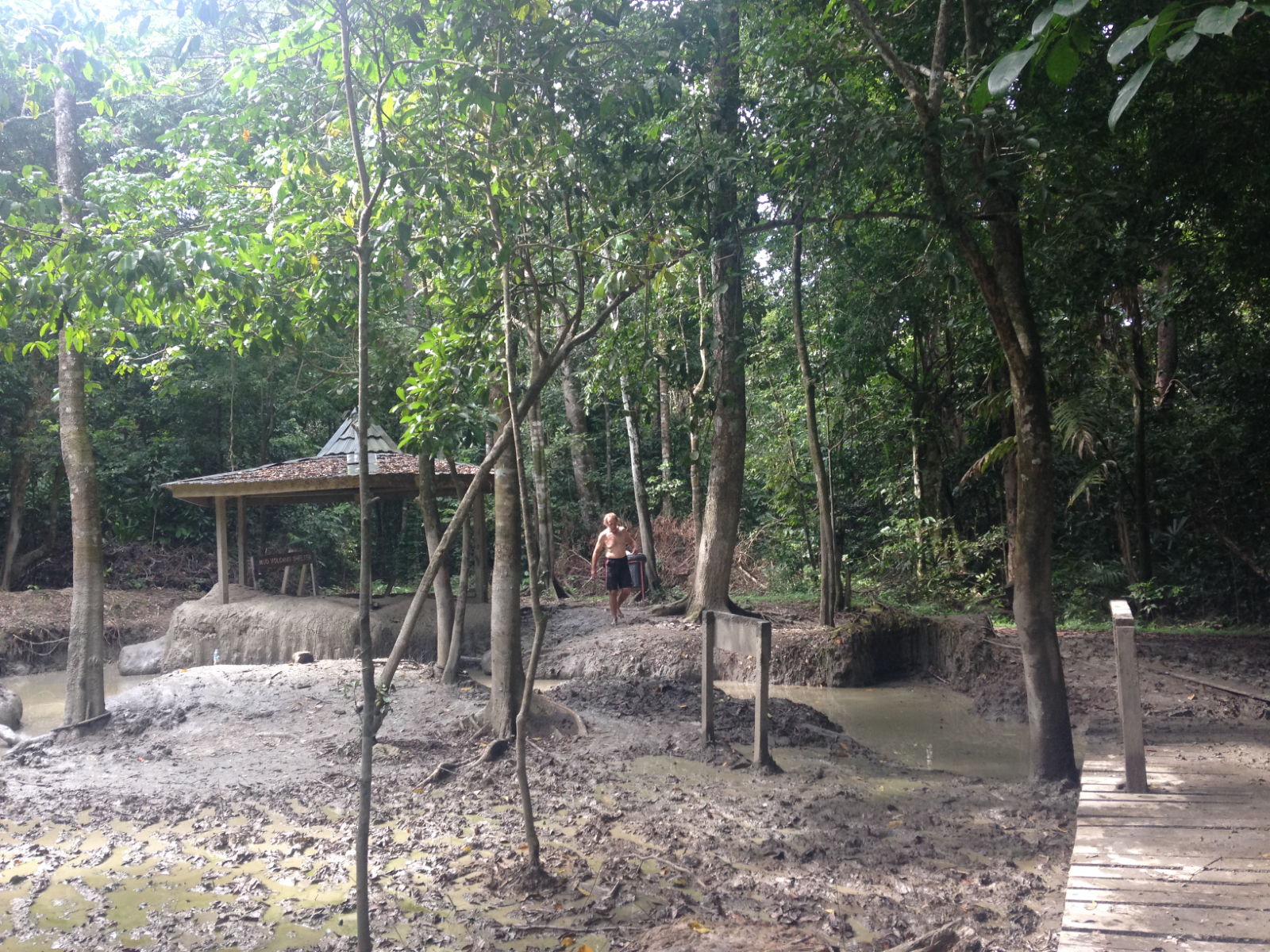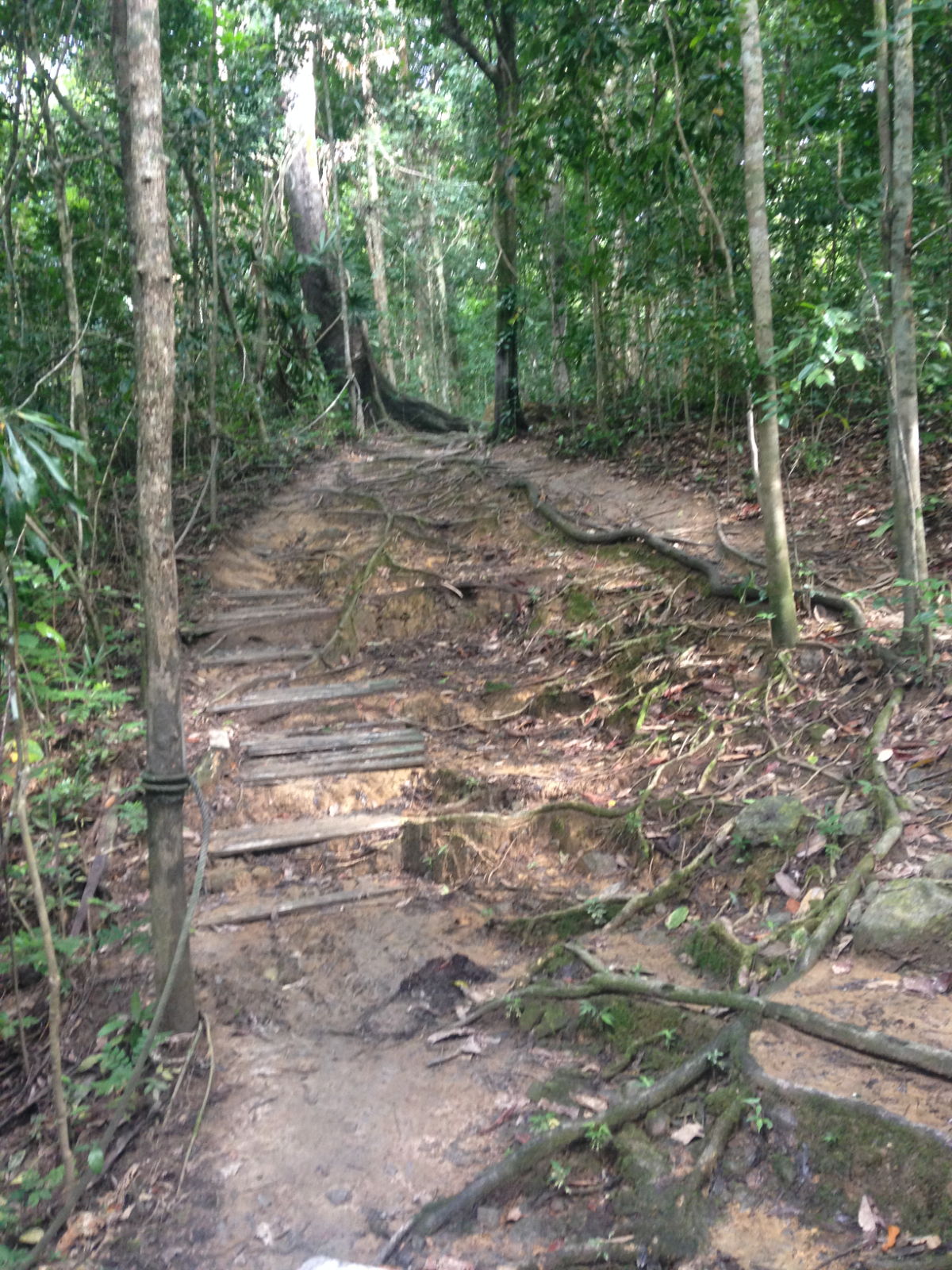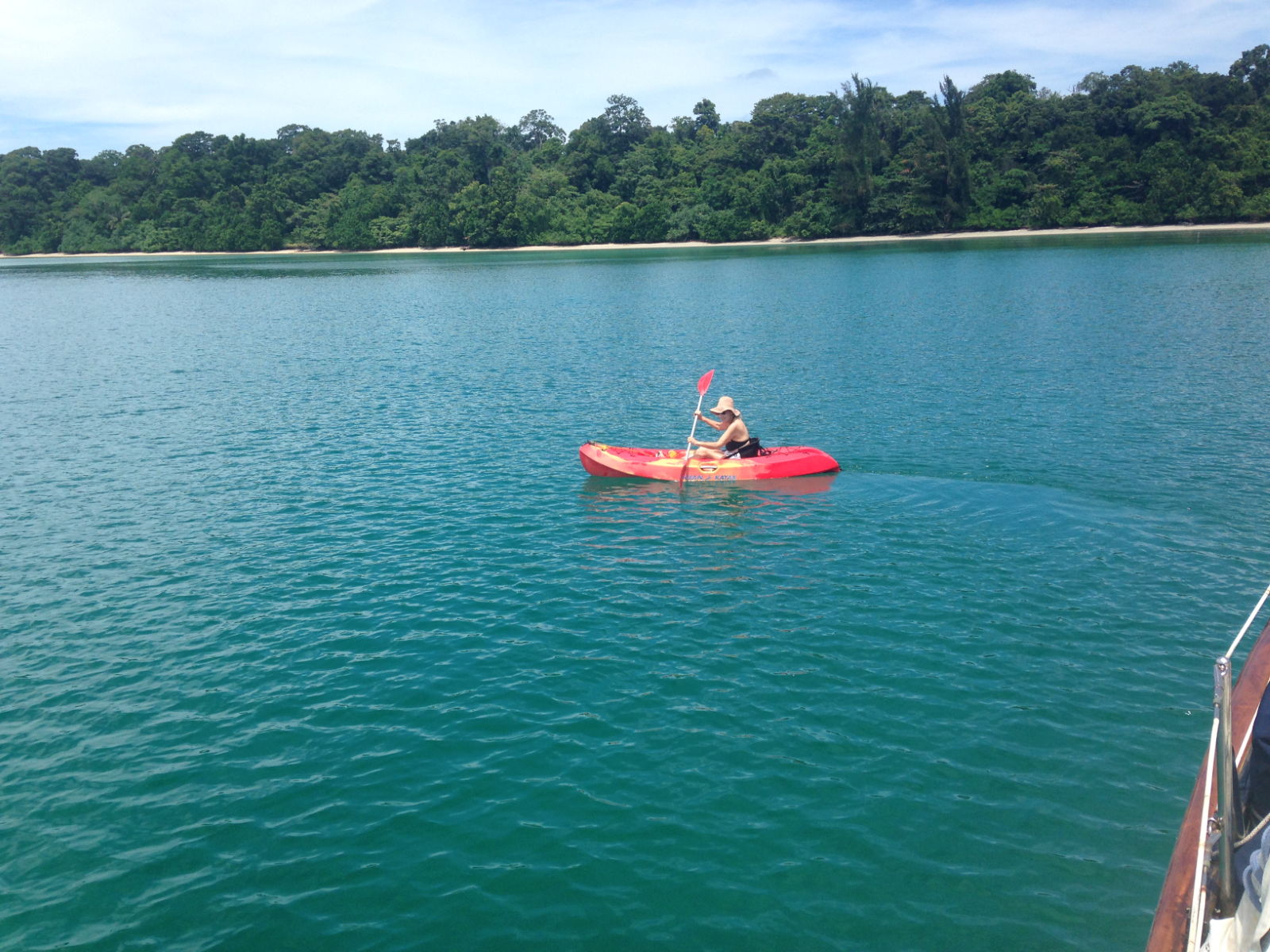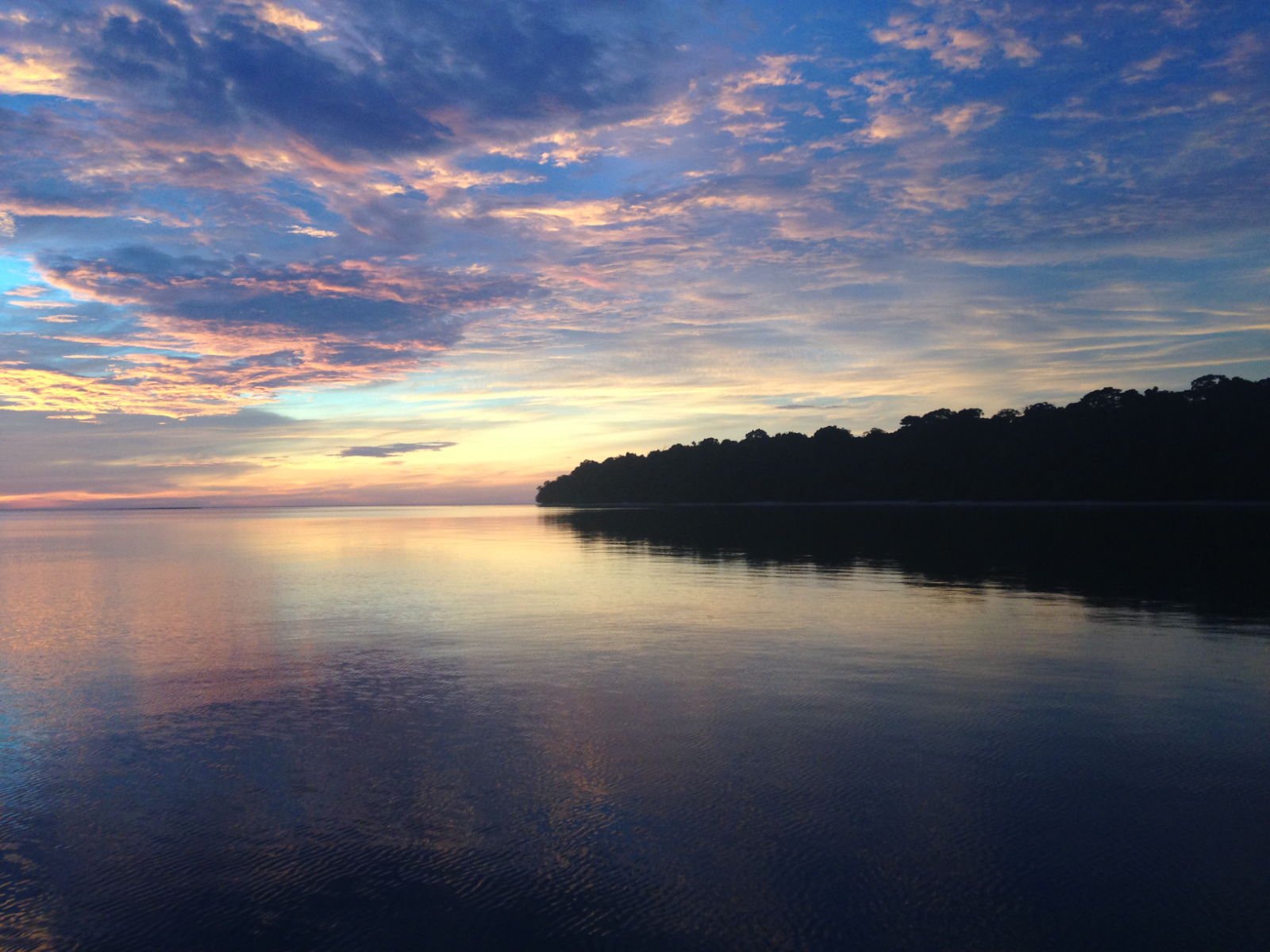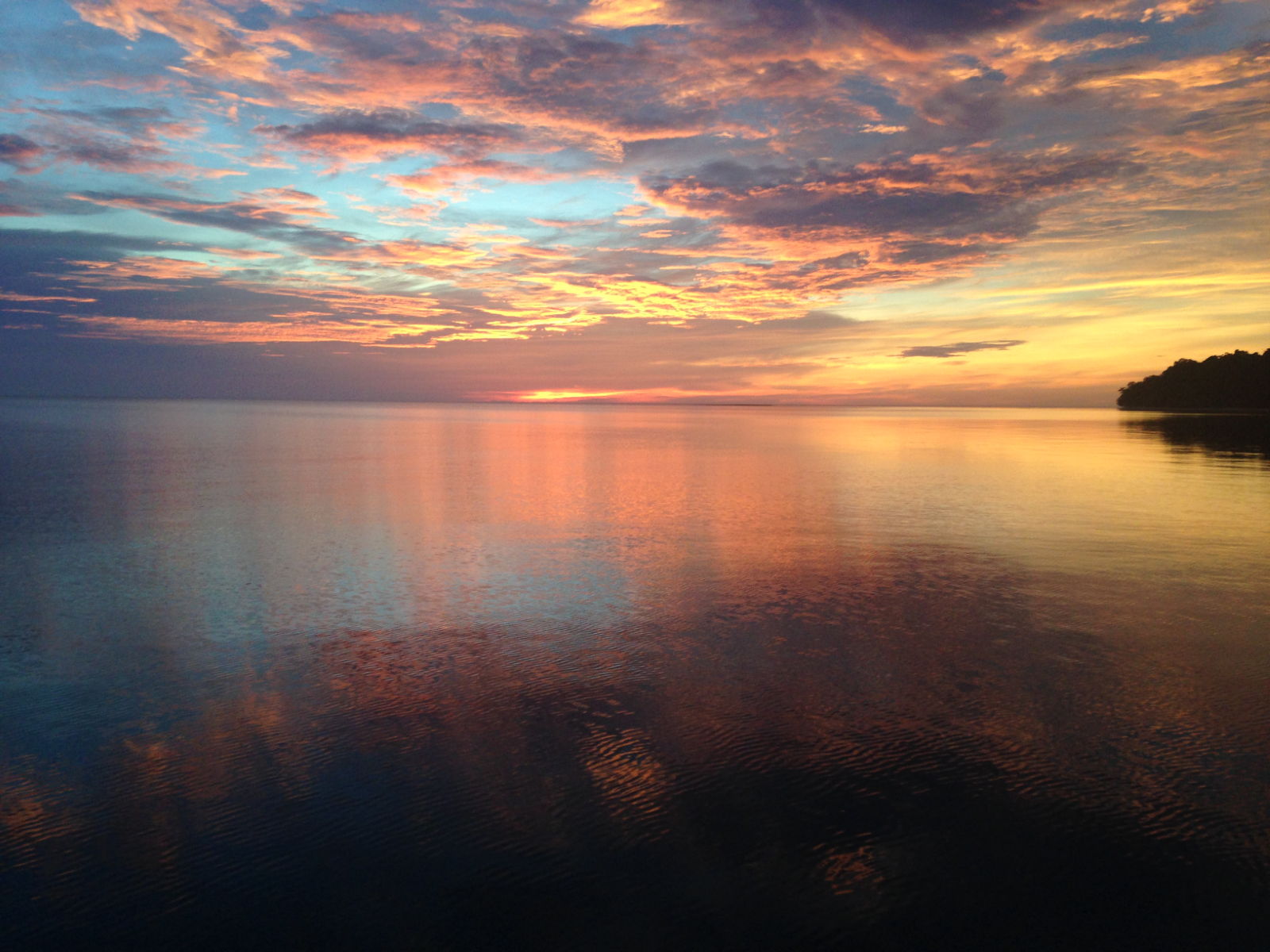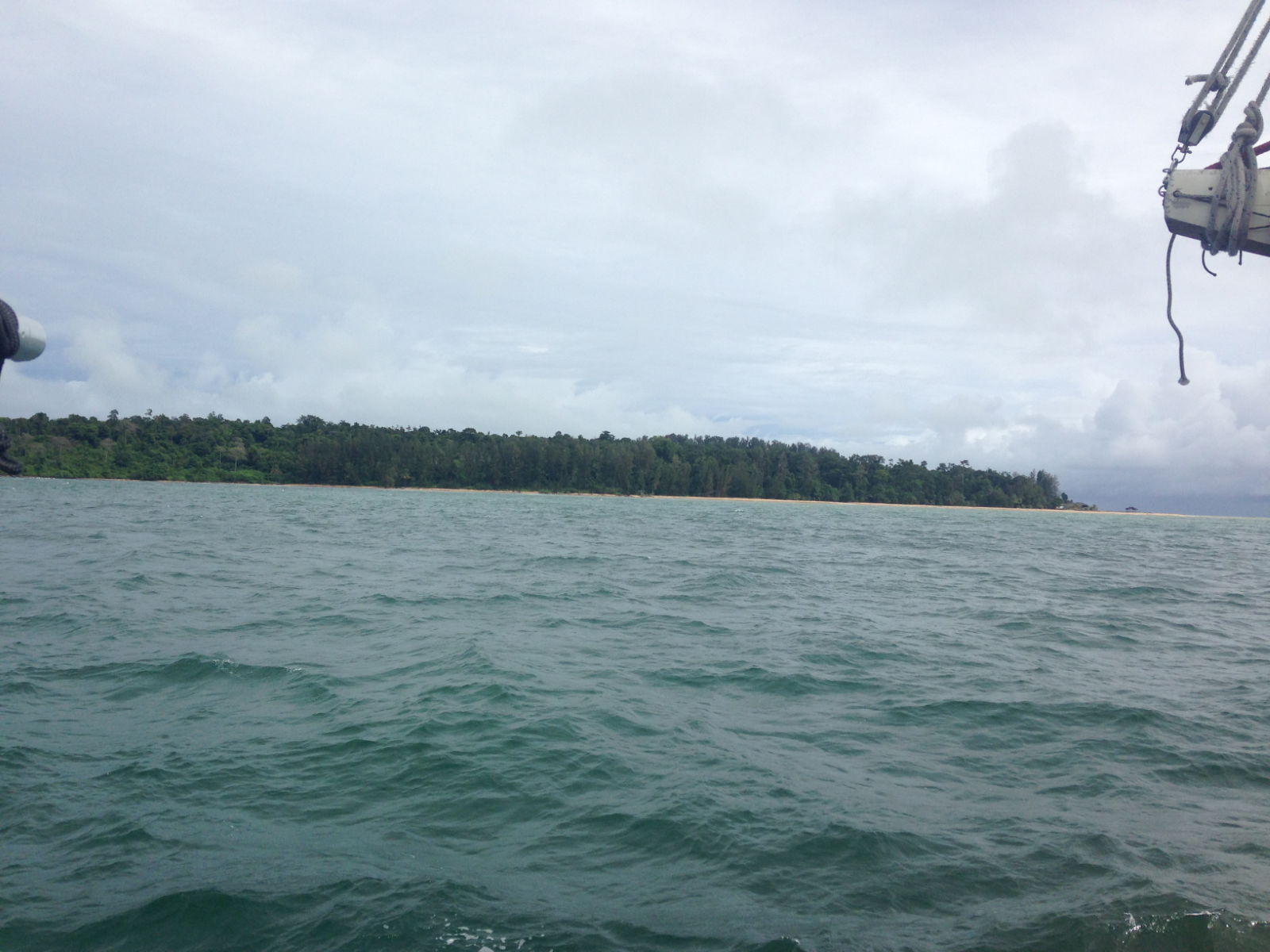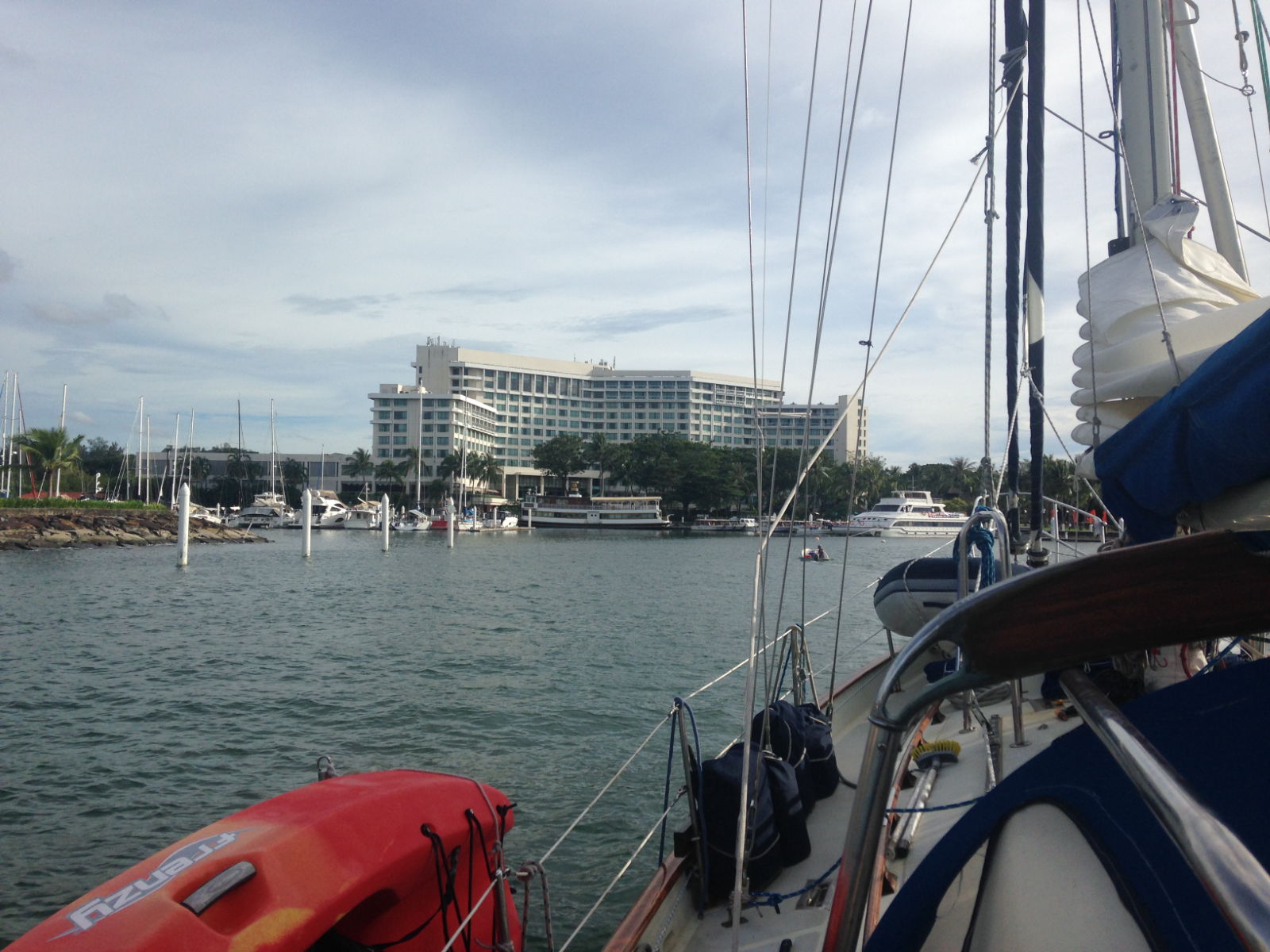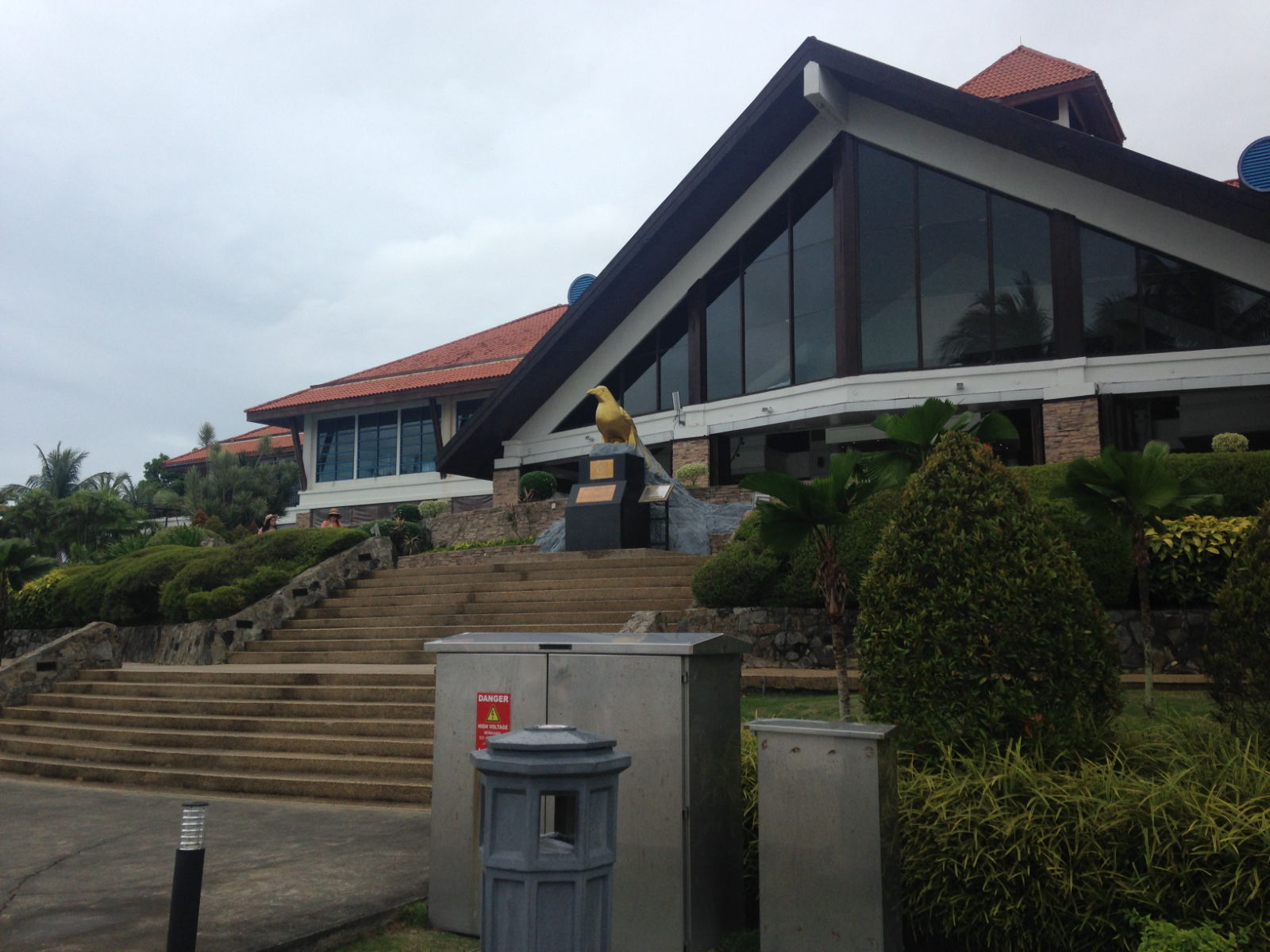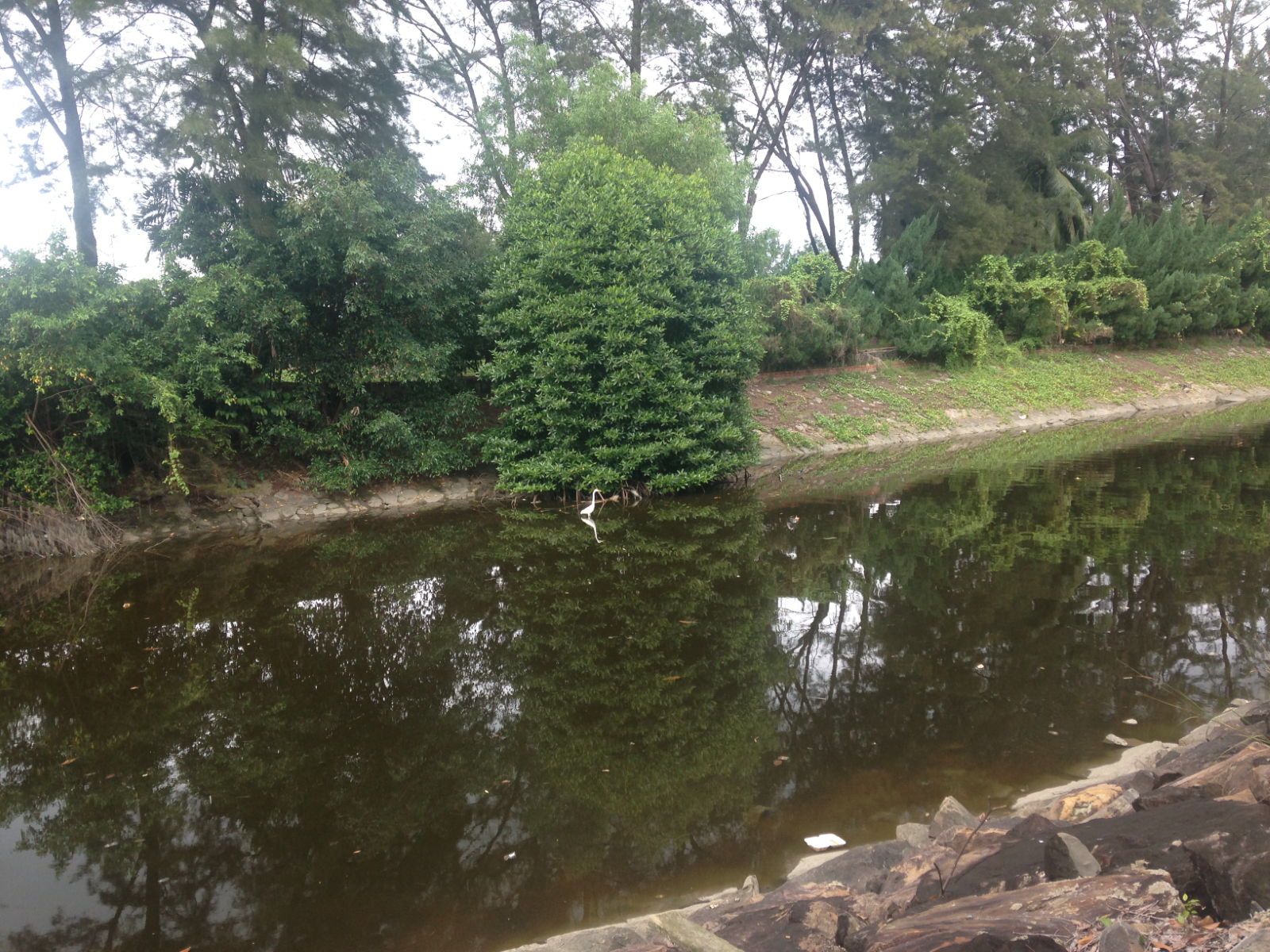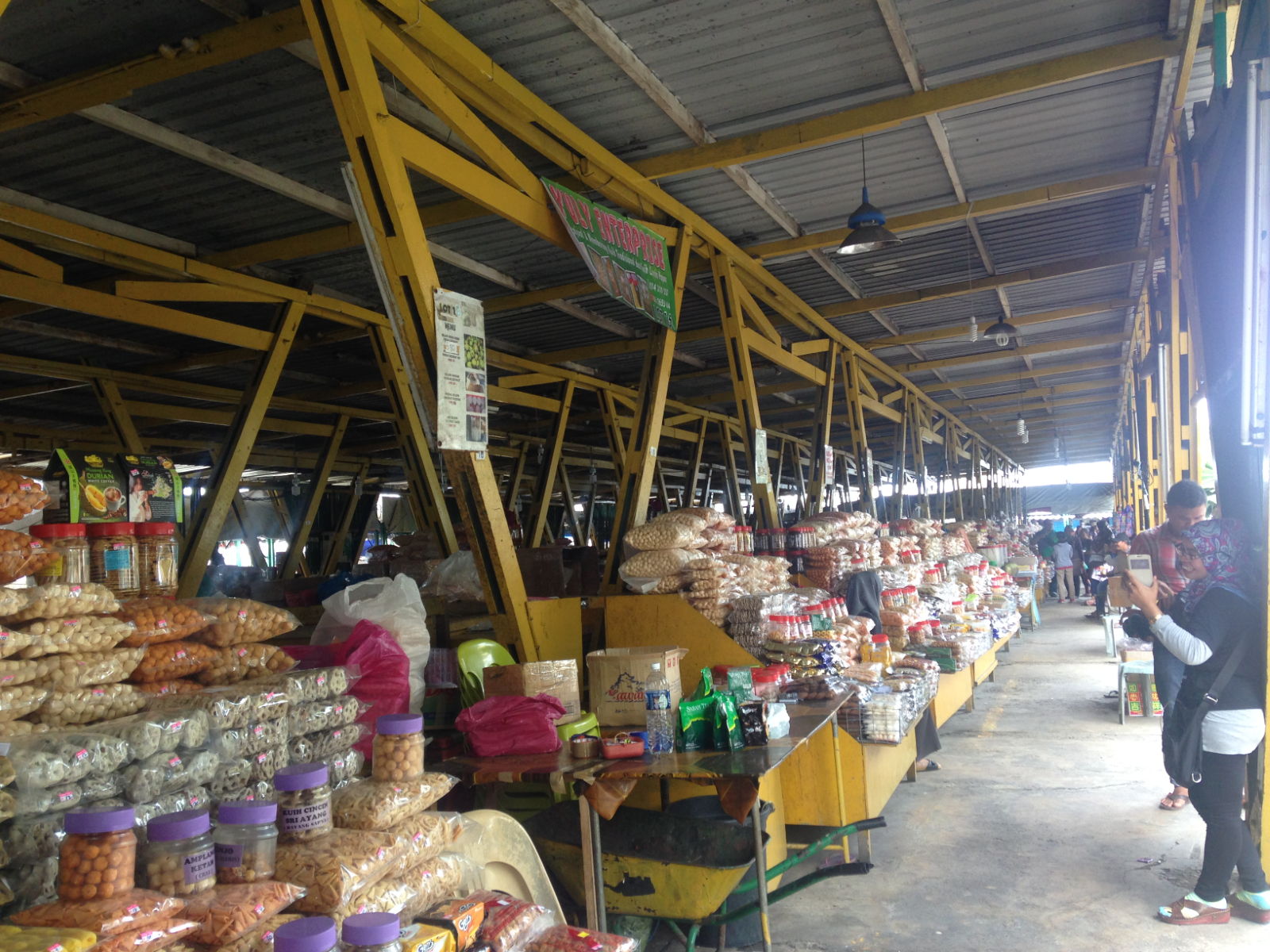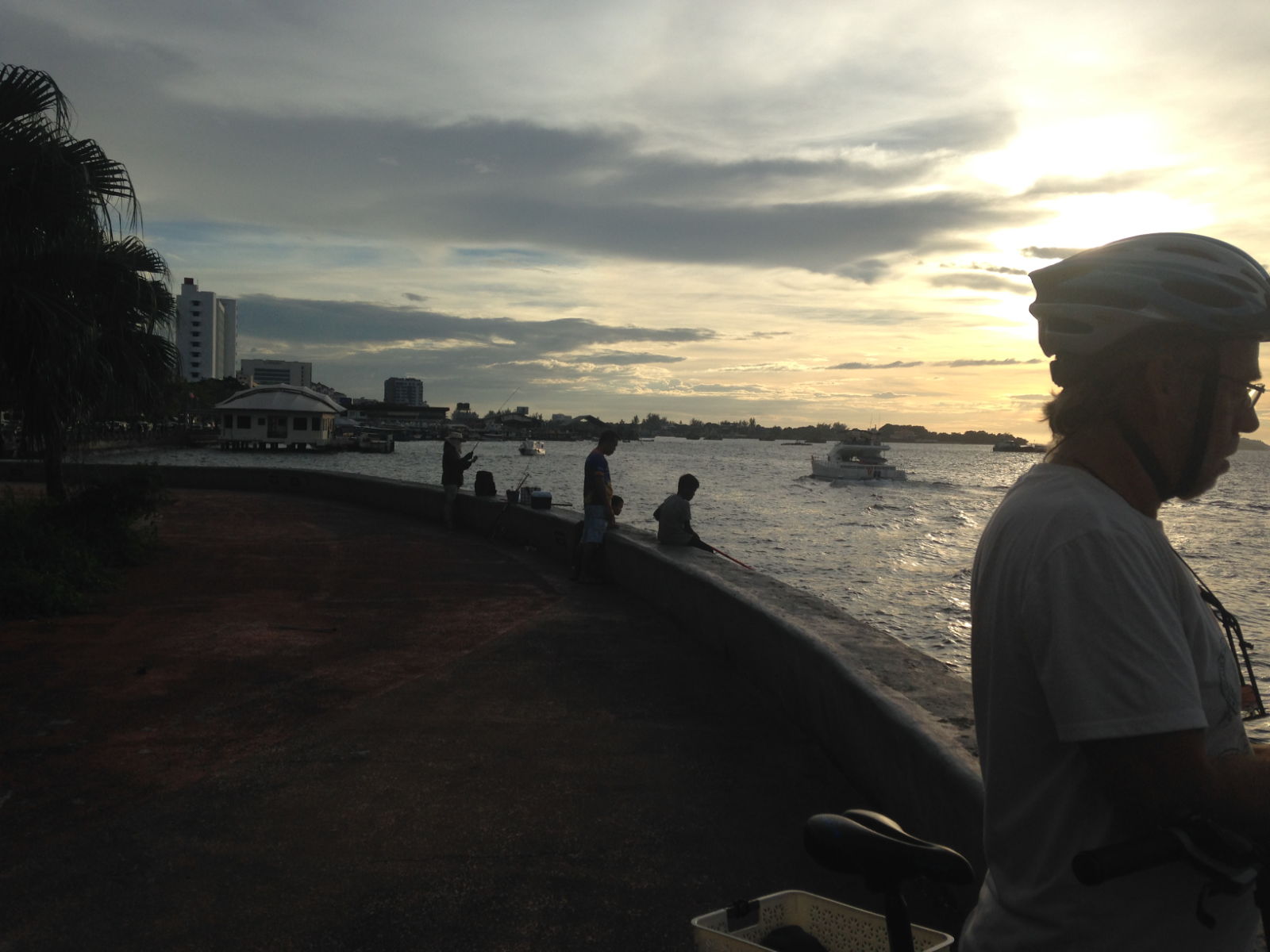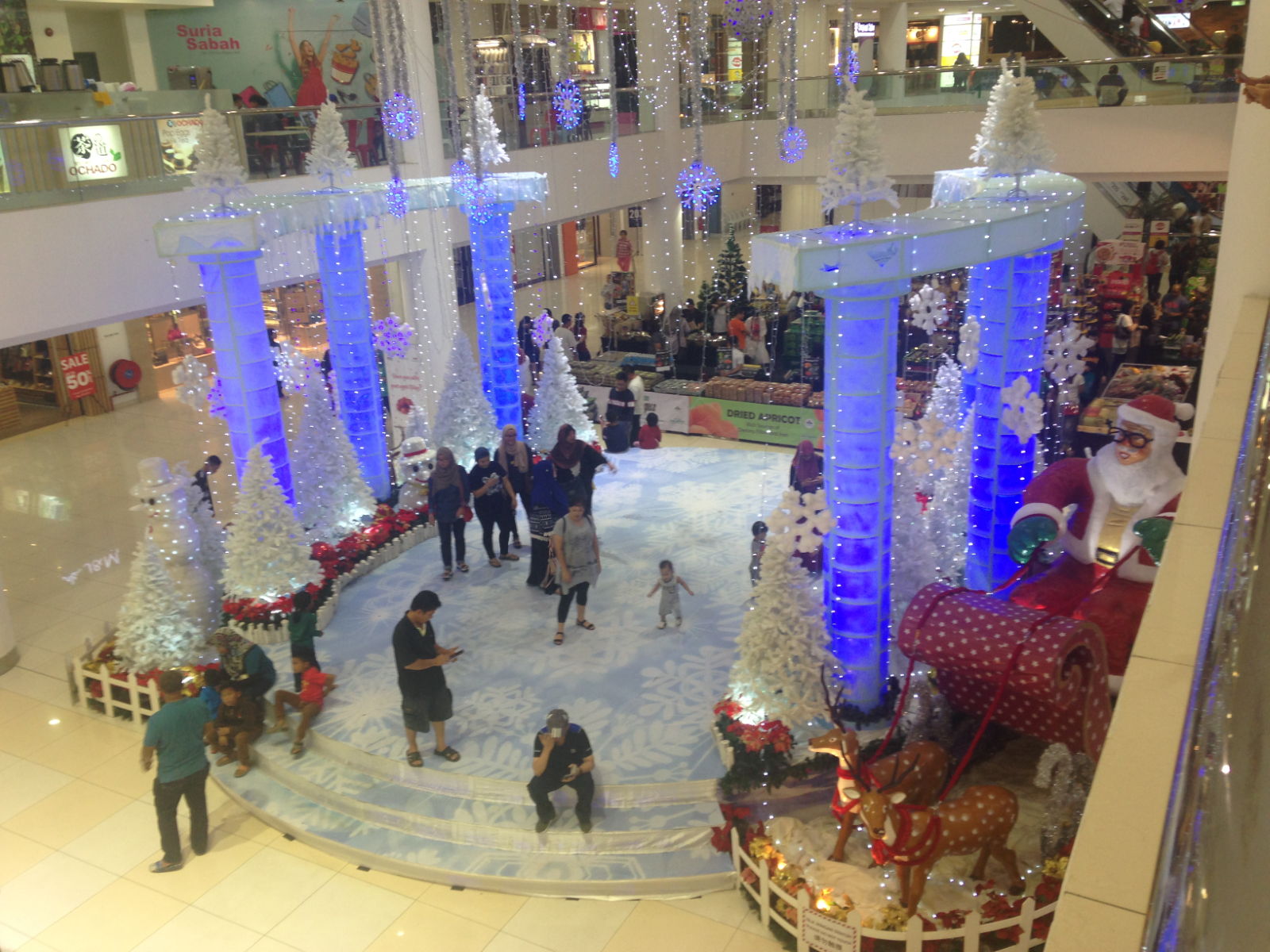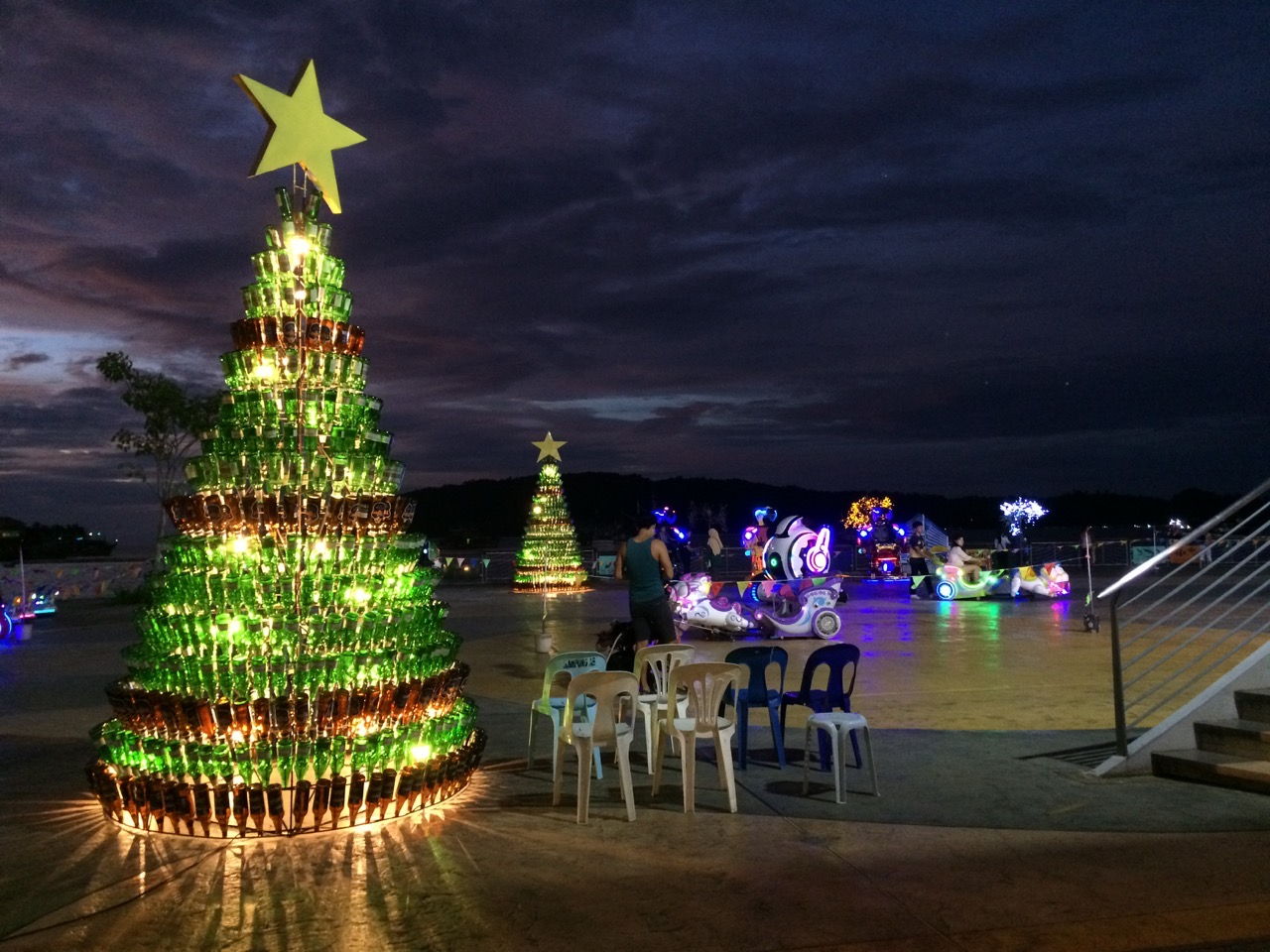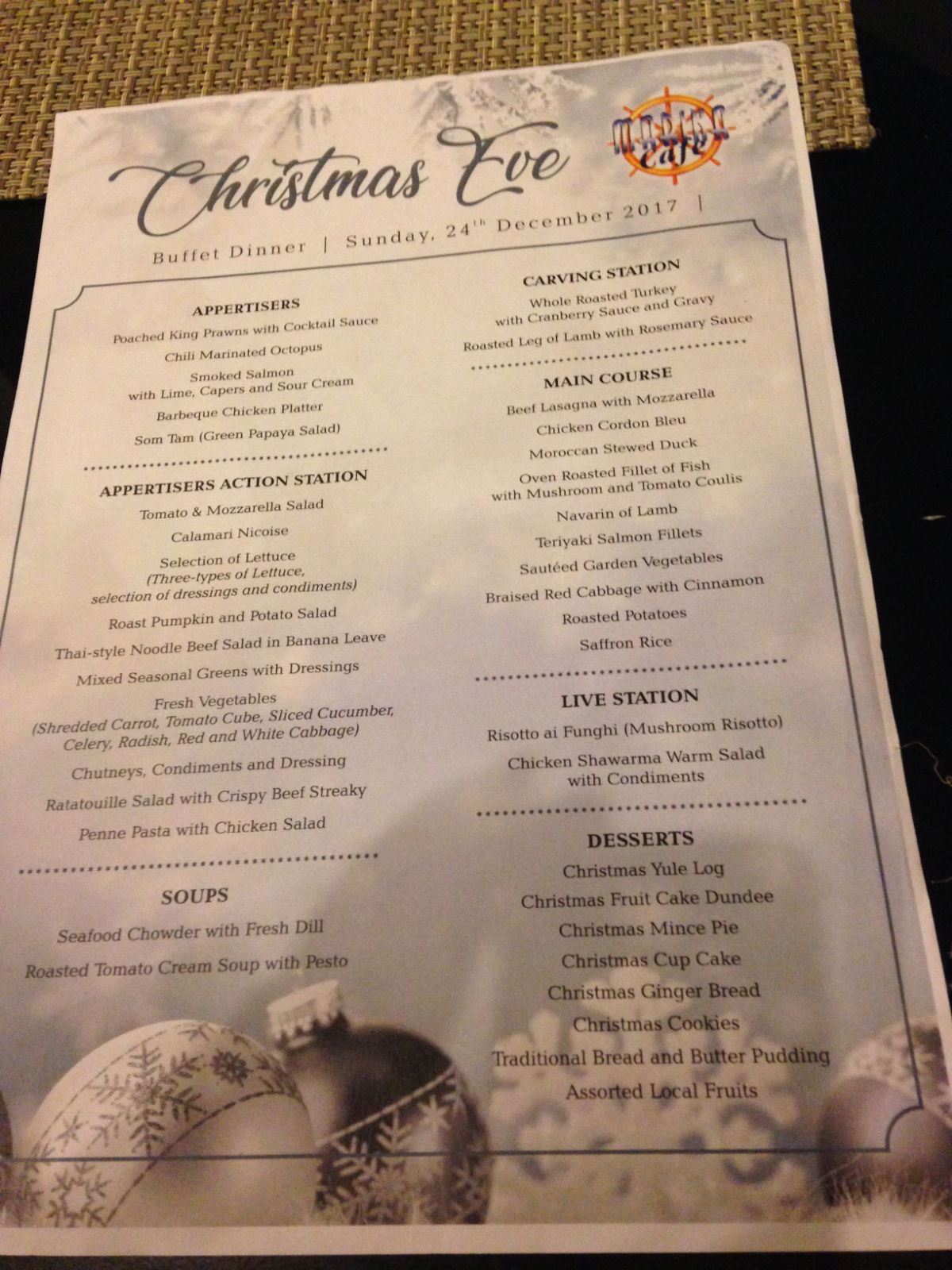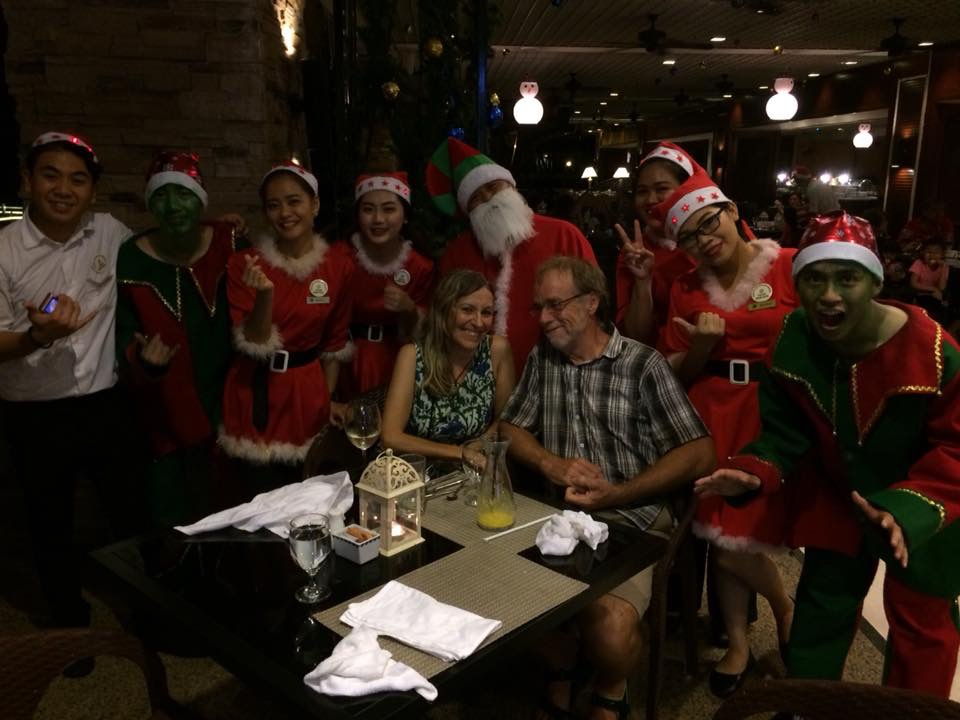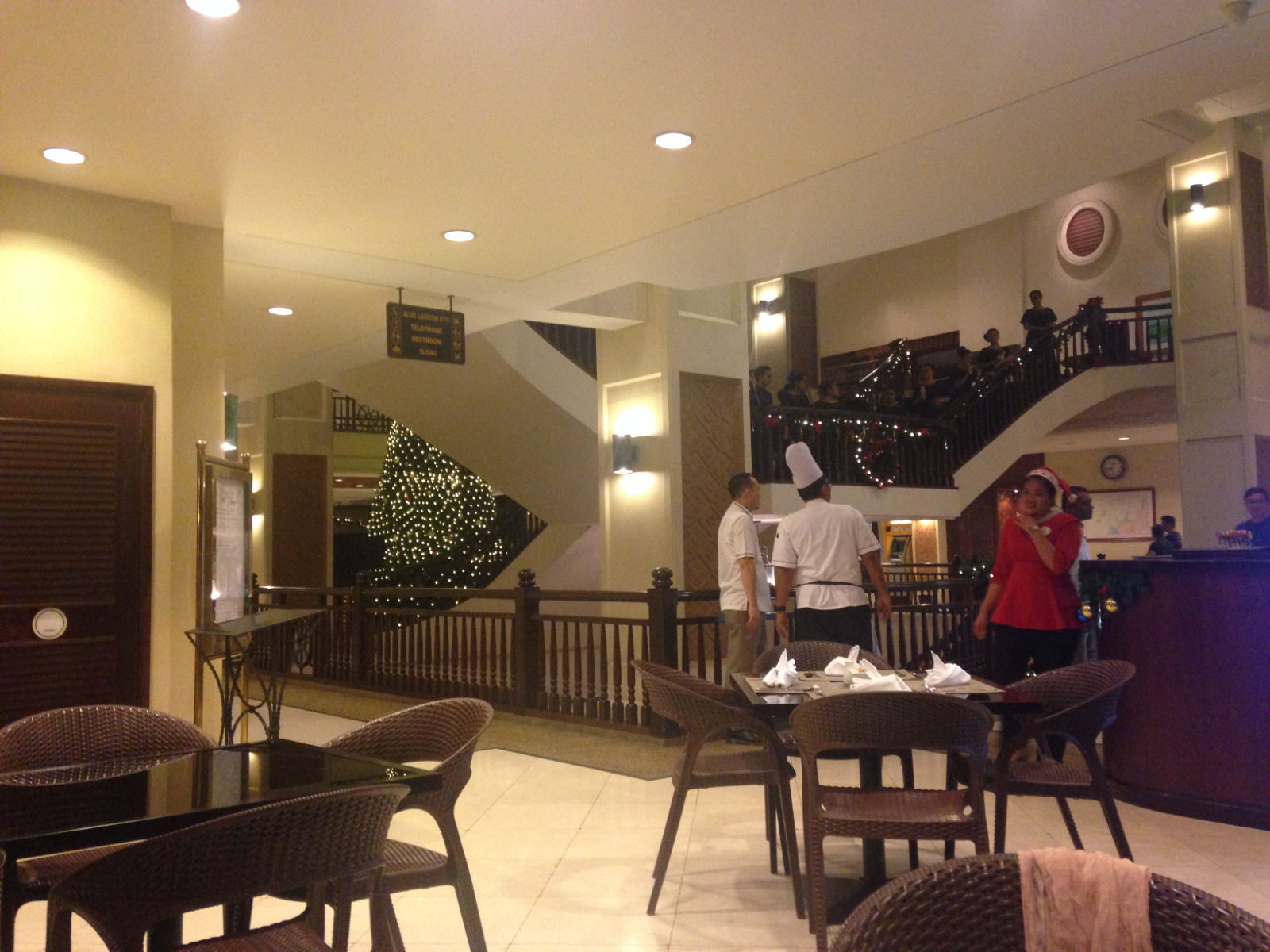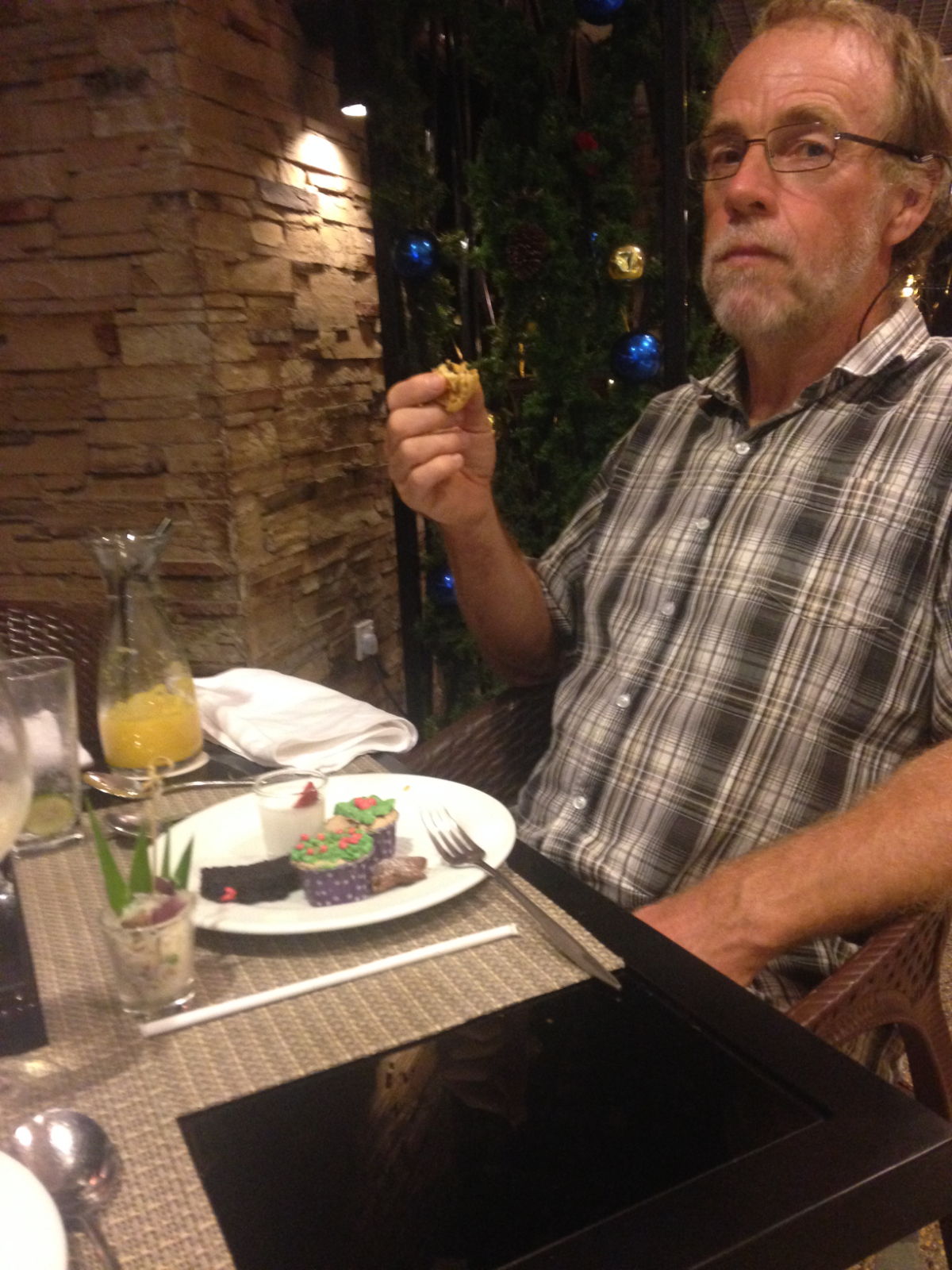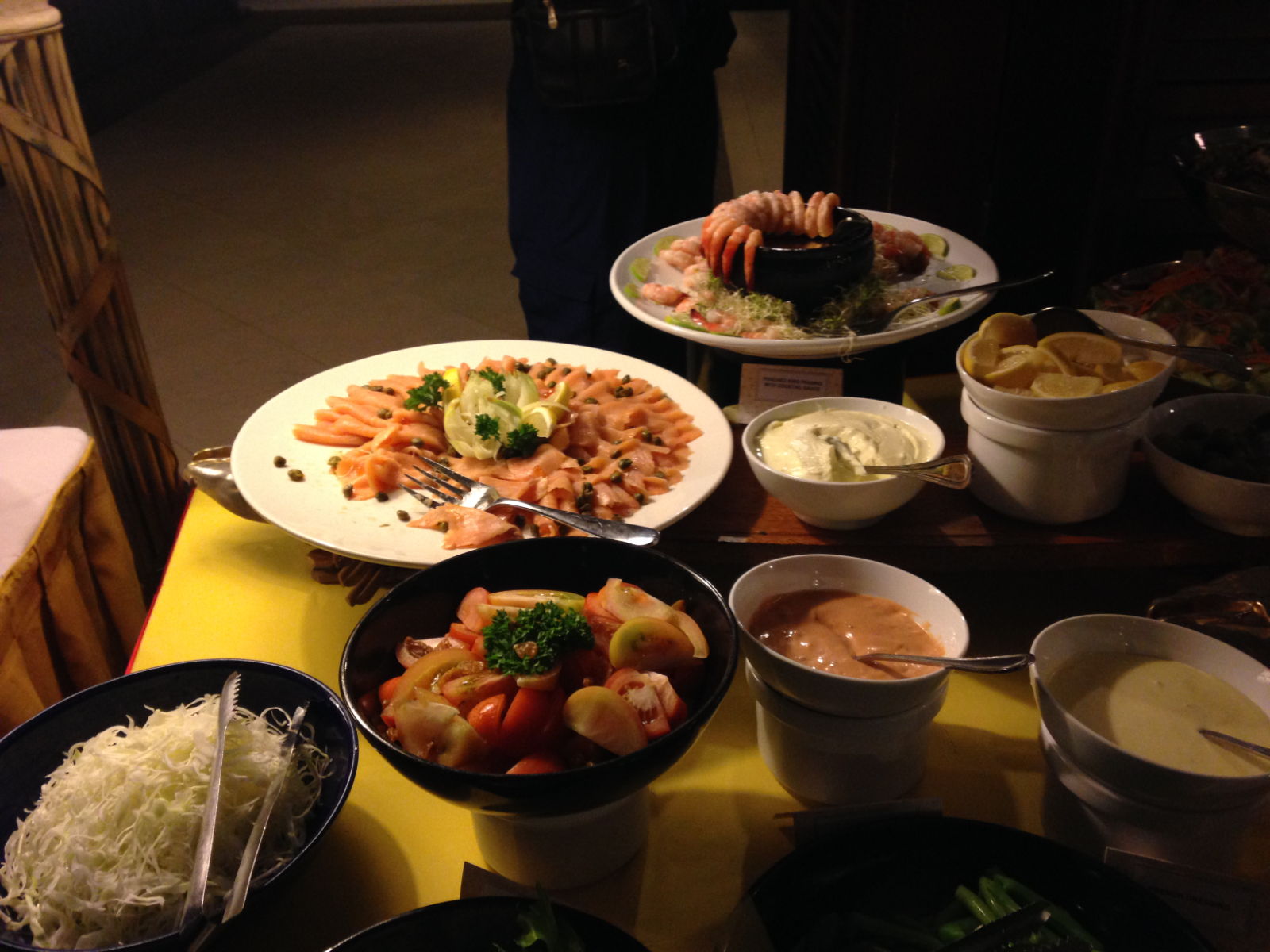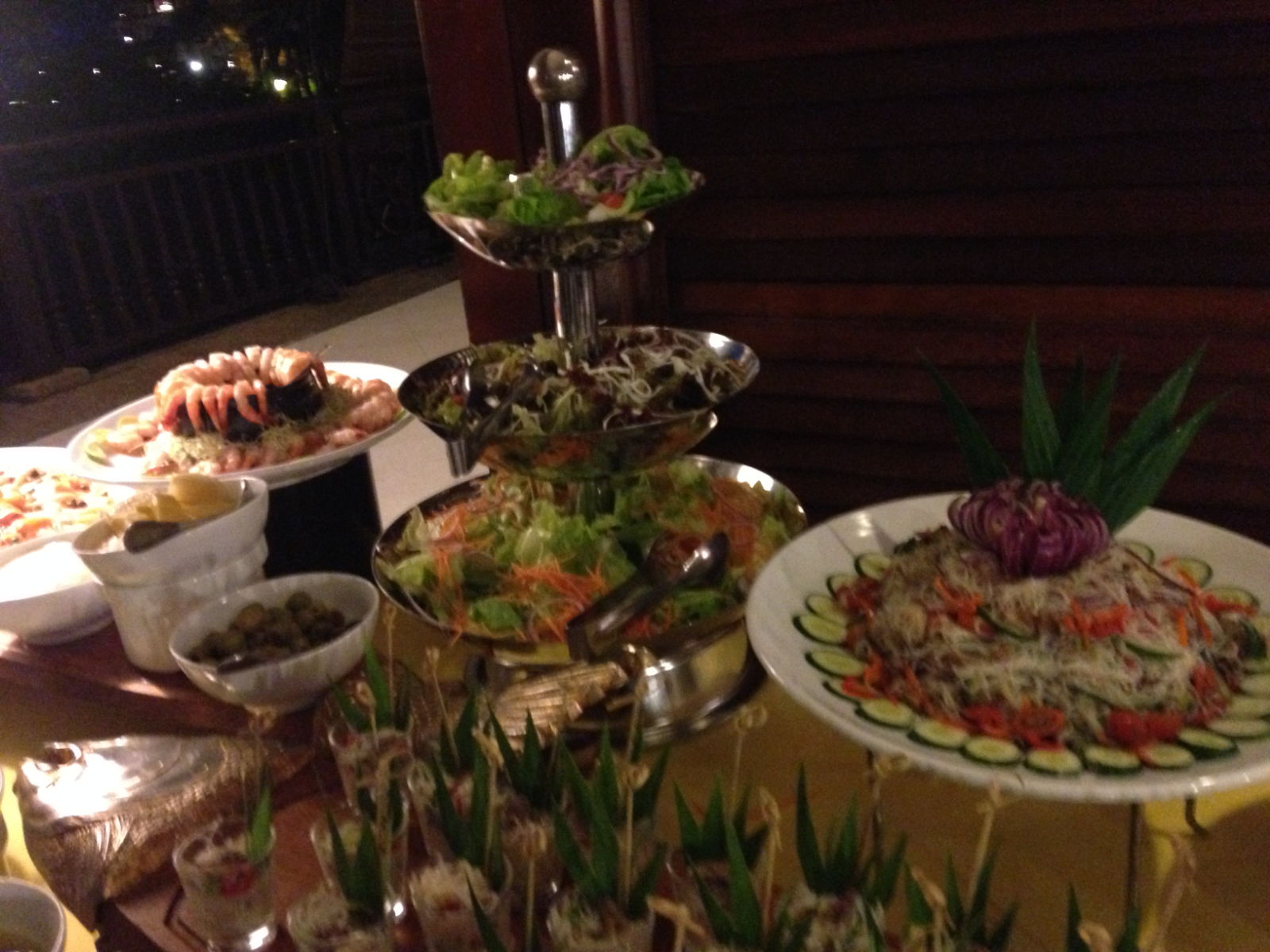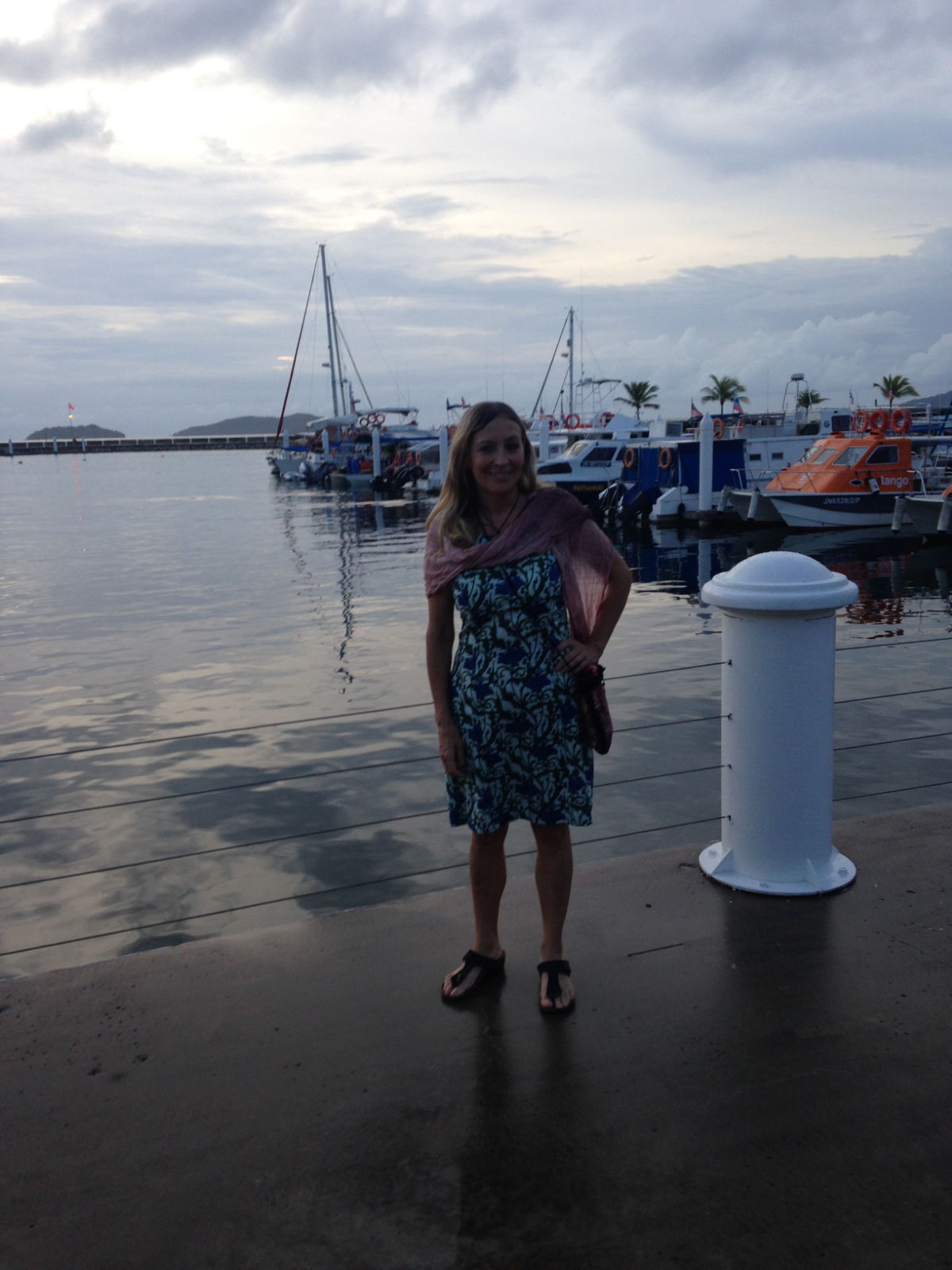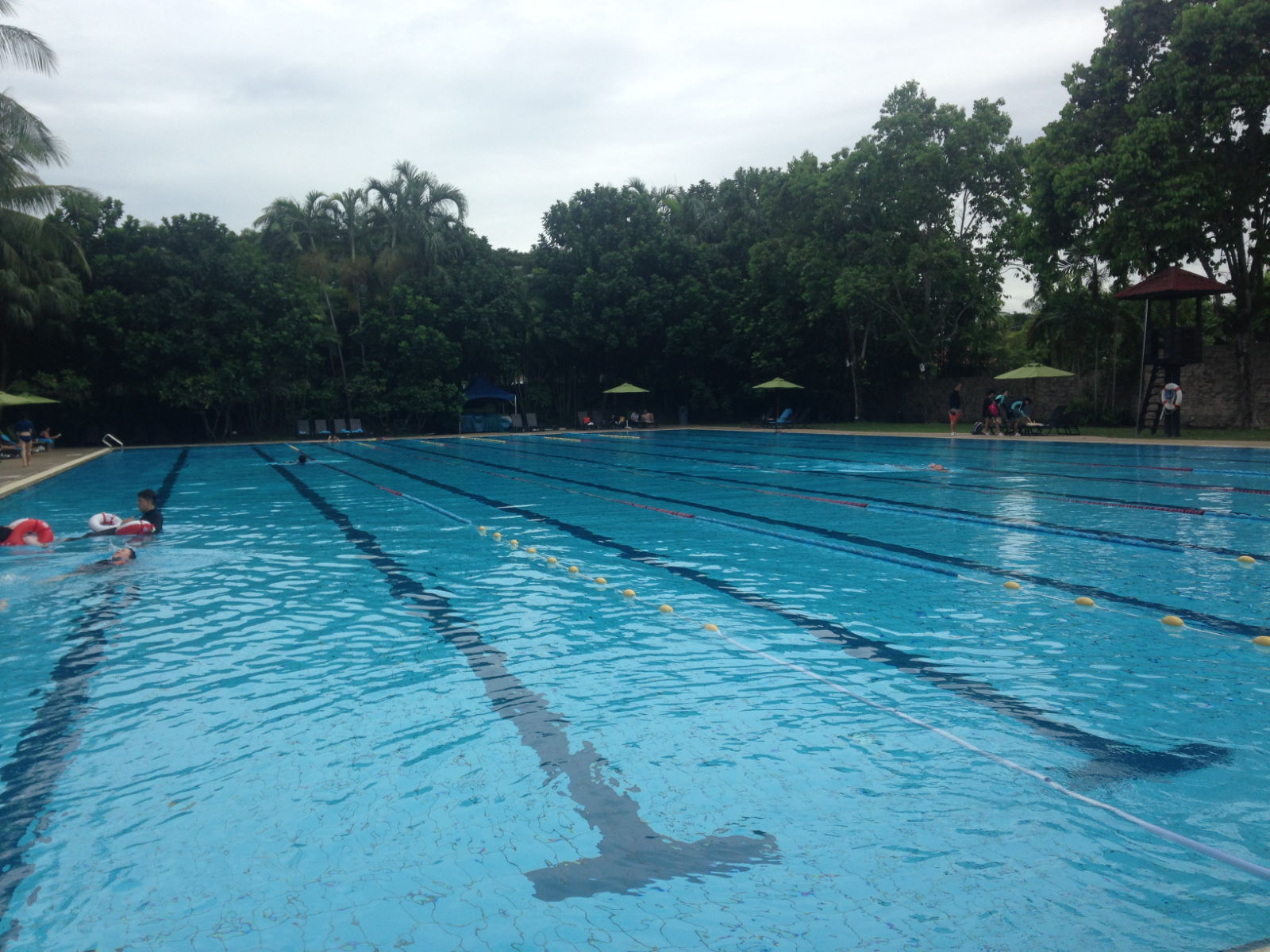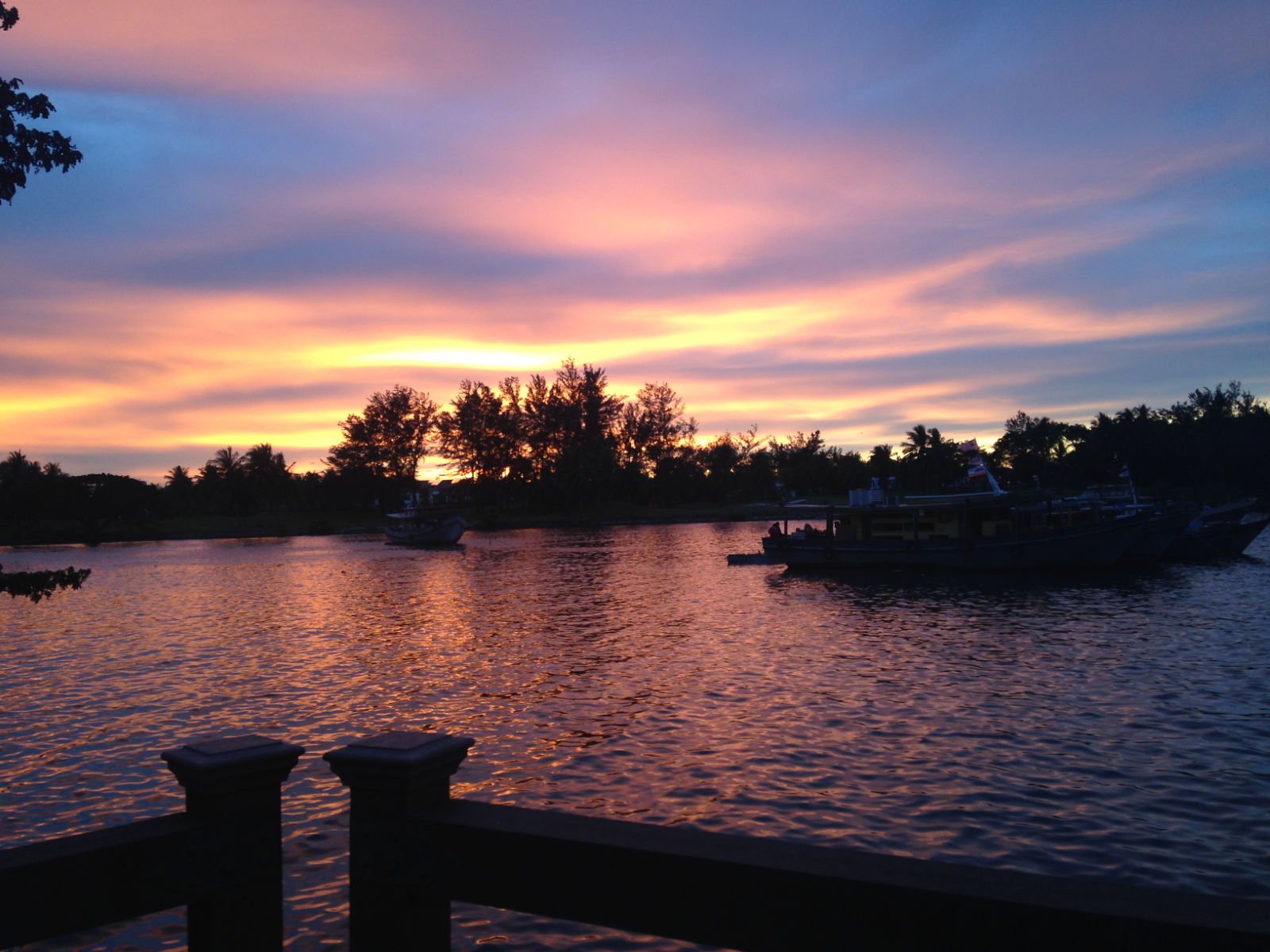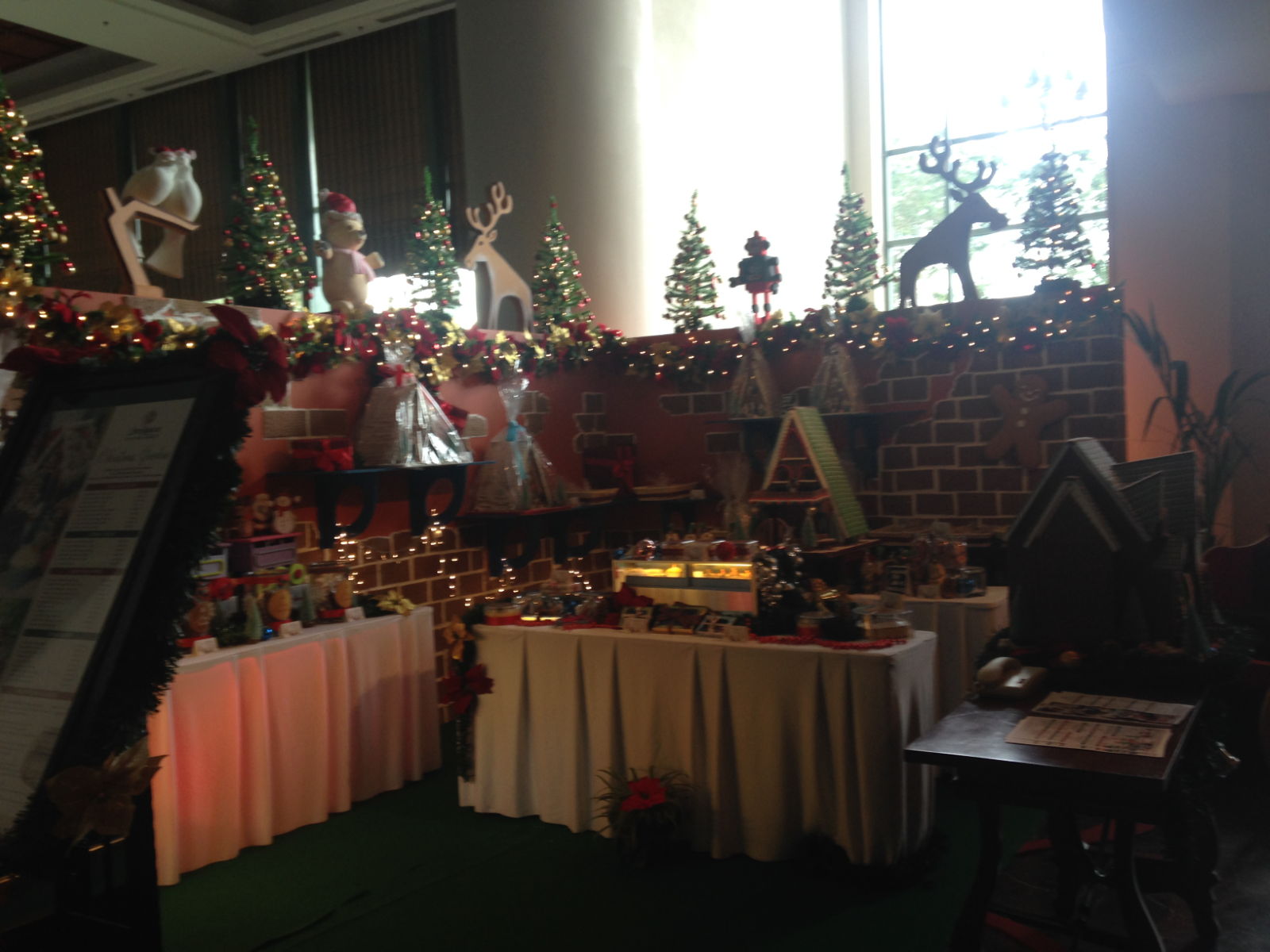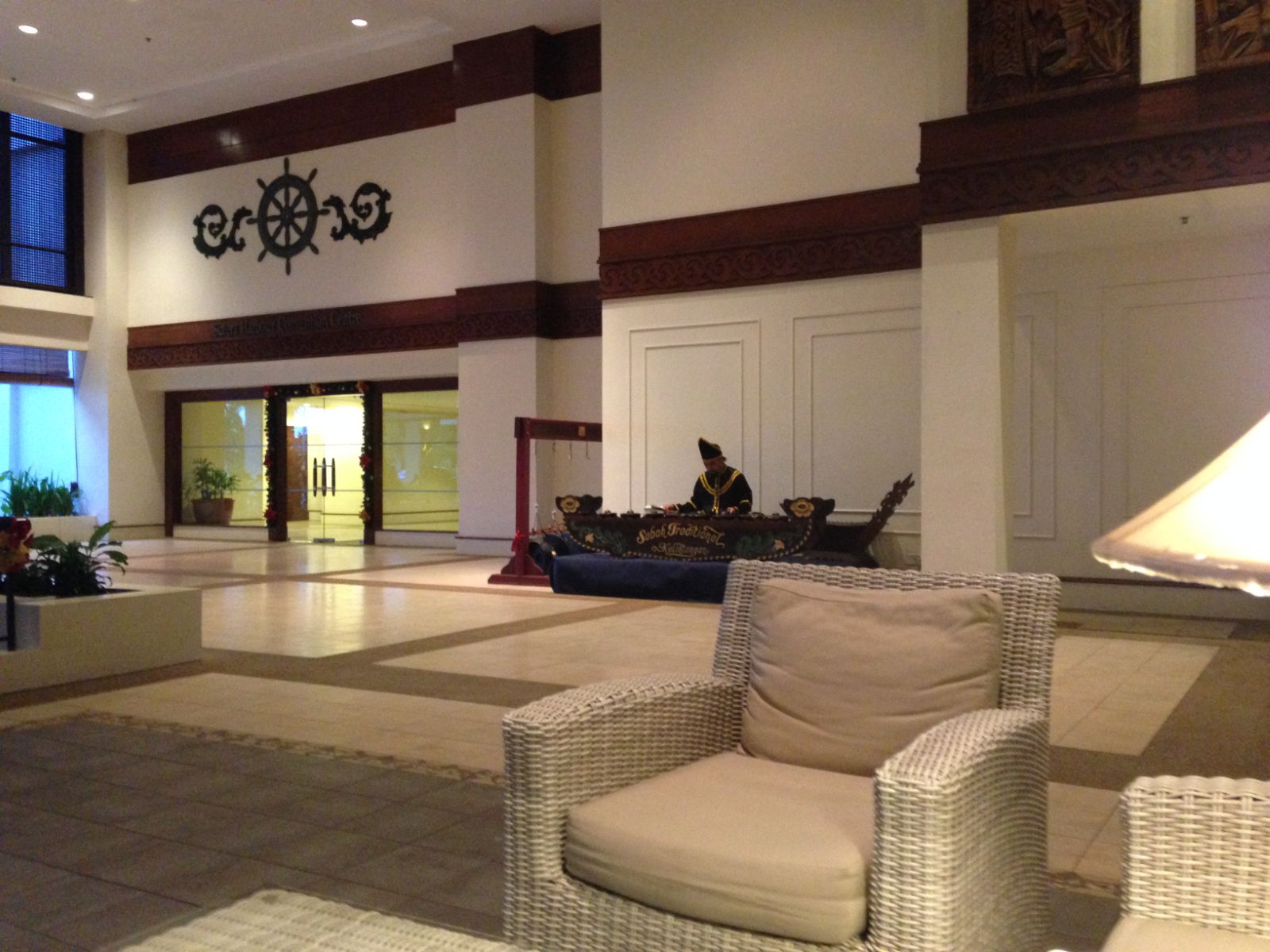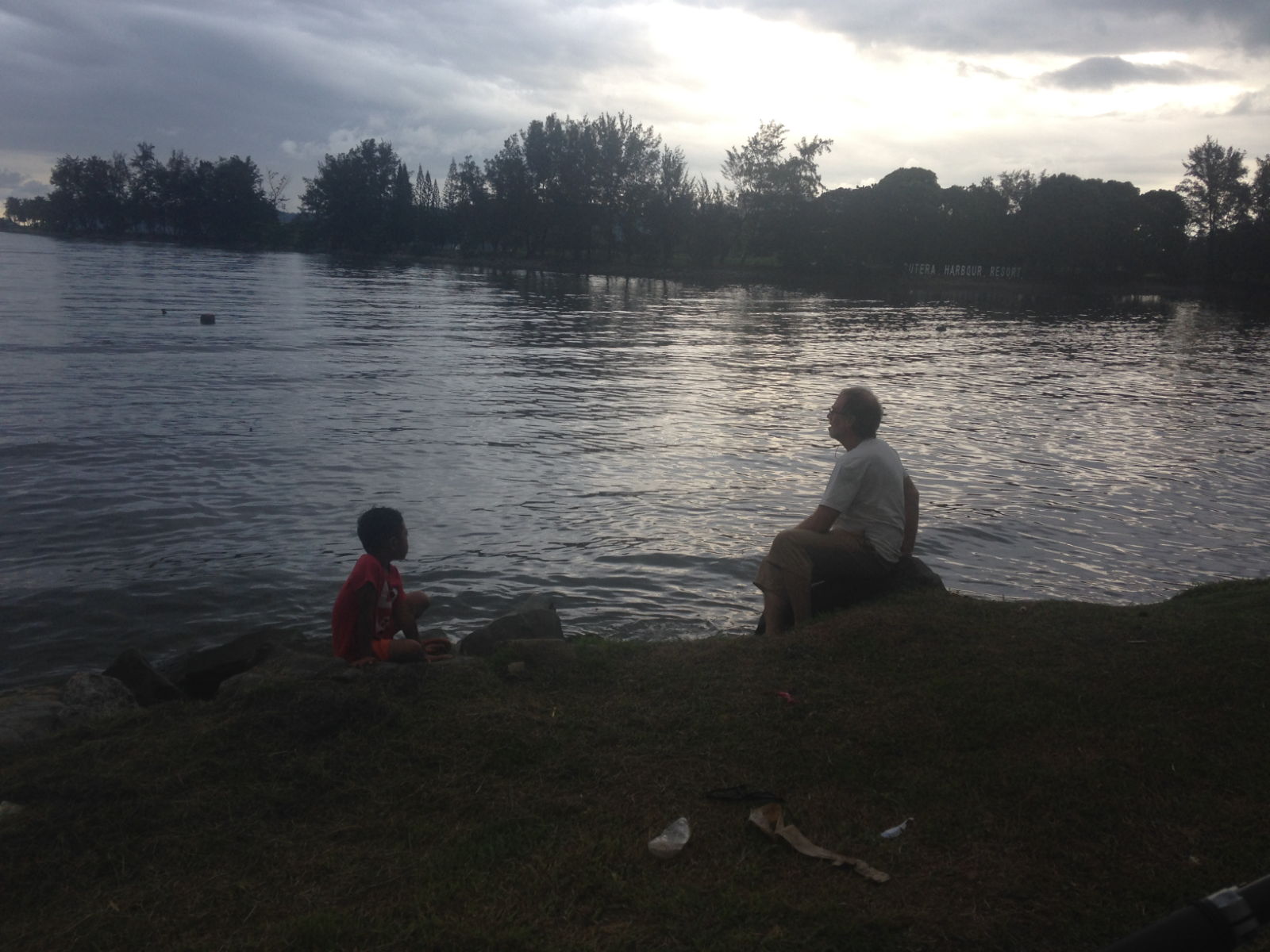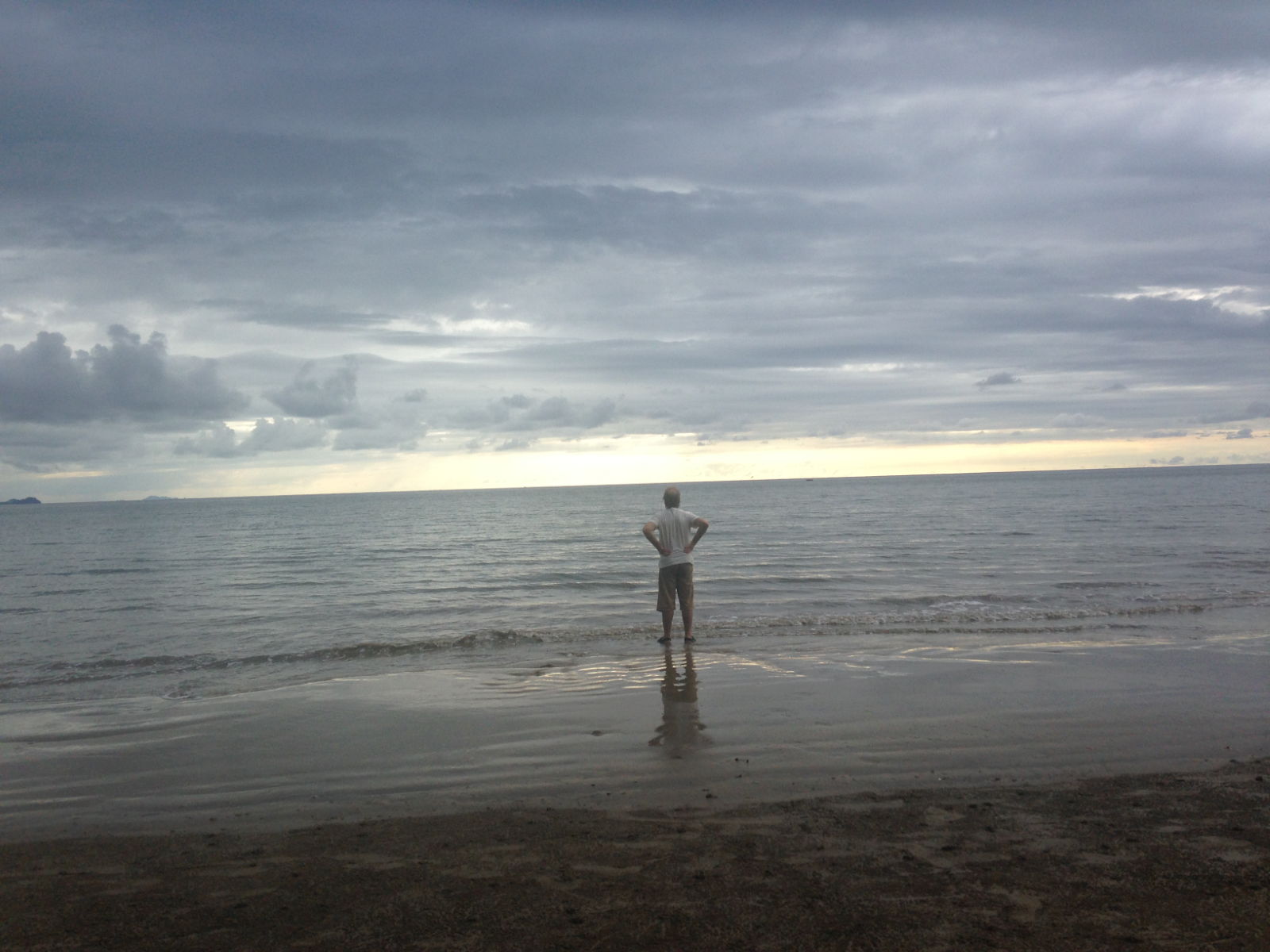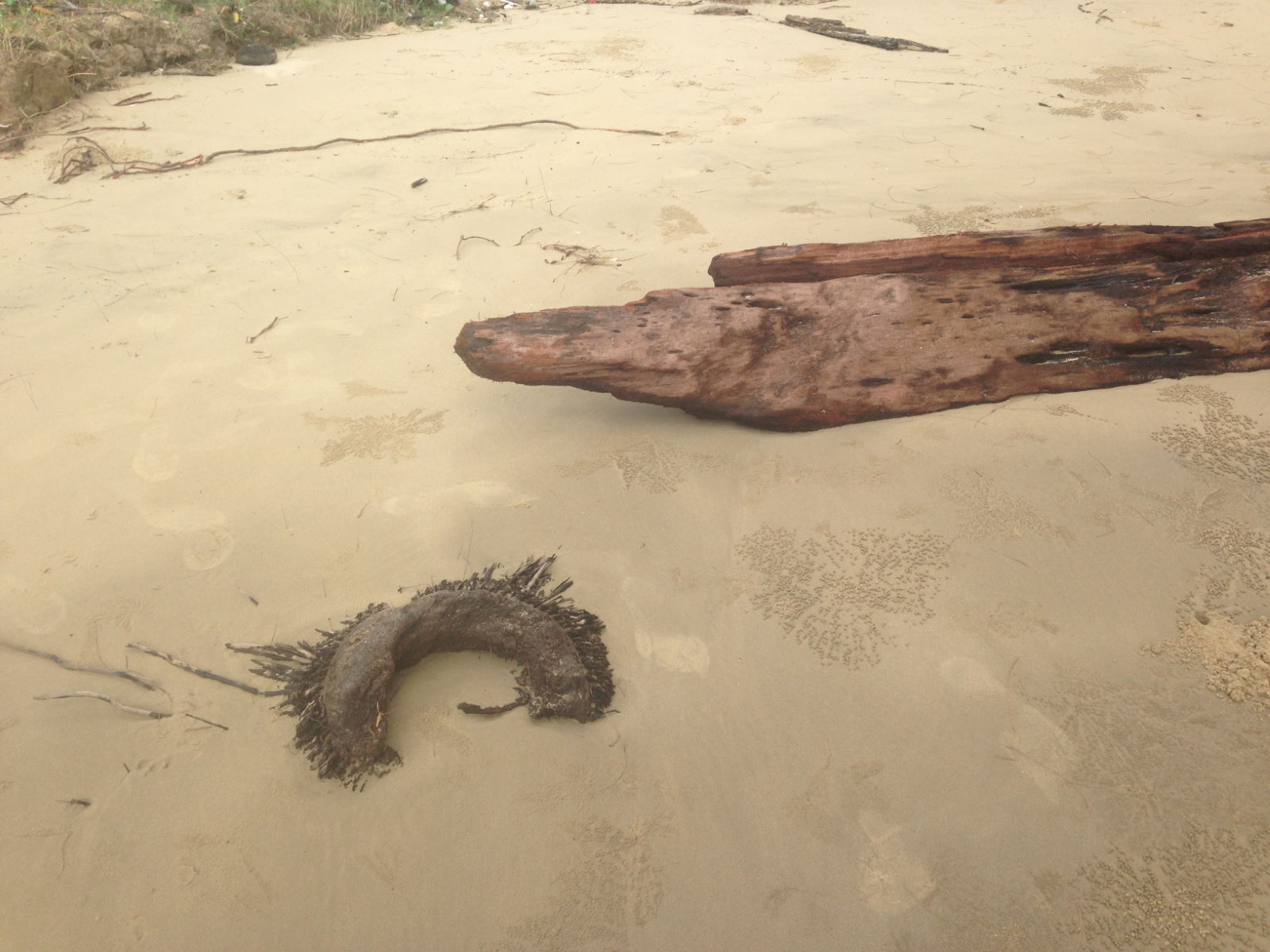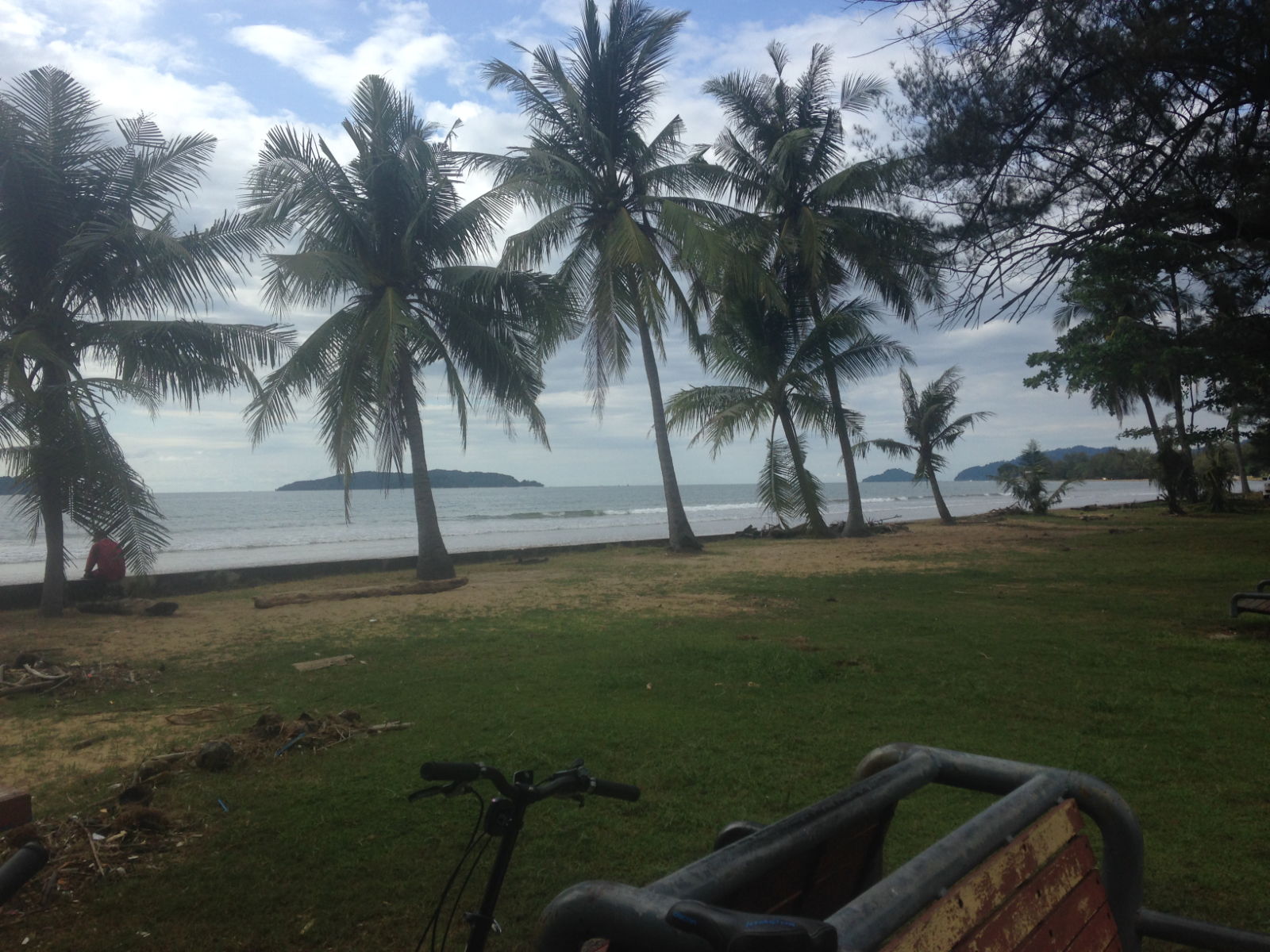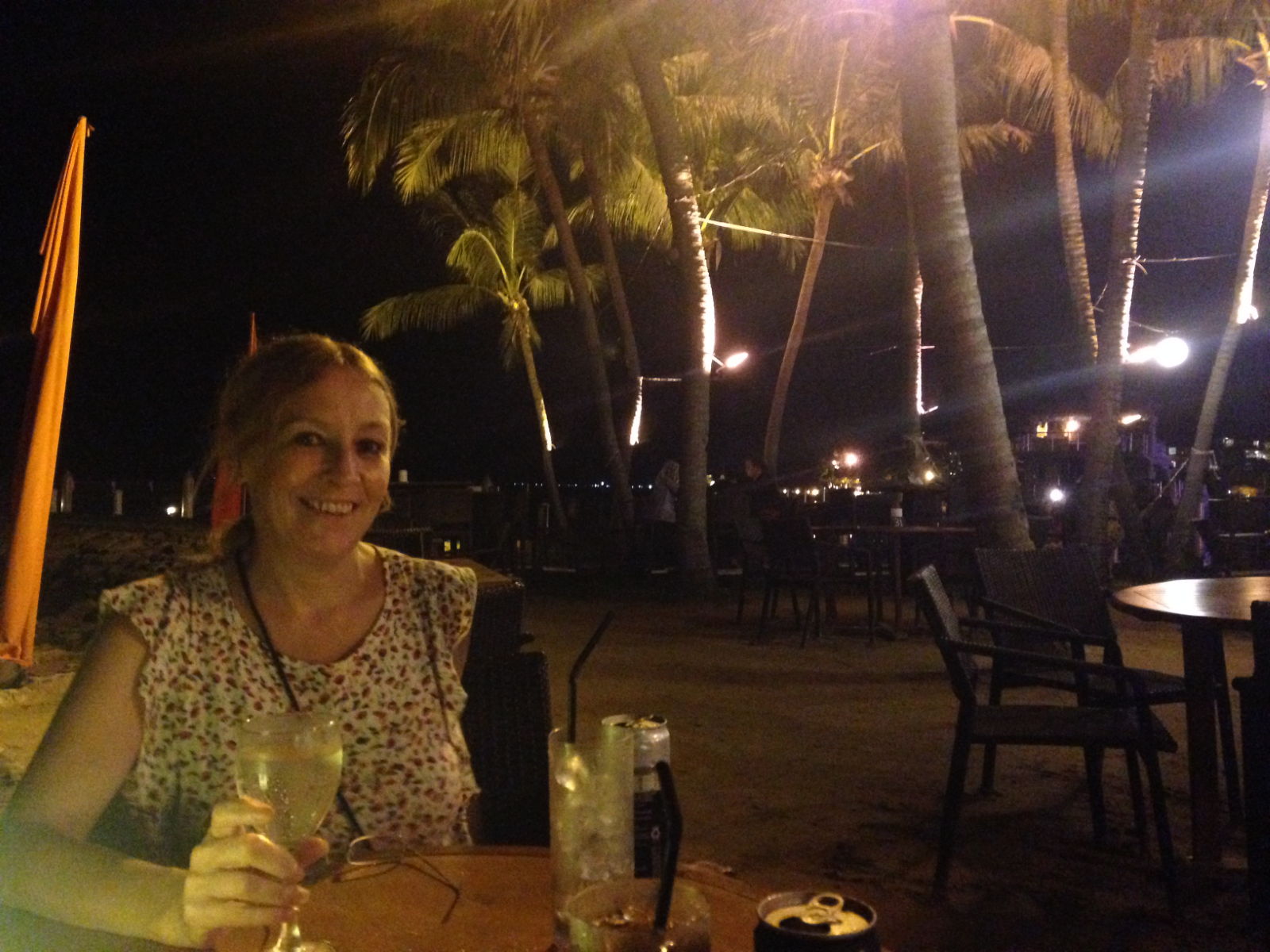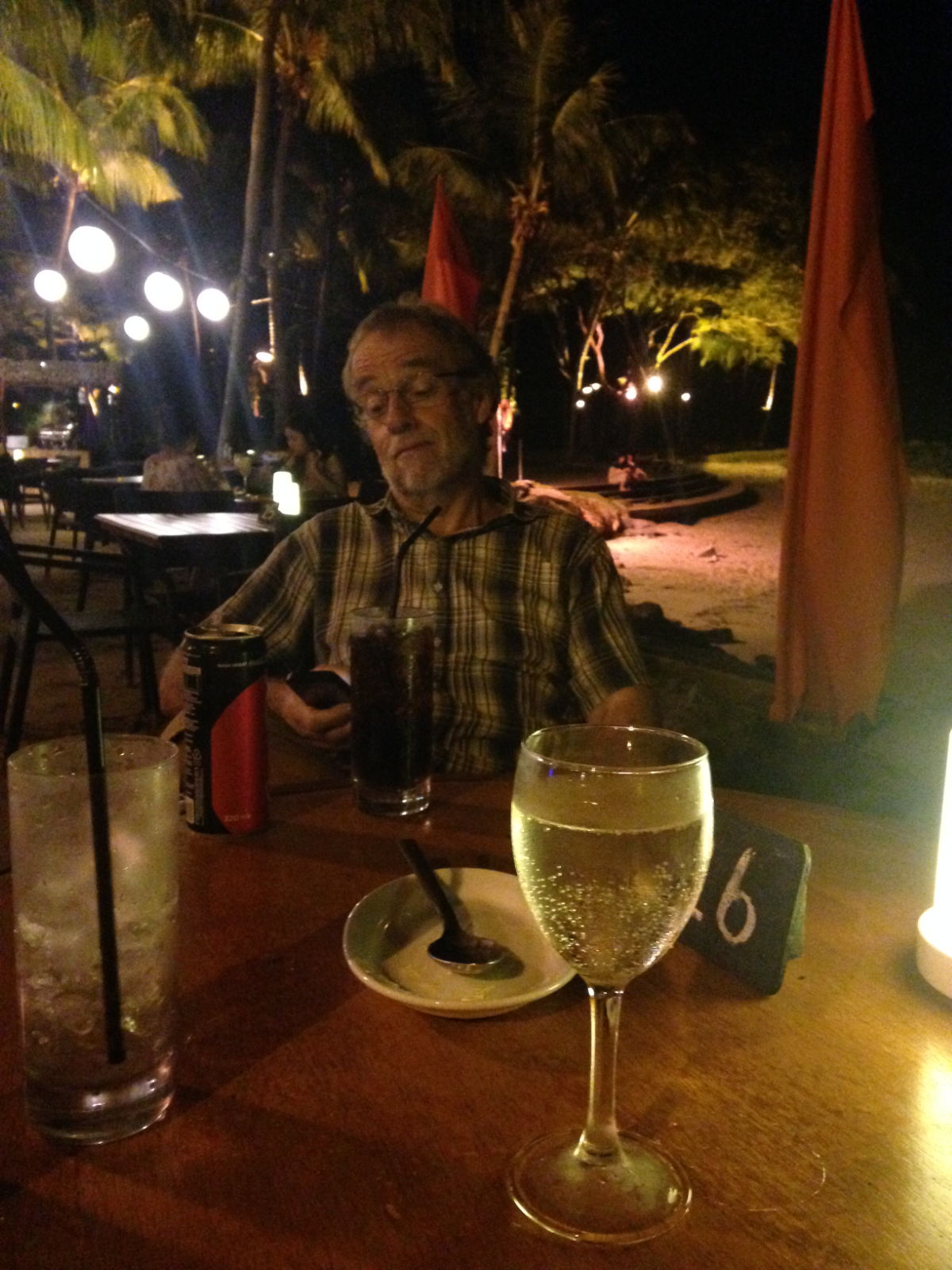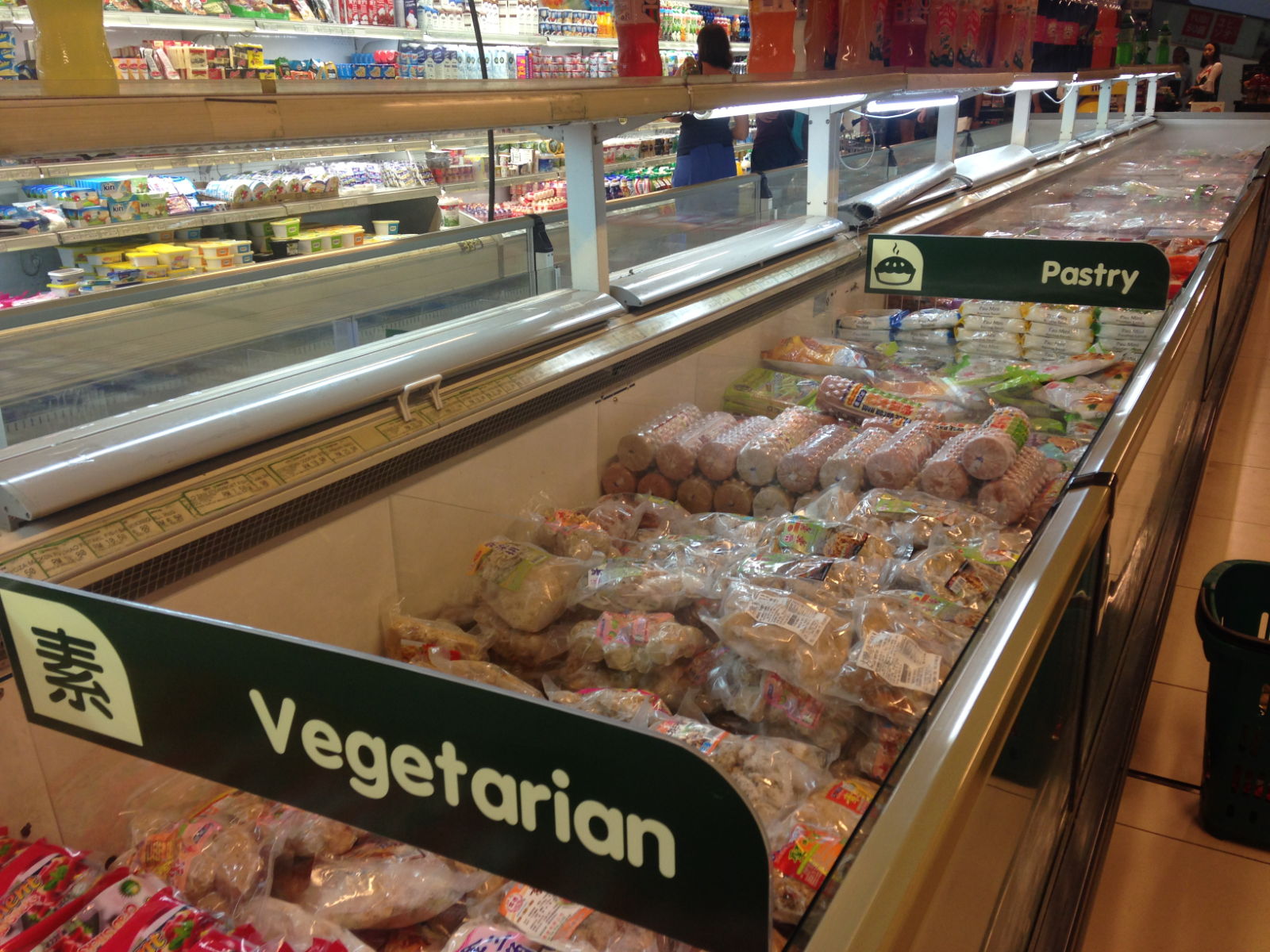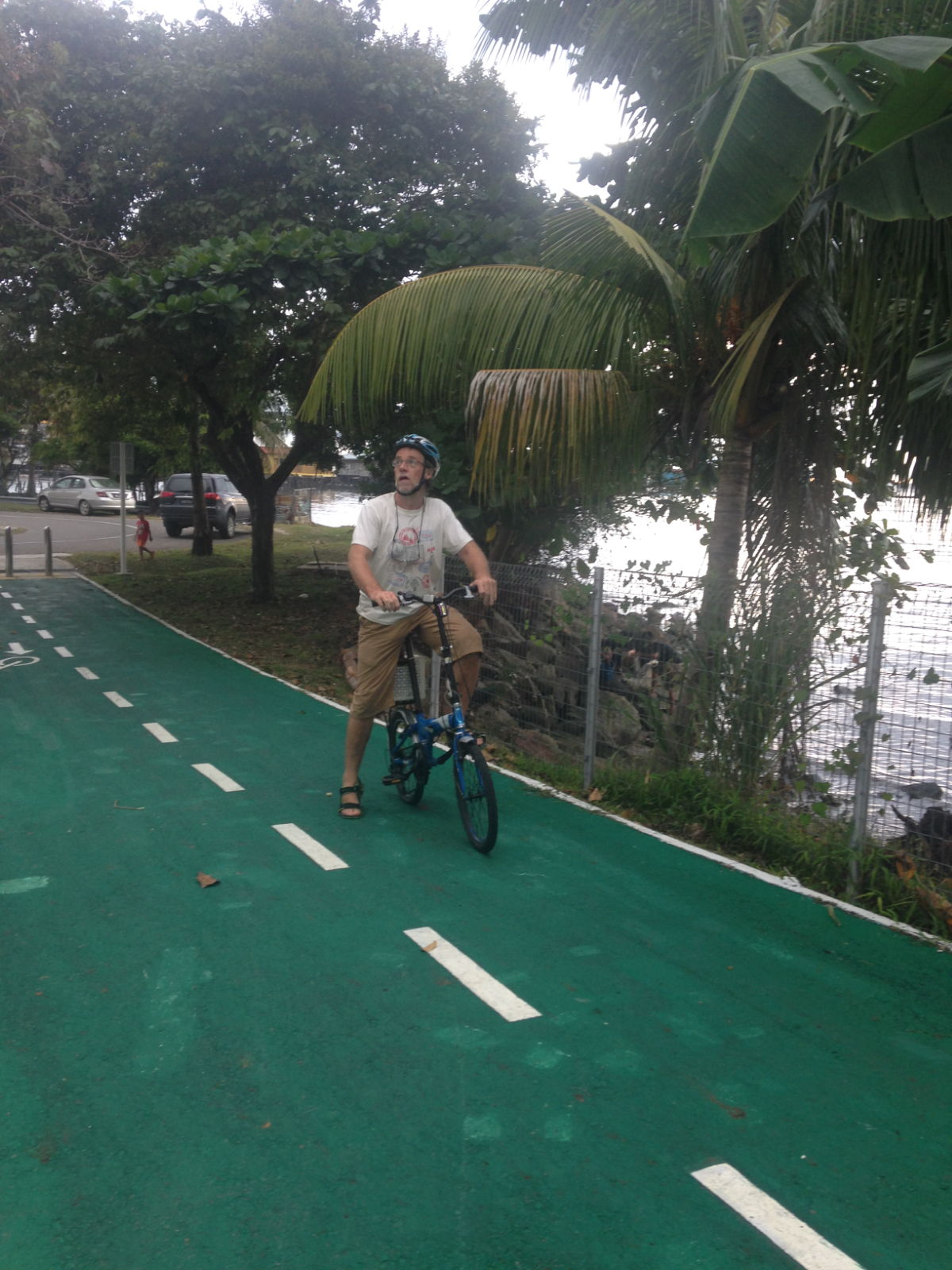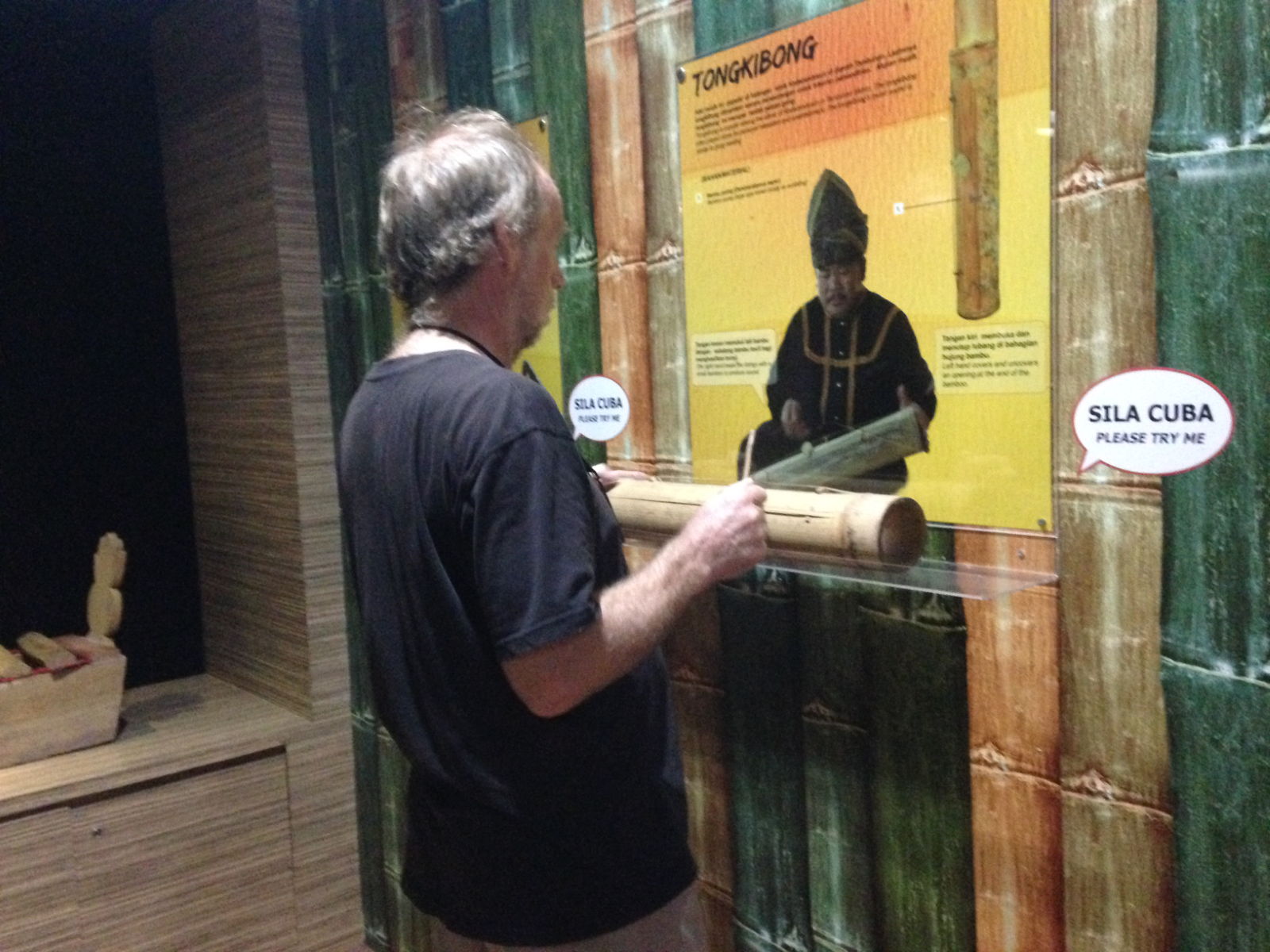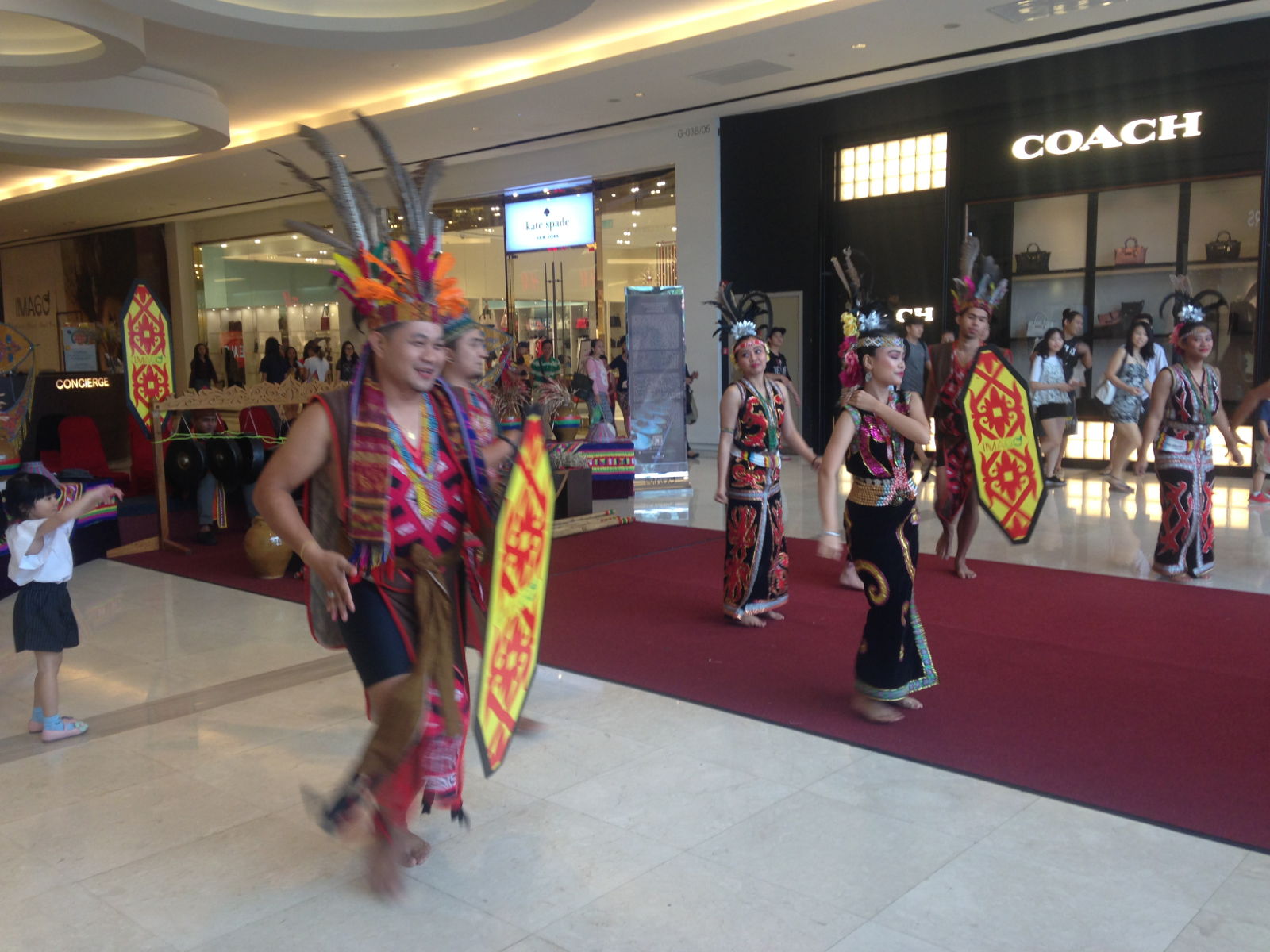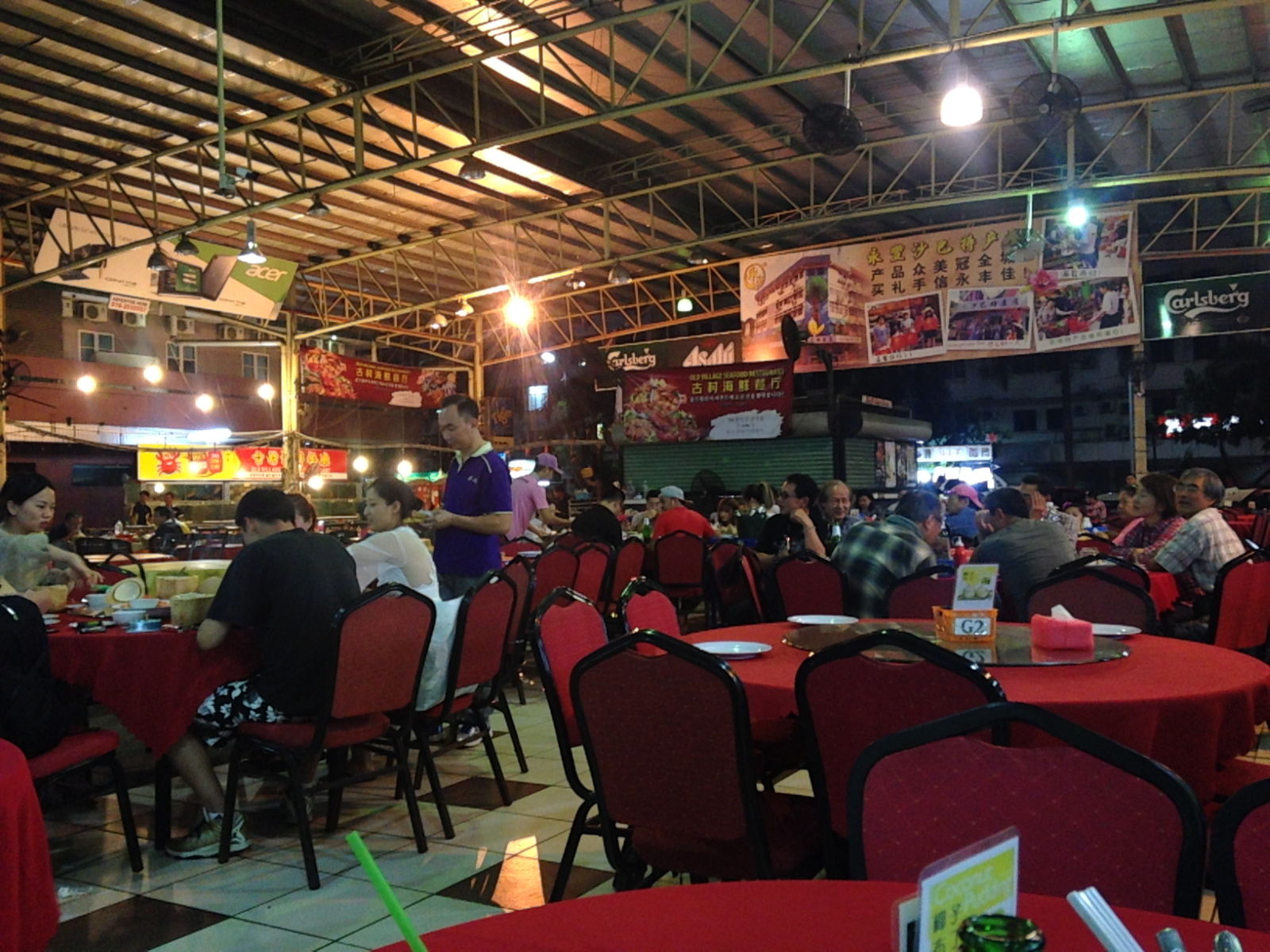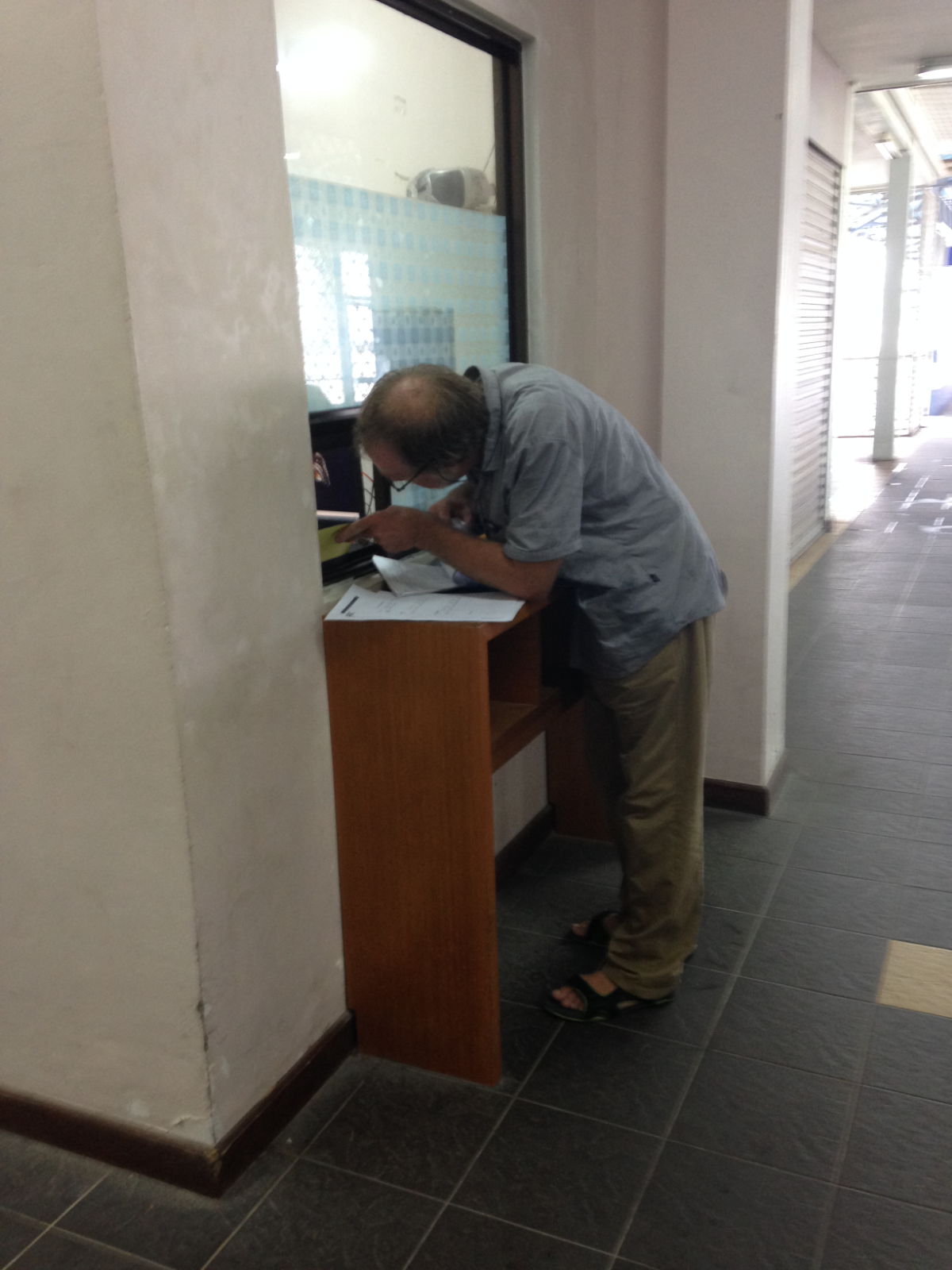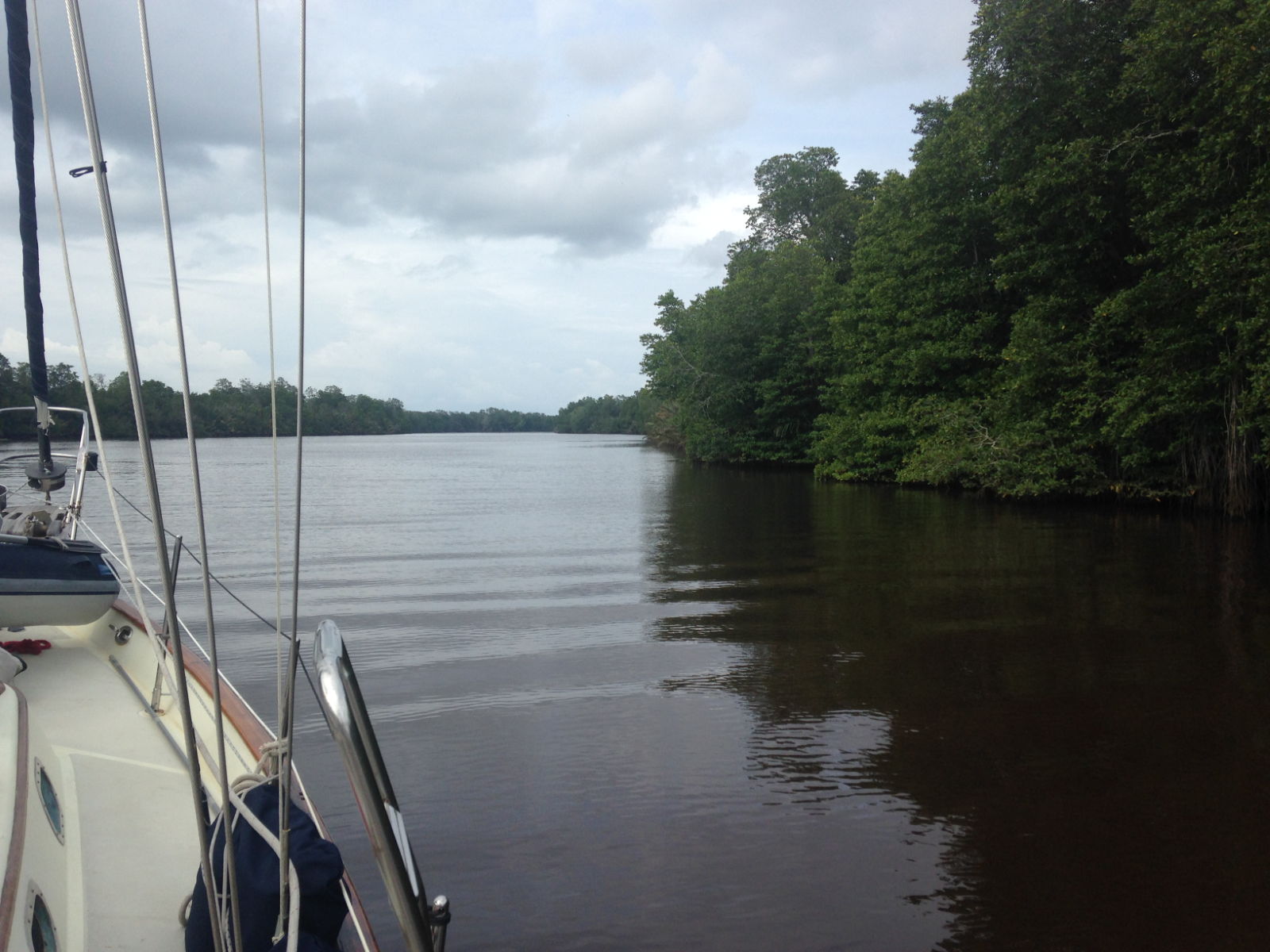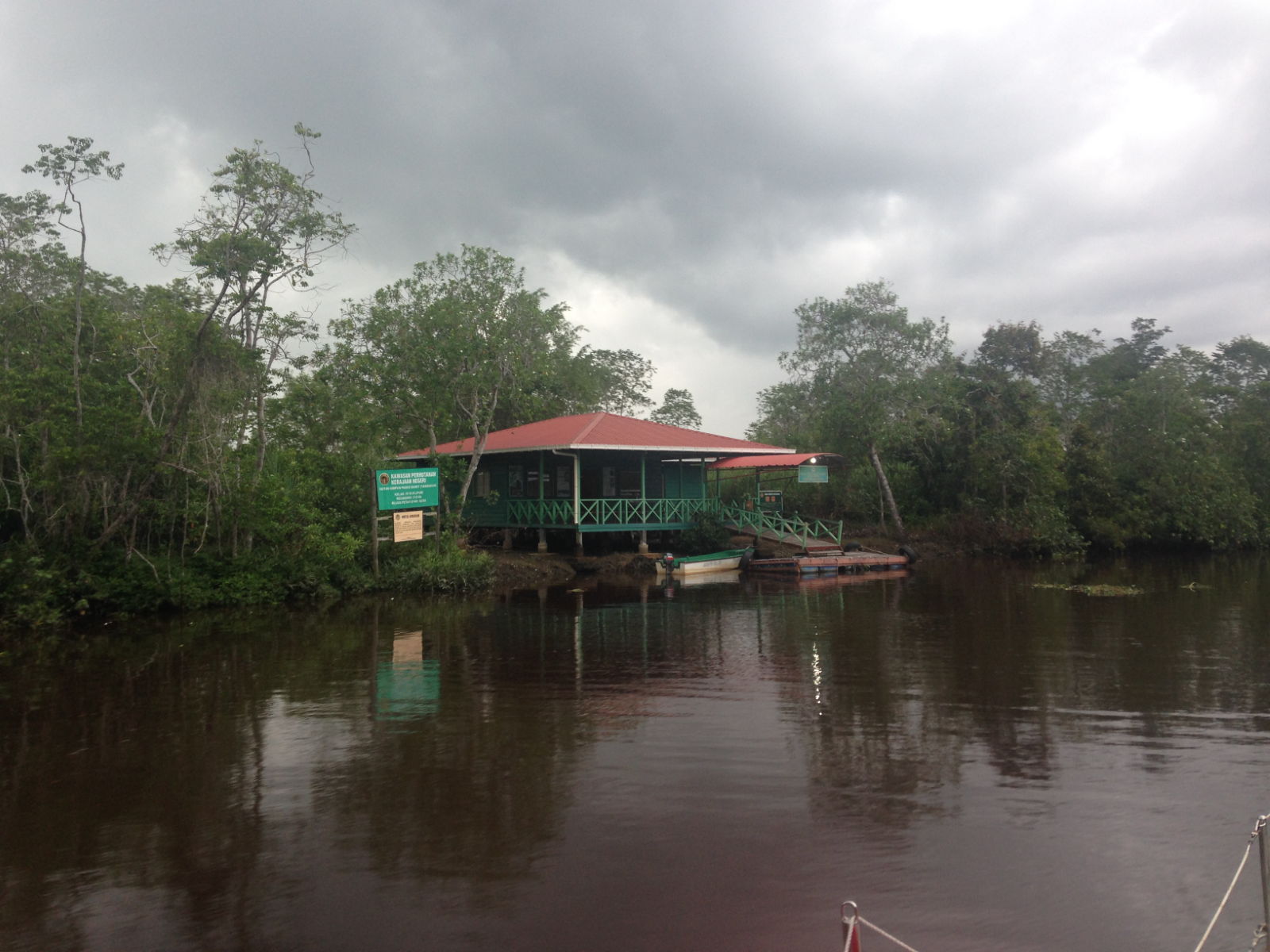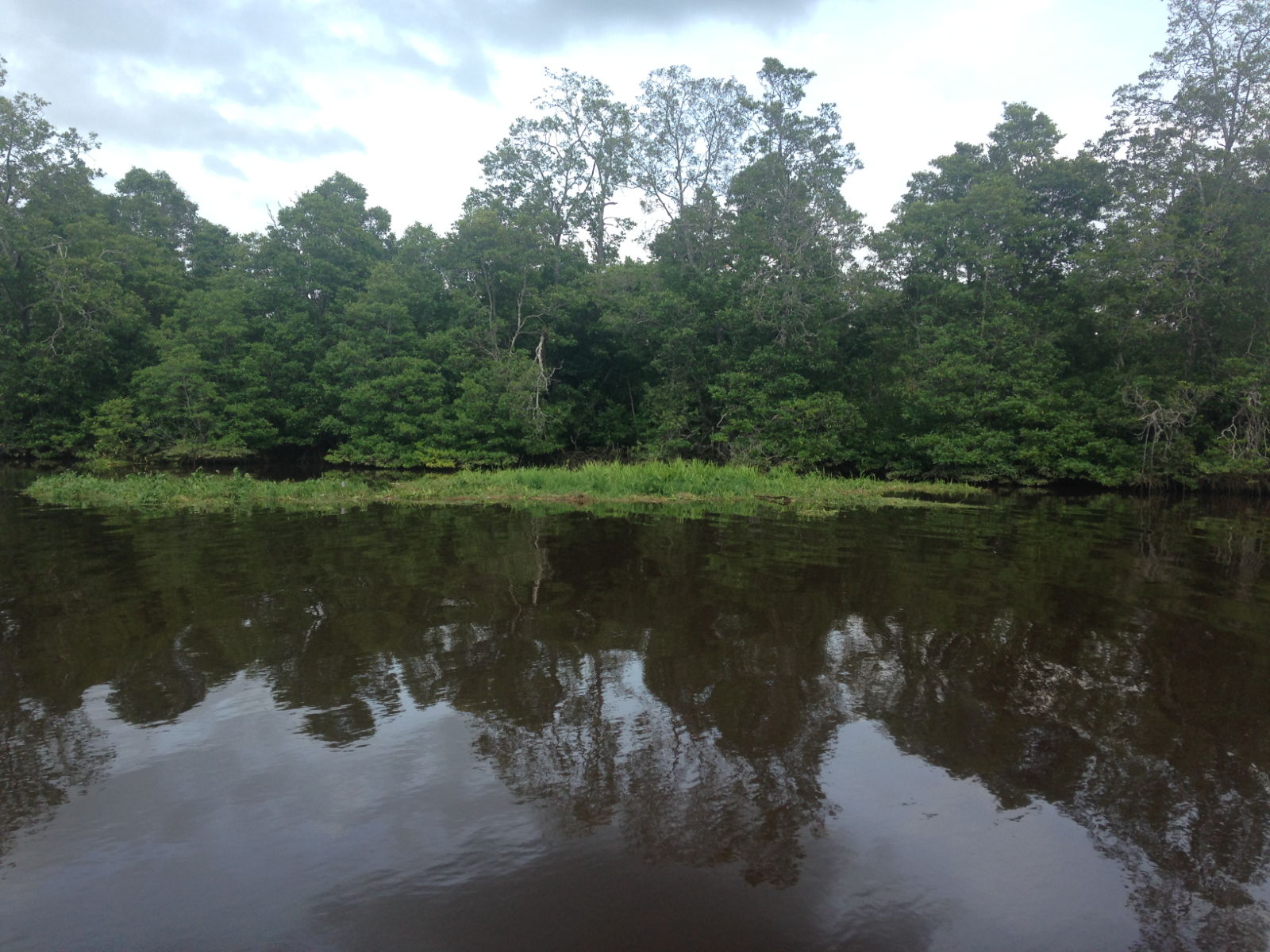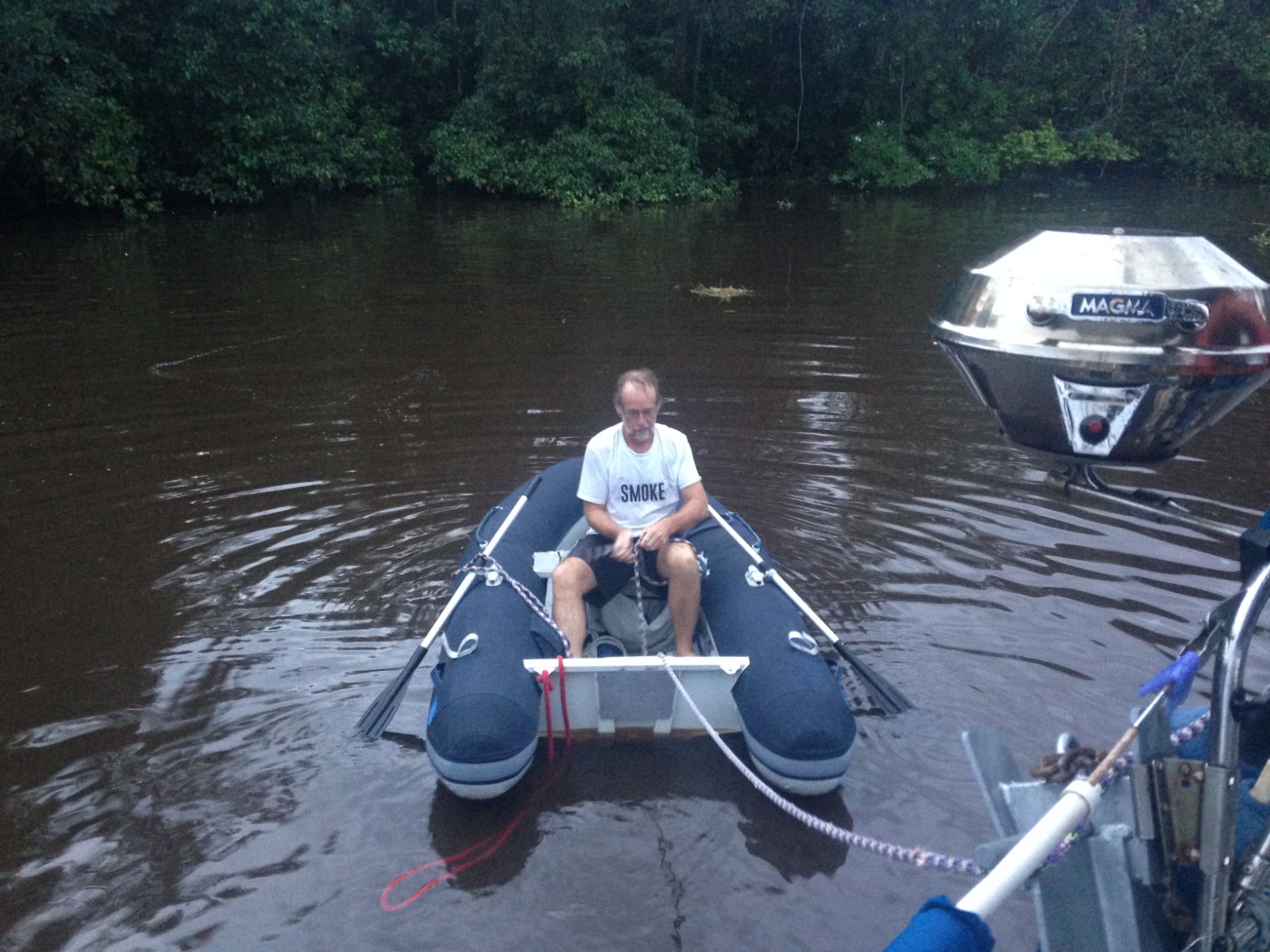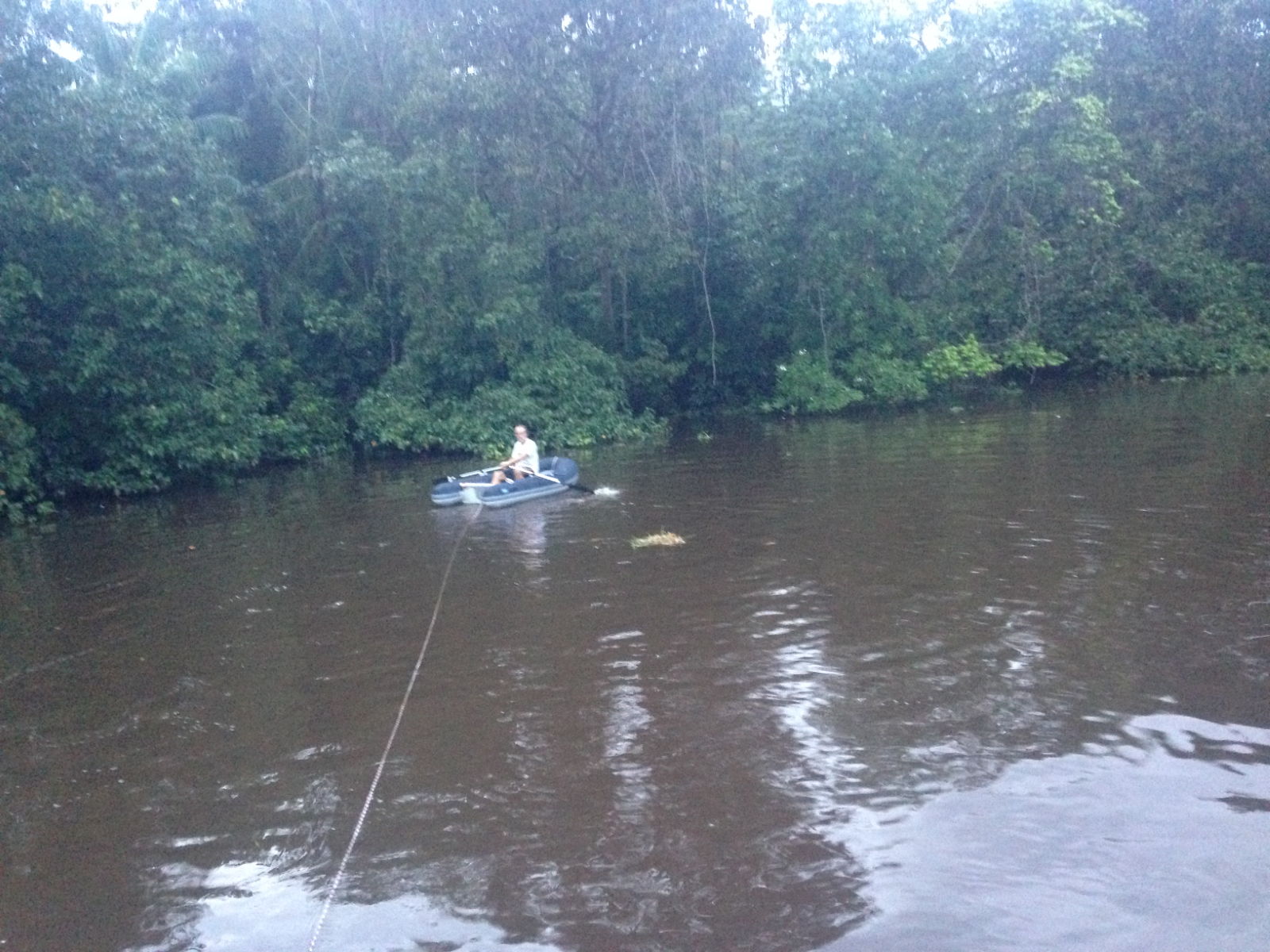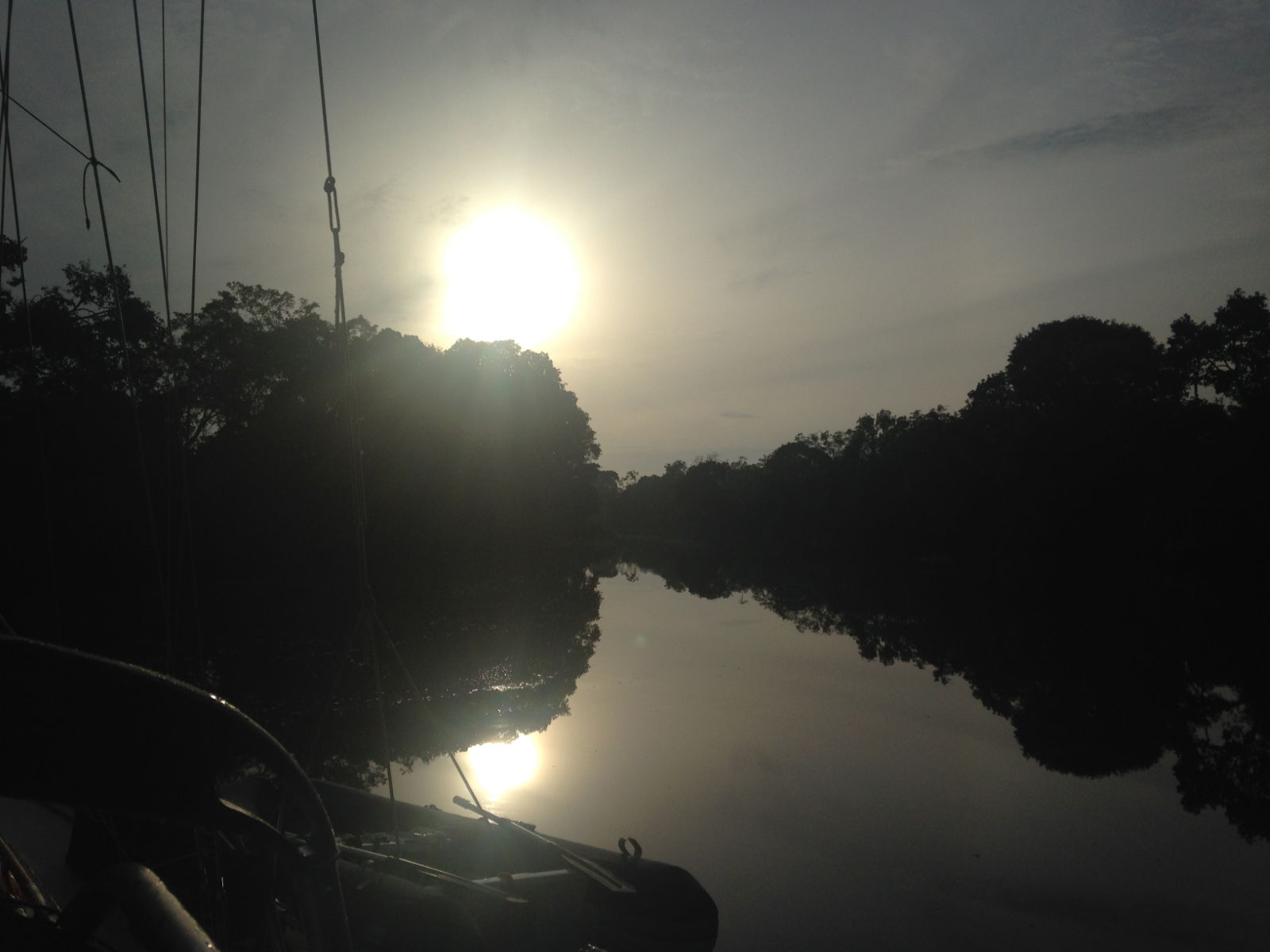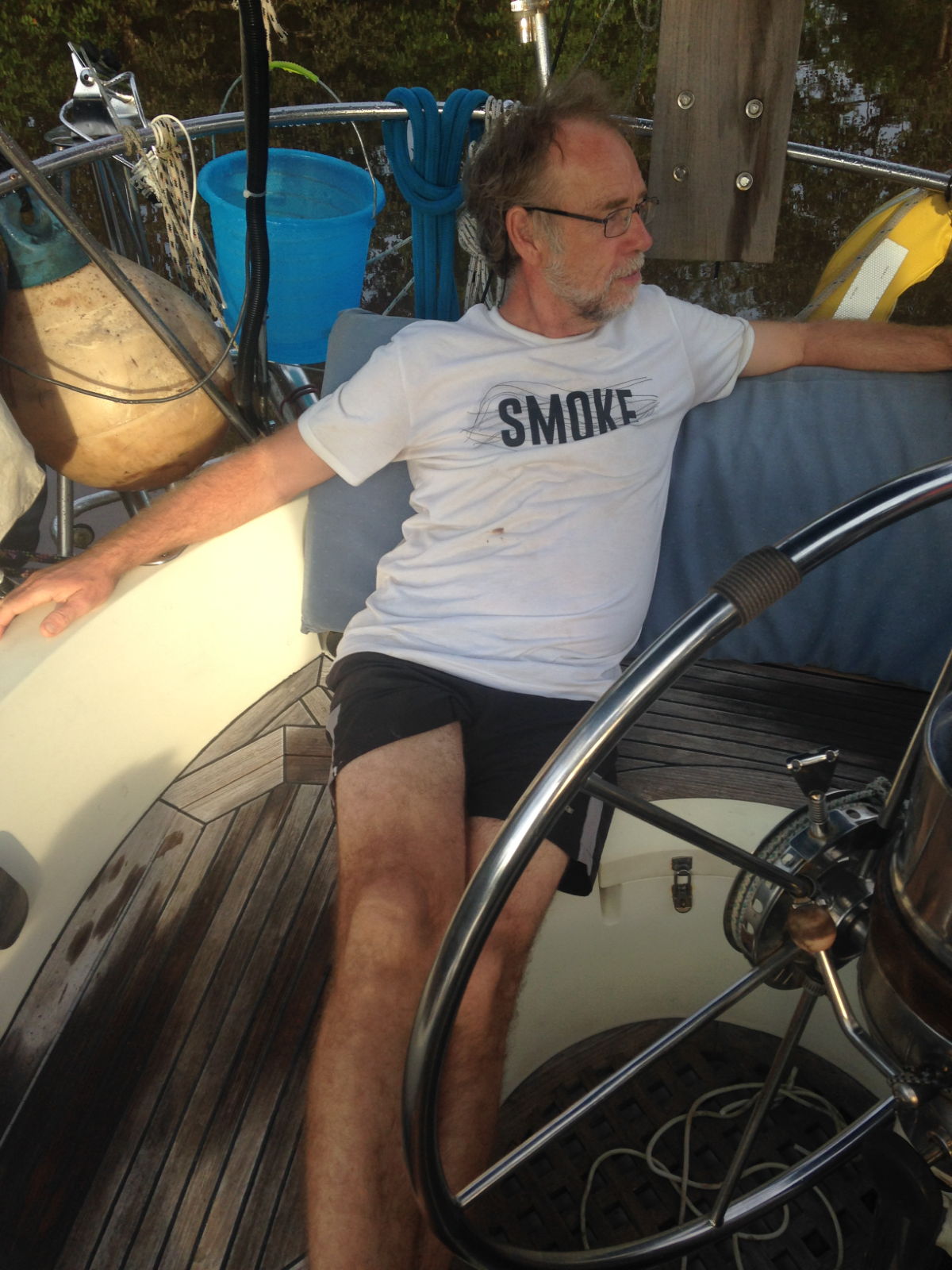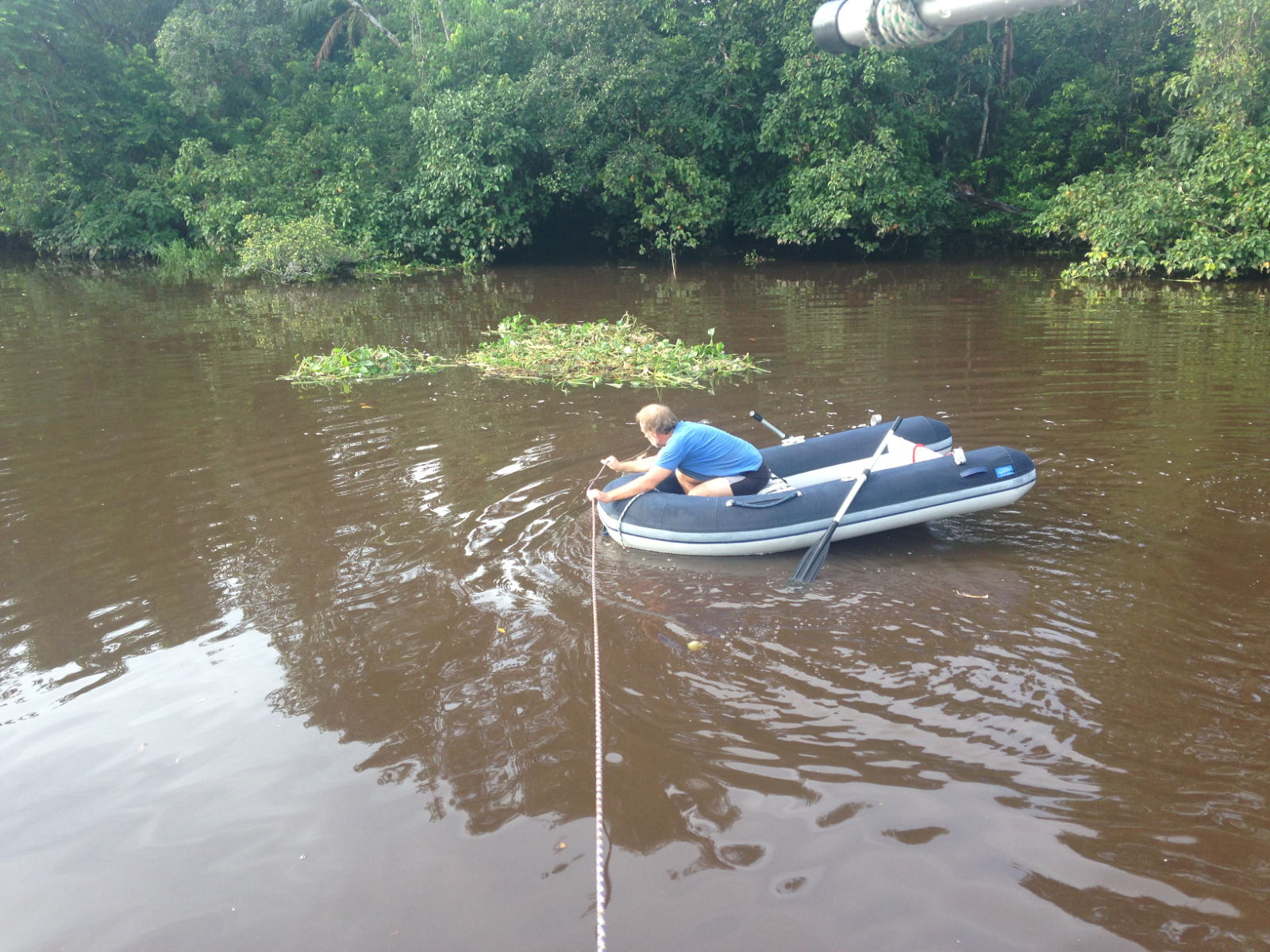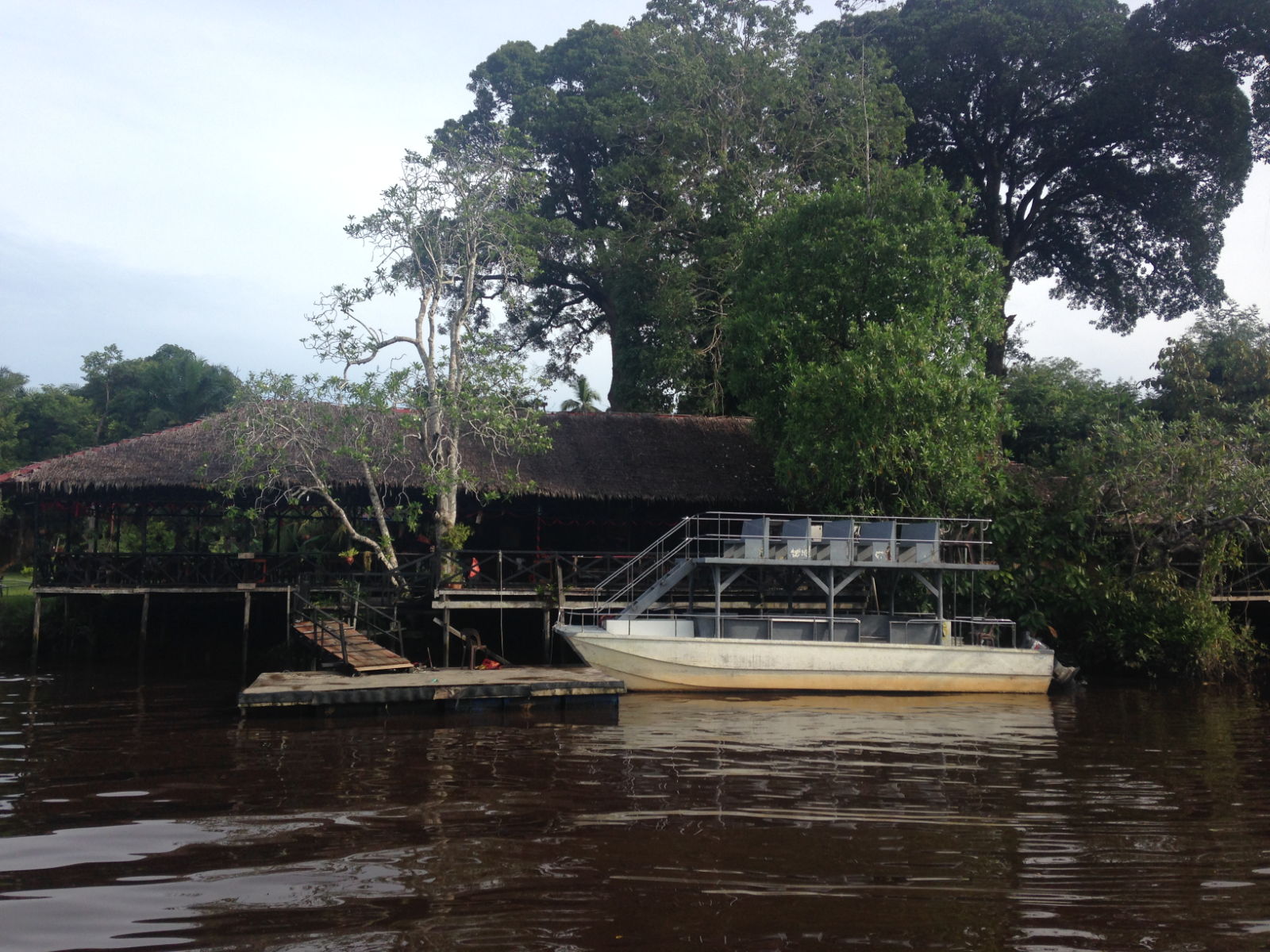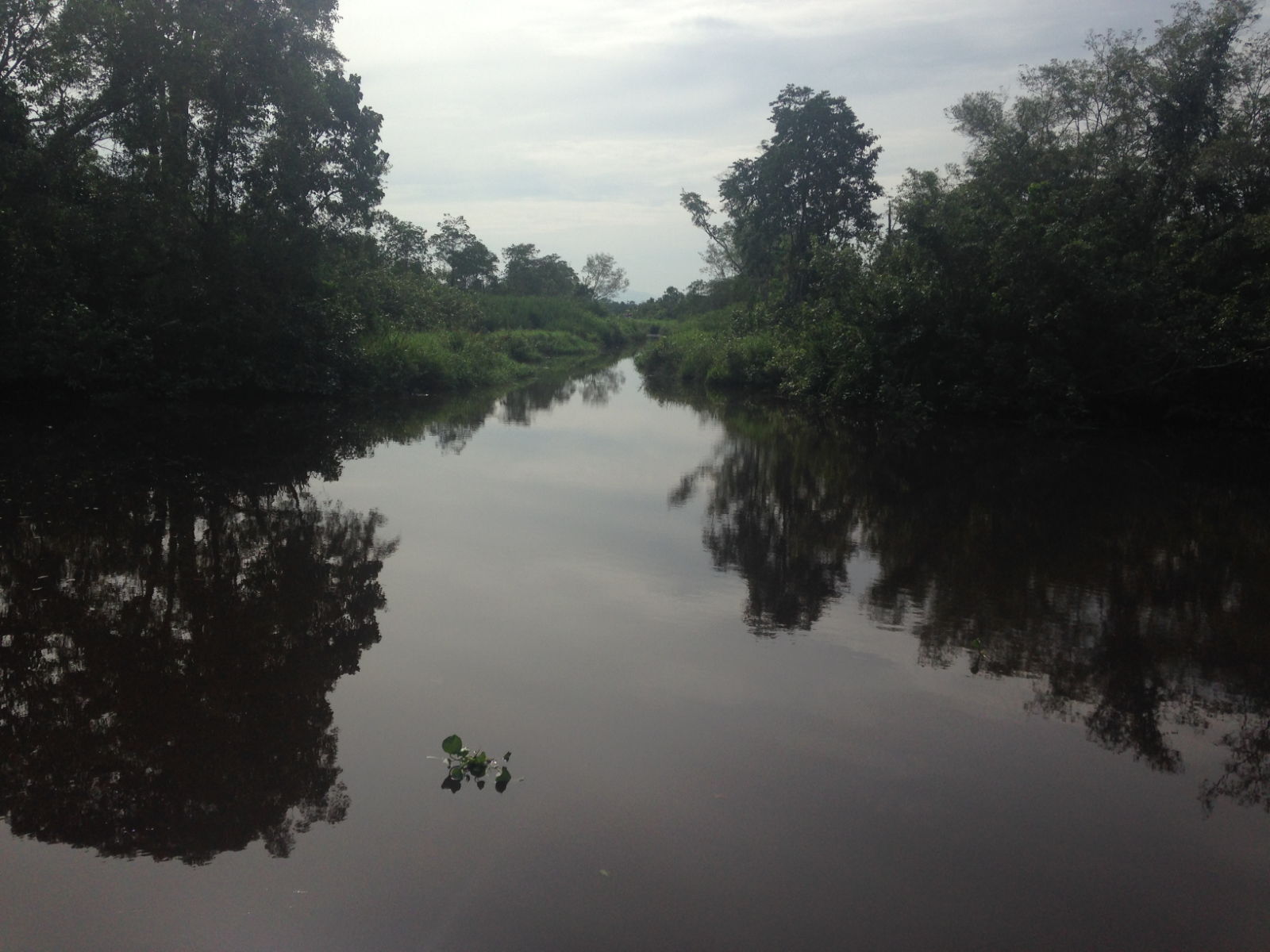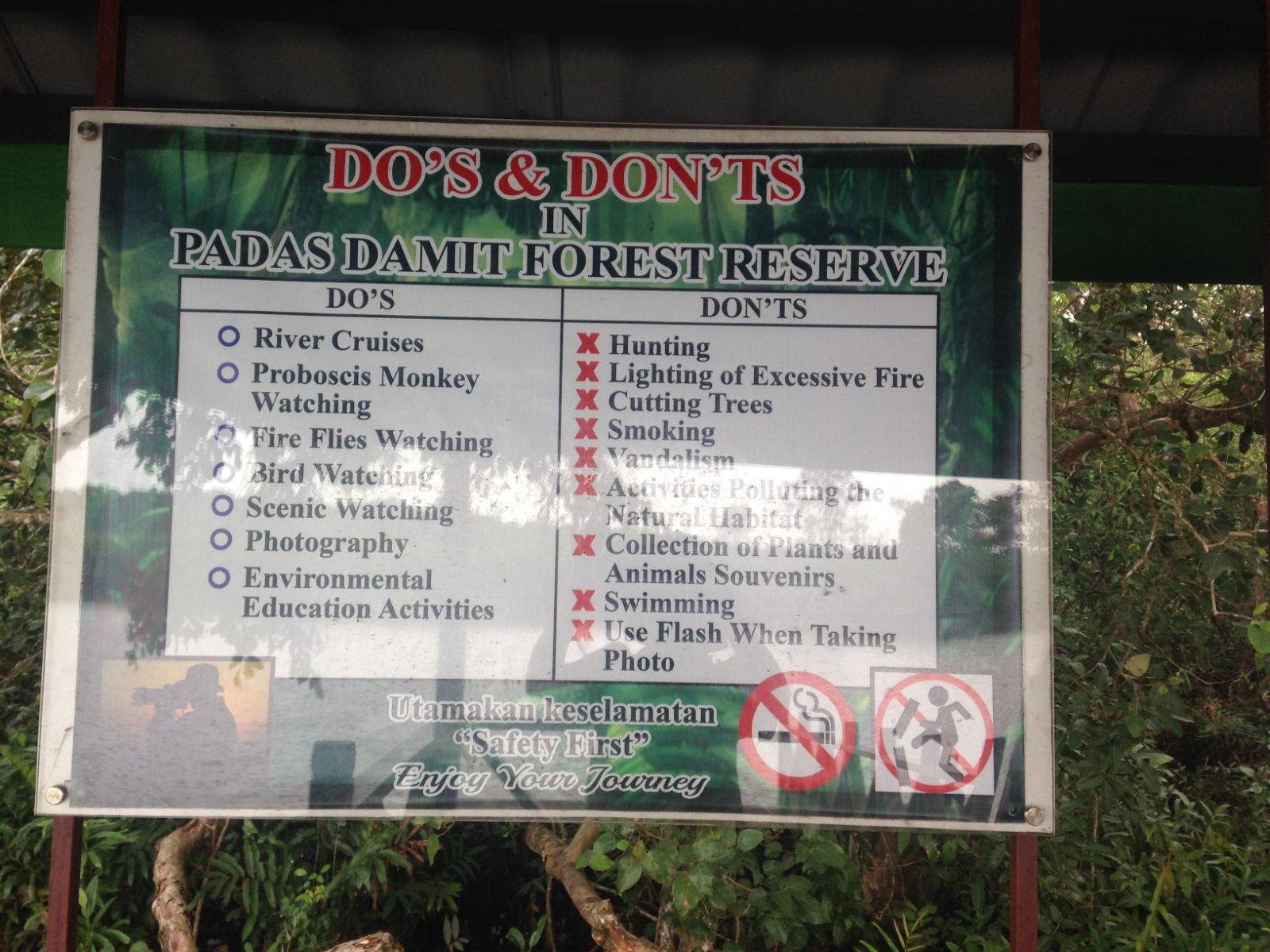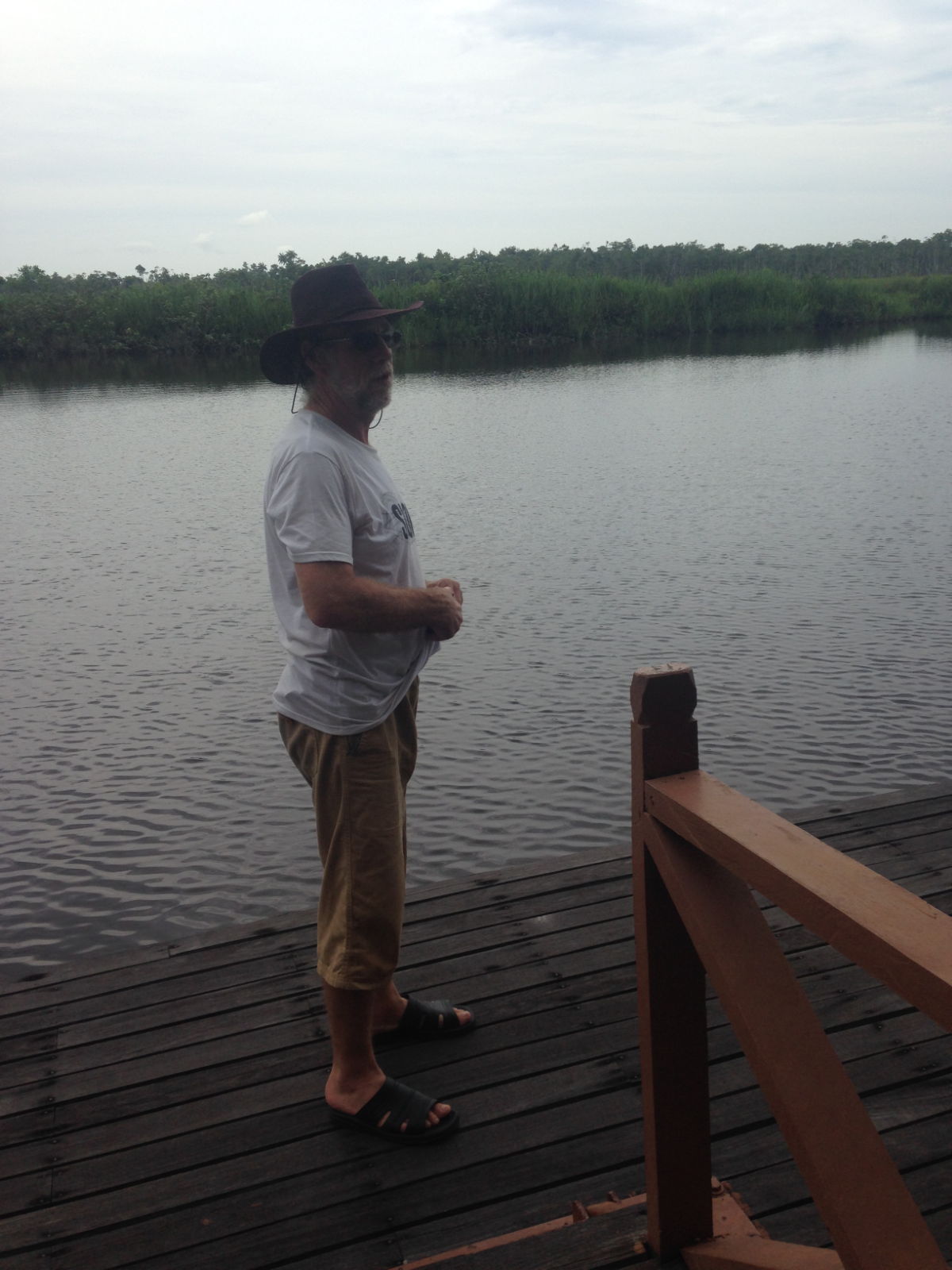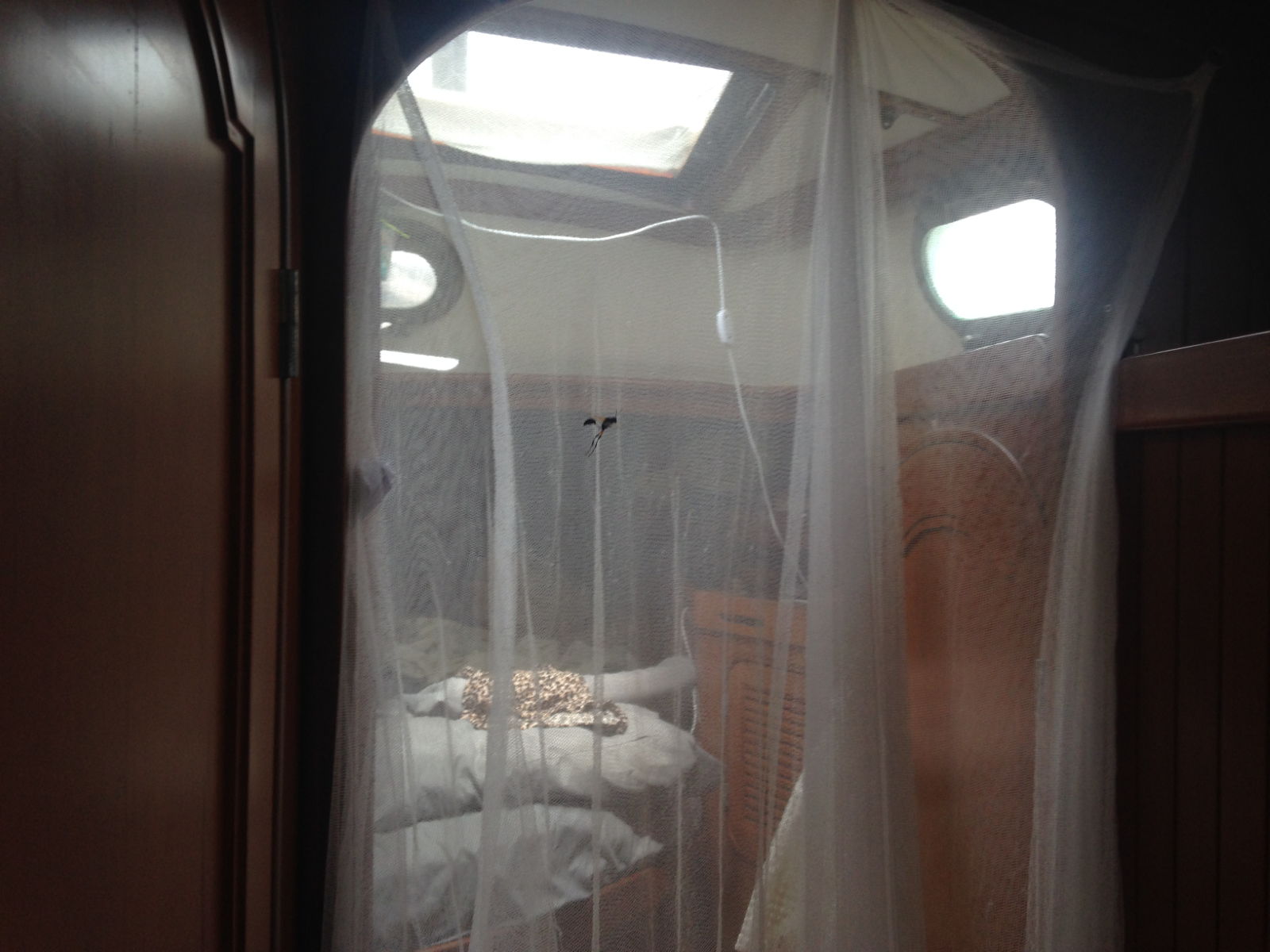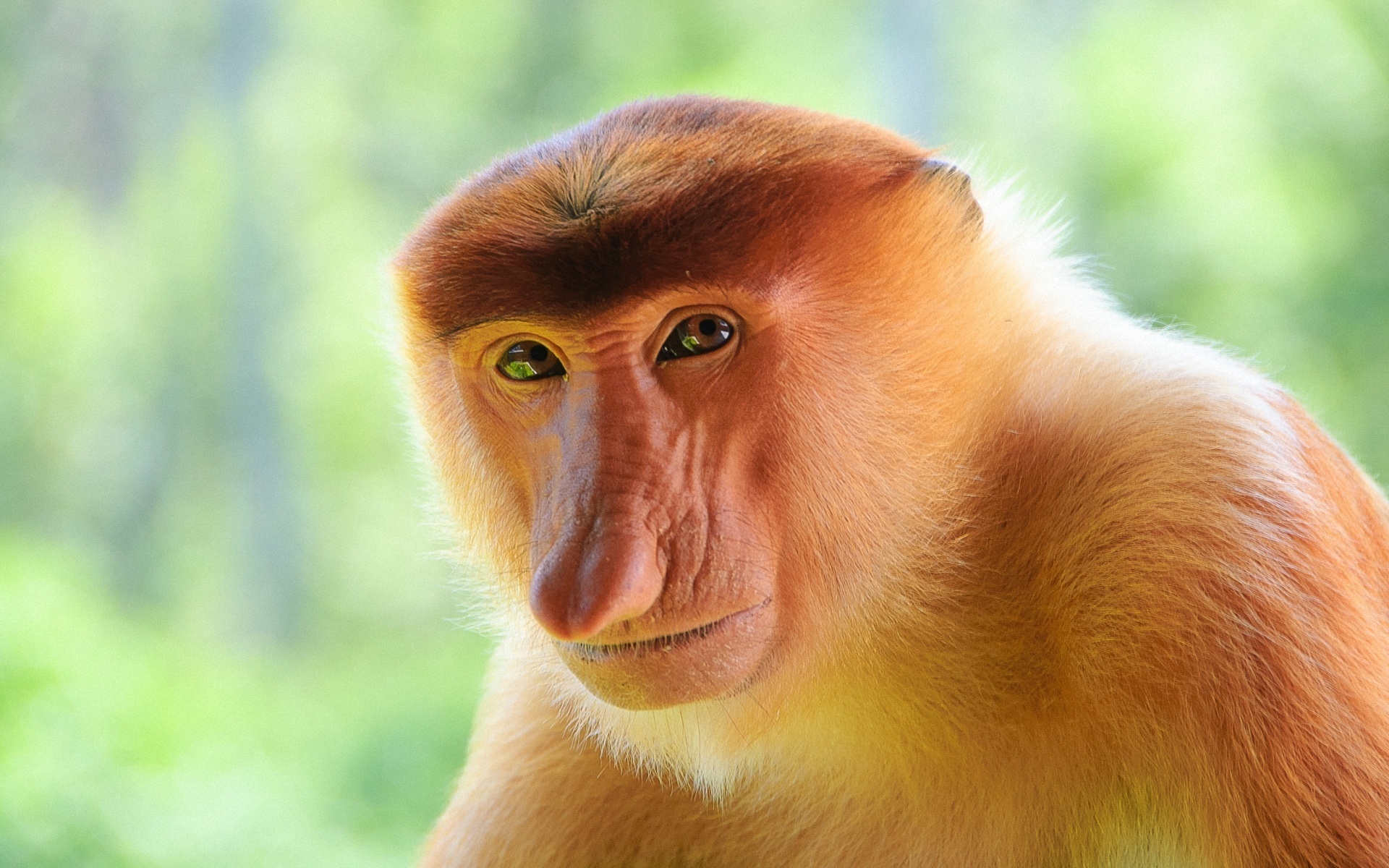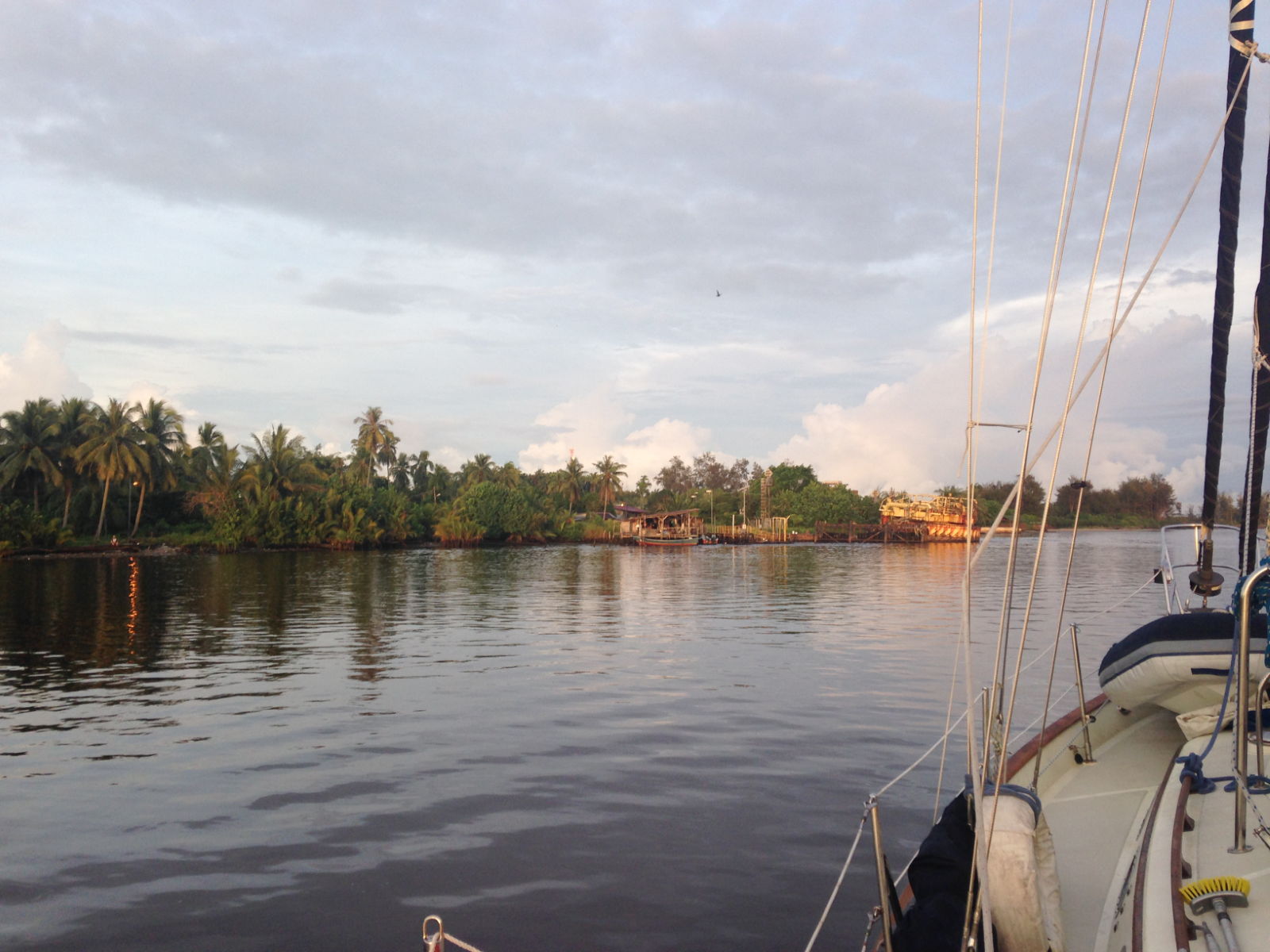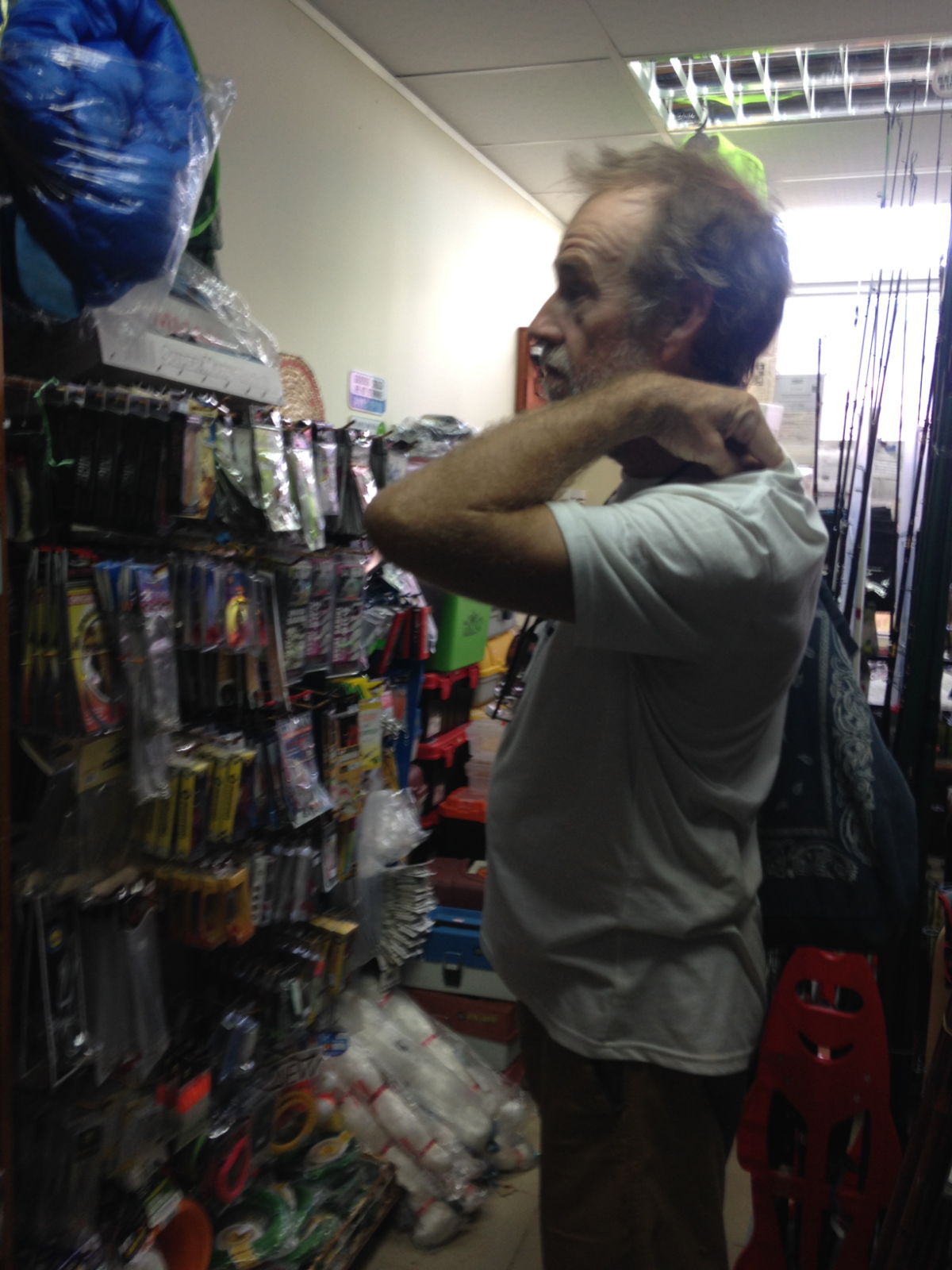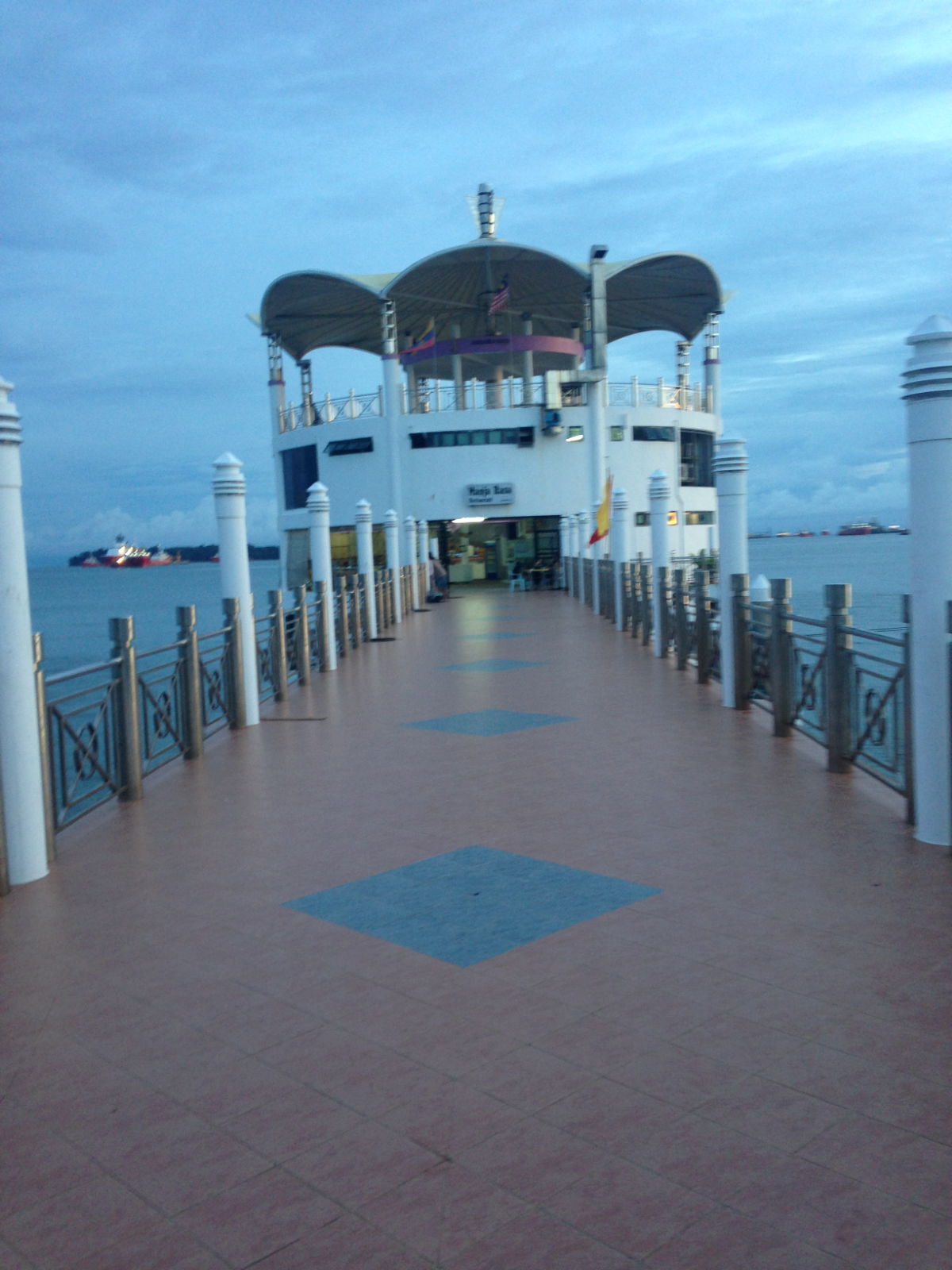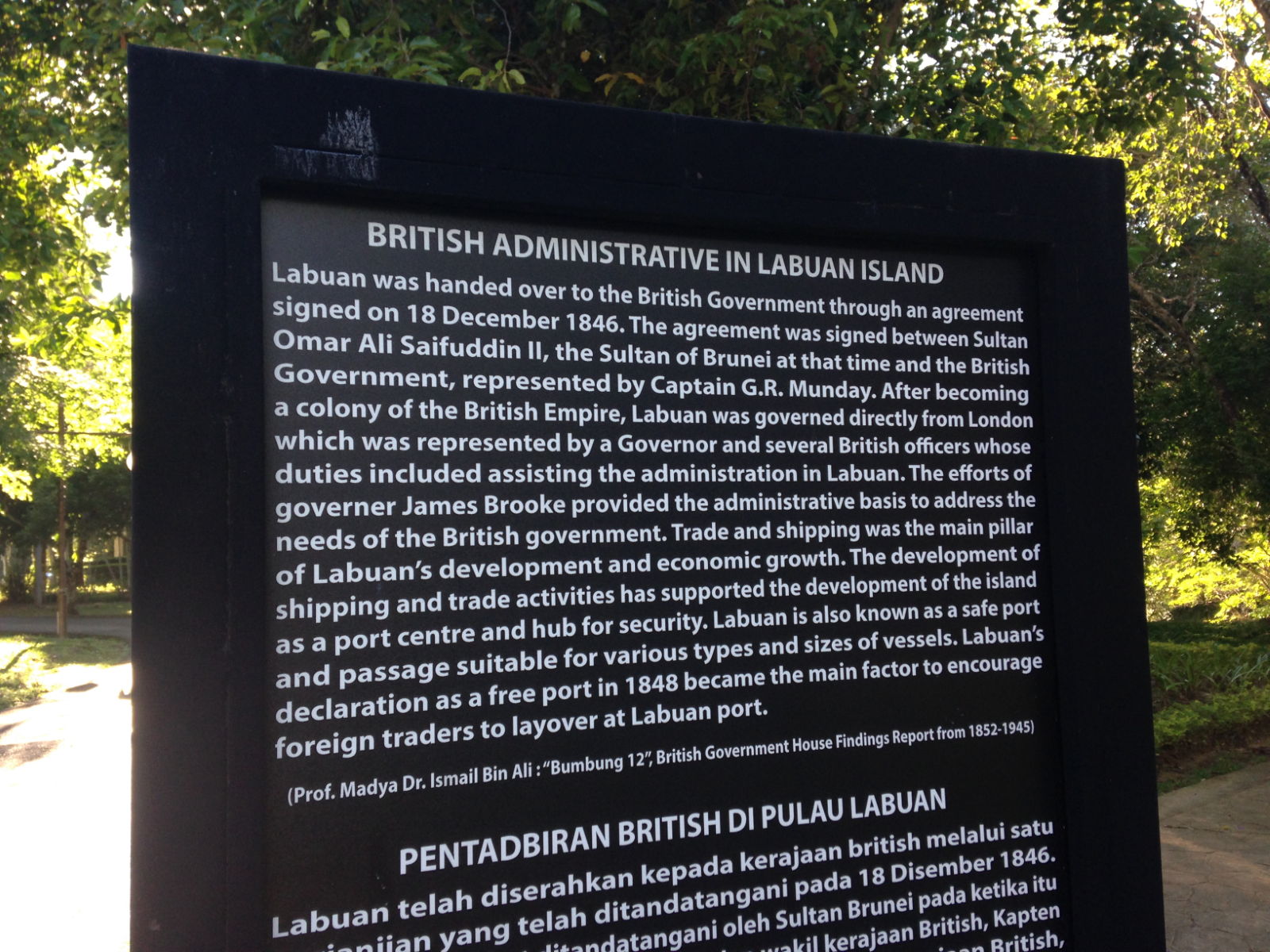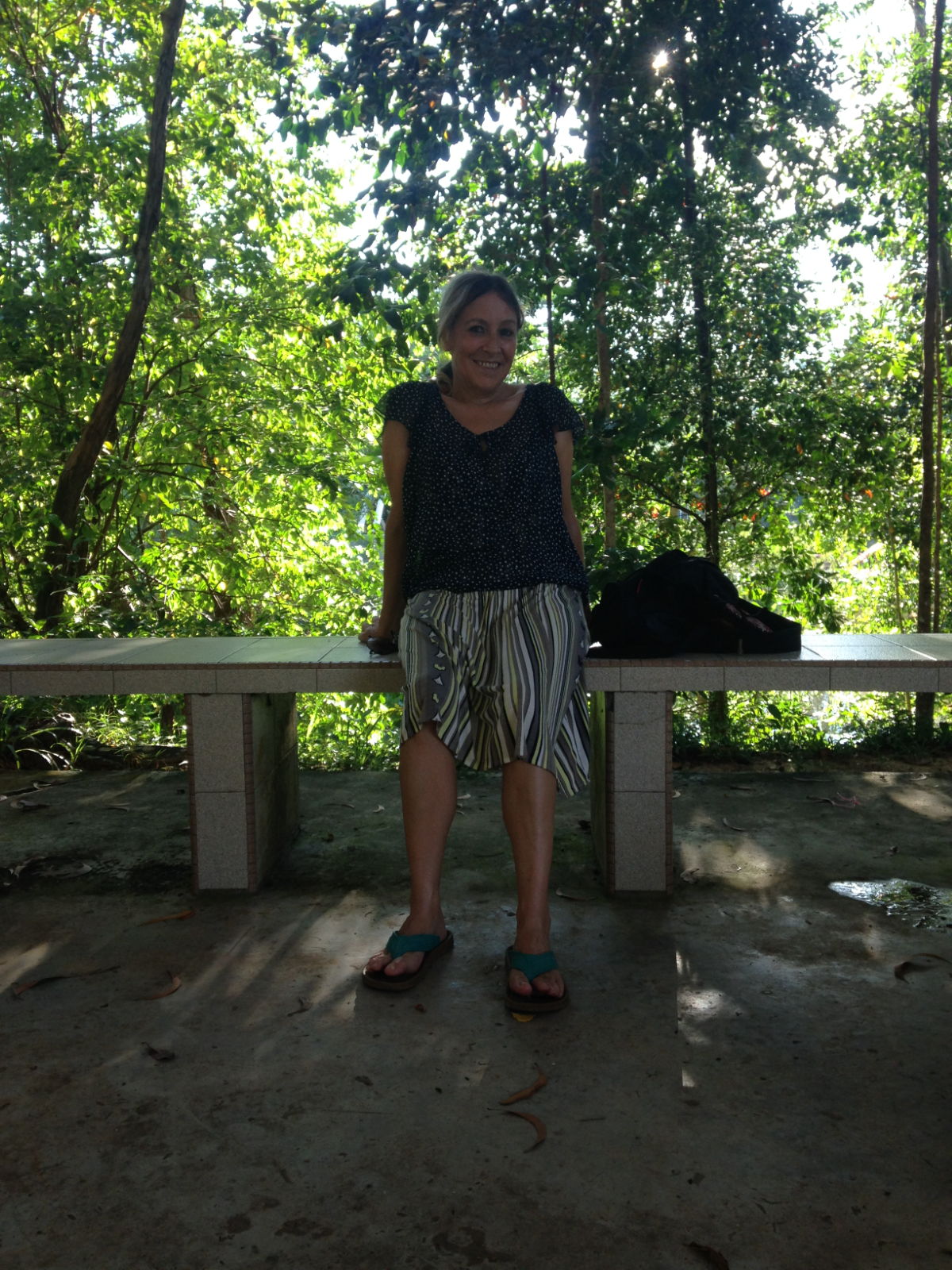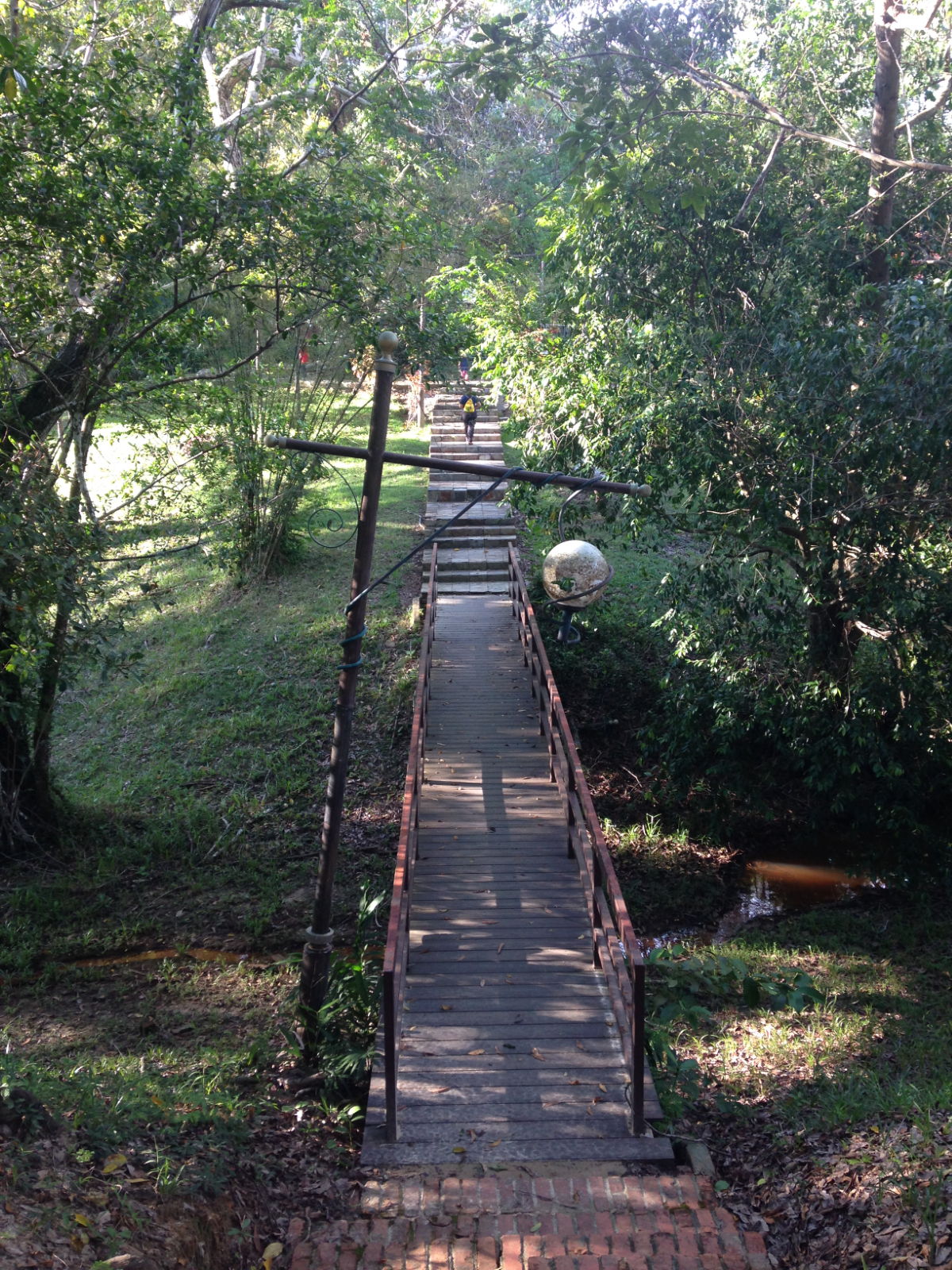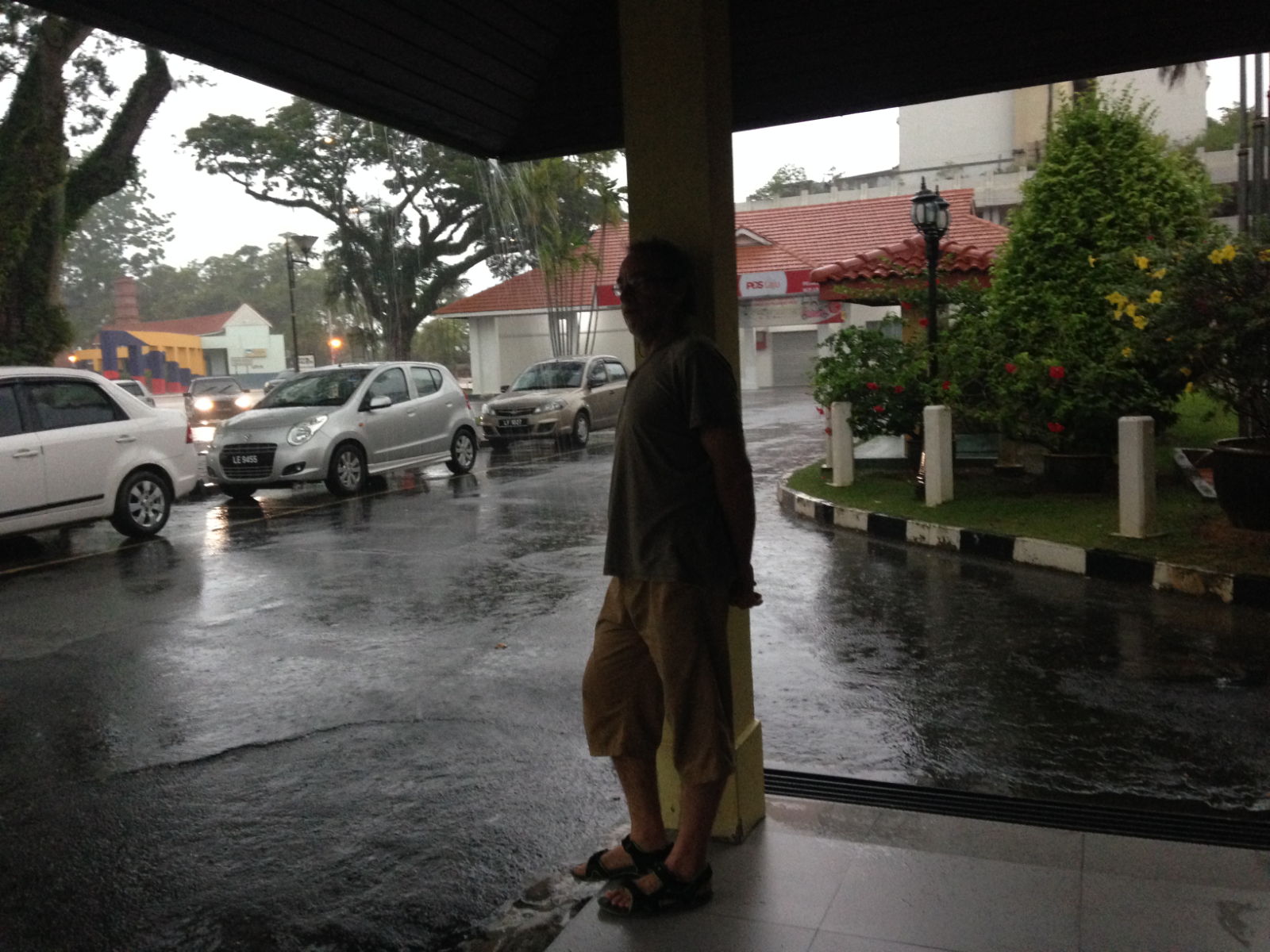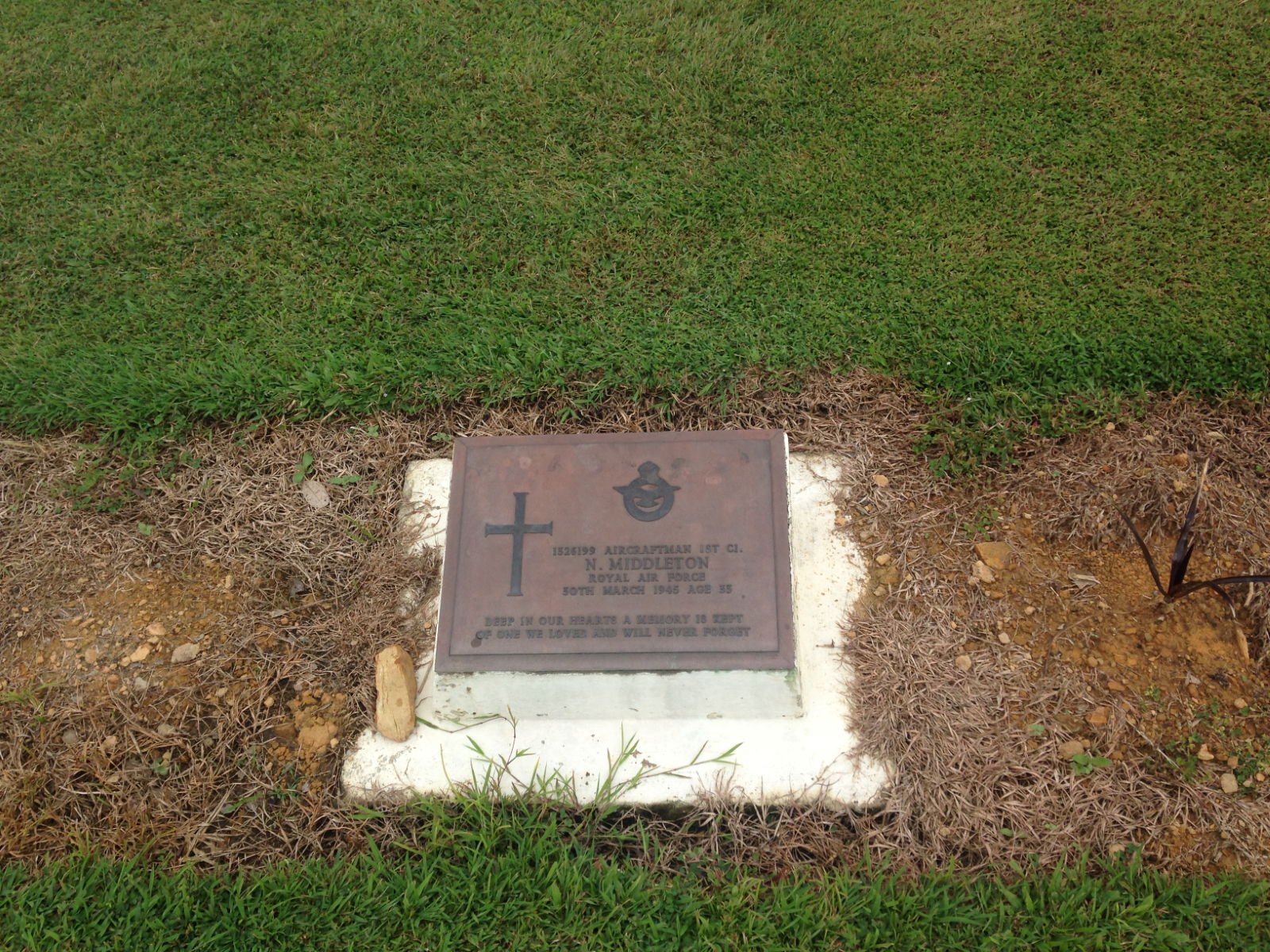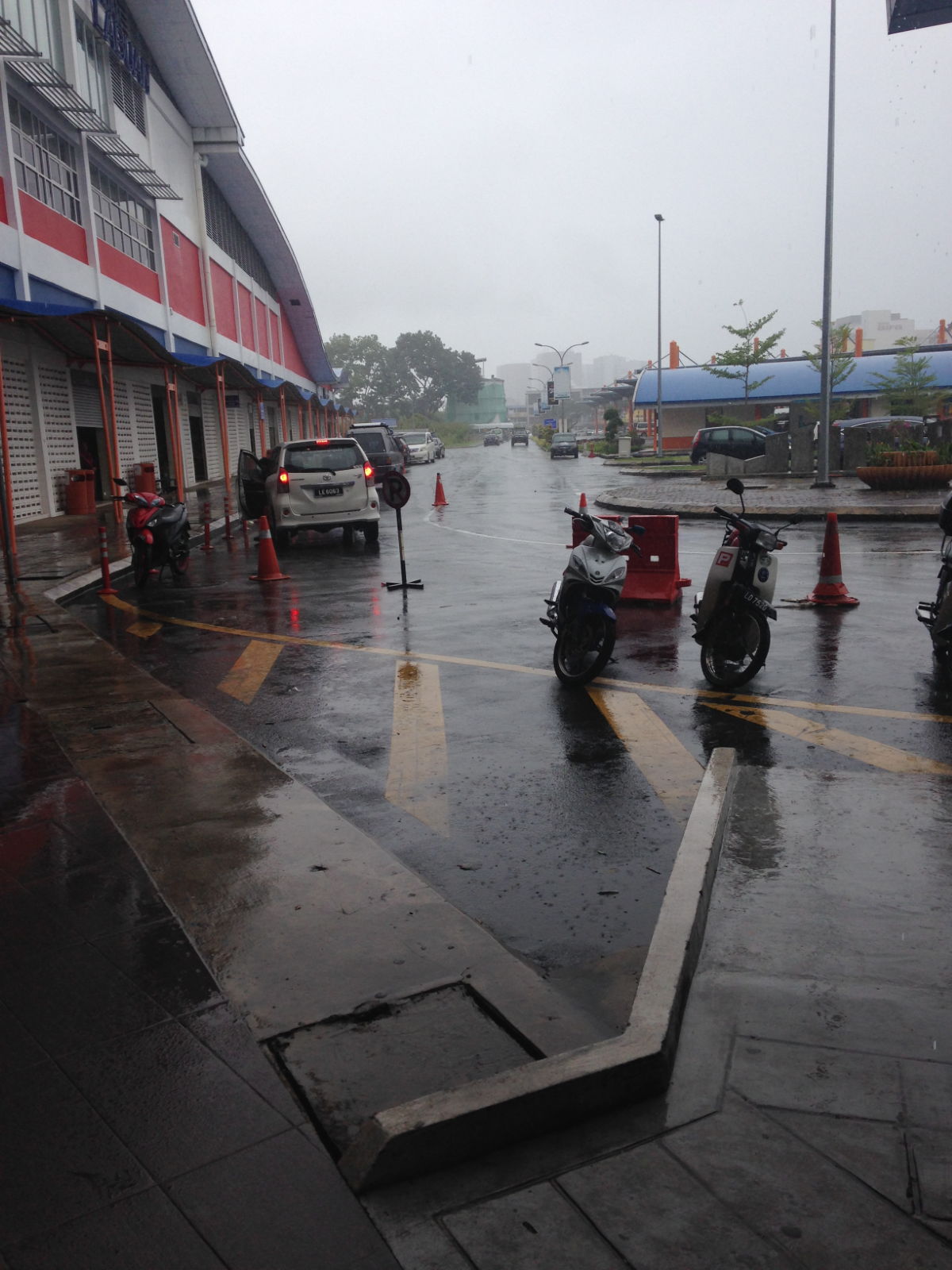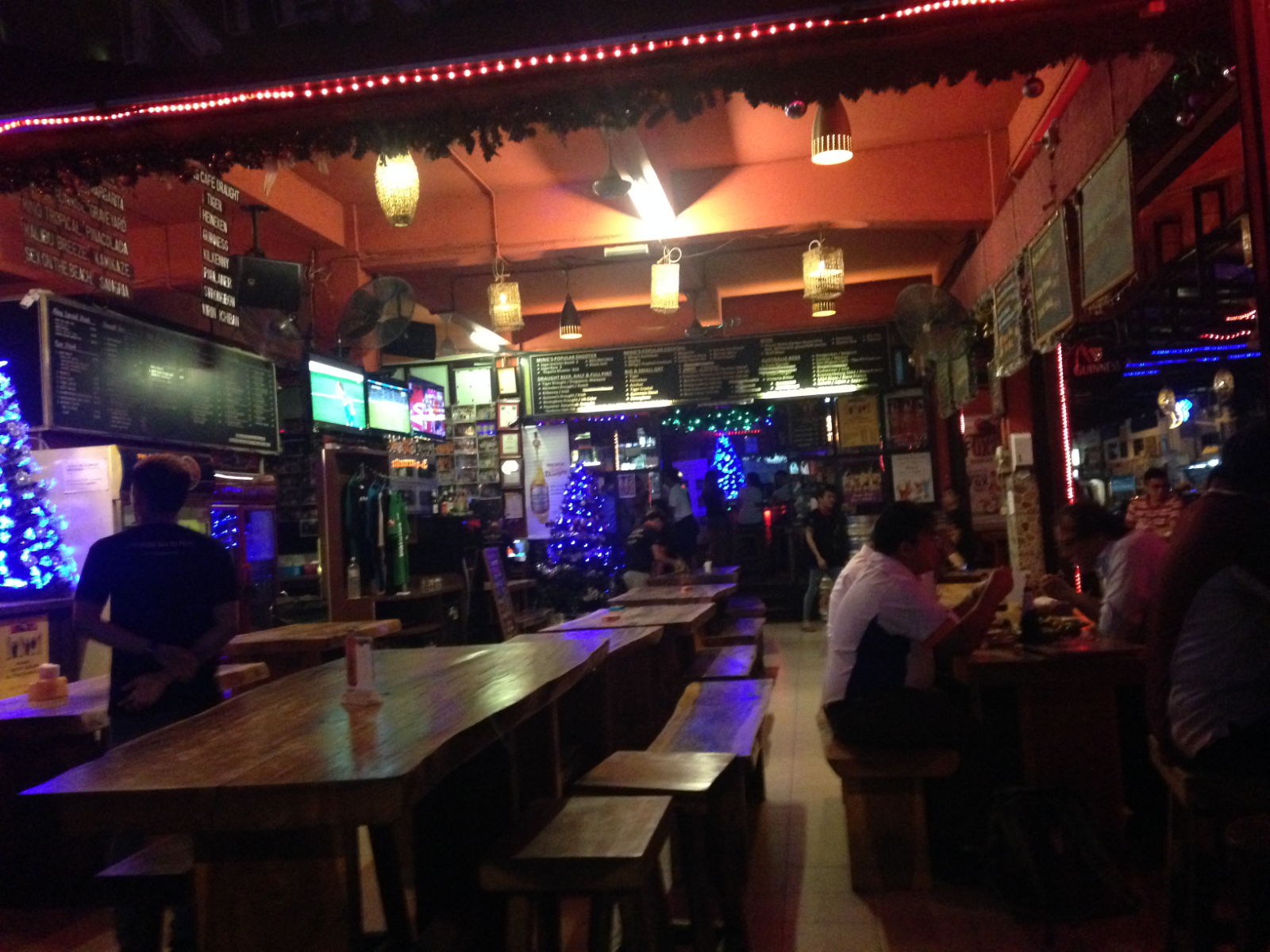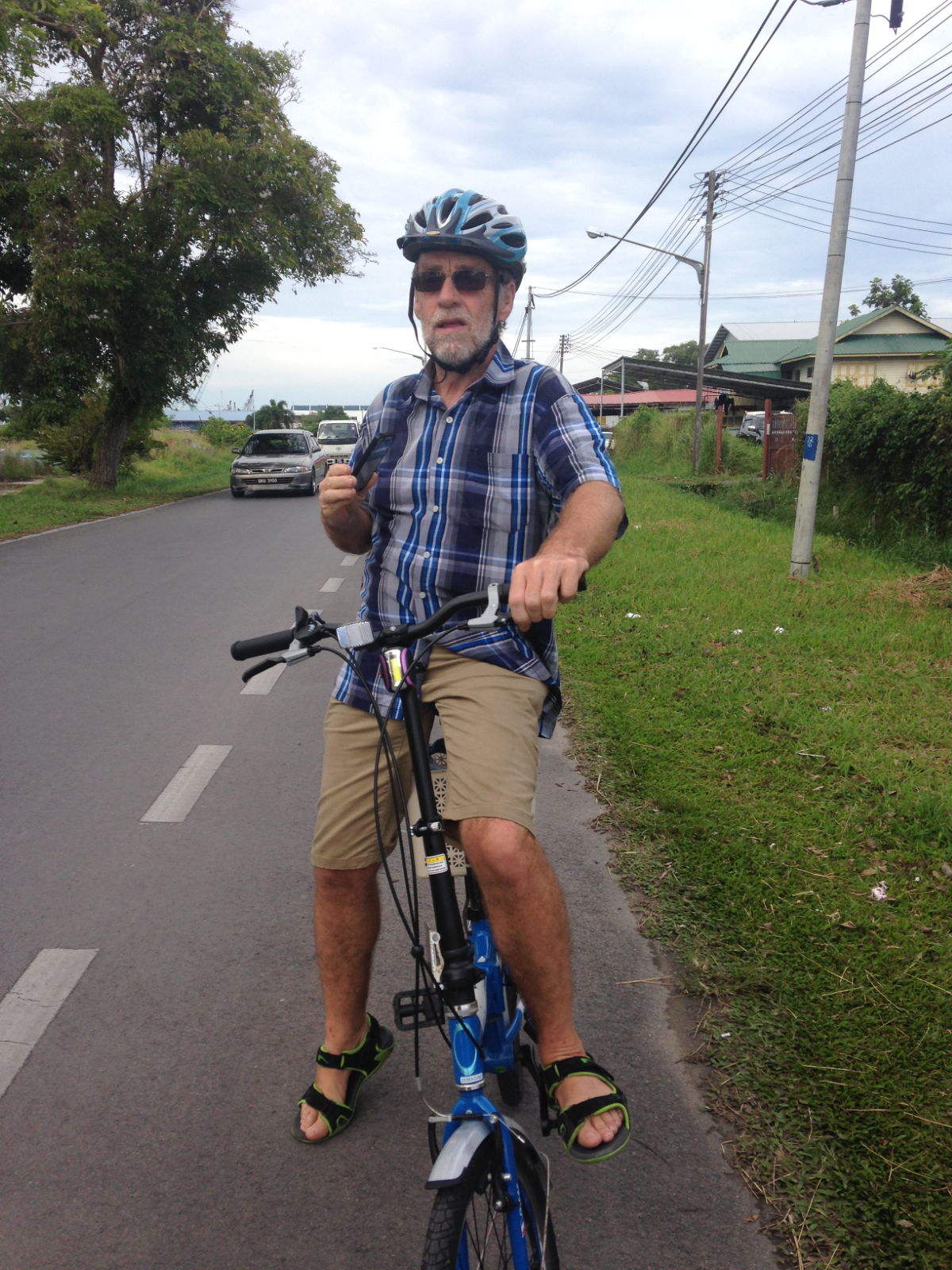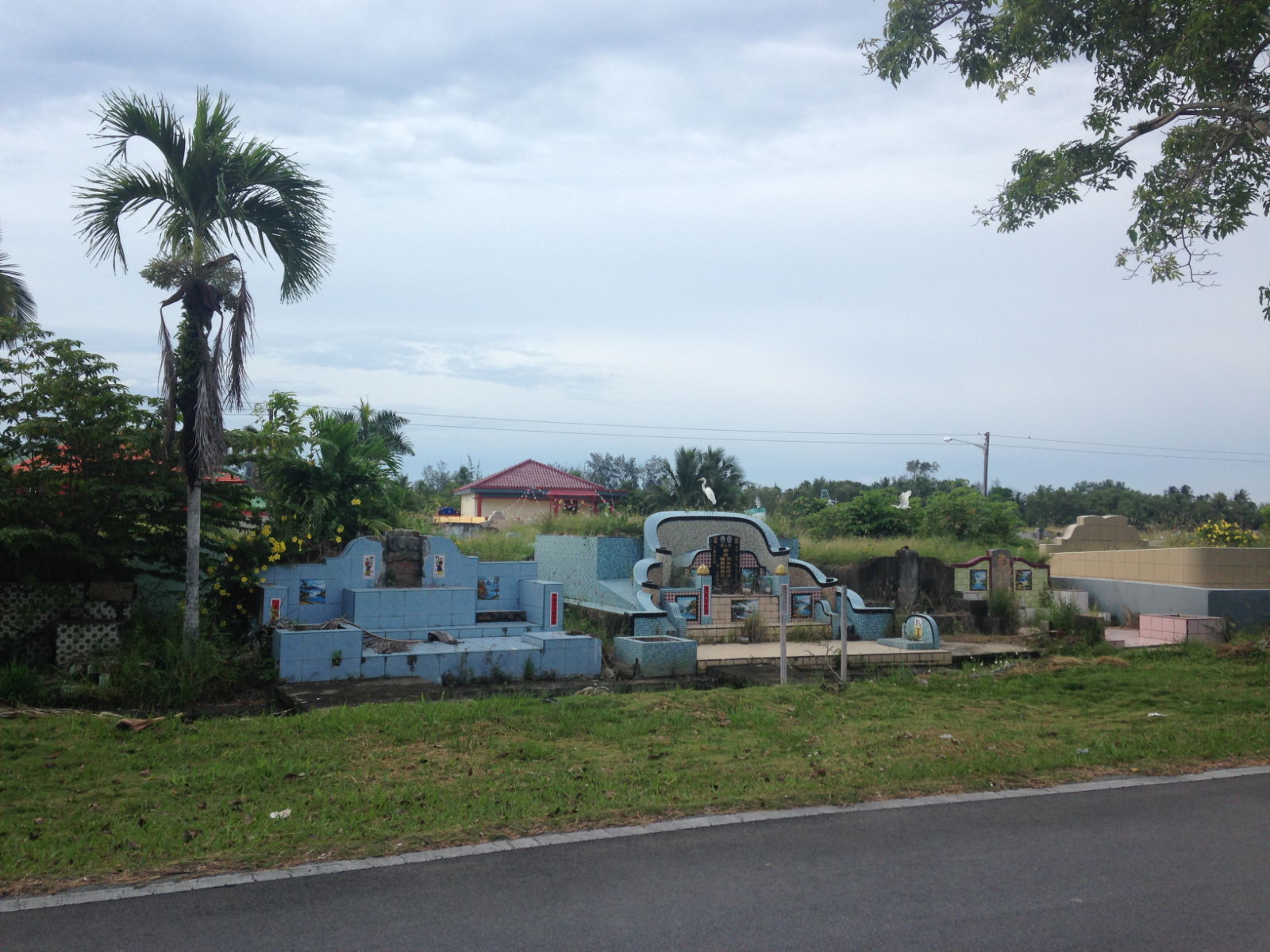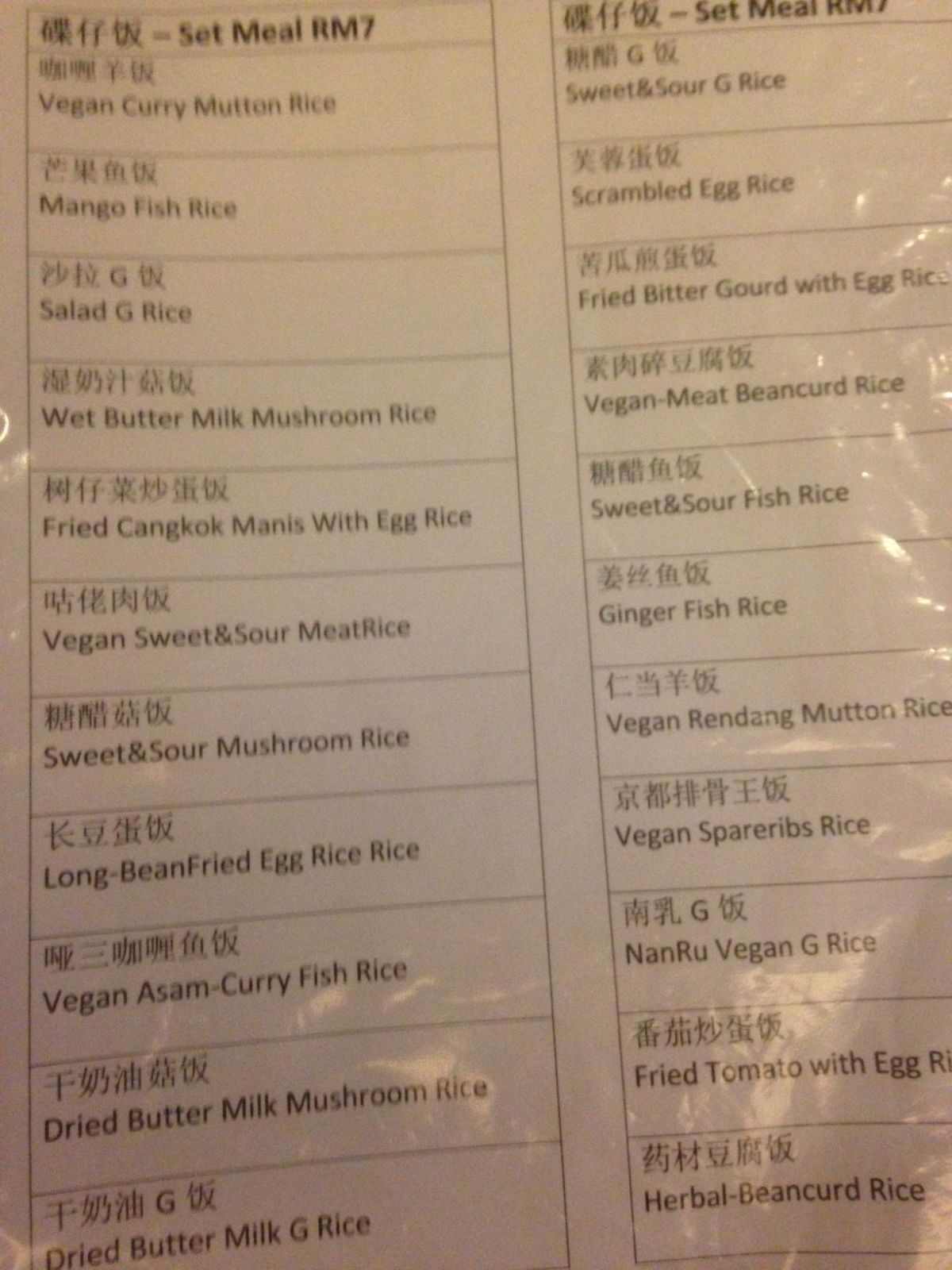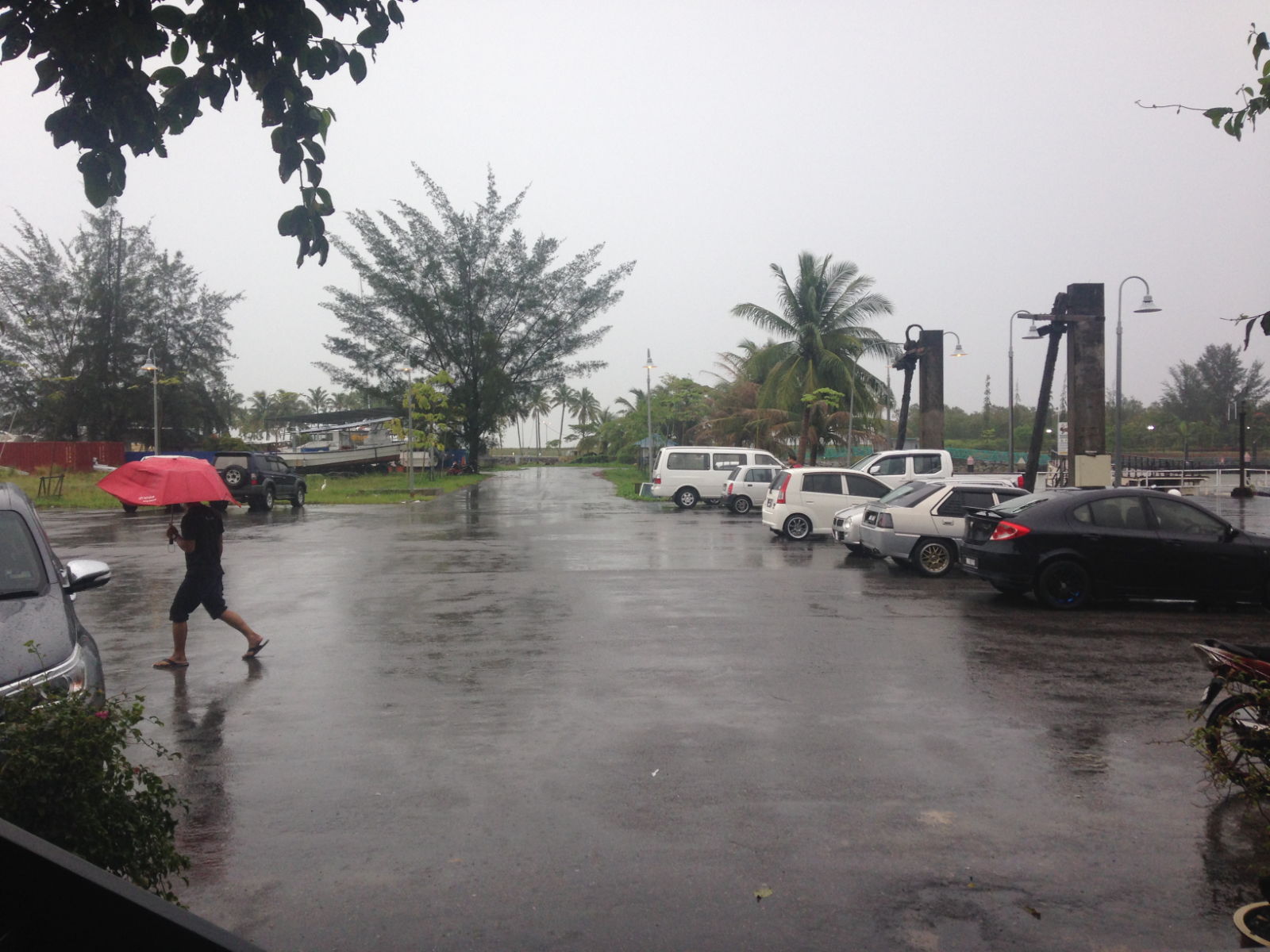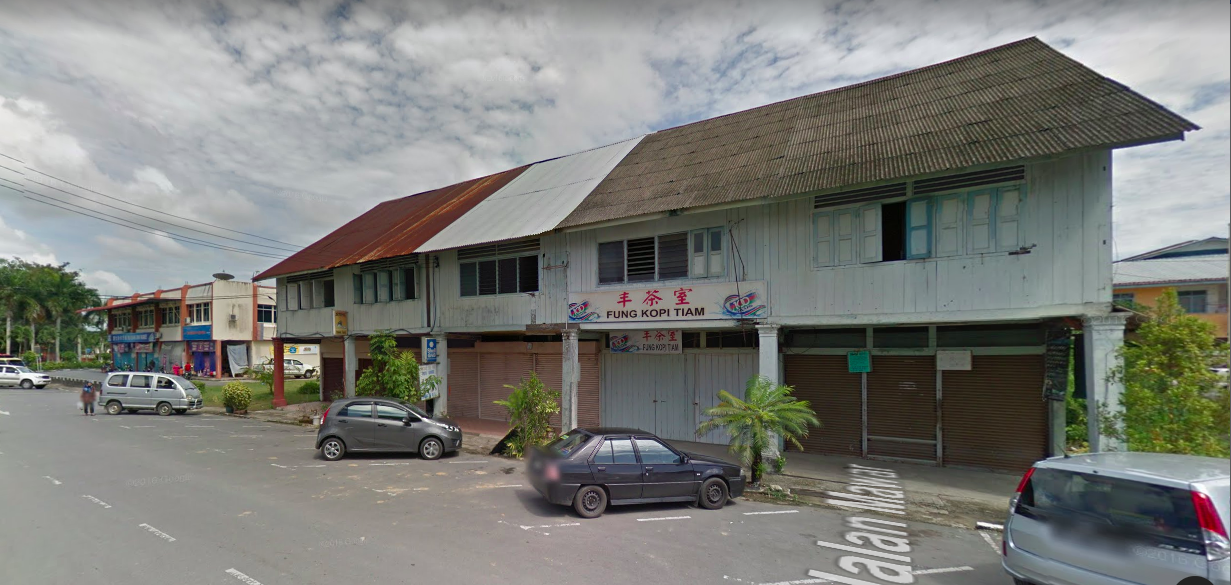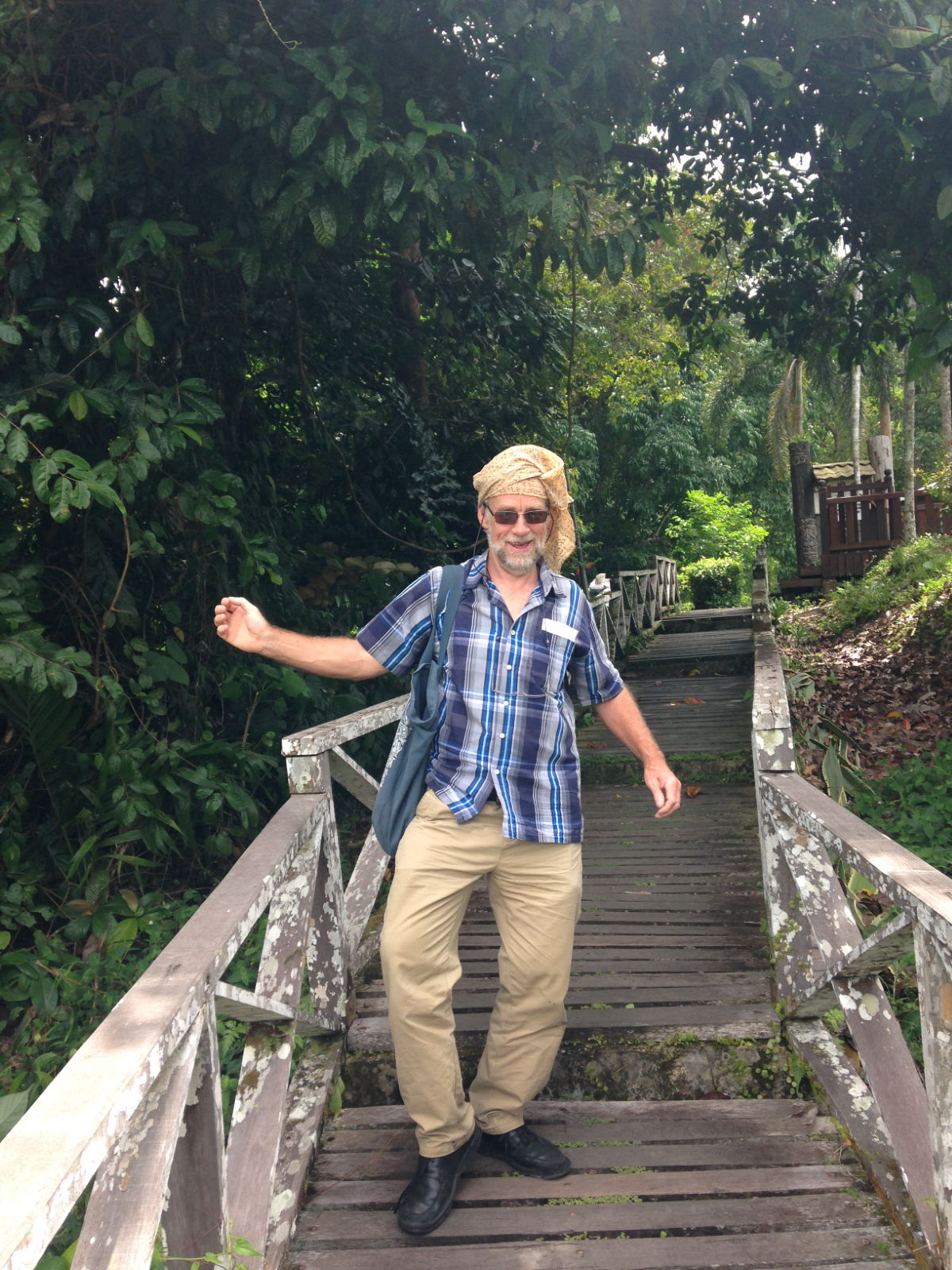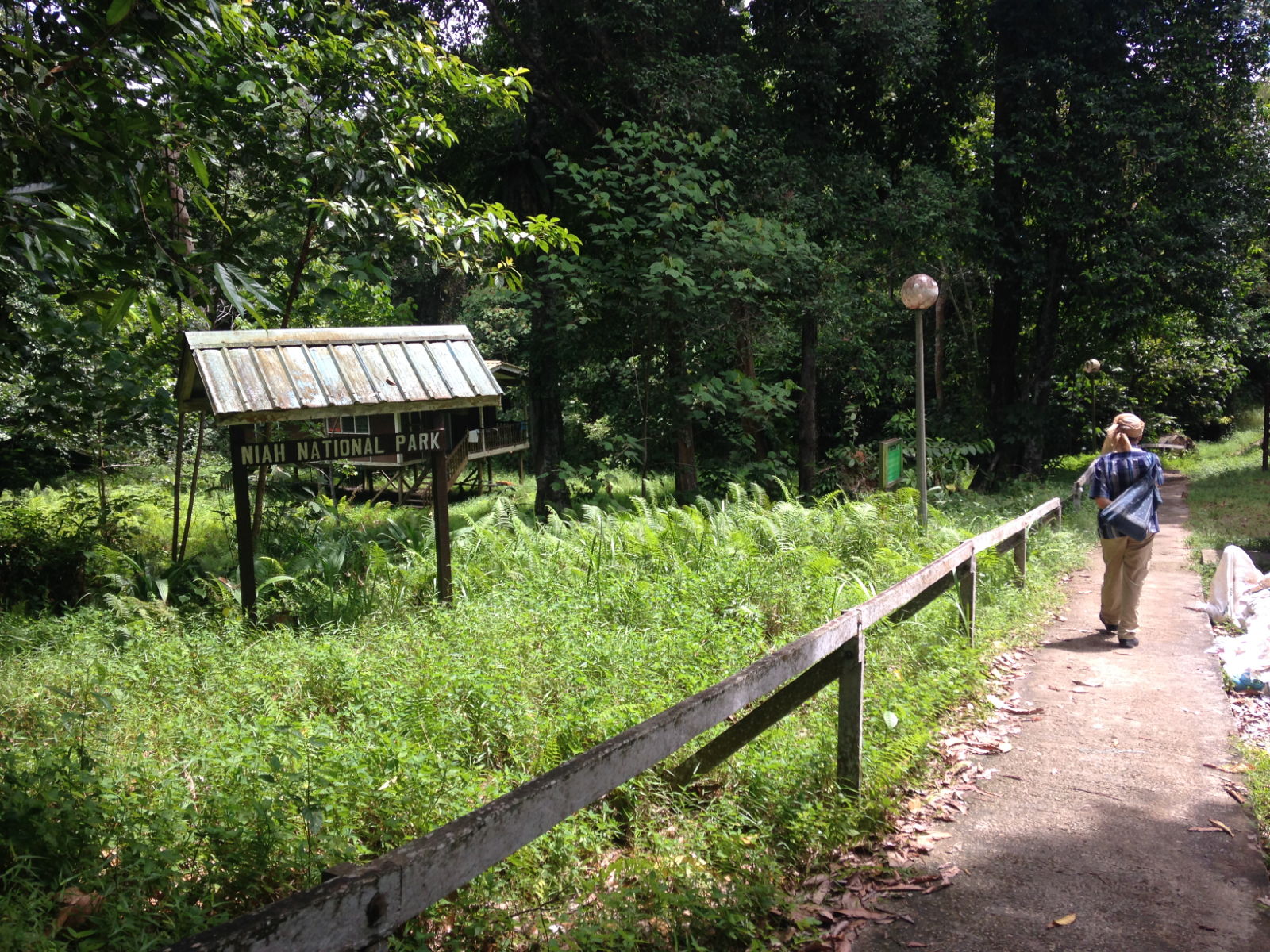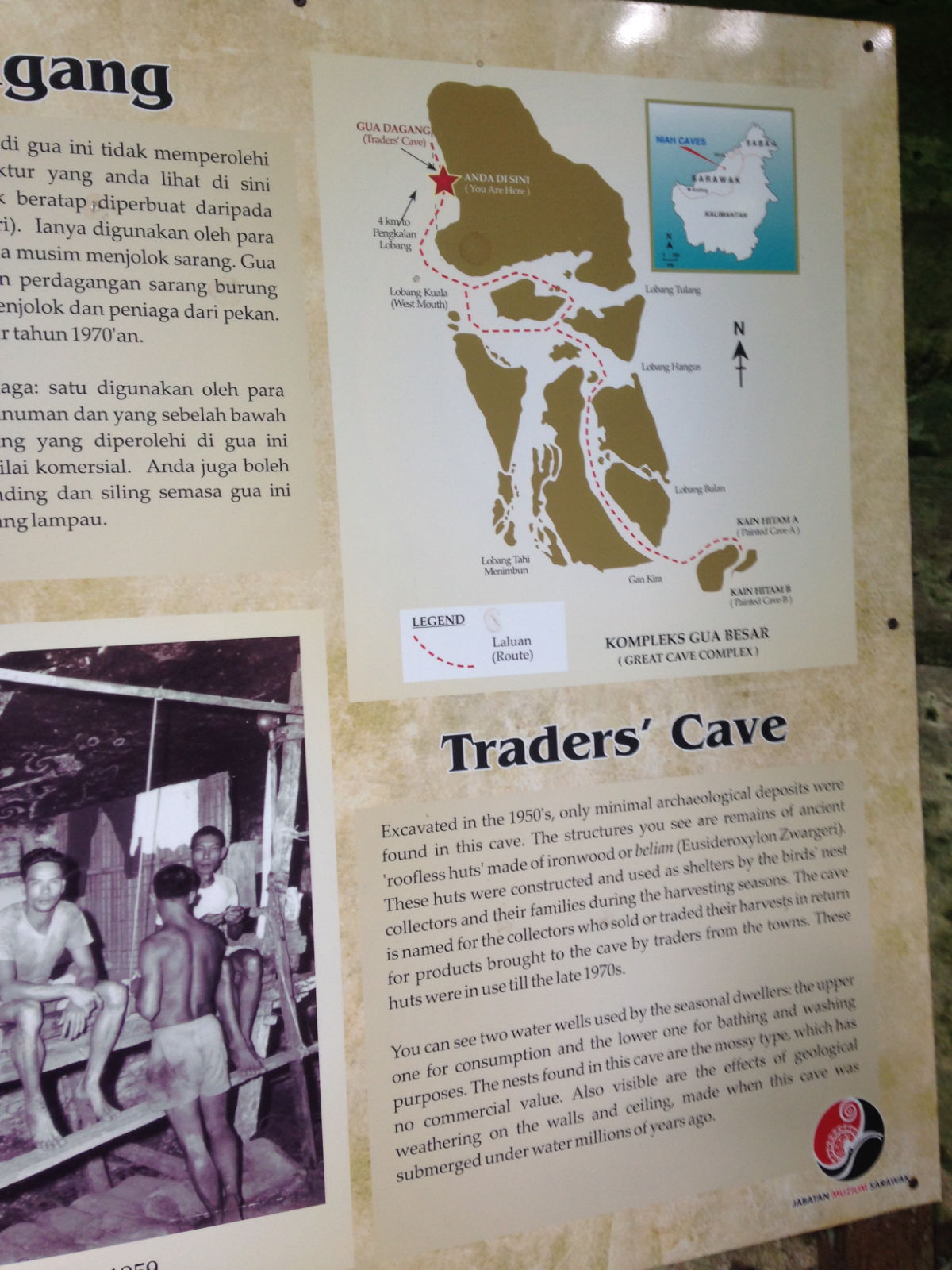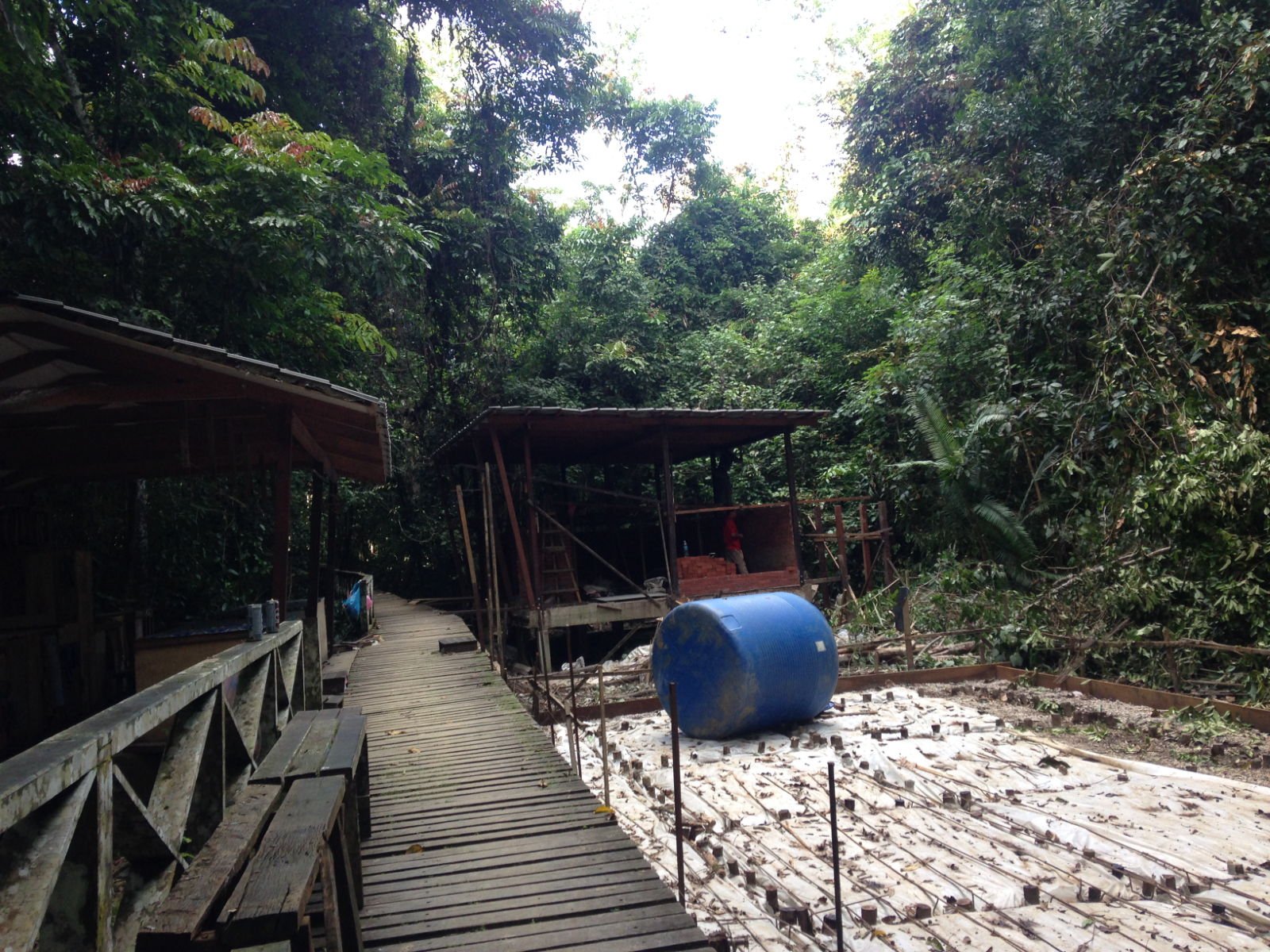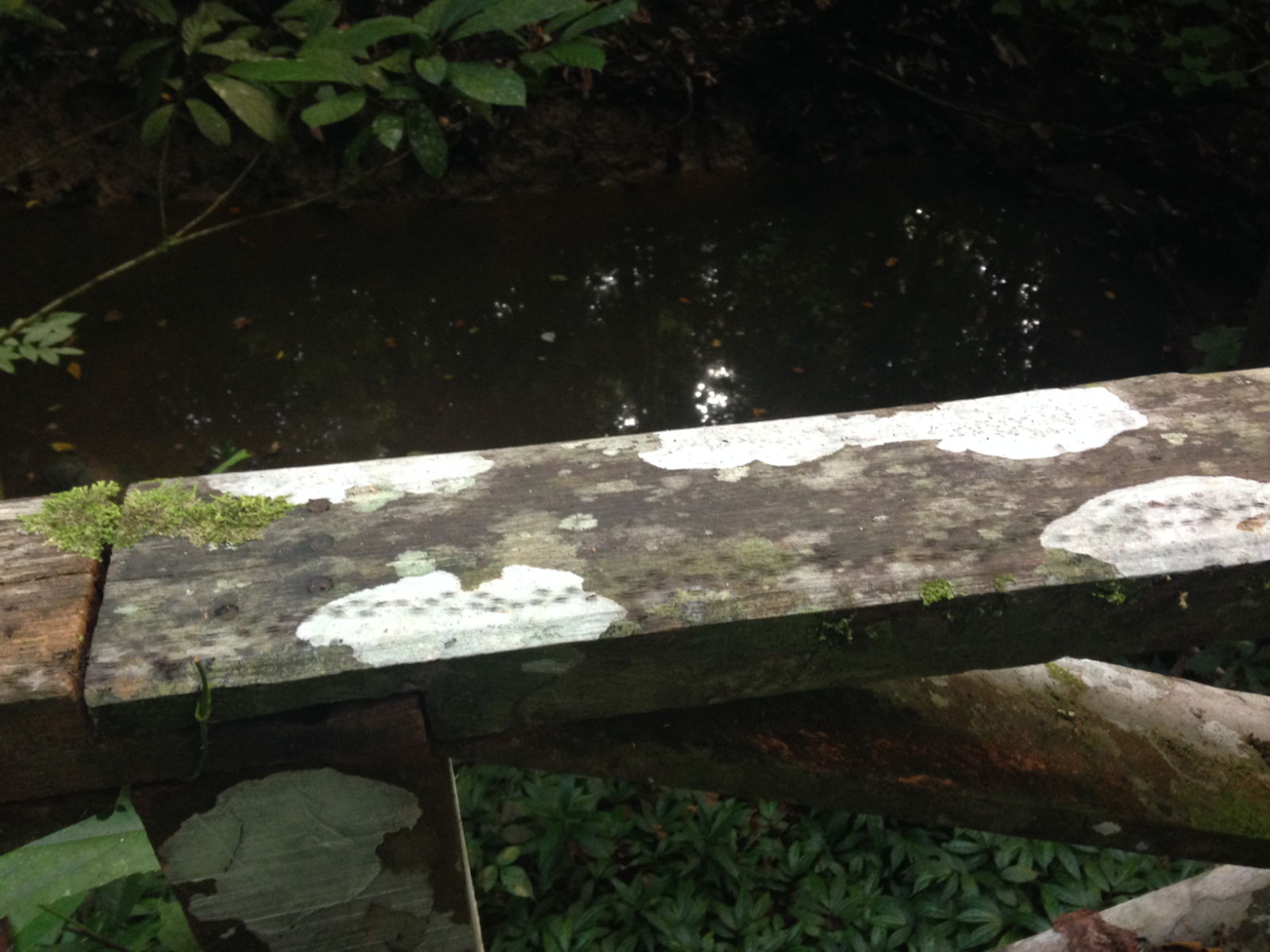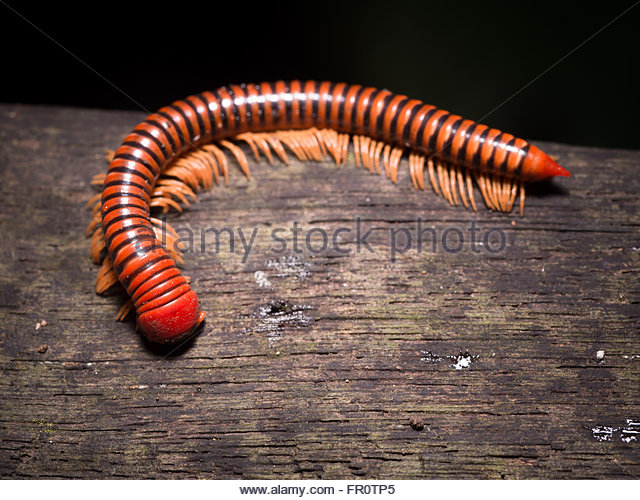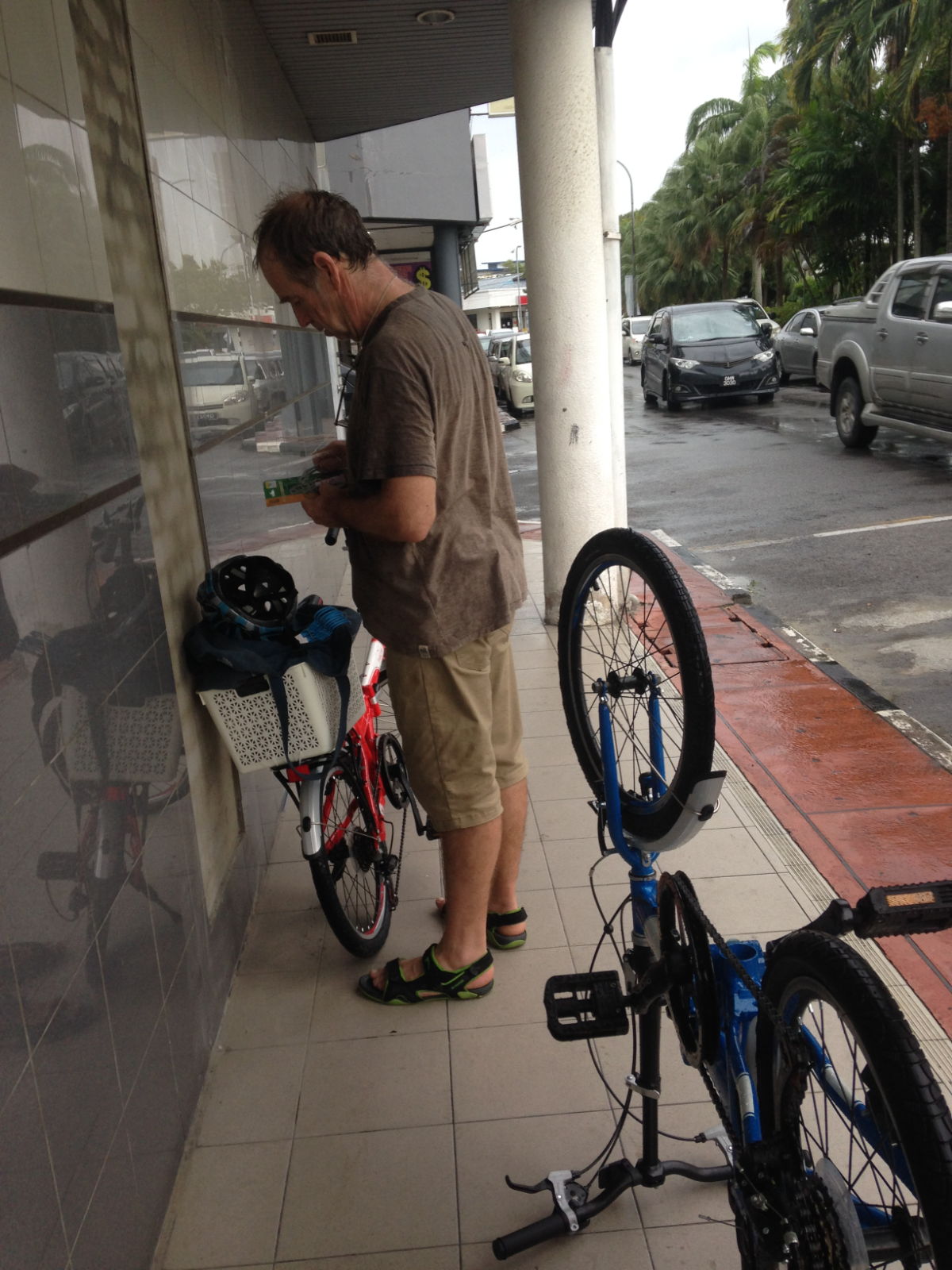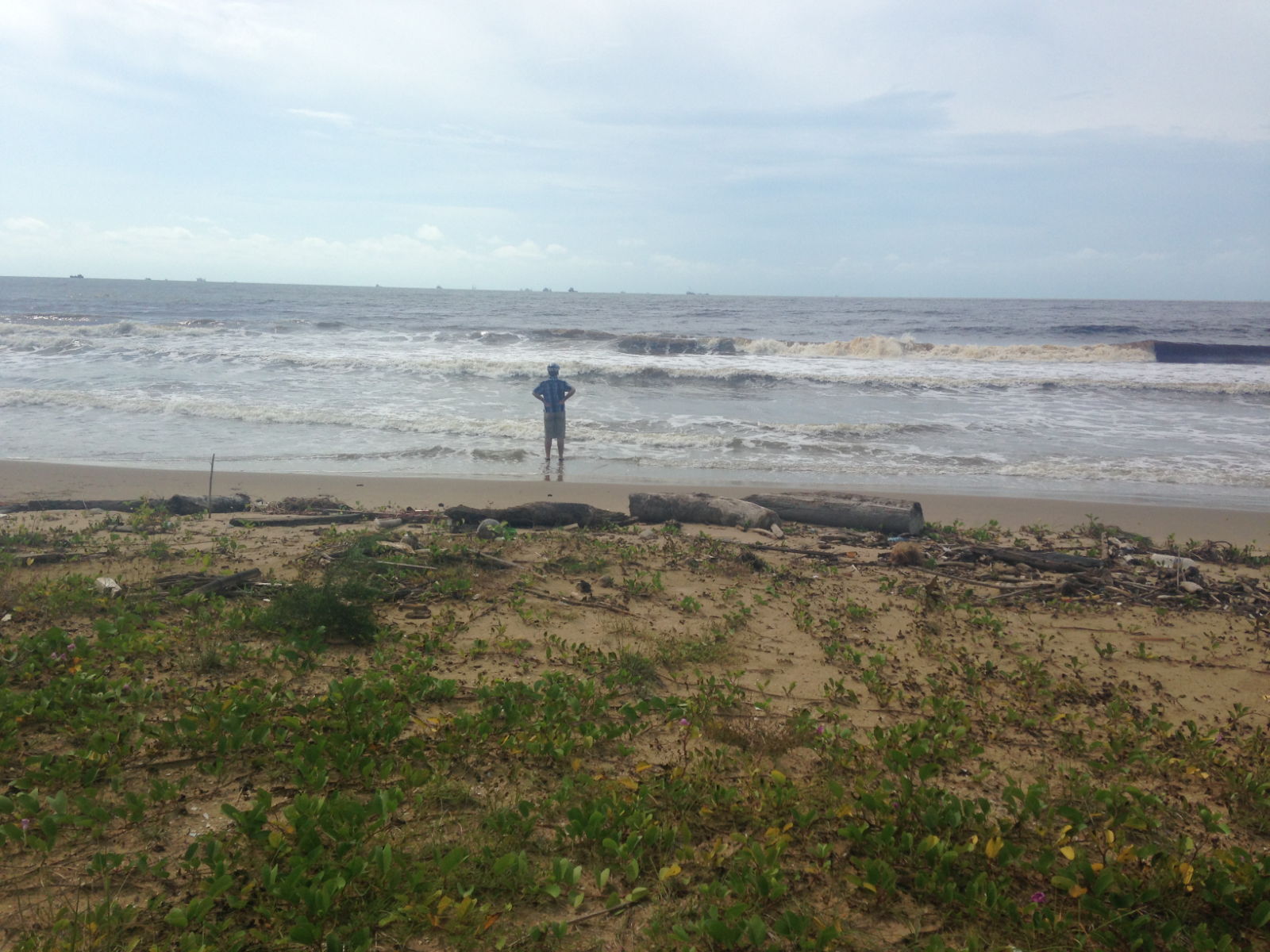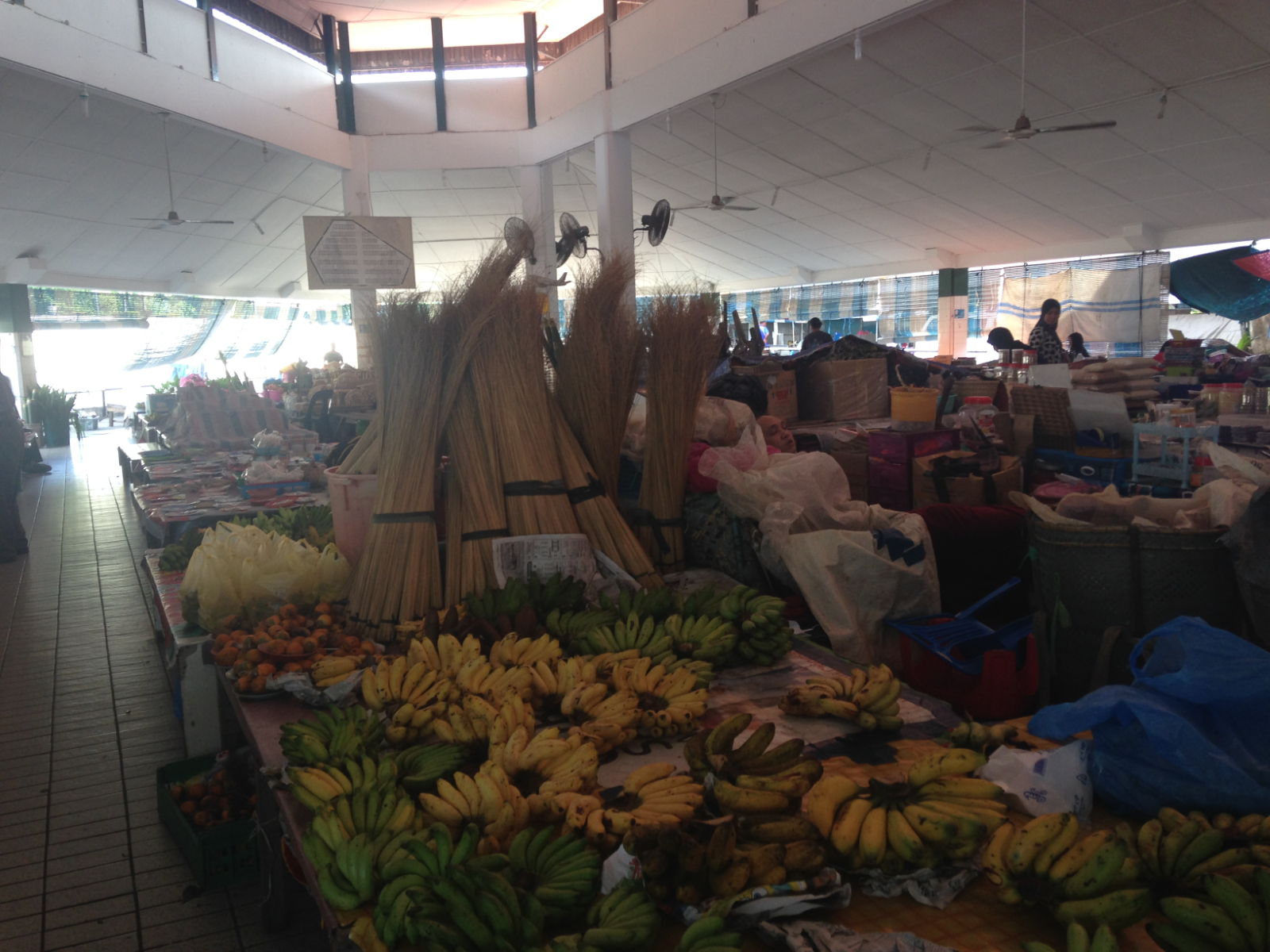Sunday April 1st
As planned, we were away by 6am just as the sun rose over the hills, for the long trip to Puerto Galera. Paul warned me that anchoring might prove tricky there. An Easter regatta was taking place in the area, so all the mooring buoys would be taken up by participants. Furthermore it could be crowded in the anchorage area, which might have coral on the sea bed (neither of which possibilities filled me with joy). No chocolate eggs for us that Easter Day; in fact there was nothing to indicate that it was Easter at all apart from notes on the calendar. Our Easter Sunday was spent mostly at sea; a sea with increasingly high waves that created a bucking and rolling motion and was very generous with its spray! Paul got the Iridium phone working to enable us to send and receive messages and calls during our Pacific voyage later this year, while I stayed below reading, writing and typing. We didn’t have a guide book for the Philippines, but an internet search informed me that Puerto Galera means ‘the port of Galleons’ in Spanish, dating from the Spanish settlement during the 16th century, and the town proudly boasts an entry in the ‘Club of the Most Beautiful Bays of the World’. It also has a lively nightlife and is a popular resort for divers and snorkelers. One of the more interesting facts that caught my eye is that remote parts of its mountainsides are home to indigenous tribes which have virtually no contact with the outside world.
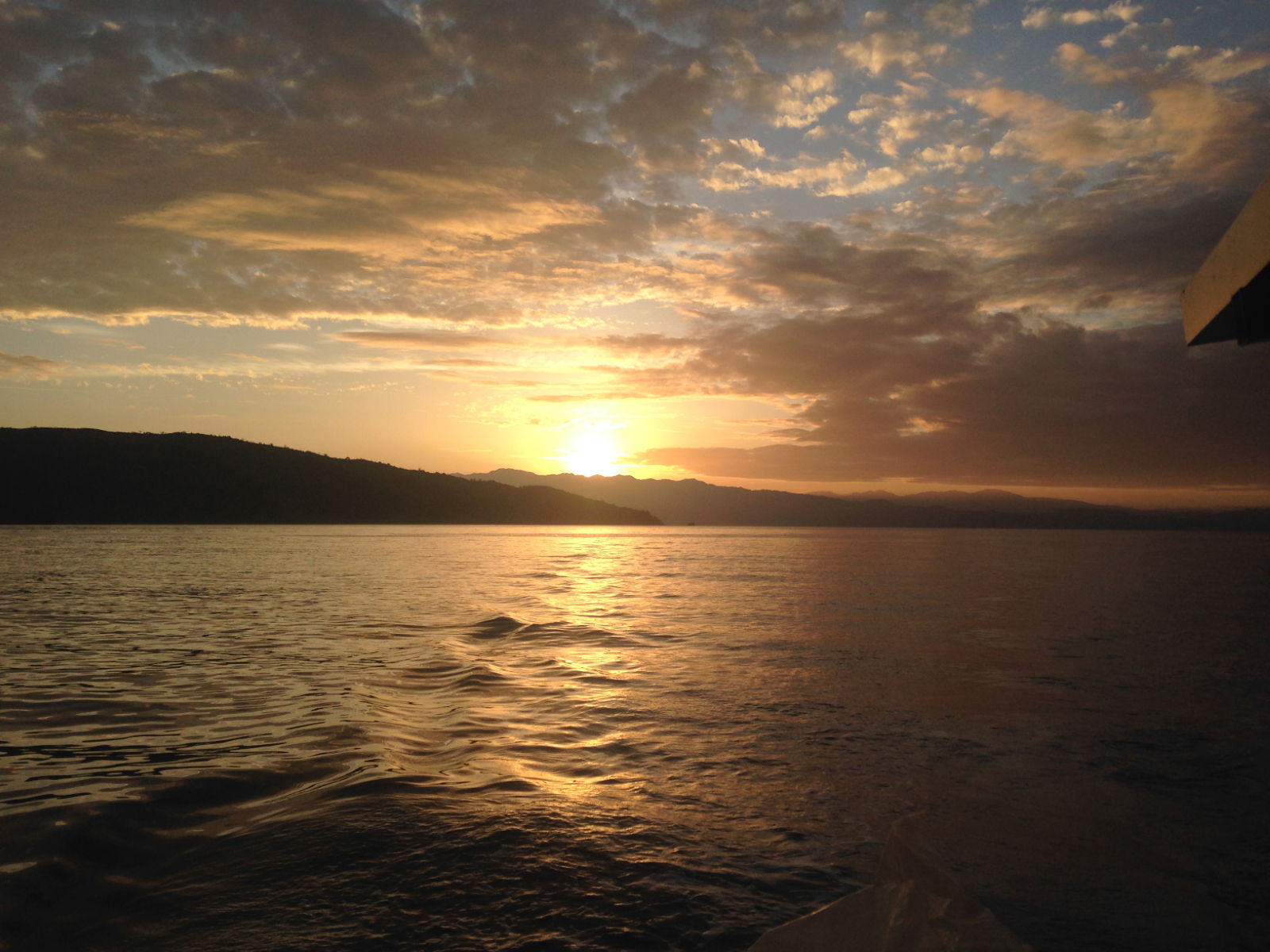
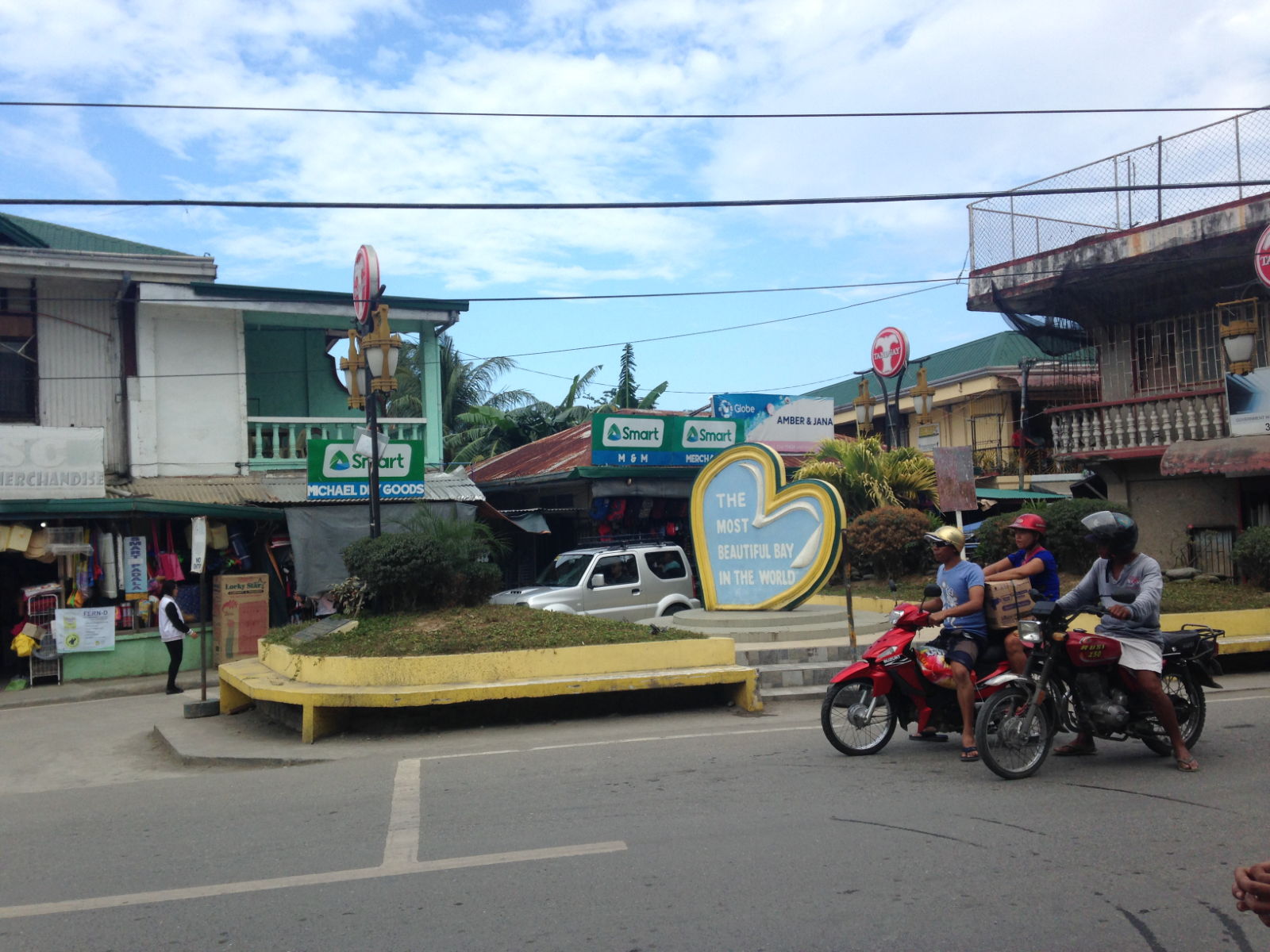

Anchoring proved to be thankfully easy when we arrived. On our second attempt we were secure in 13 metres of water in a coral-free spot with no other boats around, in the lee of abundant forested hills dotted with holiday dwellings. I was fascinated to see a small low-flying aircraft coming in to land over the water at the nearby airport just after we’d anchored. We watched it land and take off several times during our time there.


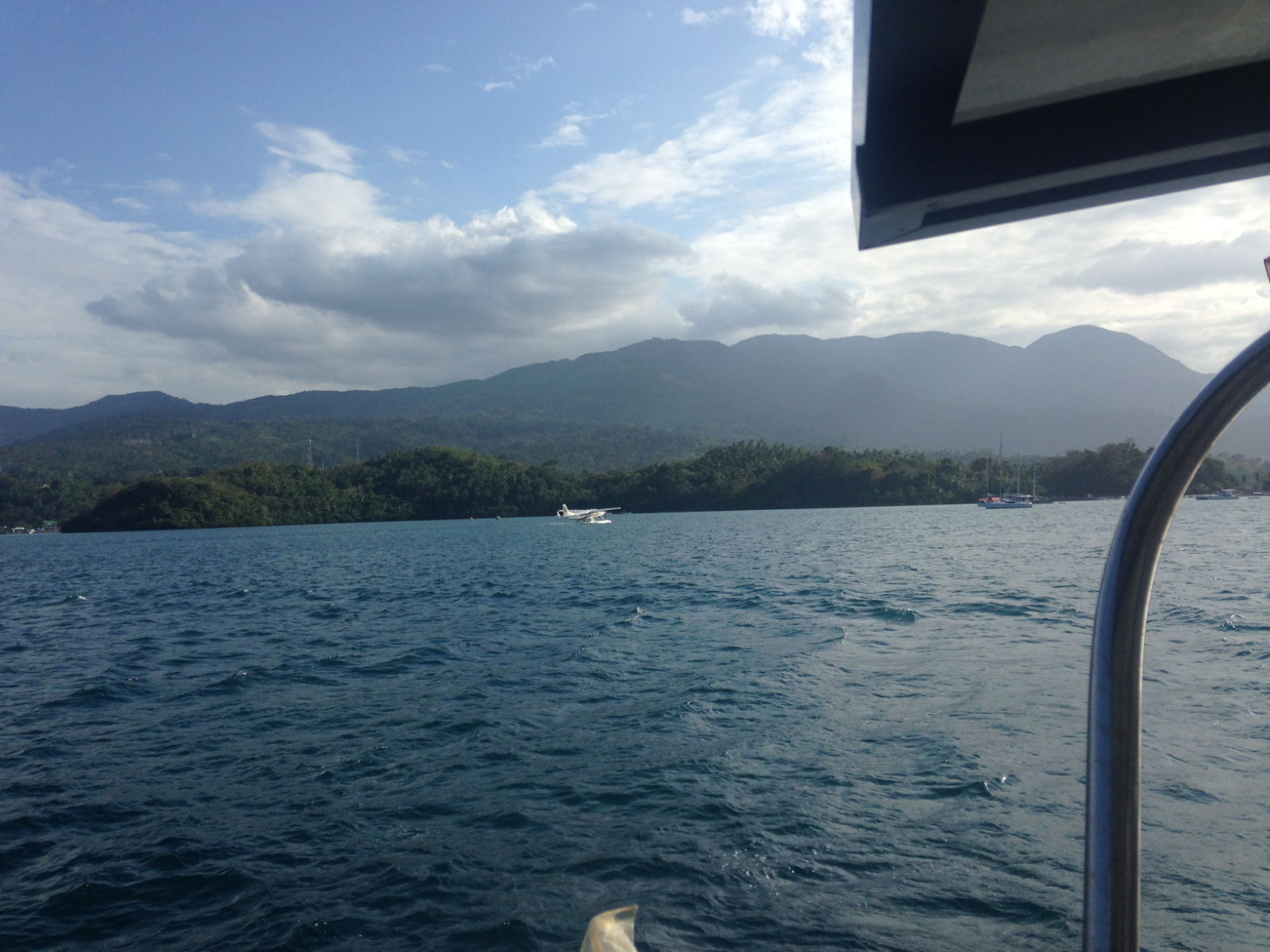
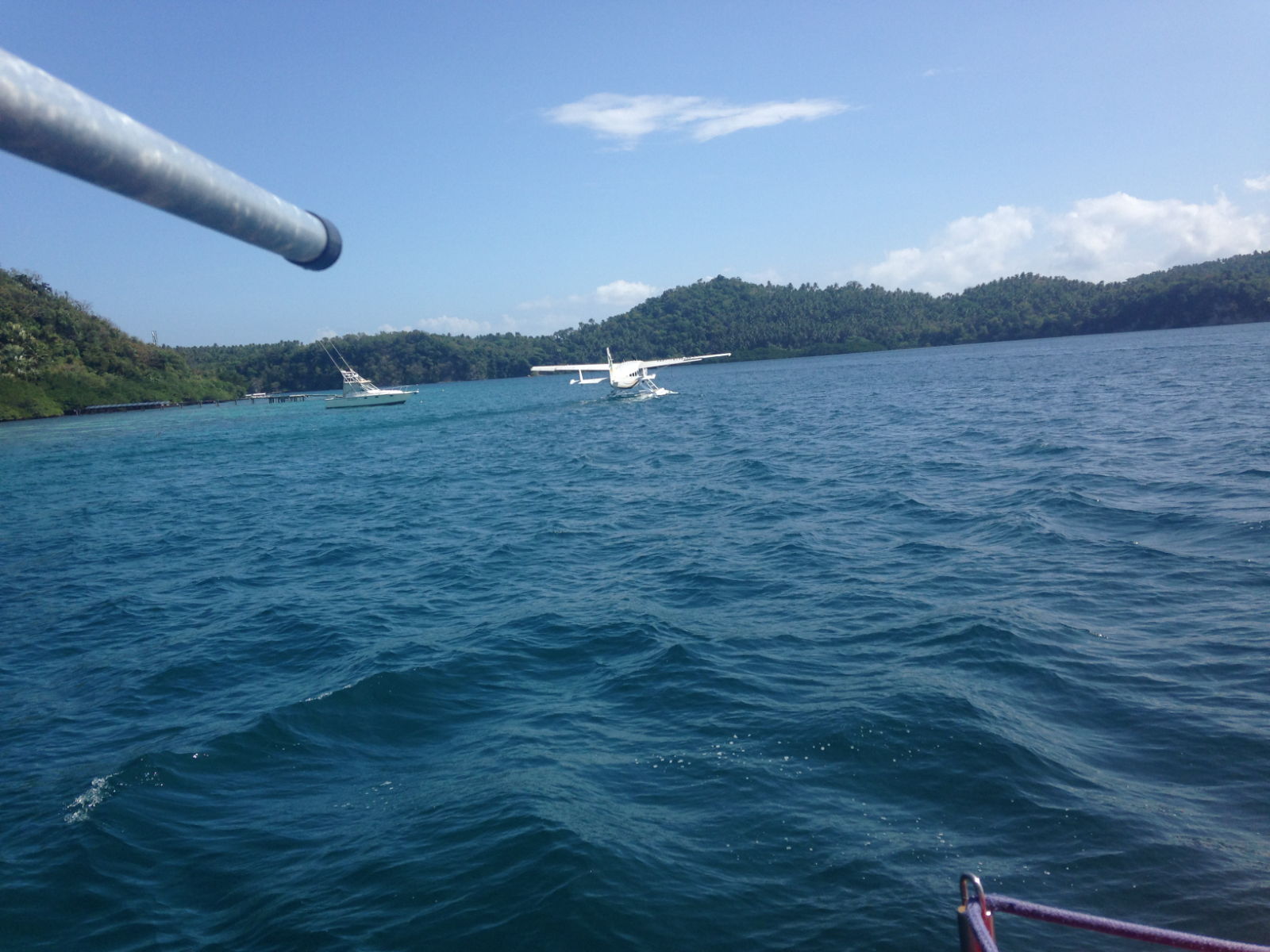
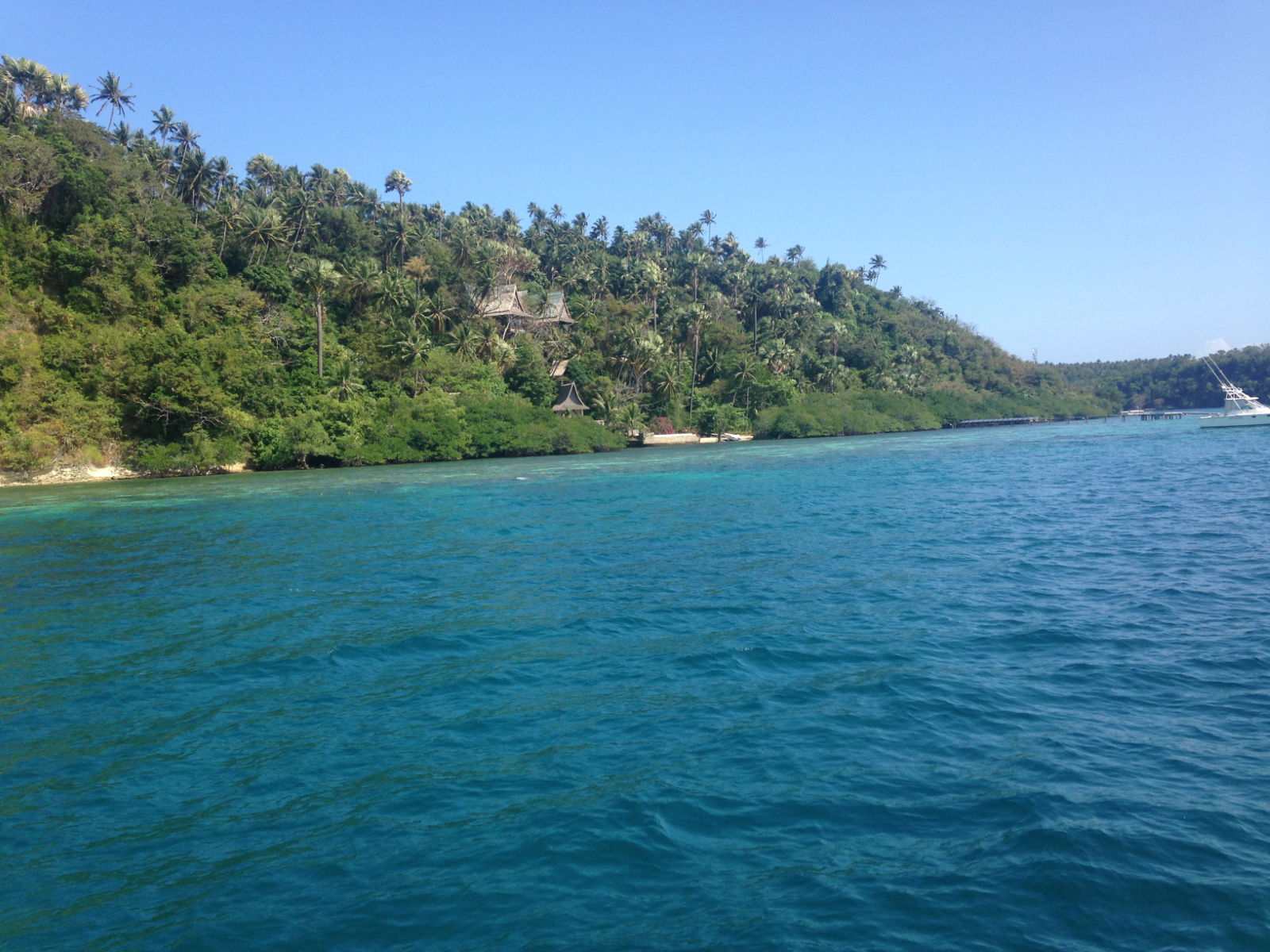
Keen to see the yacht club we had heard about from other yacht owners before it got too dark, we lowered the dinghy to go ashore. It was quite some distance away and the water was murky so we didn’t see the rocks near the surface as we neared the jetty where other dinghies were tied up. Our dinghy bounced on them with a harsh grinding noise, forcing us to switch to rowing pretty smartish. This was all witnessed by a small group of resort staff waiting in one of the shuttle boats who must have foreseen the end result of the route we were taking. They helpfully directed us away from the rocks, pointed out the correct way to go for the return journey, took our tender and directed us to the yacht club on the hill. On the steps leading up to it, we met a group of rather inebriated yachties from the regatta, one of whom informed us that they were on their way to The Rock and Roll Bar on the other side of the shore. ‘See you there’, he grinned as if it was the accepted thing to do after visiting the yacht club. The club had everything we wanted – drinks, wifi, a book swap facility and local information from the helpful staff.
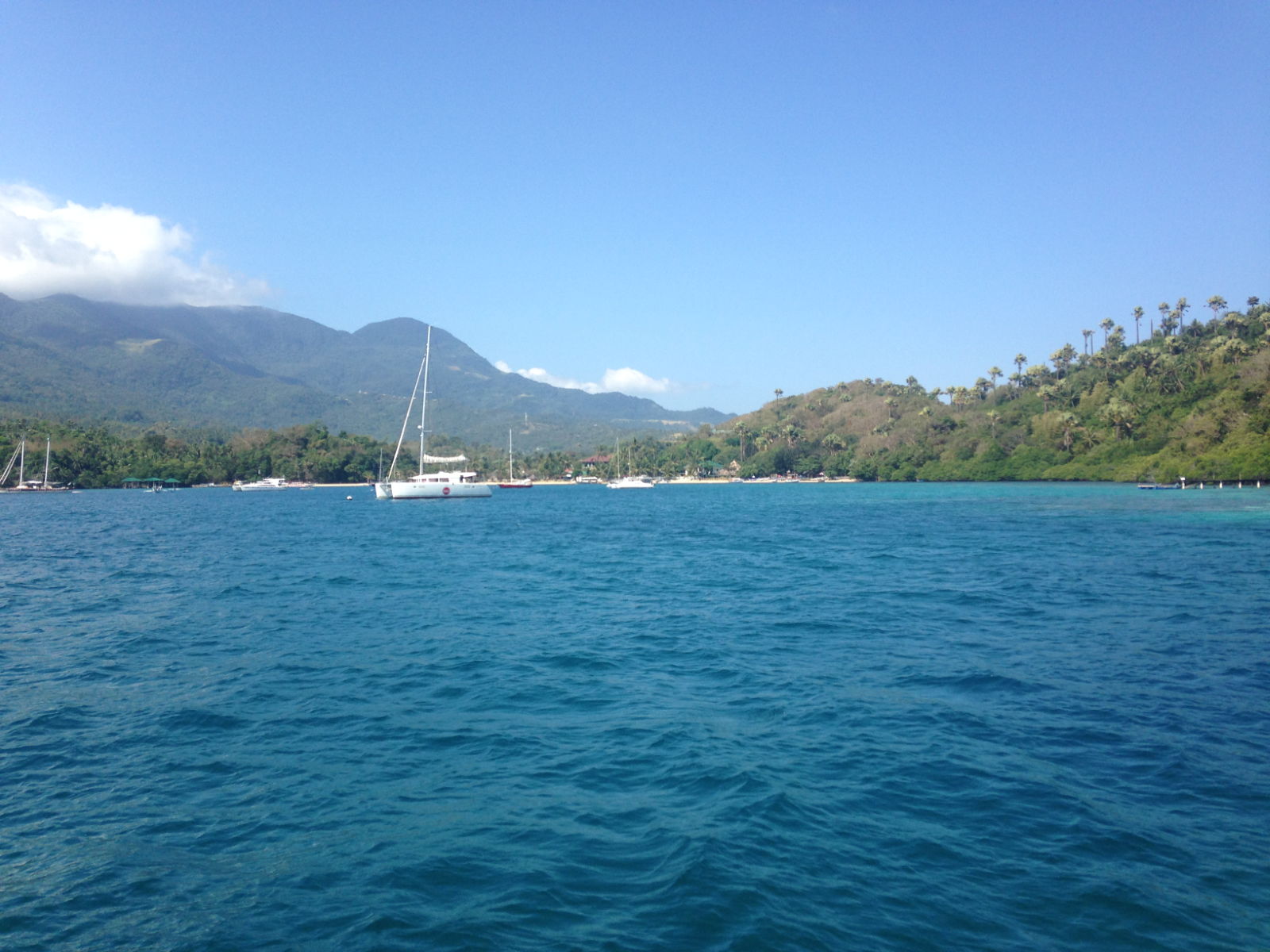

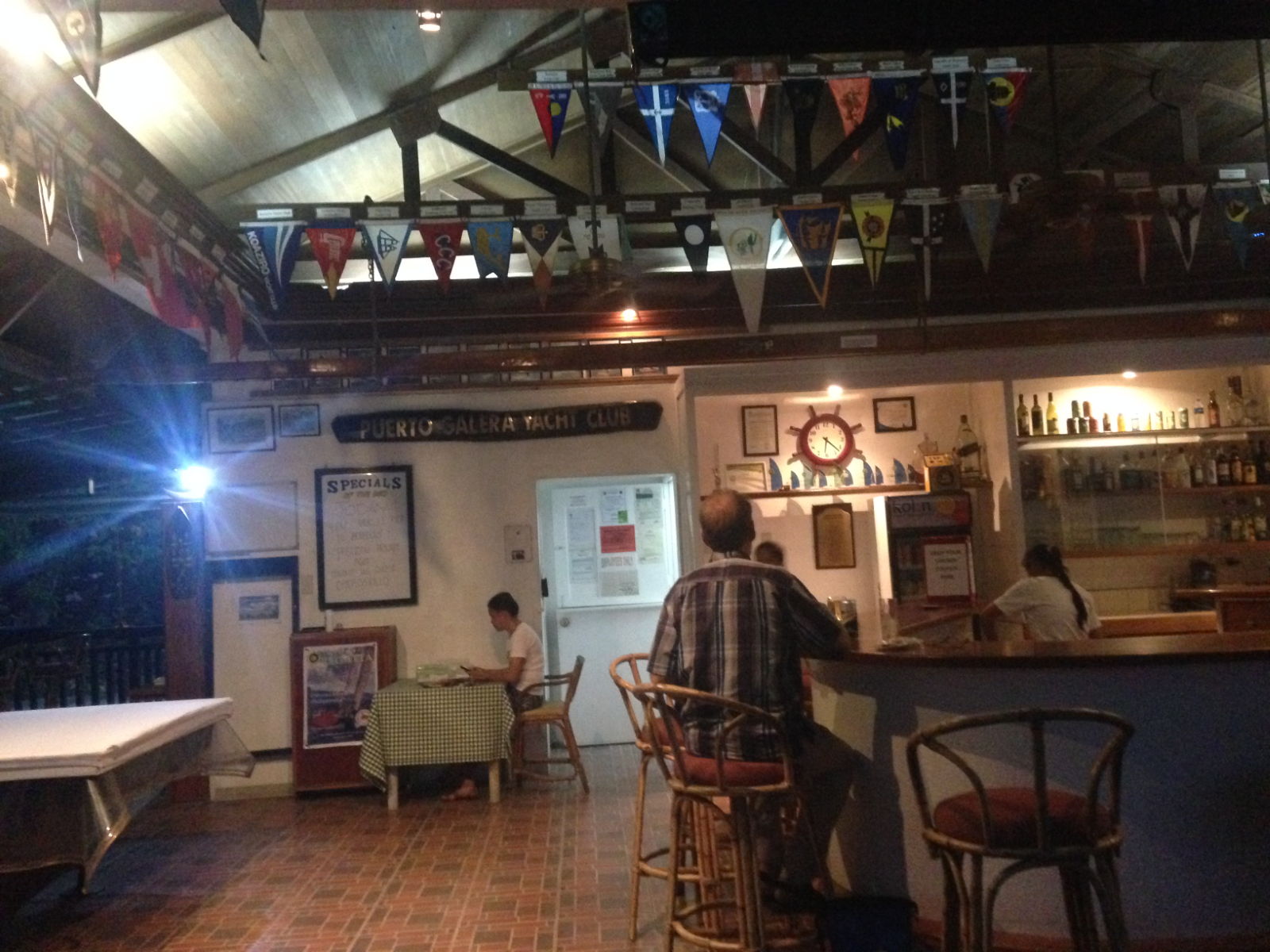
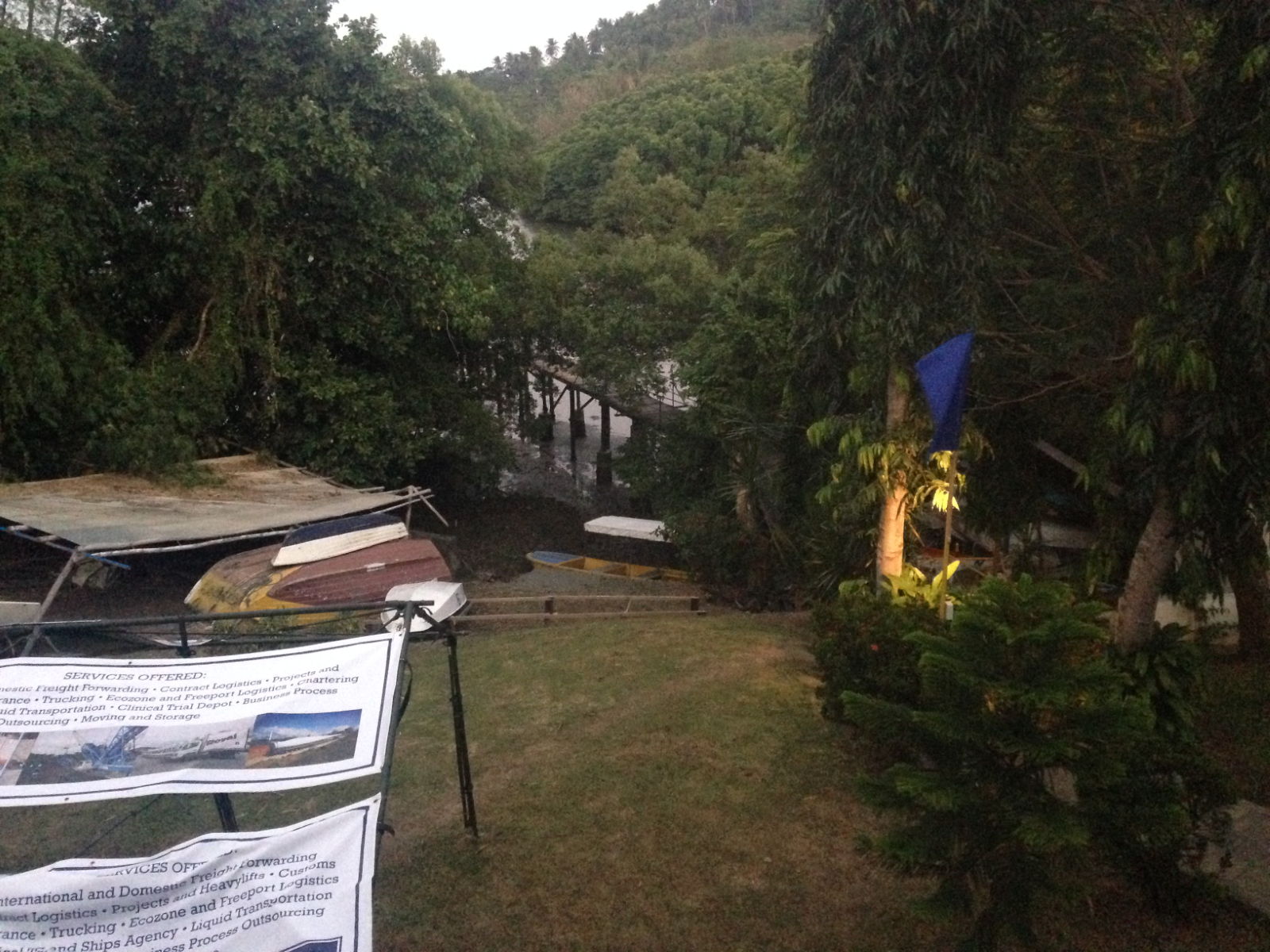
By the time we came to cross the channel to Puerto Galera’s shore it was dark and we were careful to follow the correct route to avoid the rocks (it was clearly marked by coloured wooden poles as it turned out). The Rock and Roll Bar was easy to spot from its prominent position opposite the dinghy park along with the hubbub of noise emanating from it. The regatta guys were too busy discussing the day’s successes and enjoying more refreshments to notice us strolling past. It was too dark to see the town properly but the narrow, lively main street looked intriguing, and was different again from any other place we’d visited. We ate in an Italian restaurant of all places. Sitting at a table in the busy street, we ate pizza and pasta and I had a huge glass of red wine while watching the shopkeepers clean and close up their stores, and the antics of kids and dogs playing in the street. There was certainly no shortage of things to look at. Returning to the dinghy, we discovered that our earlier encounter with rocks must have caused the pin to split in the propeller again so it was a long tiring row back to the boat for Paul, but great exercise 😉


Easter Monday
Our excursion to Batangus to check in, began at 10am on a beautiful sunny morning – and at 25 degrees, notably cooler than those we’d become used to in Malaysia. We parked the dinghy near the ferry terminal ready to board the 10 45 ferry. We had 30 minutes to wait, along with several other people who like us, had been guided to the ticket kiosk by a staff member from the ‘Father and Son’ line to catch the first ferry due. It was a great place to sit and people-watch. I am becoming more enamoured with the Philippines the more I see of it. There is a ‘no nonsense’ but friendly attitude inherent in the people generally that makes it pleasant to interact with them even with a language barrier; I think it has a lot to do with facial expressions.



The ferry arrived 20 minutes late and boarding was more of a chaotic free for all compared to the orderly process we comply with for health and safety regulations in the UK. We were amused to see a couple of staff members with ‘elderly assistance’ on their tee shirts. In order to get further along the boat you had to clamber over waist high, plastic partitions so anyone infirm would struggle for sure. Once we were all seated and underway, vendors selling little packets of salted peanuts and bottles of water picked their way through the passengers and we bought some nuts to share on the way. The seats weren’t uncomfortable exactly but were hard and there was considerable engine vibration that sent some people to sleep. Staff moved along the windows securing waterproof screens to protect us from the spray as the boat gathered speed and for the next hour or so most of us settled down to staring at our personal screens, as passengers on public transport are wont to these days. At around 12 30 the engine slowed and people began gathering their belongings ready to disembark.

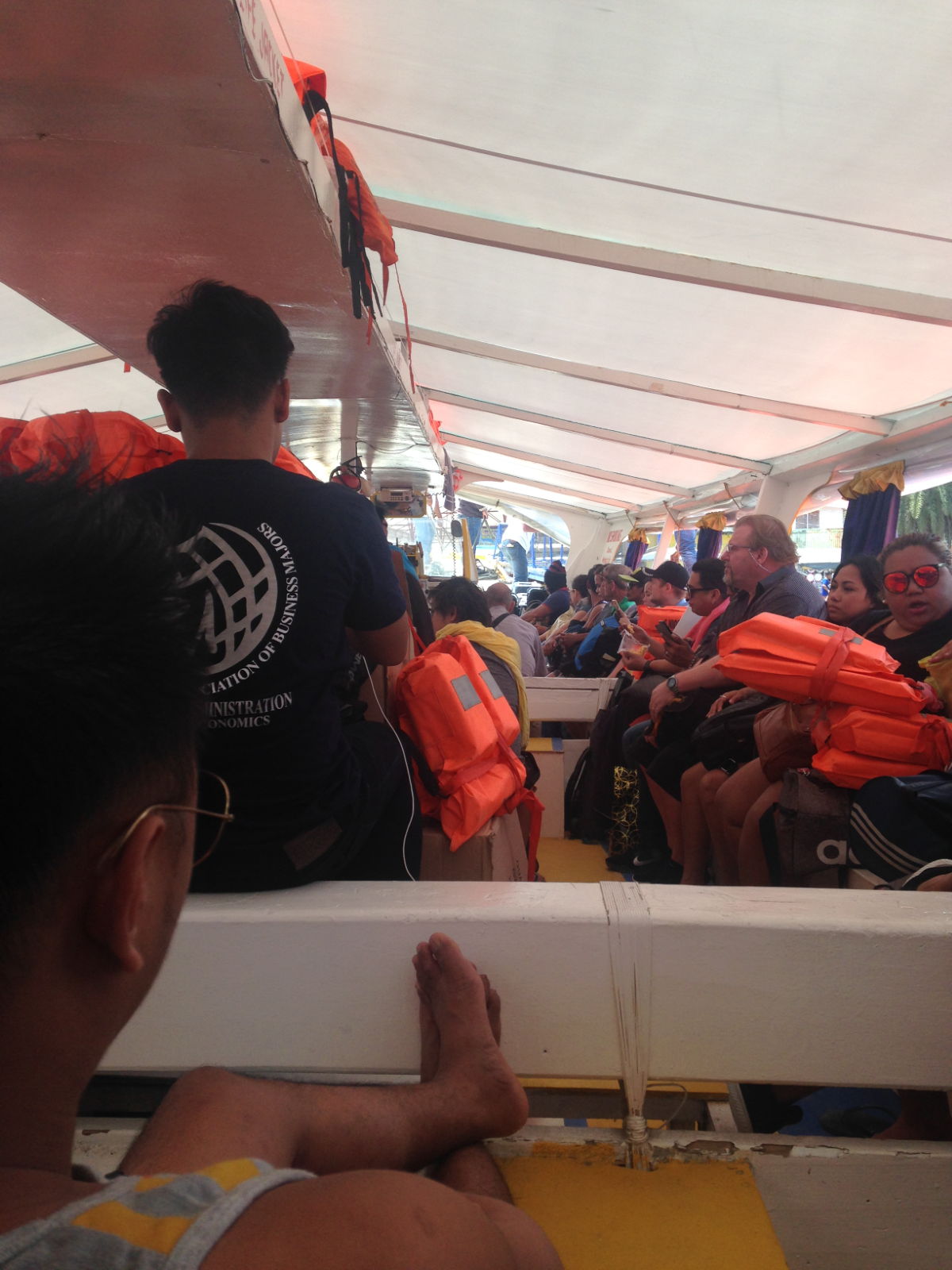
More food and drink vendors, along with taxi drivers and trikes were clamouring for custom once we were on shore. We could see the customs building across the way from us but we had to keep to a designated, coloured pedestrian walkway to get to it. Inside the air-conditioned building we were informed by a genial guy that officers were all currently occupied inspecting vessels but we were welcome to wait until one of them returned. This we were happy to do, as a welcome respite from the heat. It wasn’t long before an officer appeared and invited us over to his desk. Apart from the fact that we discovered we’d have to return there to check out, all went smoothly with paper and forms being passed back and forth, studied, copied and stamped in the way we’ve become used to. Immigration was next and it was some distance away. We were told that taxis or trikes could be hired just outside the building to take us there. Bearing in mind we’d been inundated with offers when we got off the ferry, not a single one of either was around outside the building, despite a nearby security guard assuring us that one would ‘be along soon’. After 20 minutes in the heat, I was thirsty and becoming impatient so we walked back to the port area and hailed a trike there. There followed a heart-in-the-mouth fast ride along a busy, bumpy main road where cars and lorries whizzed past alarmingly close to us, but the driver was unfazed and soon we drew up outside a small building where a limping dog was scavenging in some rubbish and a boy of about ten approached us with his hand out for money. The driver said he’d wait for us and after another quick and trouble-free process, we were on our way to a supermarket recommended by the lady who had dealt with us in immigration.
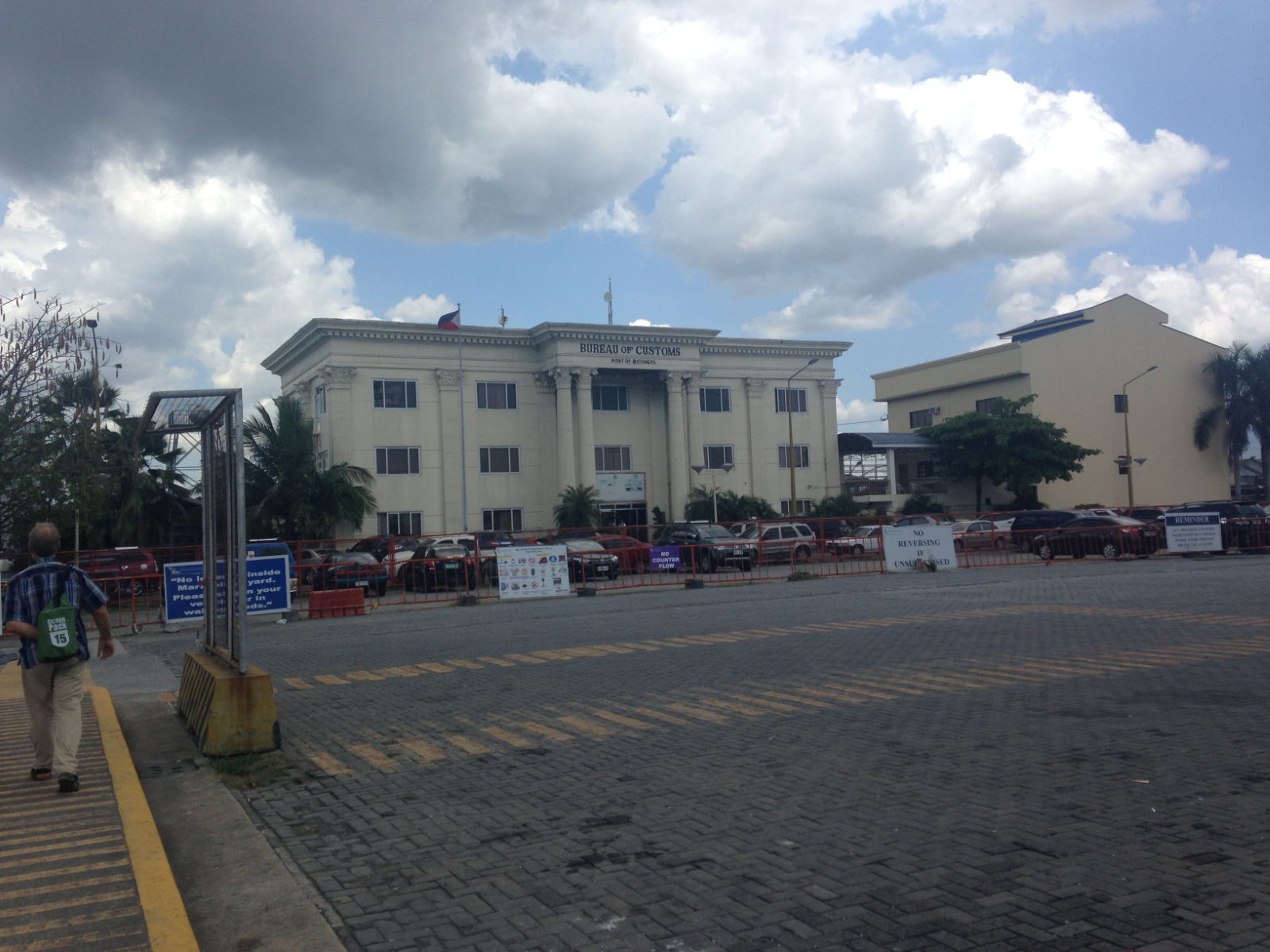
What we’d seen of Batangus hadn’t inspired us to linger and explore it further. Puerto Galera had much more to offer, so another trike was hailed for a ride back to the ferry terminal. A chaotic series of events to obtain tickets ensued when we got there. Keen to get the 3 30 ferry, Paul asked a man where the ticket office was. He immediately (and kindly) took Paul under his wing and proceeded to lead him at quite a pace, through the throngs of people, along pavements and around corners while explaining what he needed to ask for. I struggled to keep up and keep them in sight. To be fair, I think he thought Paul was on his own, but with his help we made the ferry on time instead of having to wait another hour. Fewer people were on board this time and with a different company on a faster boat, the journey was shorter. It was low tide when we reached the dinghy, which was well and truly beached on the mud. With the help of a French guy, who happened to be tying up his dinghy, Paul managed to get it back in the water, watched by a little girl who looked a bit doubtful about the success of the mission (see pic below)
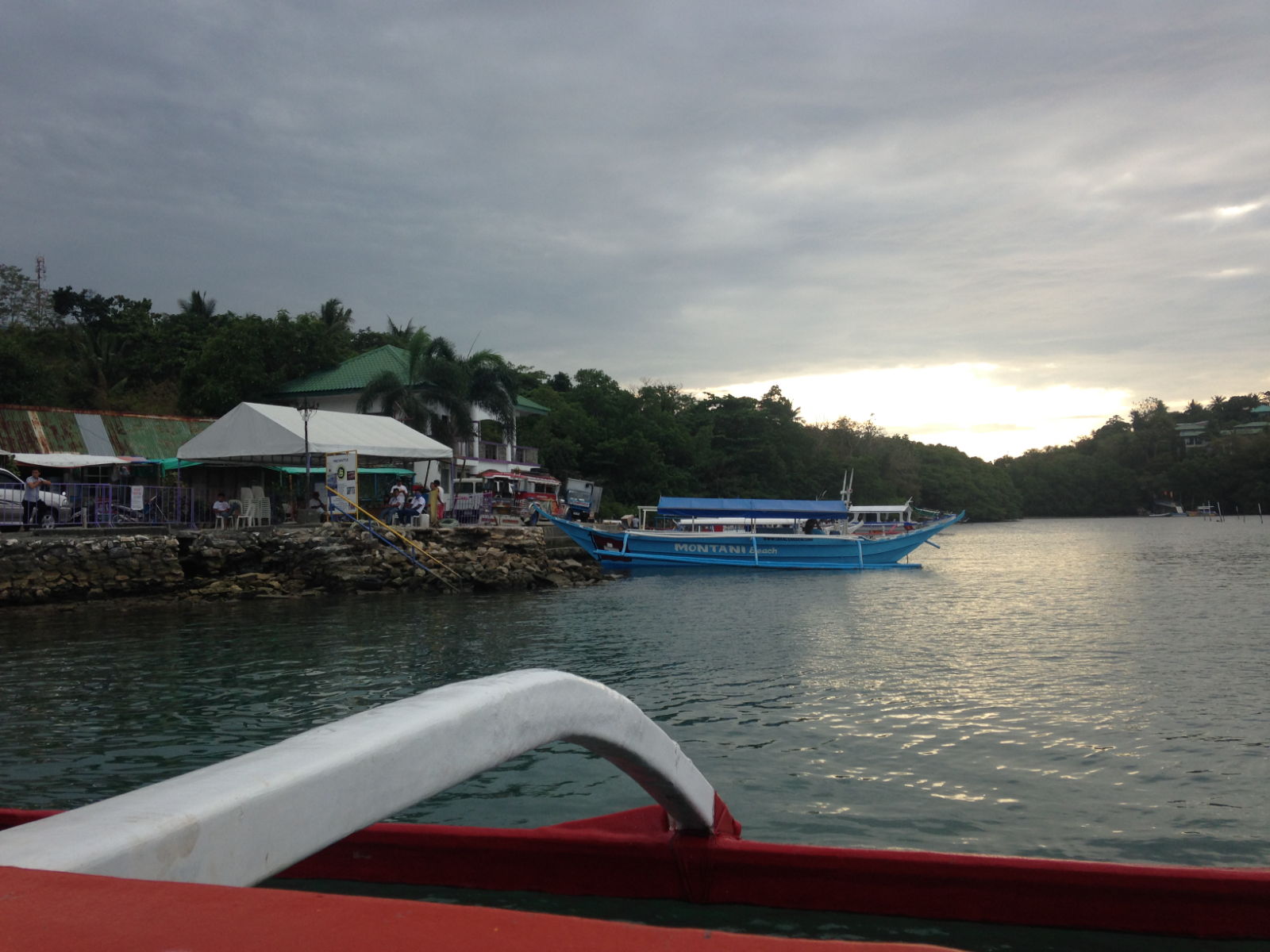
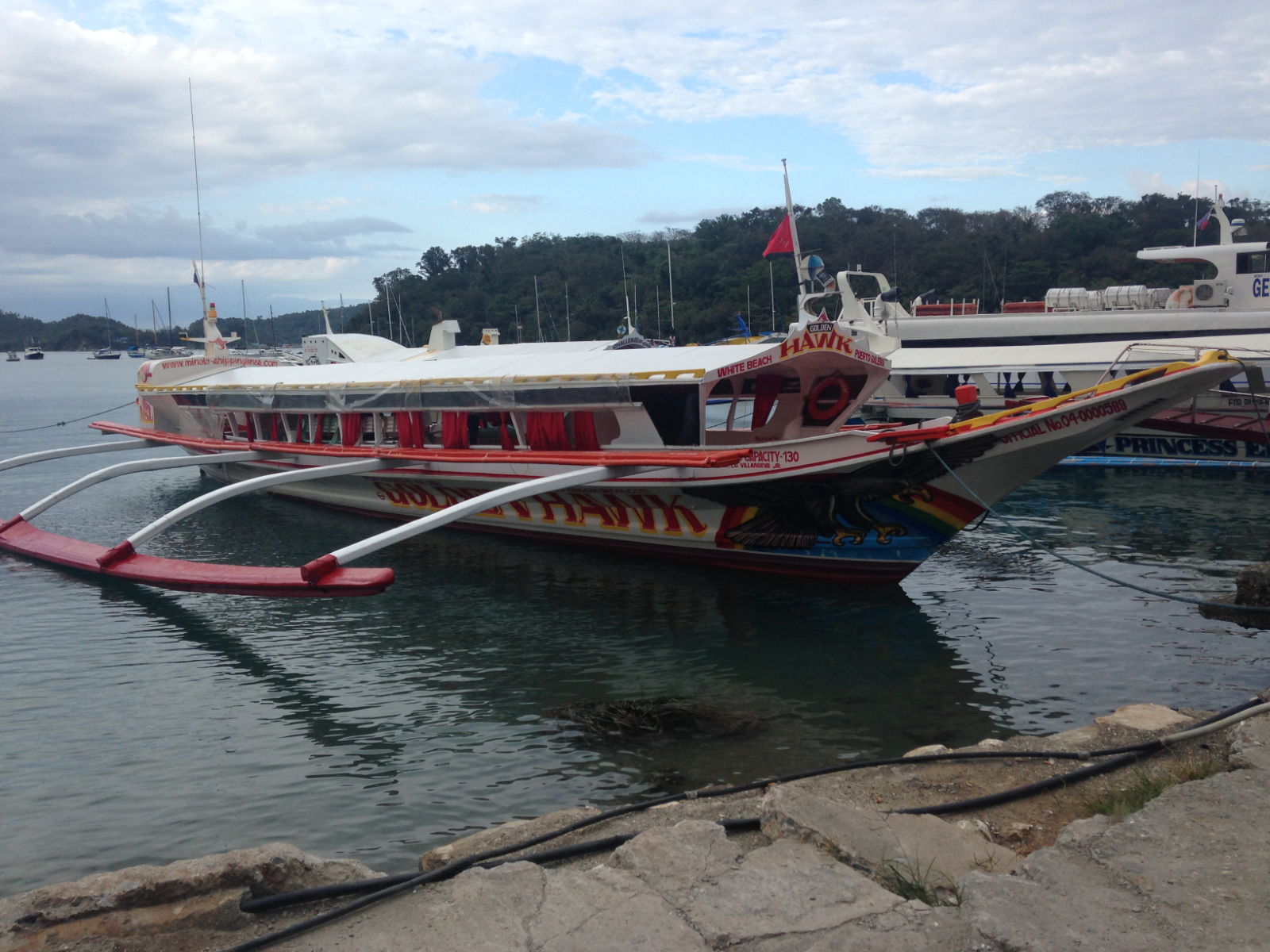

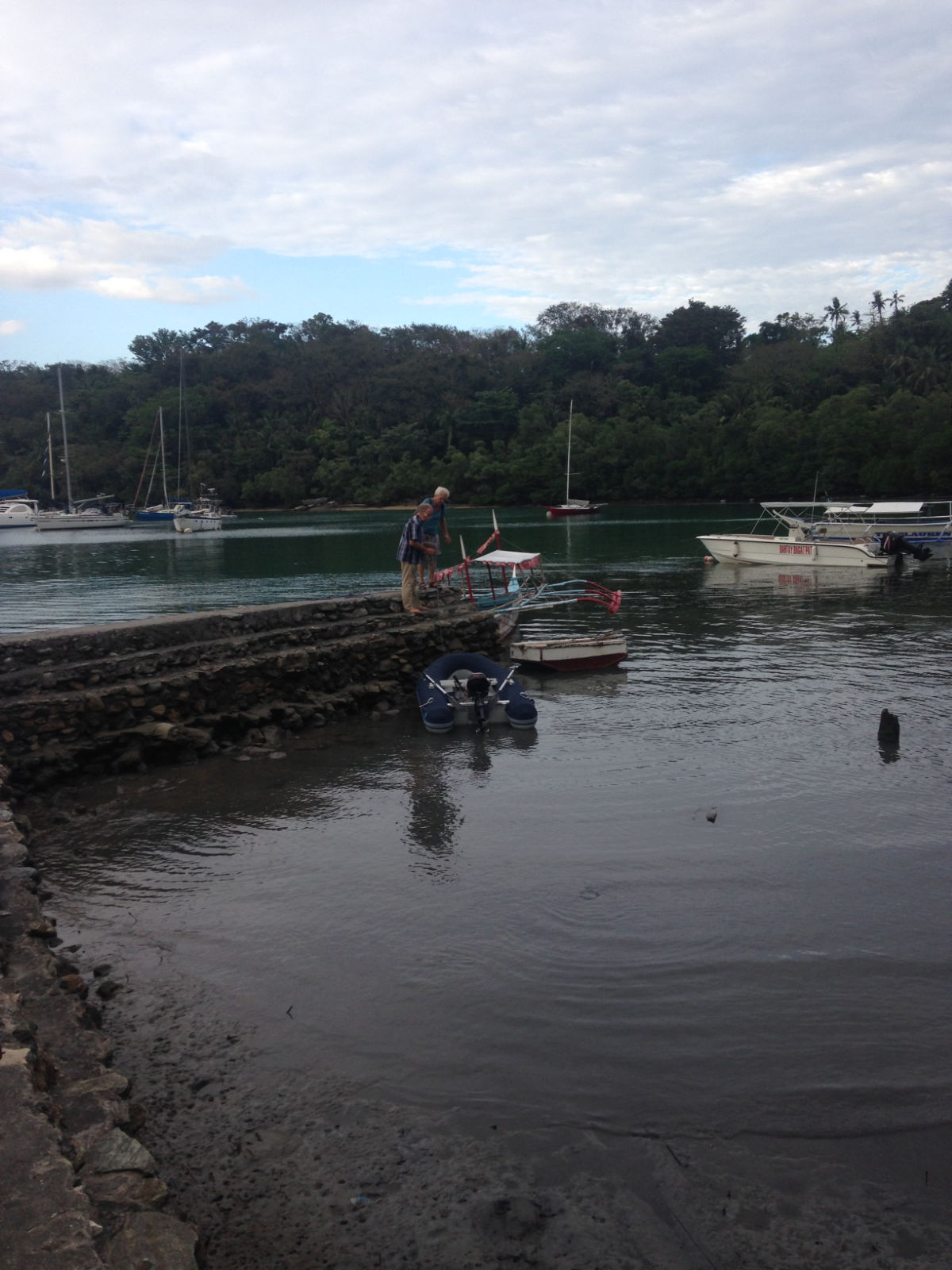
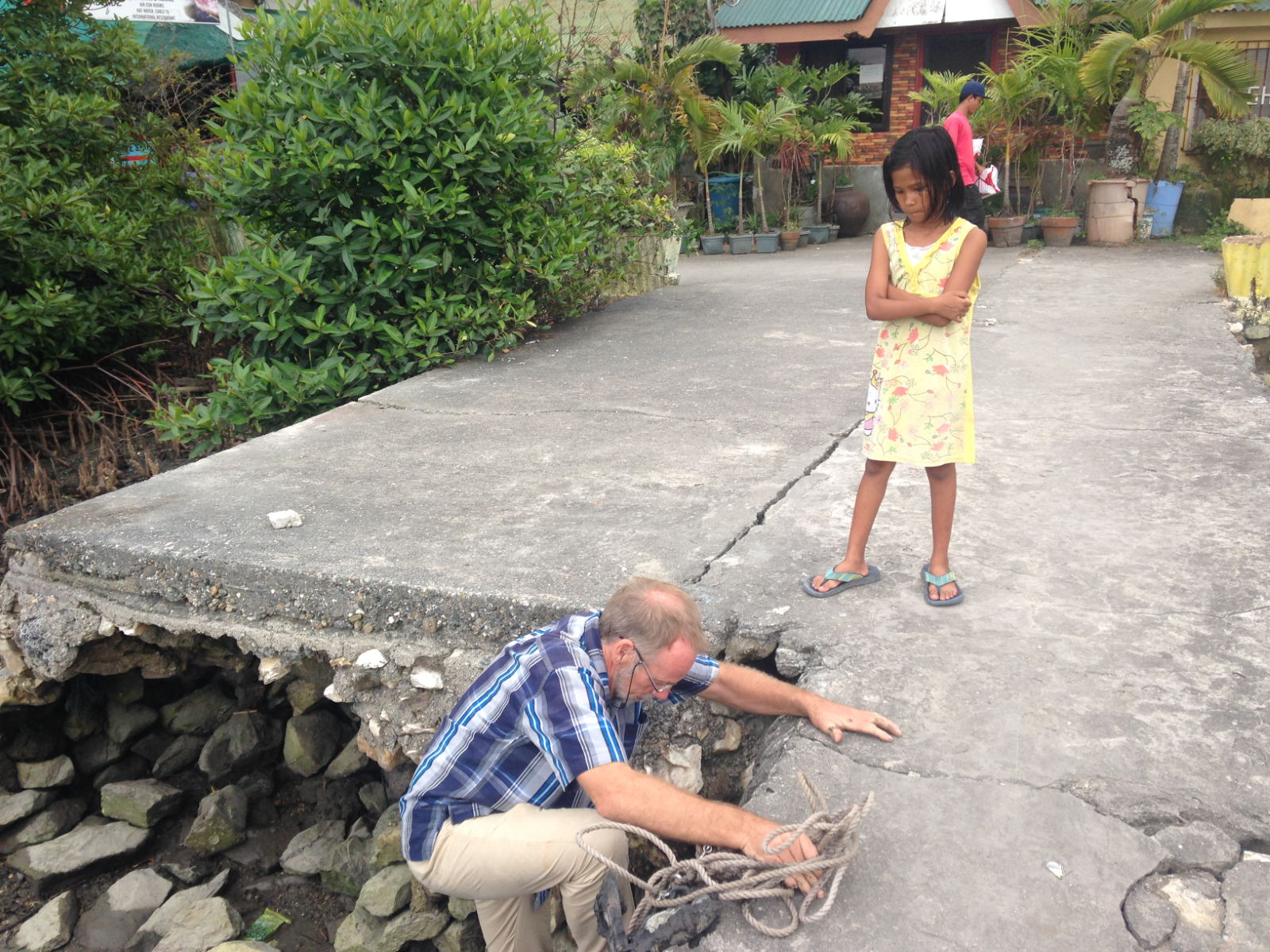
We moved to a new location the following day as the regatta had ended. It was much closer to the shore and meant we could take advantage of the free service boat provided by the yacht club. It wasn’t easy grabbing the mooring buoy, which had no rope on the top of it to catch with the boat hook. The force of holding it almost pulled me over the rail and it took both of us to hold on to it while Paul threaded the line through the metal hoop. Our first task after taking advantage of the handy shuttle service, was to find a laundry. Quite a heavy load had built up over the weeks so I was amazed to be told that our huge service wash would cost less than £2.

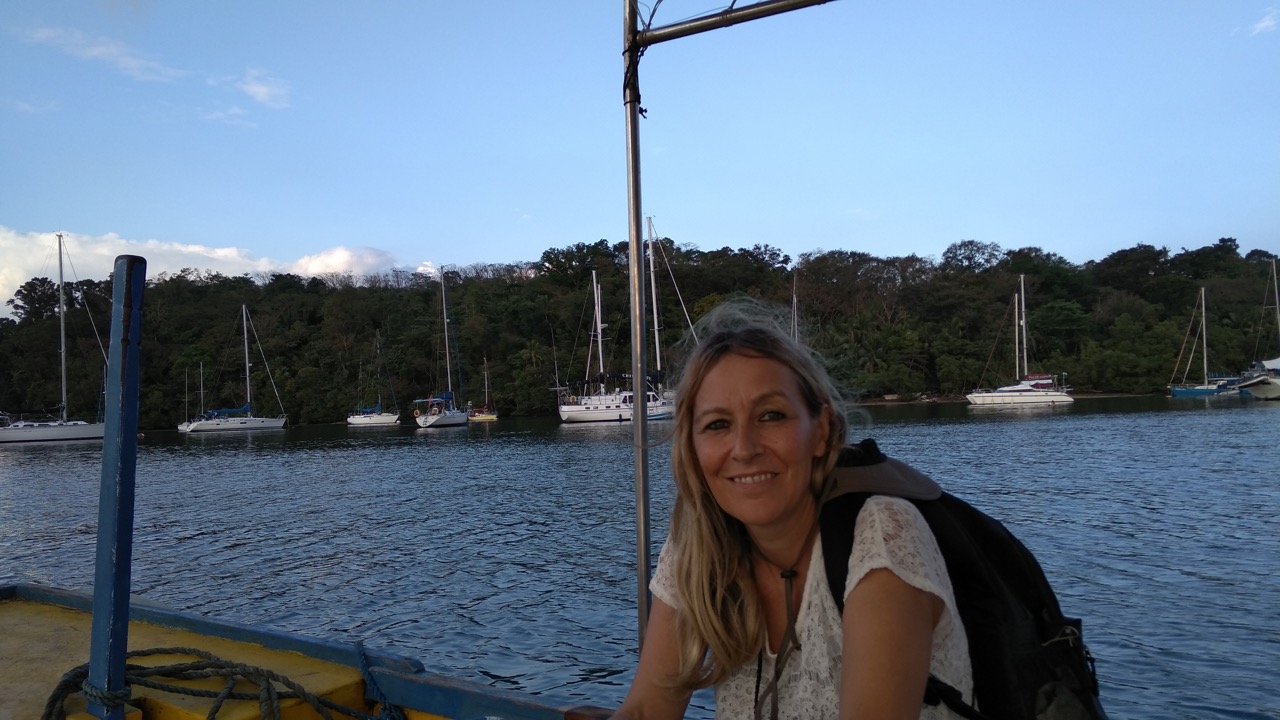
While ambling around the town for a proper look at it in daylight I spotted roosters in cages, with signs attached advertising them as good fighters, or with details of the next fight that would take place. Cock fighting is a popular sport here, not one that we were keen to see, obviously. I also noticed several stray dogs with ‘street’ wounds such as torn ears and patchy coats and the females looked like they had had litter after litter of pups. When you come across clearly unneutered animals it makes you realise what a rare sight they are on the streets at home. Before returning to the boat we walked down to the beach where it was quieter so that I could make a phone call. A couple of boys nearby were having great fun using stones and empty bottles playing at being barmen and were thrilled when Paul took their picture.
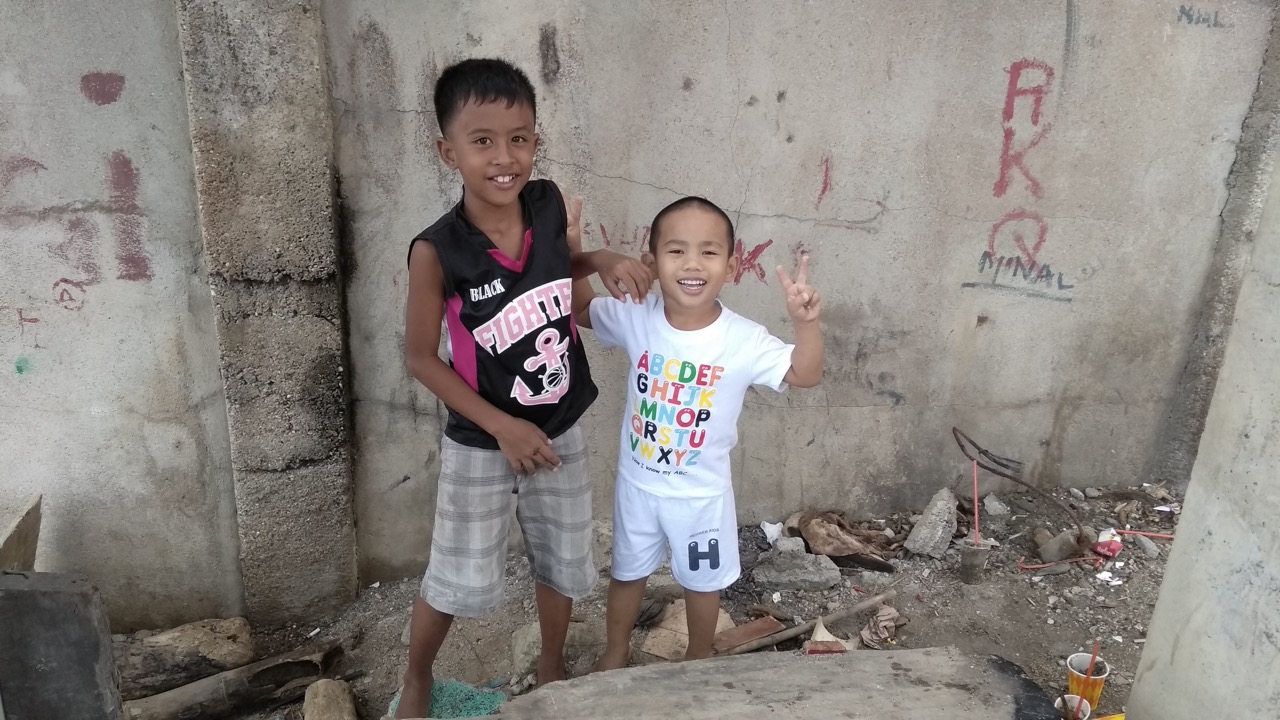
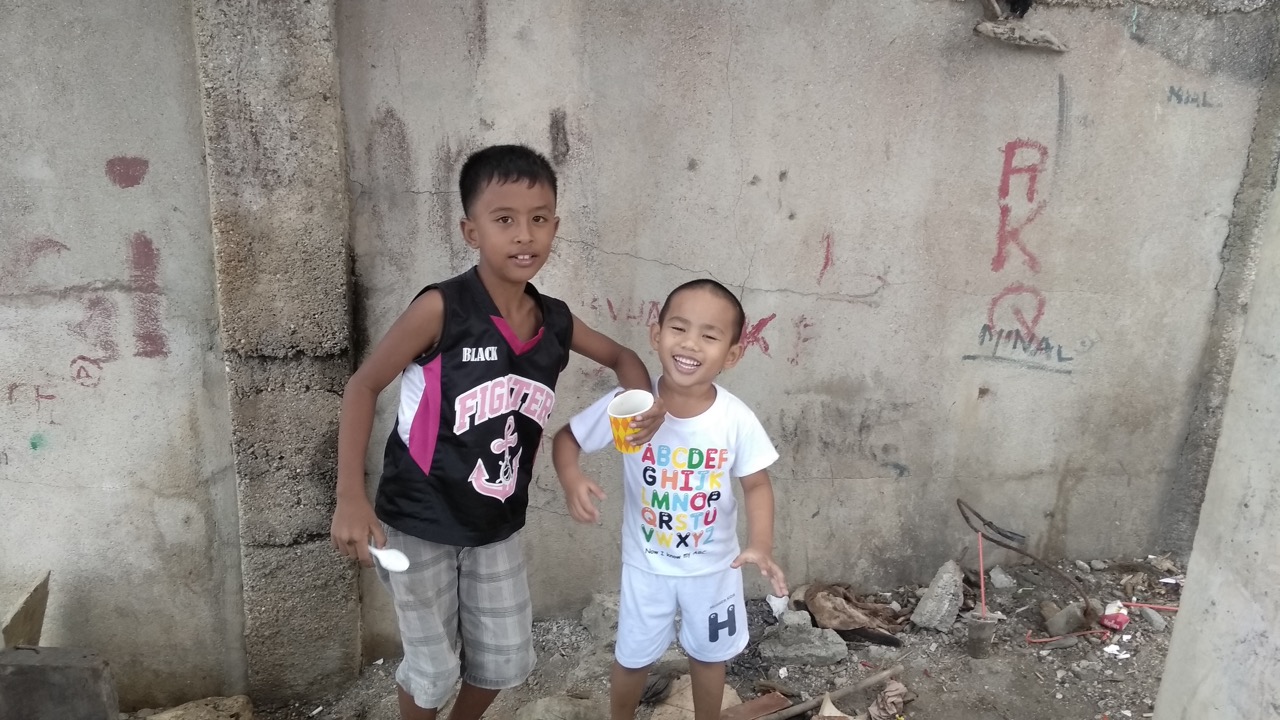
Paul made an early morning ferry journey back to Batangus to check us out on April 4th. I was glad I wasn’t needed, having plenty to catch up on on board. He returned at 1 30 with a tale of the usual confusion he’d encountered involving authority and hierarchy issues. Apparently, when he presented himself at the place we’d checked in at, he was told that to check out he’d have to go to the customs guy downstairs. Once there, the officer was outraged that the other people had checked us in in the first place because only he had the authority to do that, and if he had, then he would have checked us out at the same time and we wouldn’t have had to come back. It seems they may need to communicate with each other about consistency in their procedures 😉
We had laundry to collect so called the service boat for a pick up (could easily get used to that handy service). On shore, we returned to the fresh market we’d walked around the day before and bought some of the gorgeous mangoes we’ve taken a fancy to here. The town was very busy and noisy with the roar and thrum of various motor engines. I’m getting used to the nifty trikes now, though which are so much cheaper and more available than taxis.
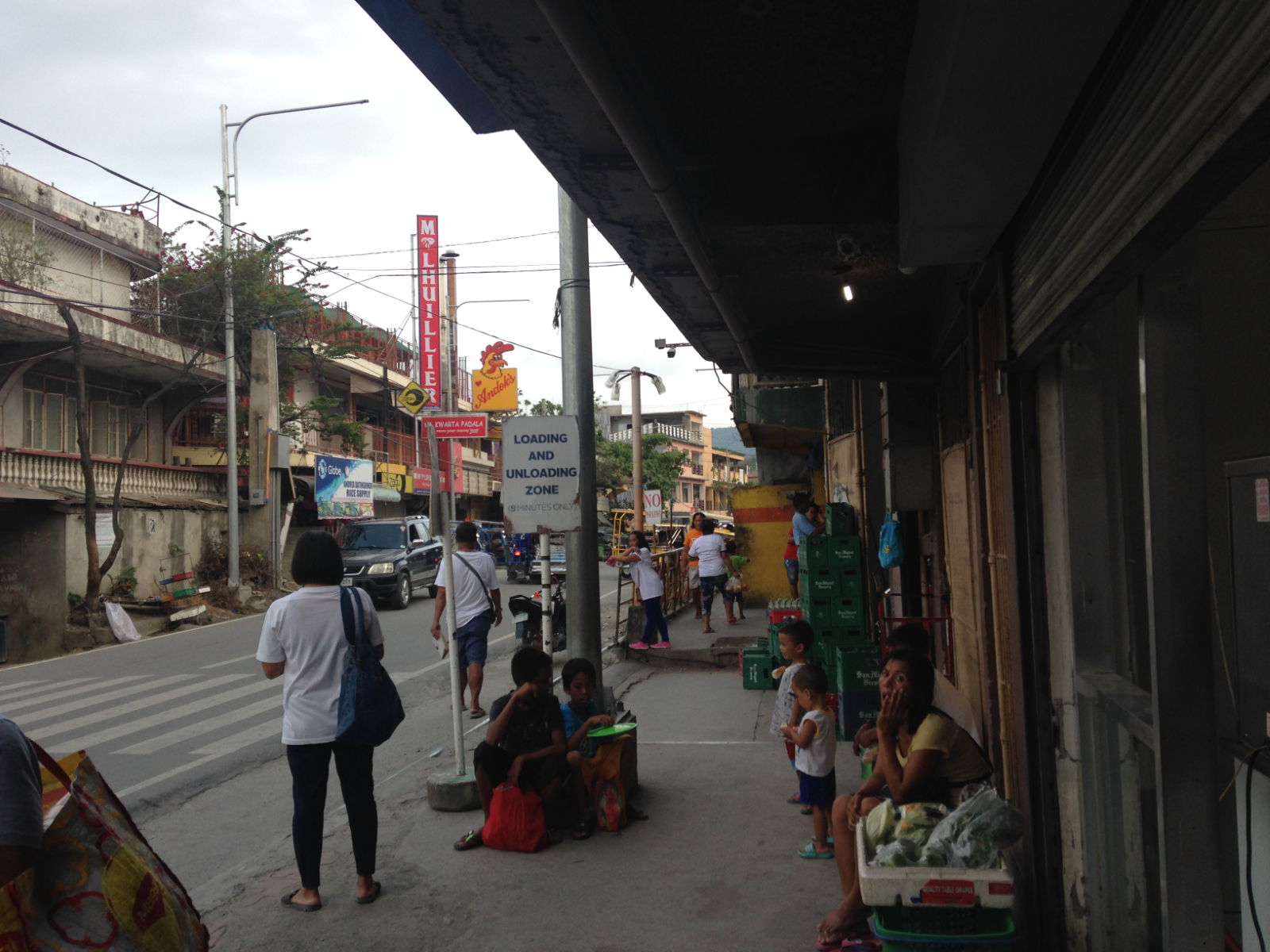
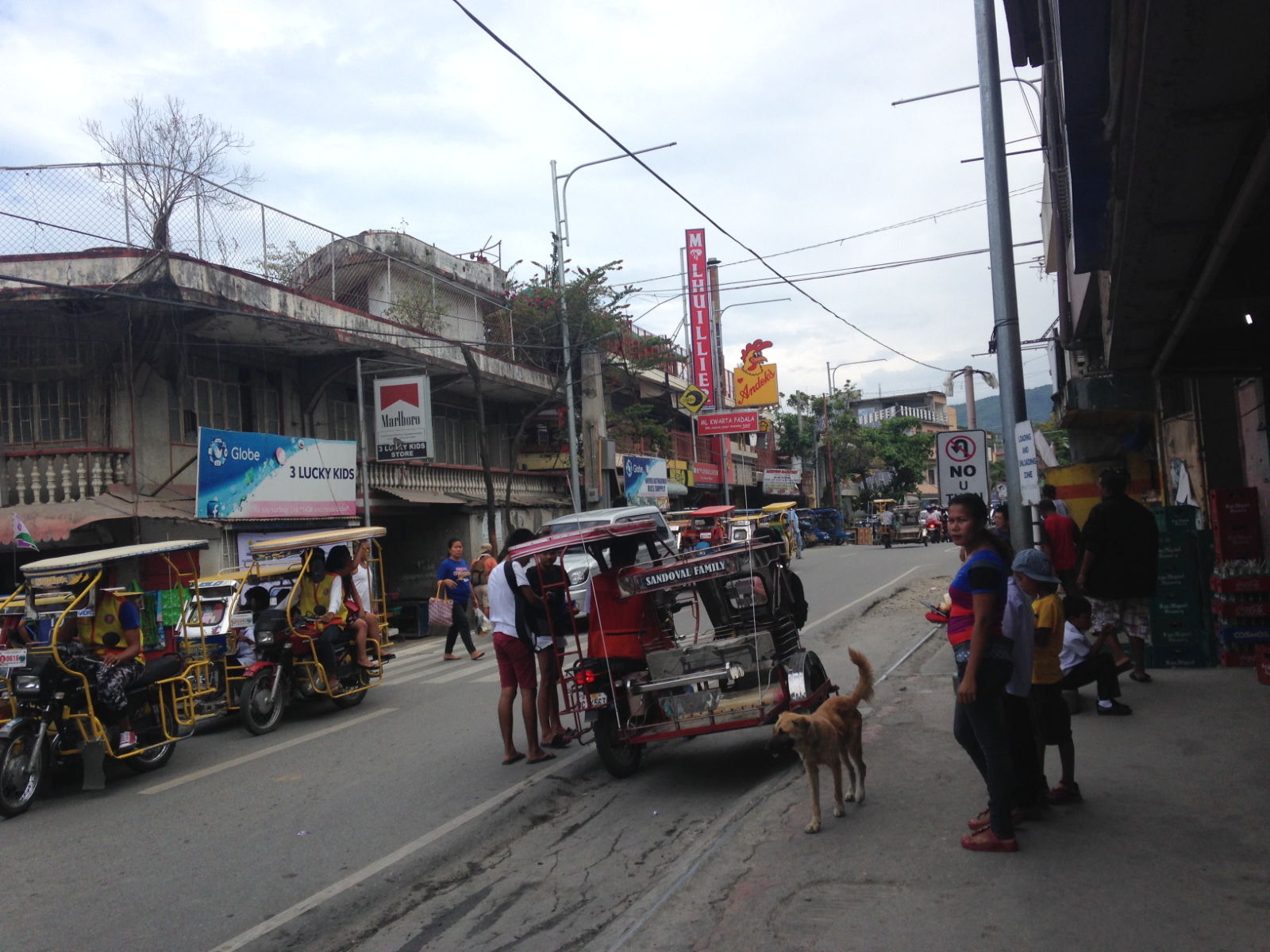

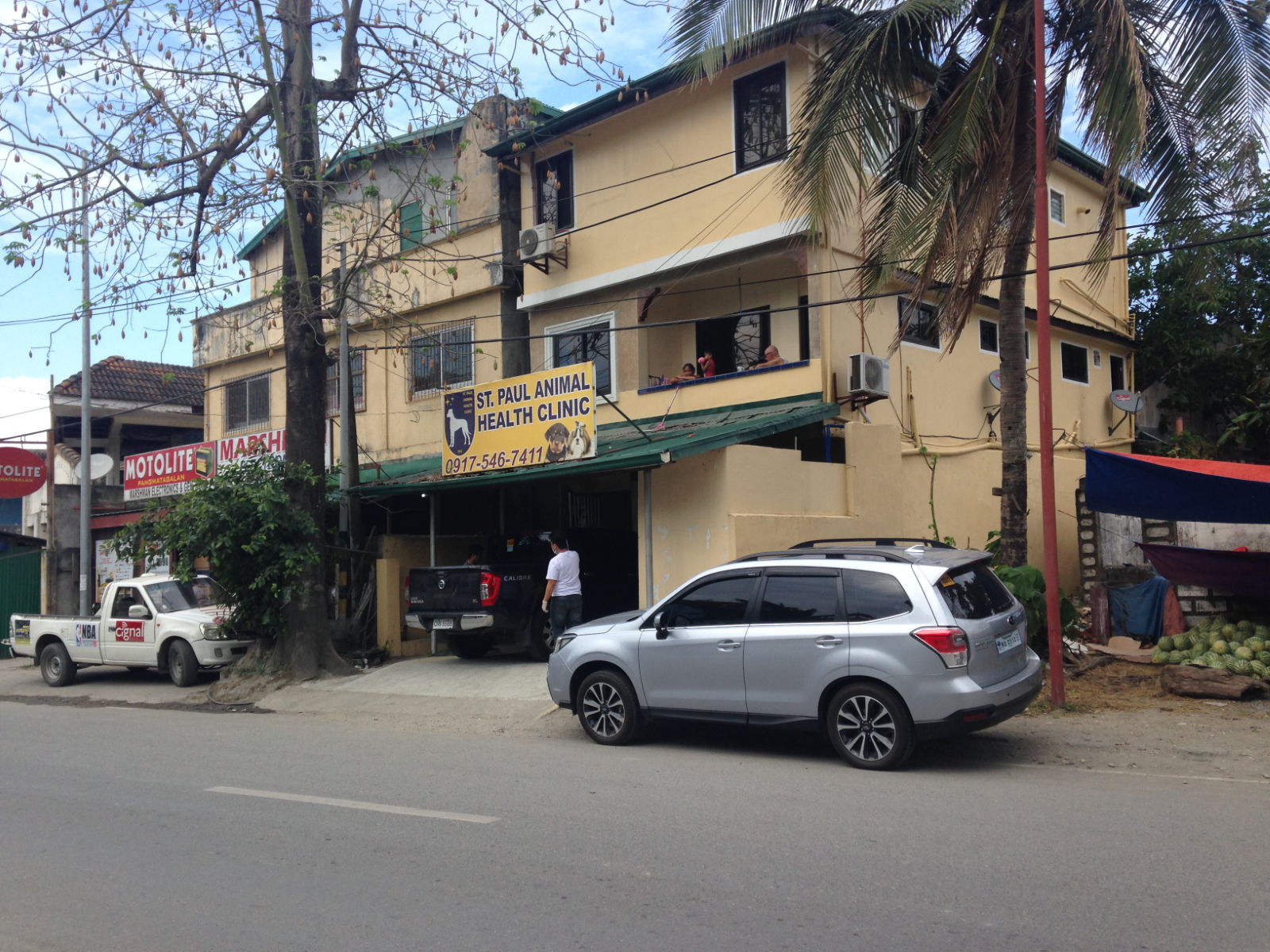
Our third call to the service boat took us to the yacht club later that evening. Wednesdays are curry night there and judging by the amount of people, it’s very popular. It was all laid out in self-serve heated containers at the end of the bar and after paying, you simply helped yourself from a choice of seafood, beef or vegetable curry, plain rice, papadums with all the traditional Indian accompaniments. Both of us went back for seconds, it was so tasty. We were joined at our table by two elderly Swedish sailors and their young Filipino companions. They gave us useful advice regarding our imminent trip to Subic Bay, and were entertaining dinner companions, both having plenty to relate from their sailing experiences. Time to move on in the morning, although we agreed it would have been lovely to see and explore more of Puerto Galera. The images below show only part of its charm.
Kathy
